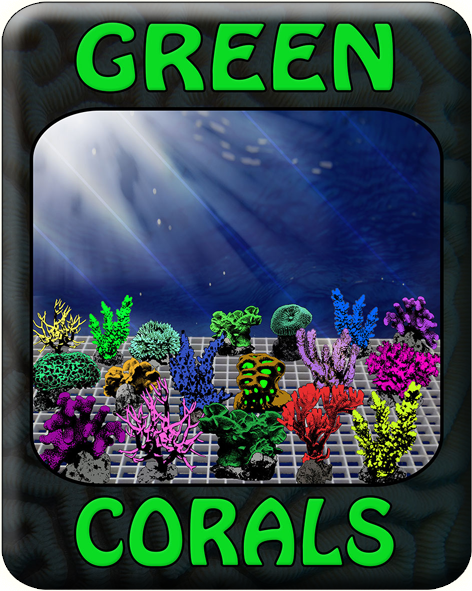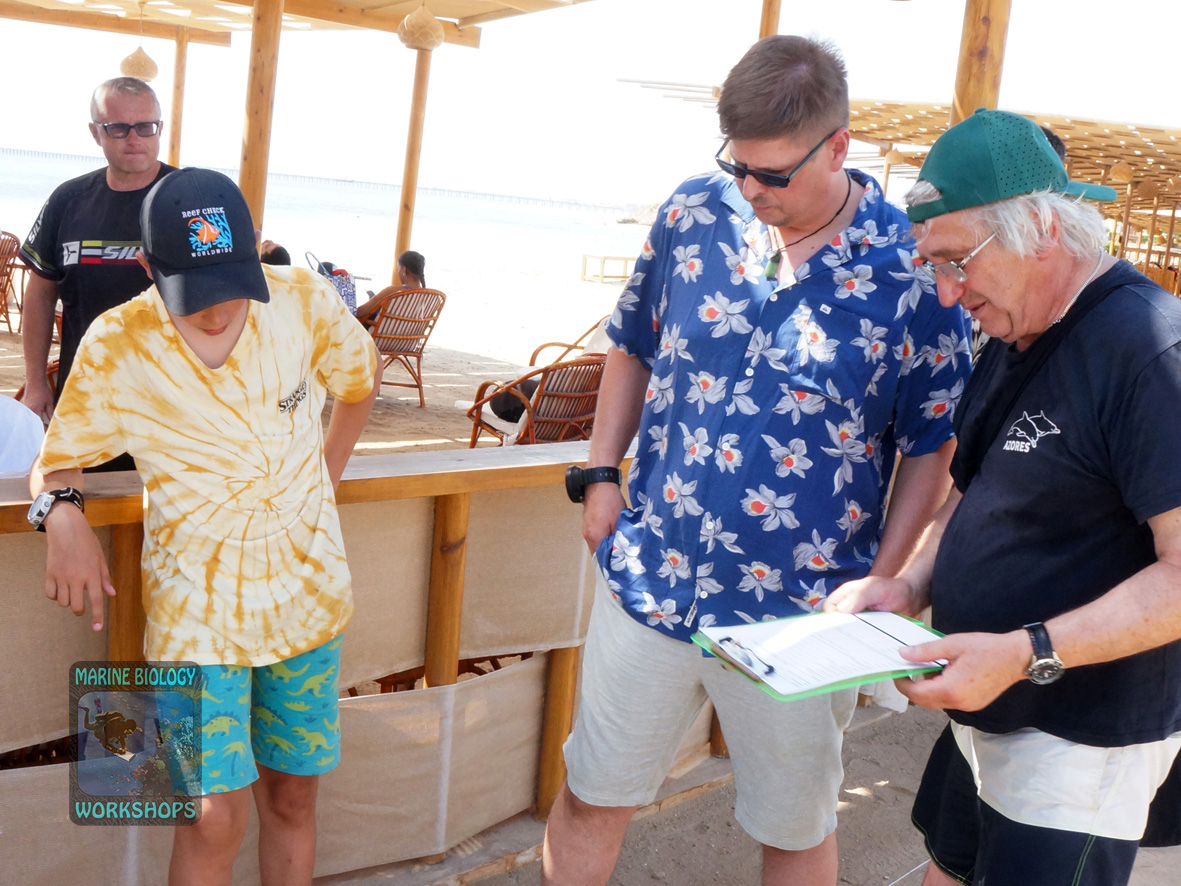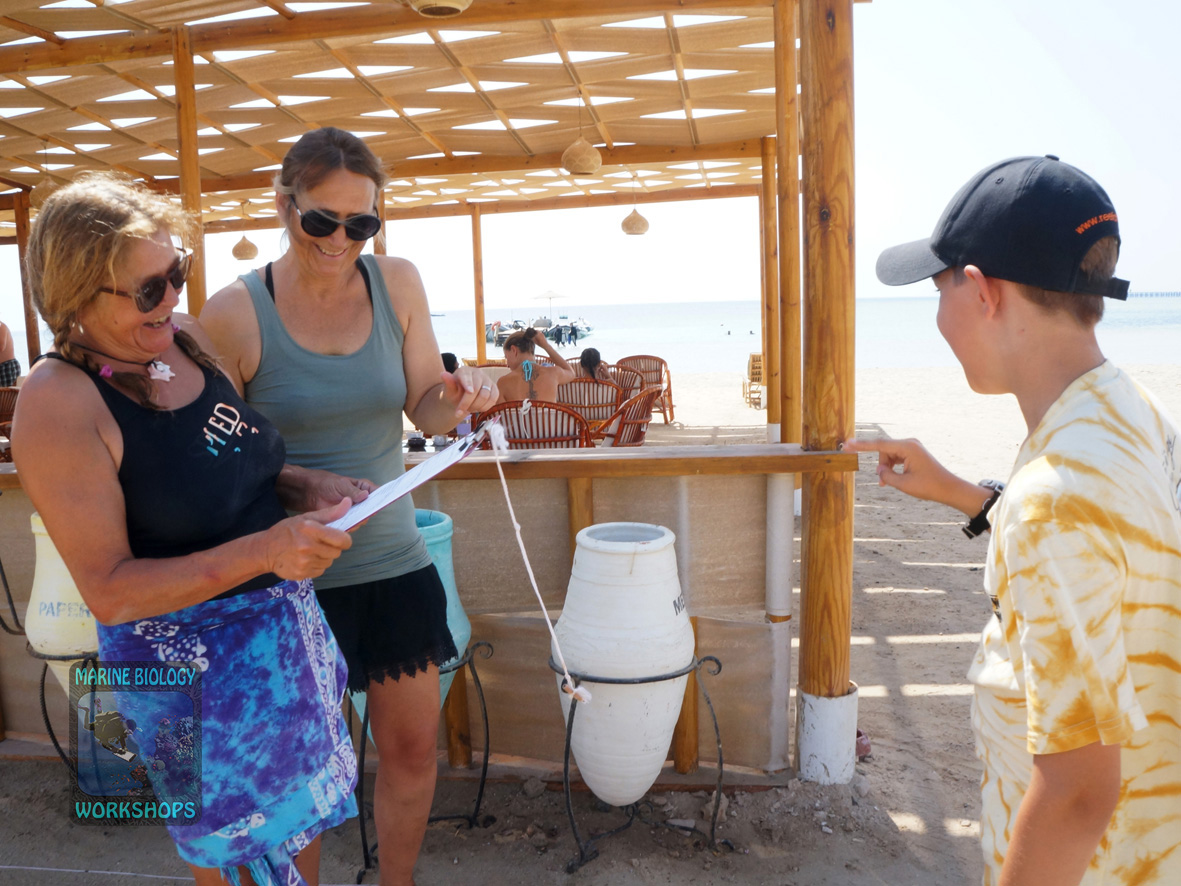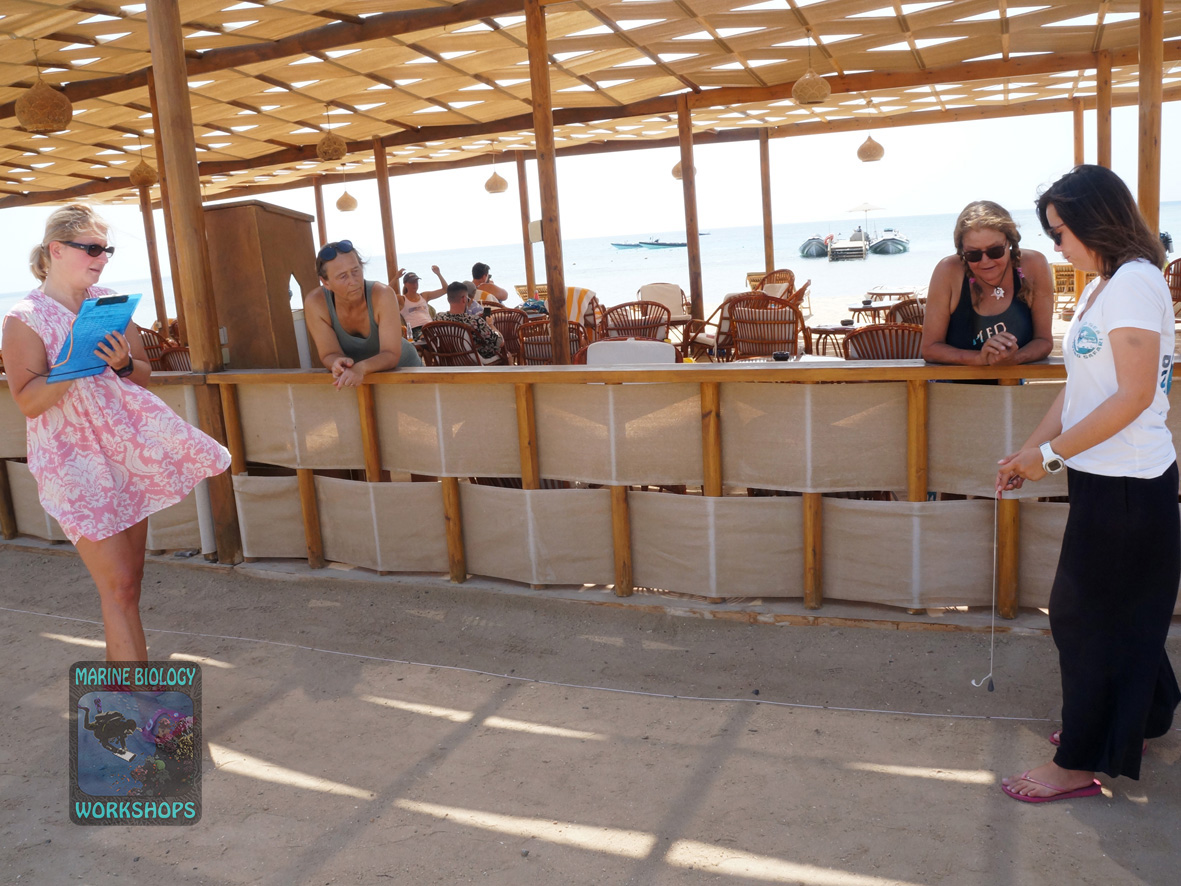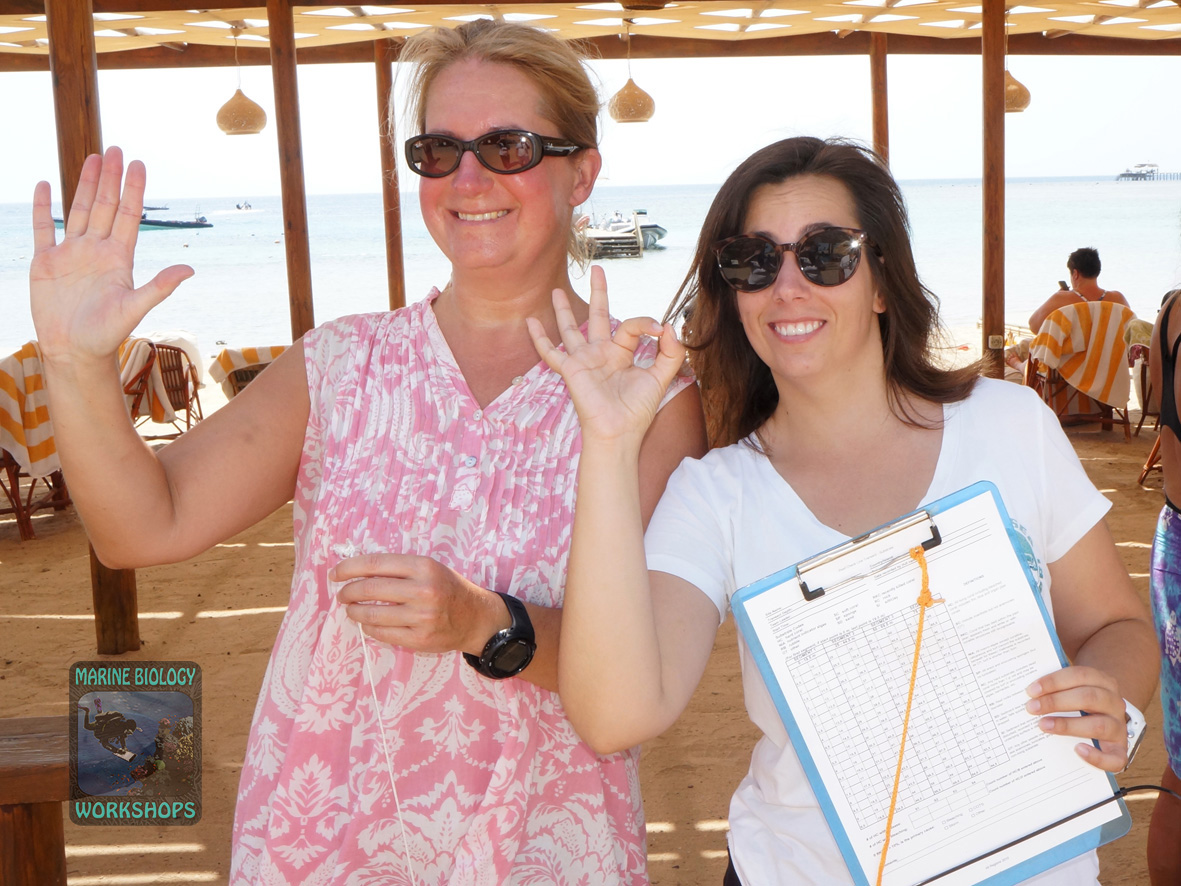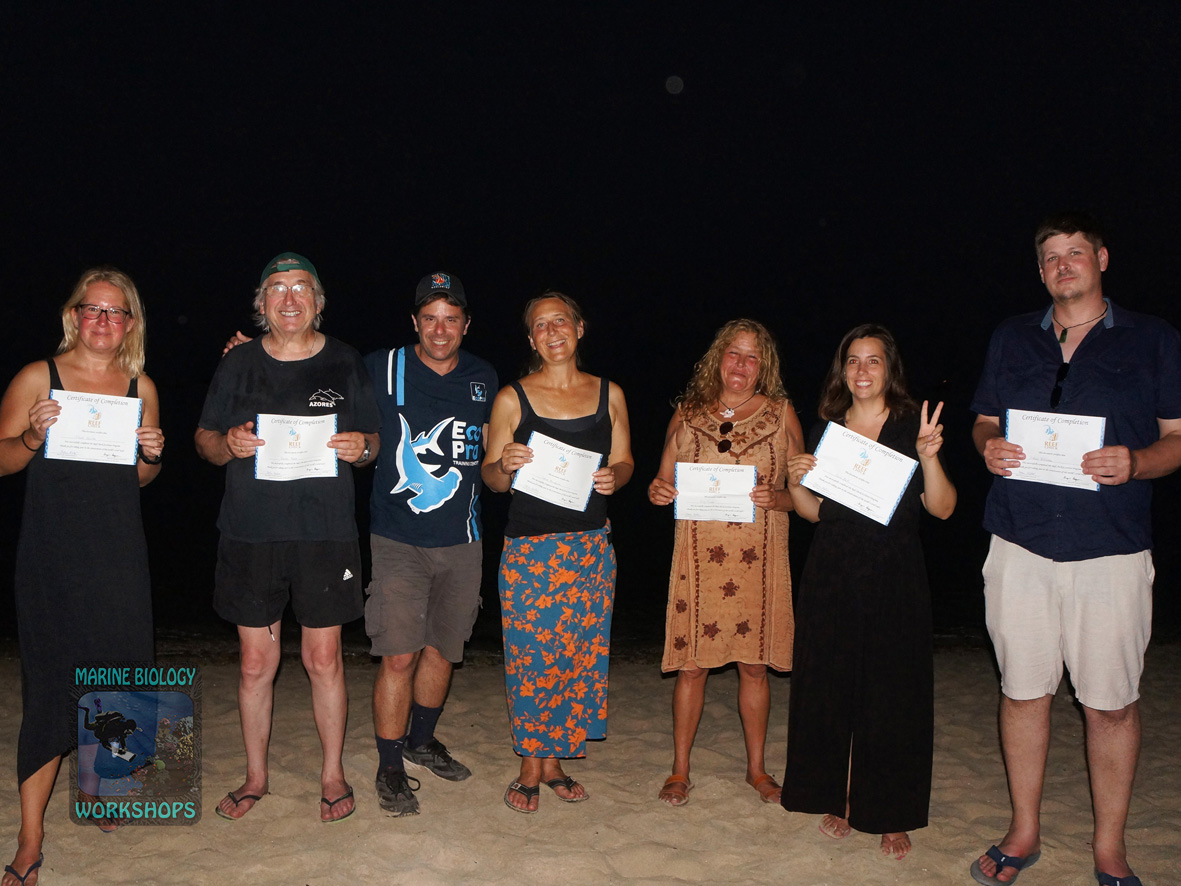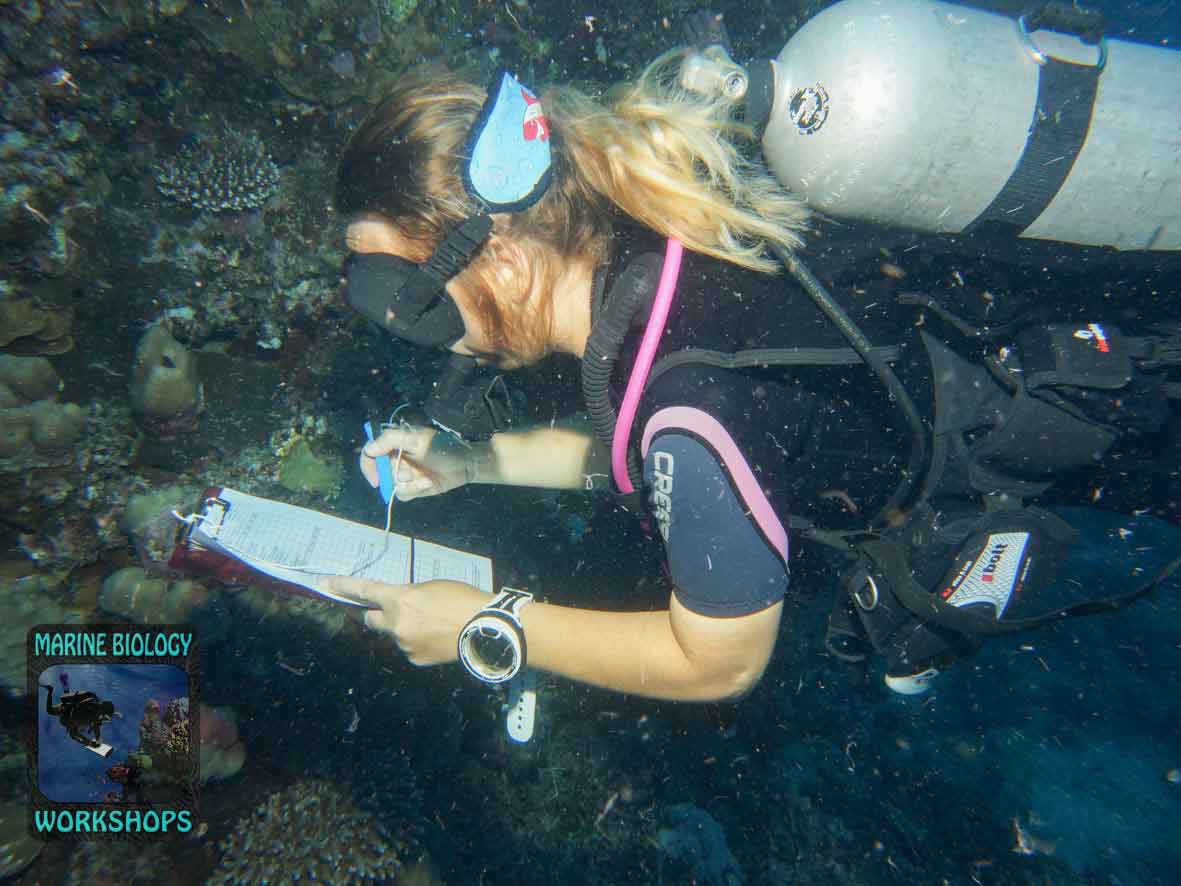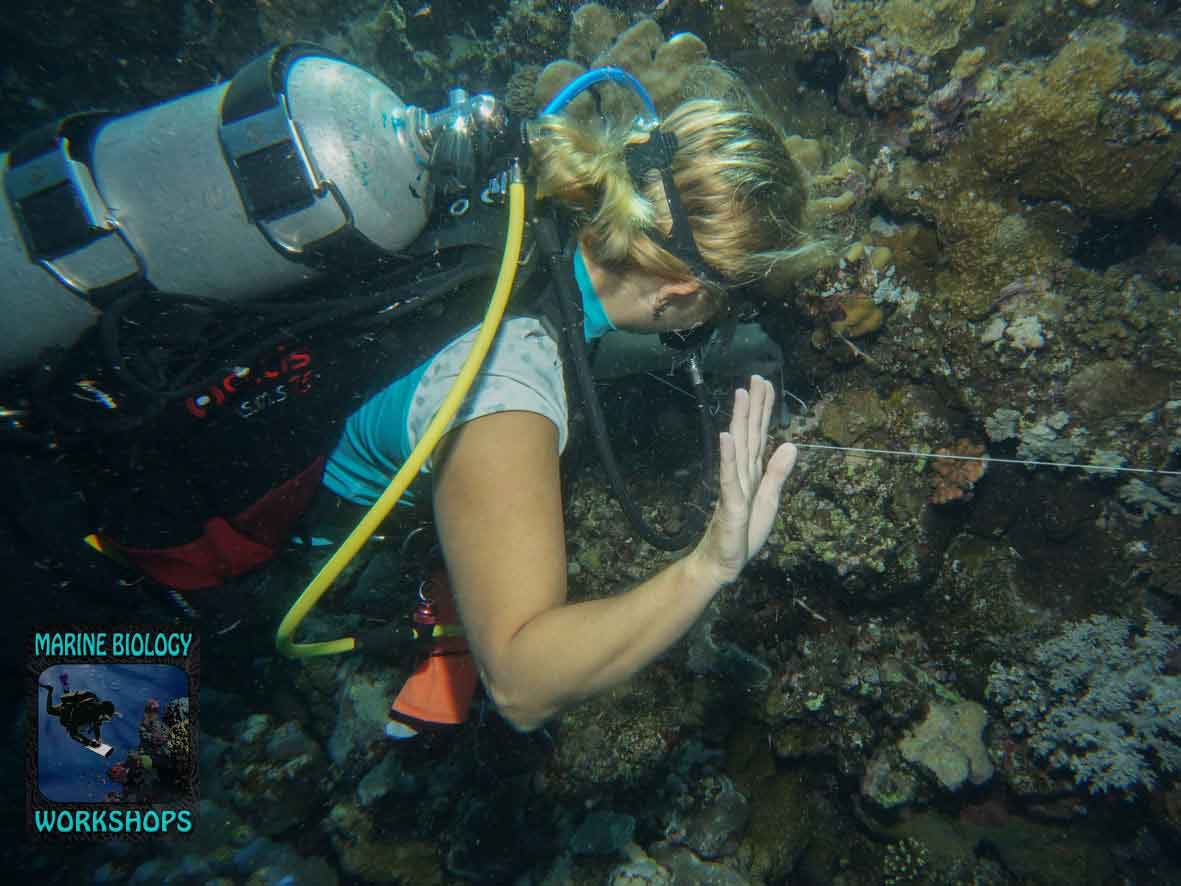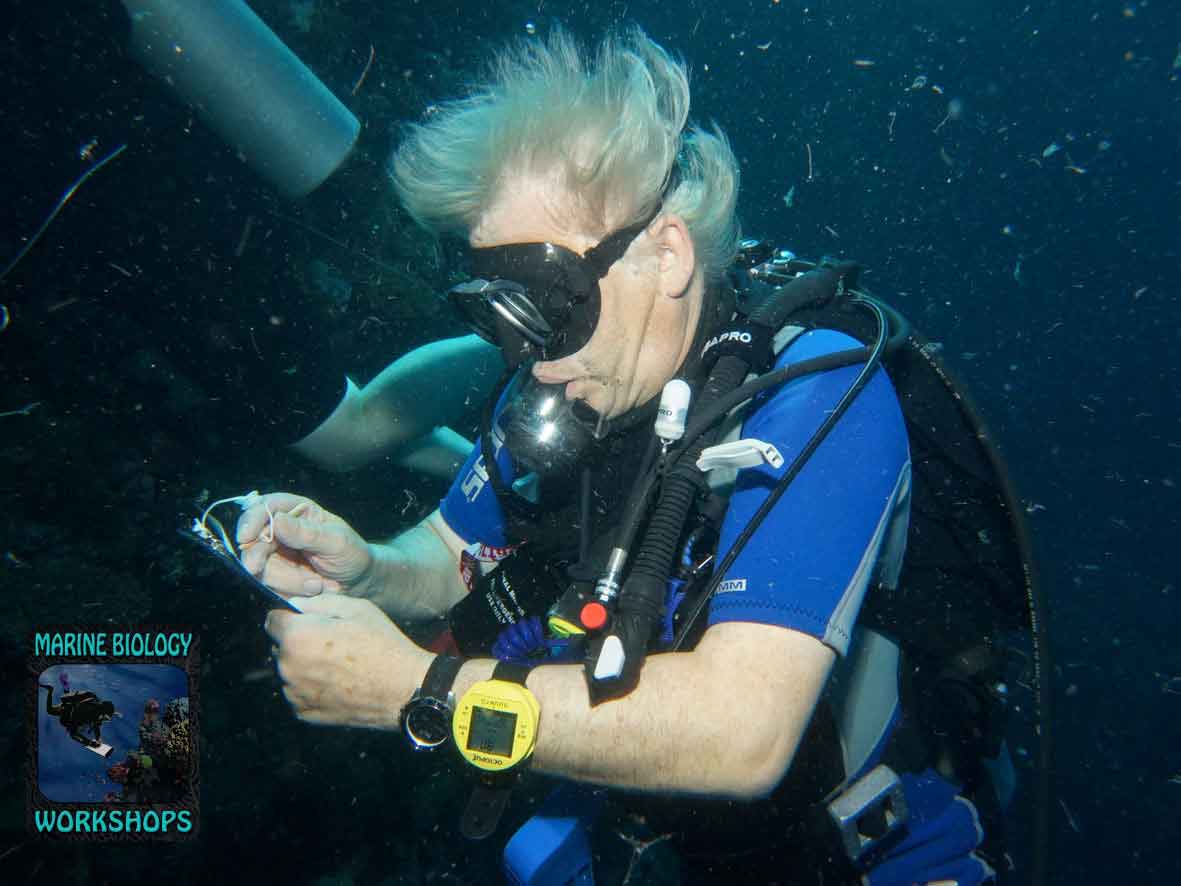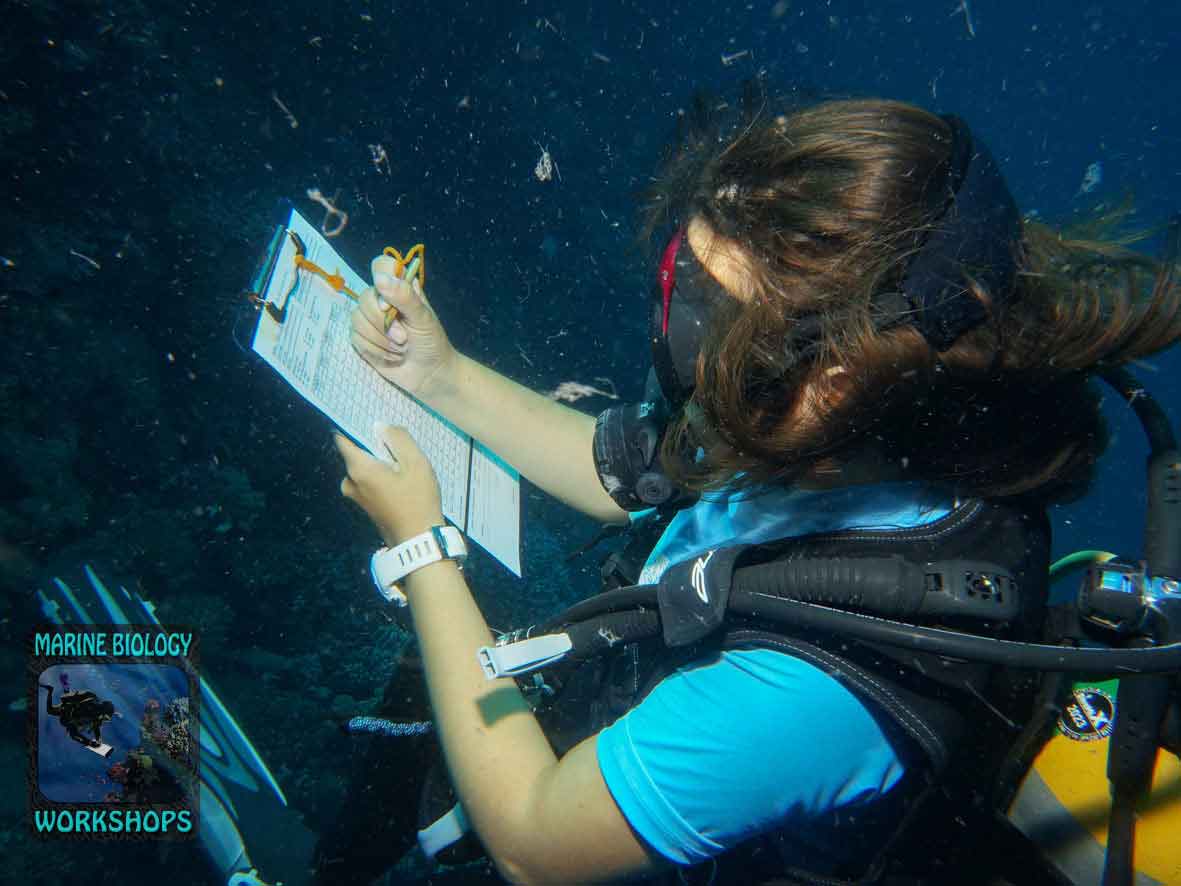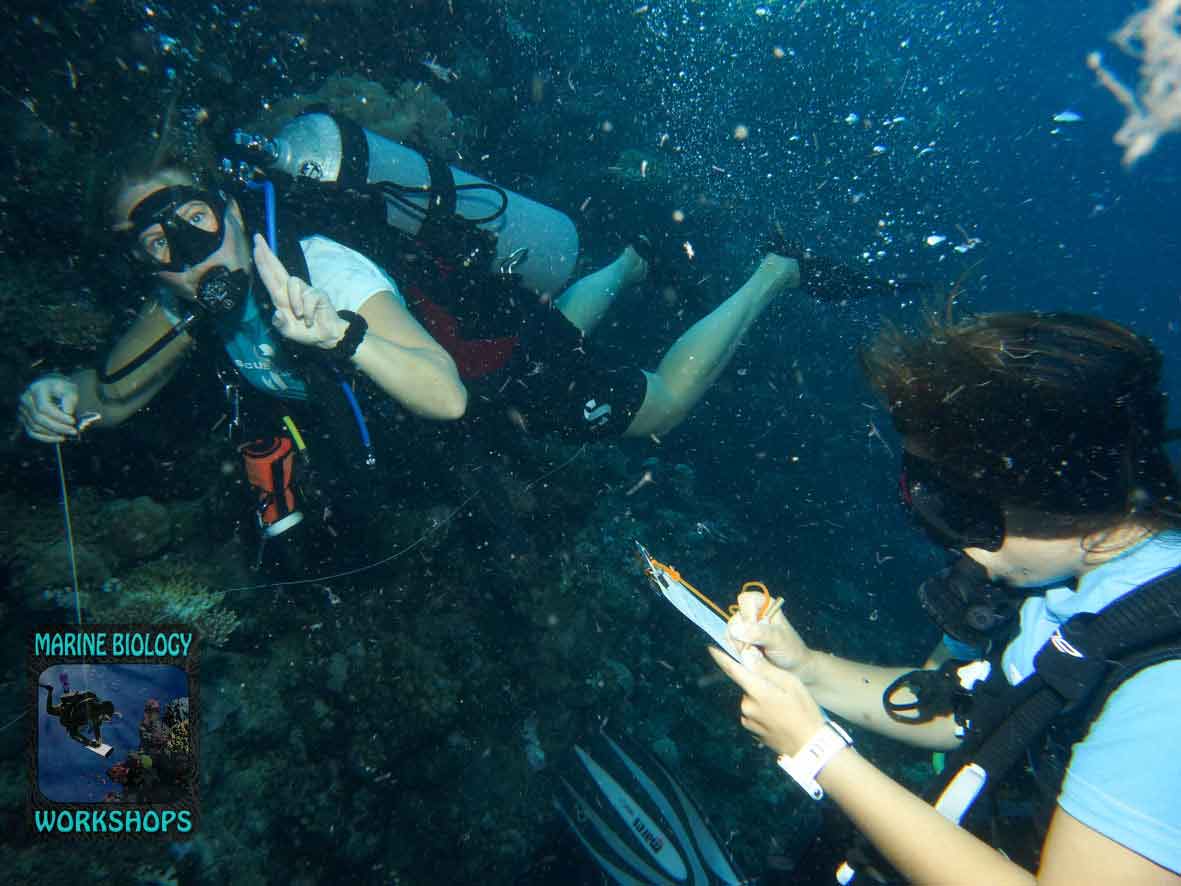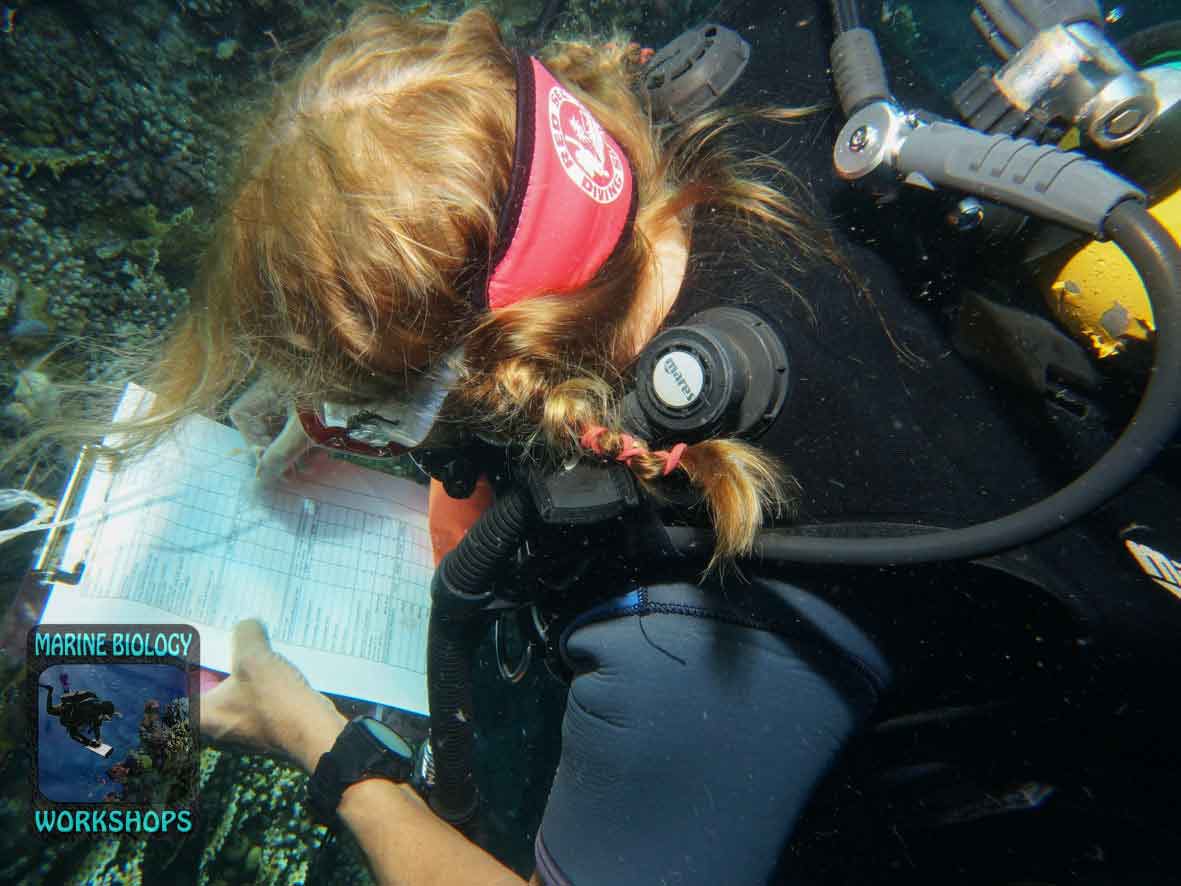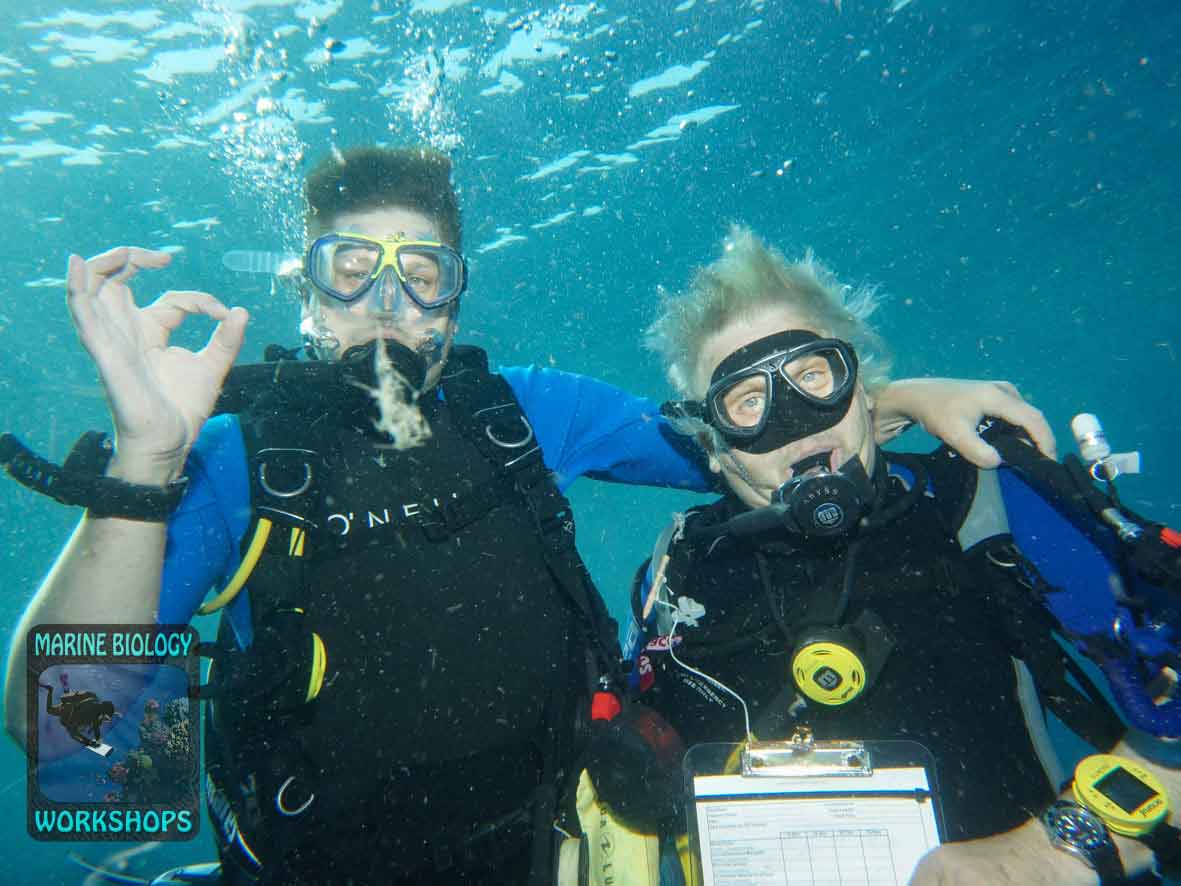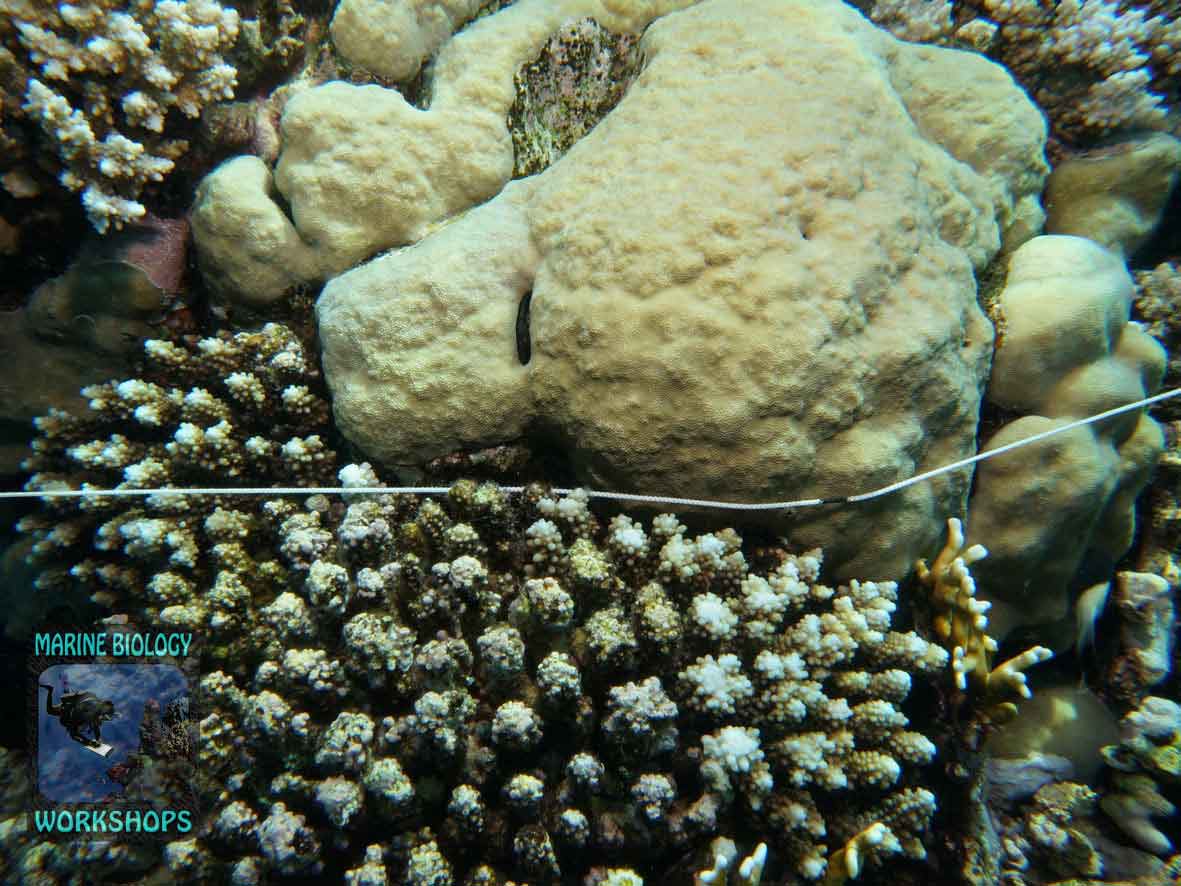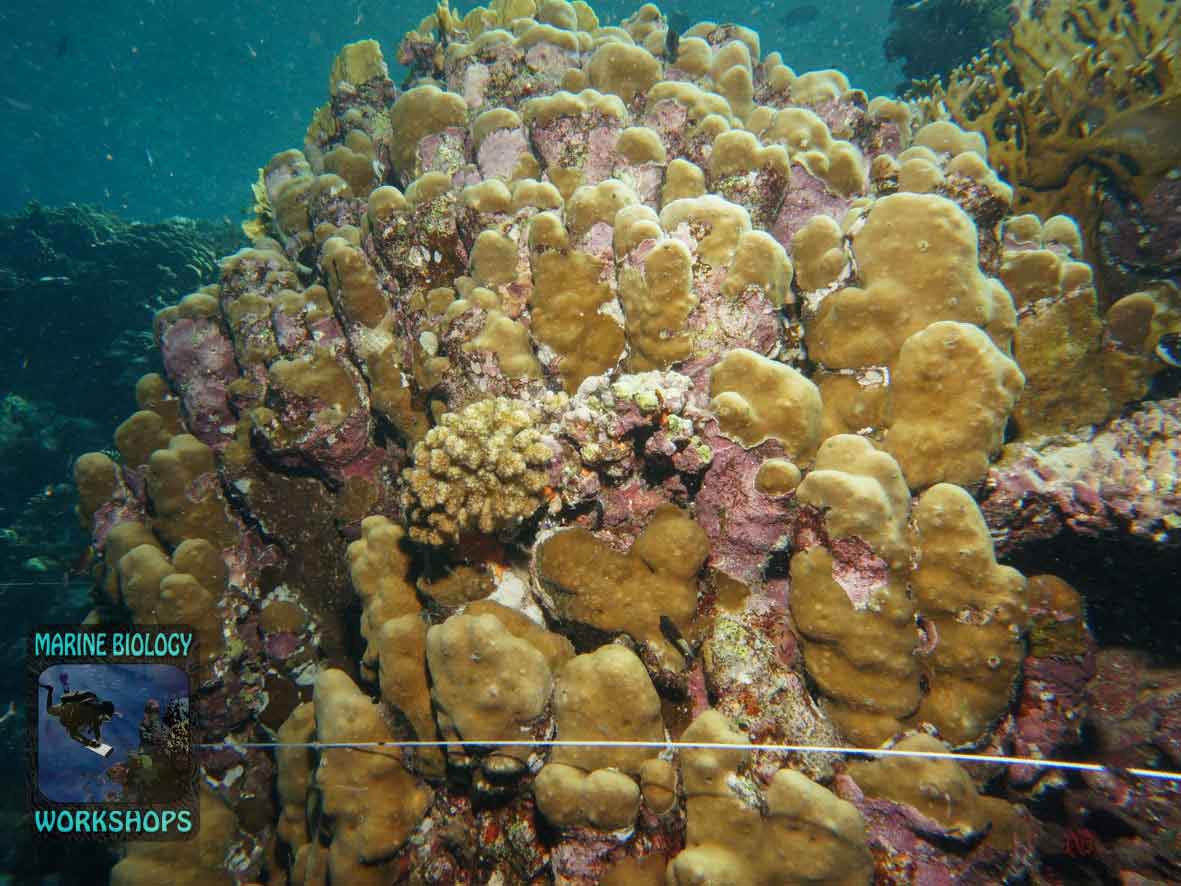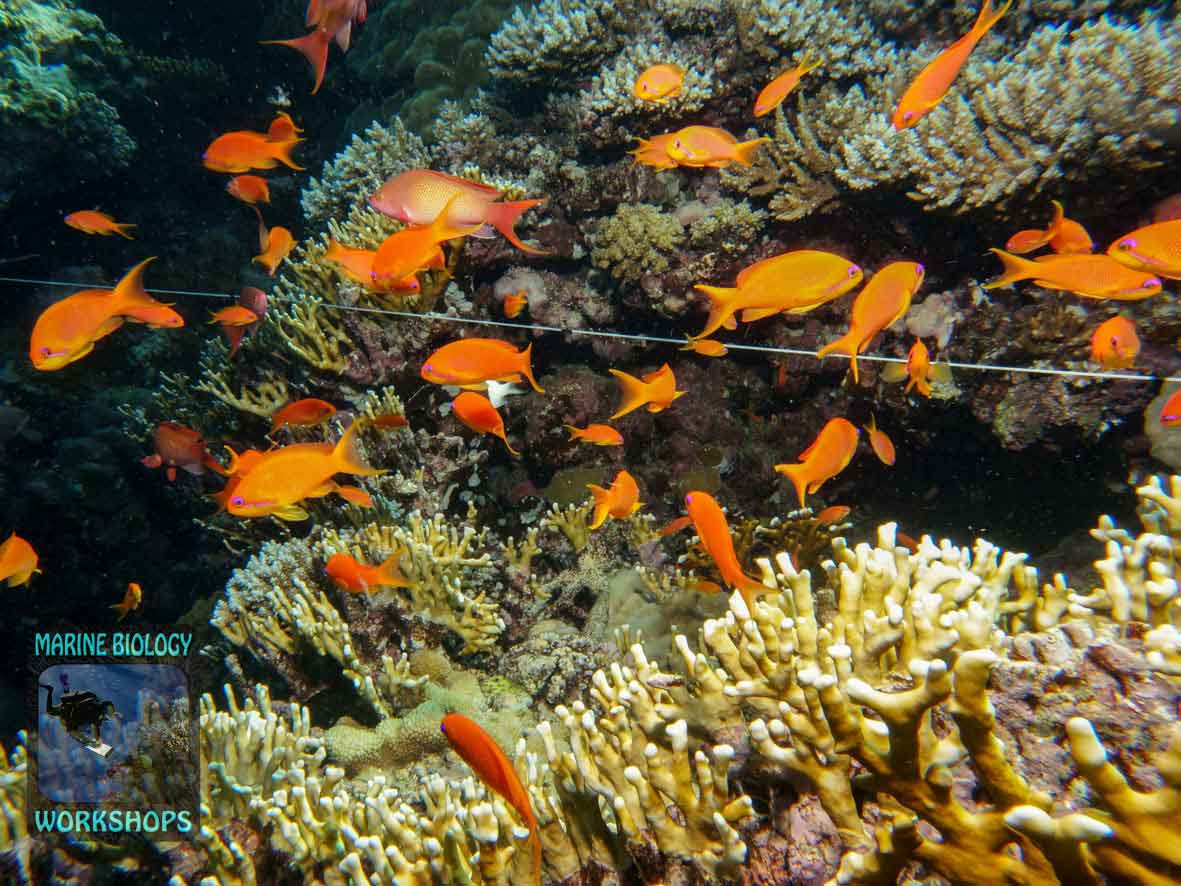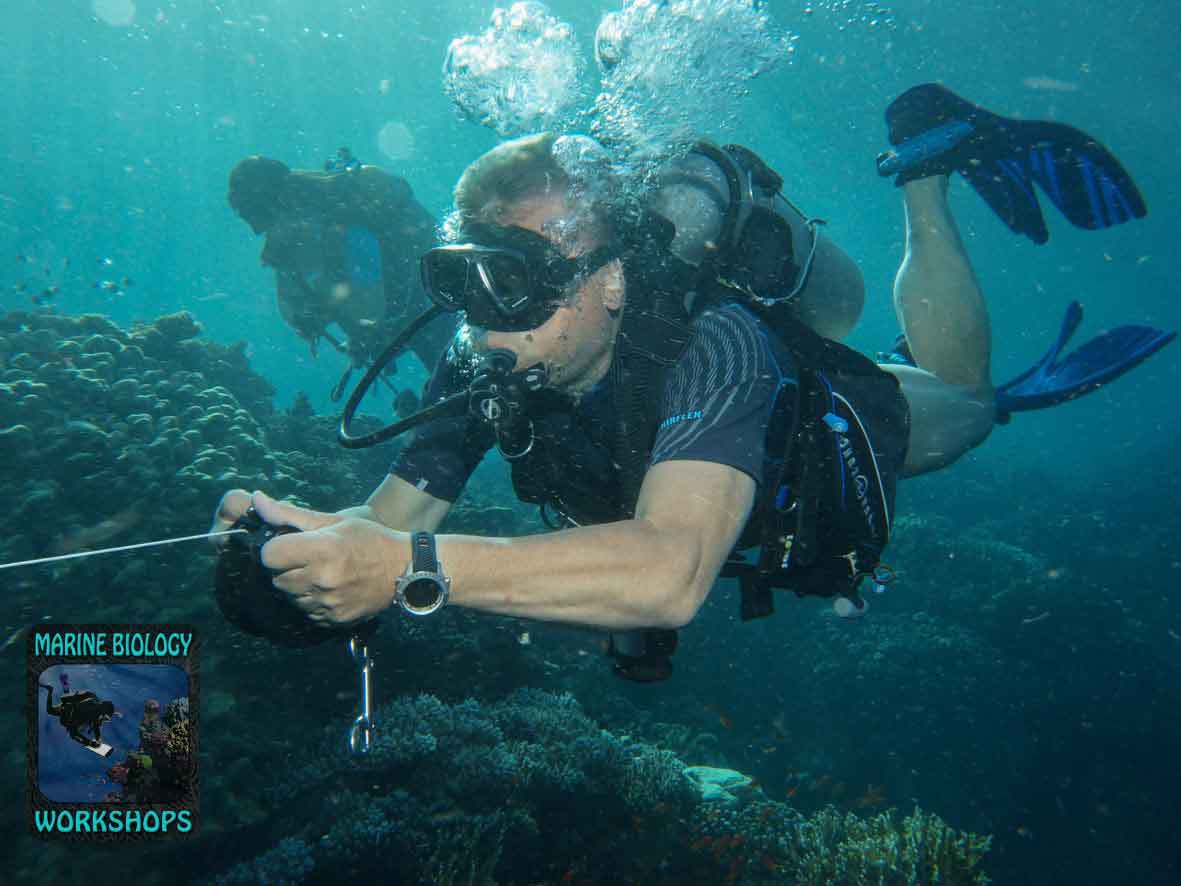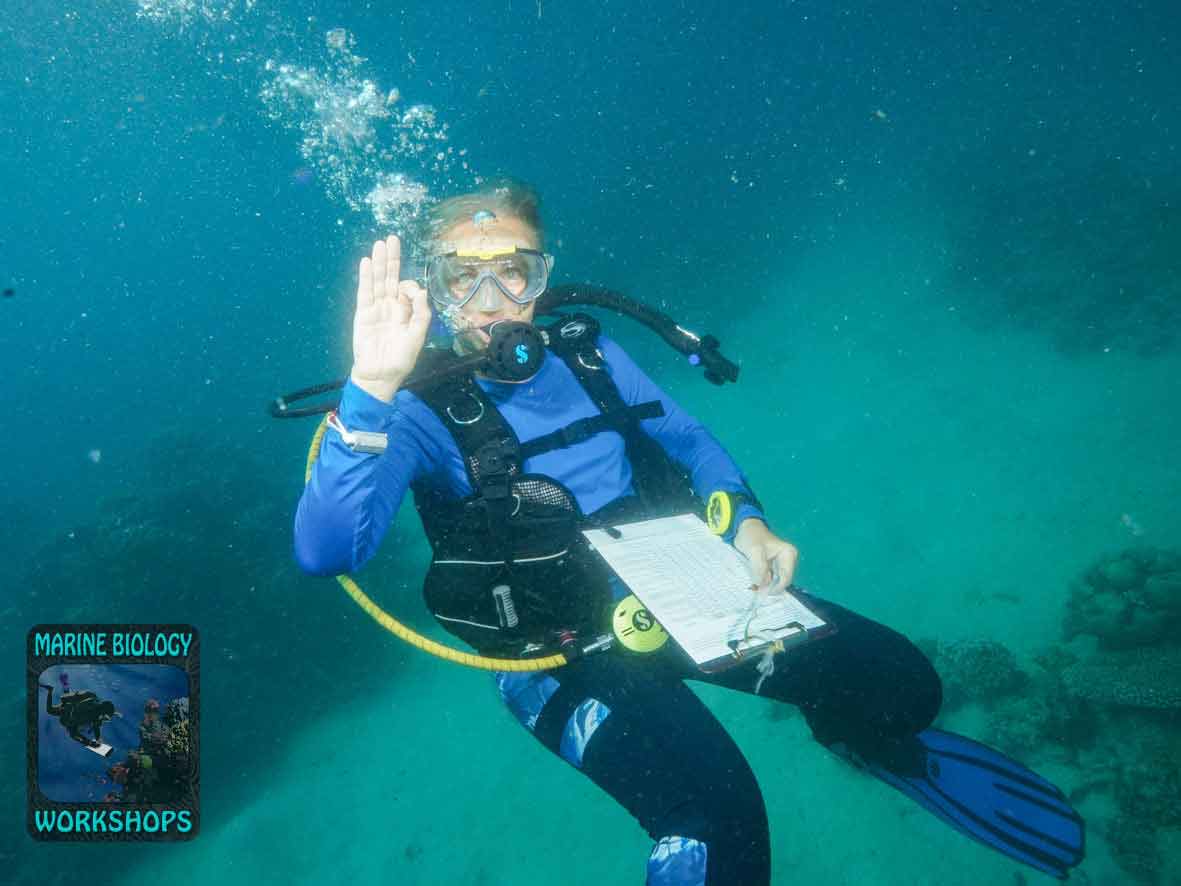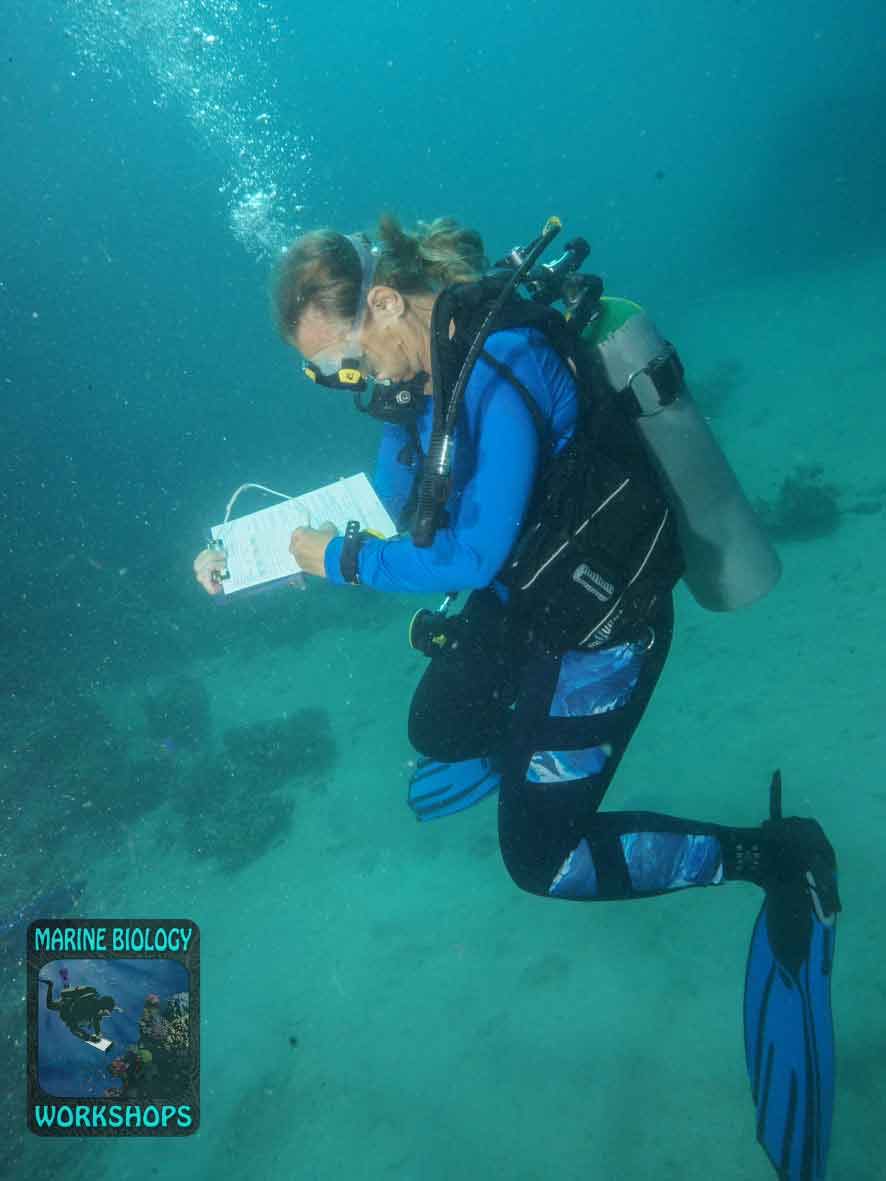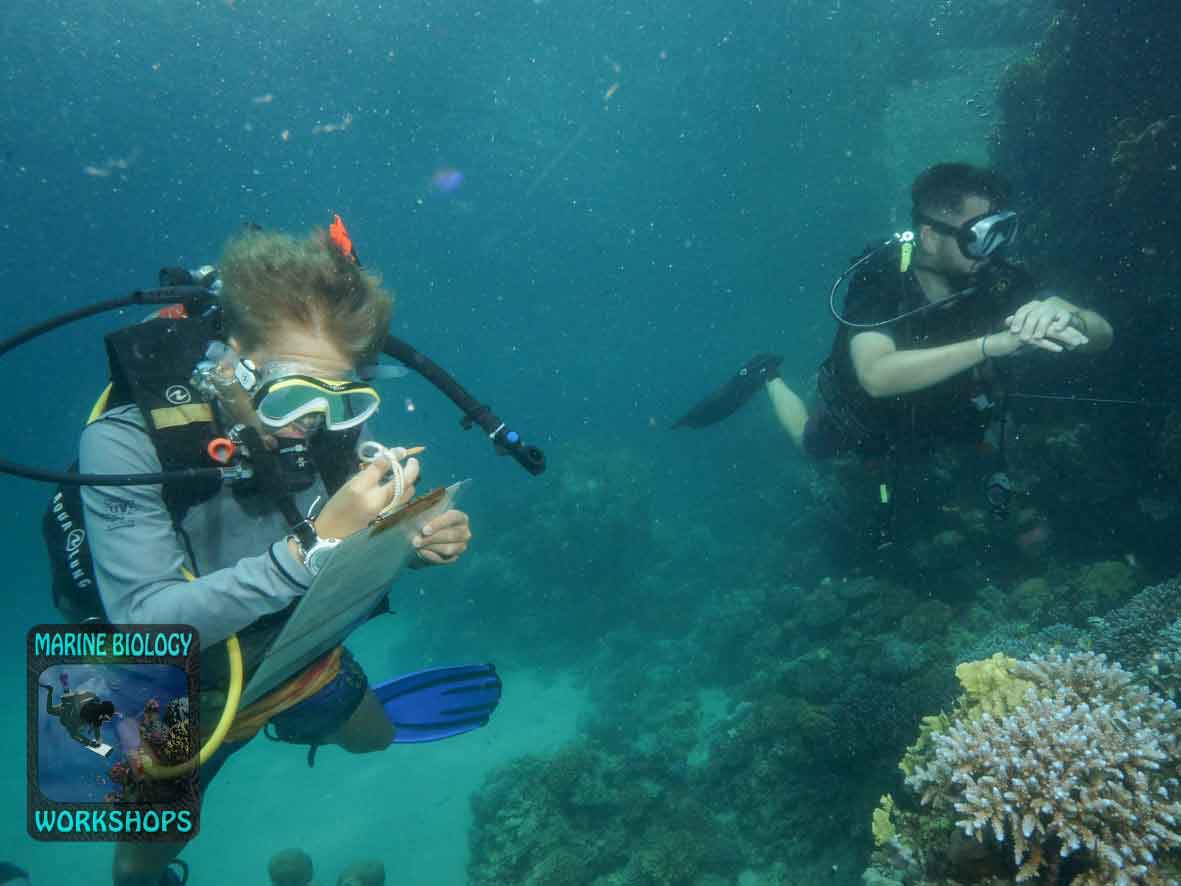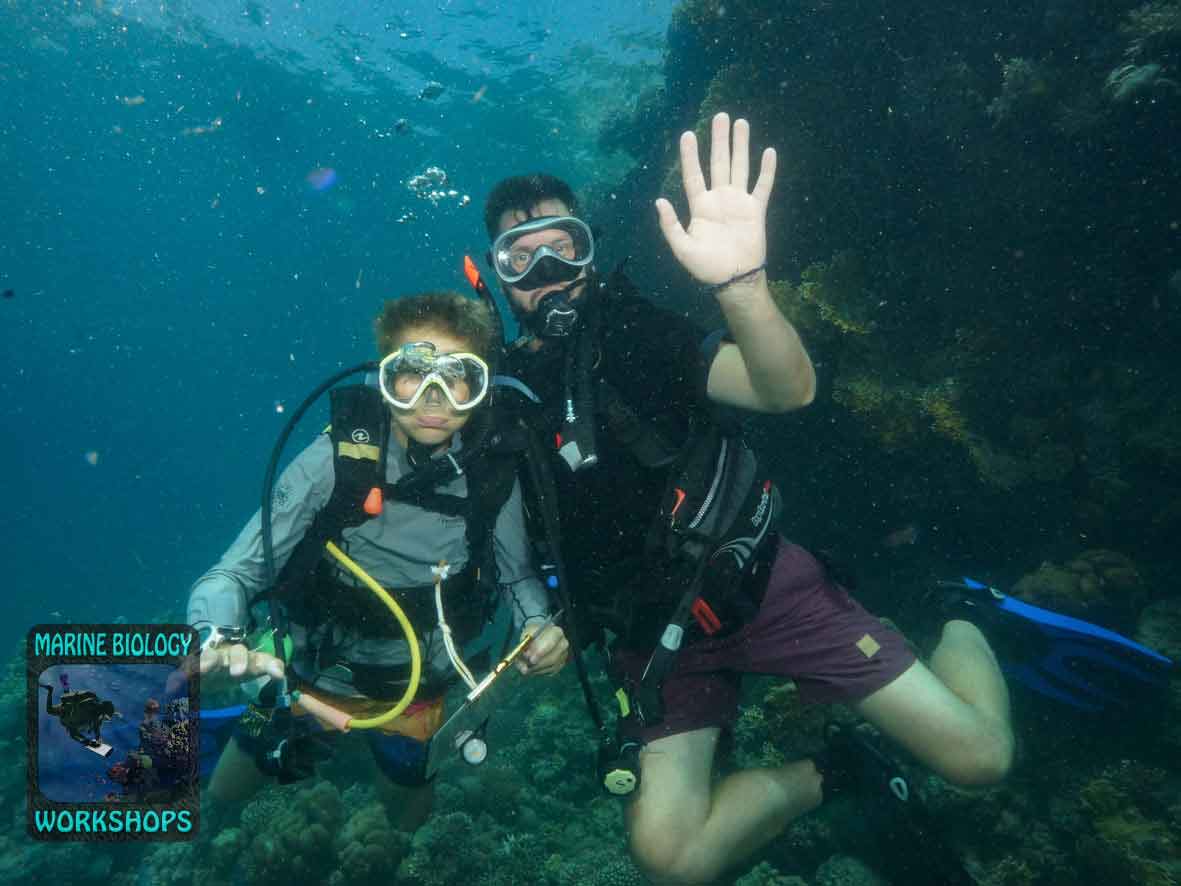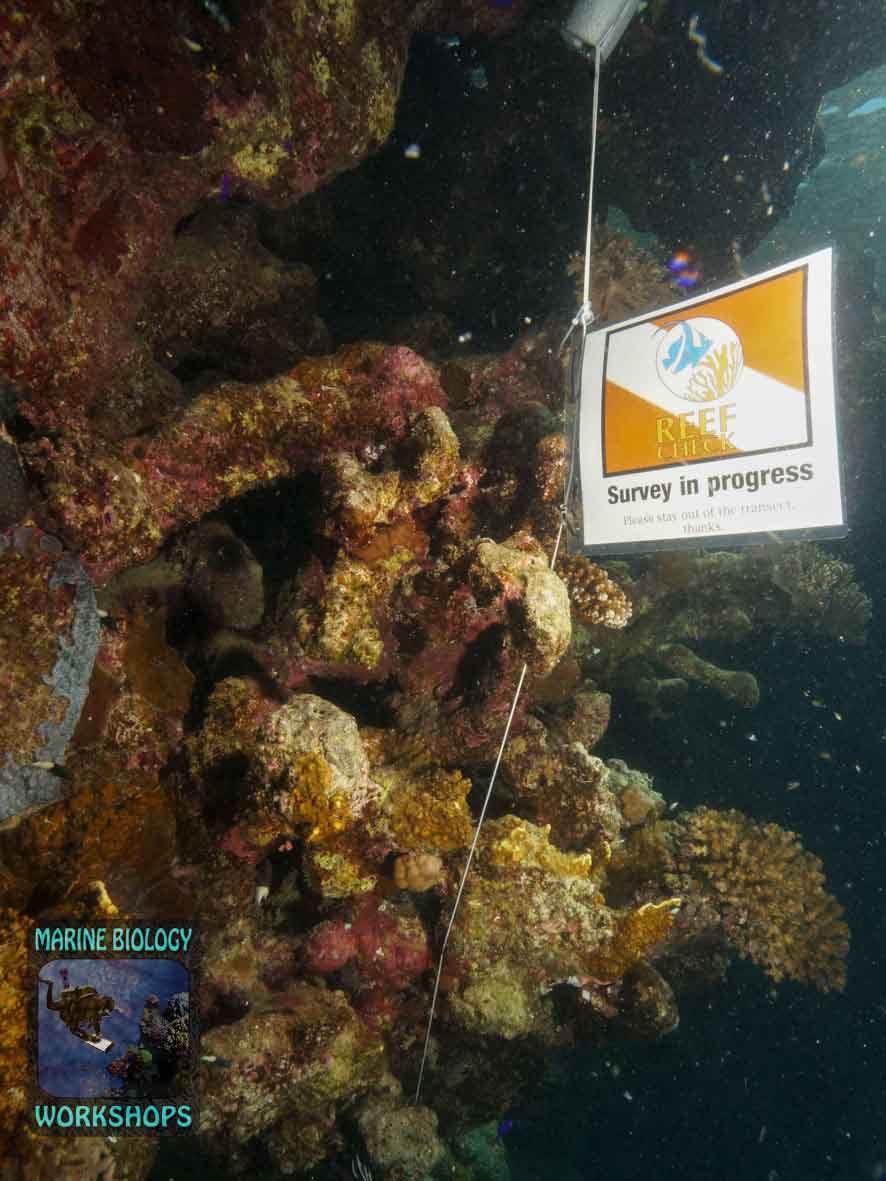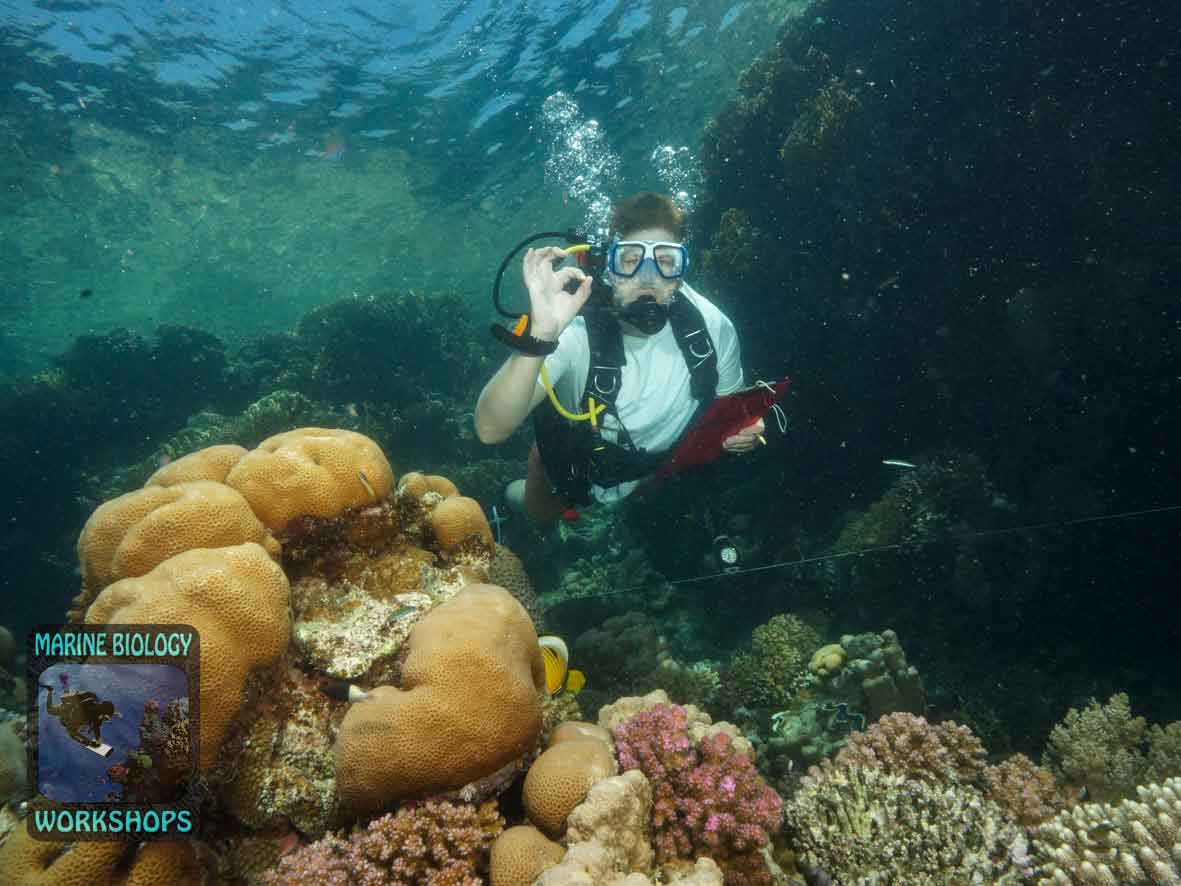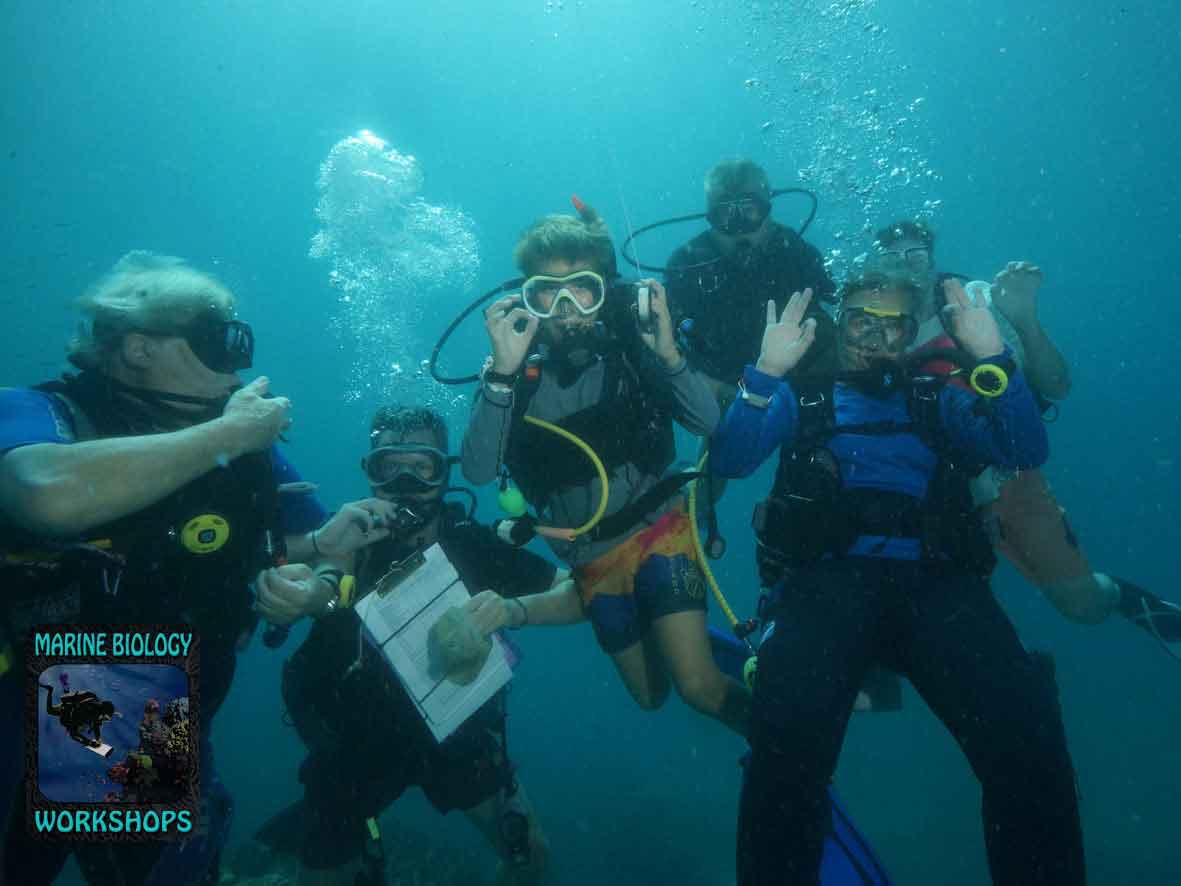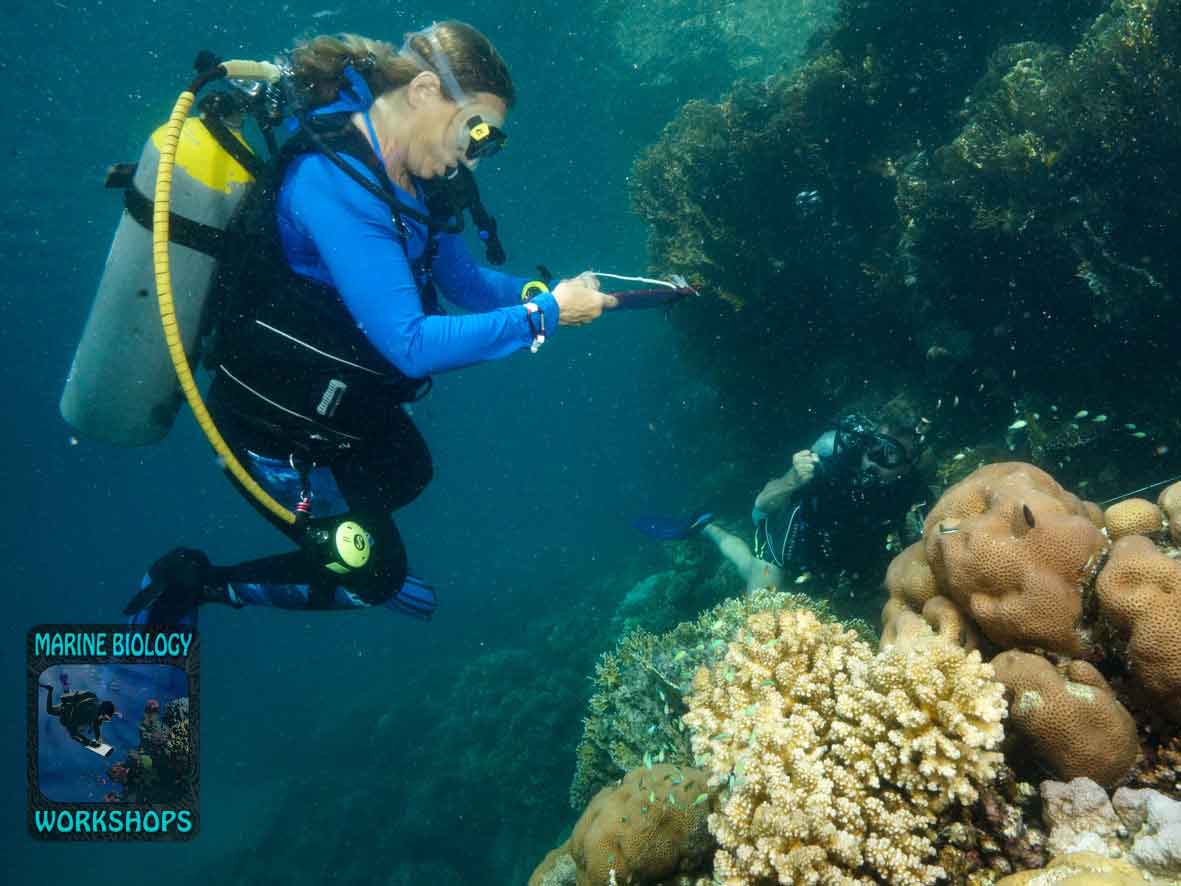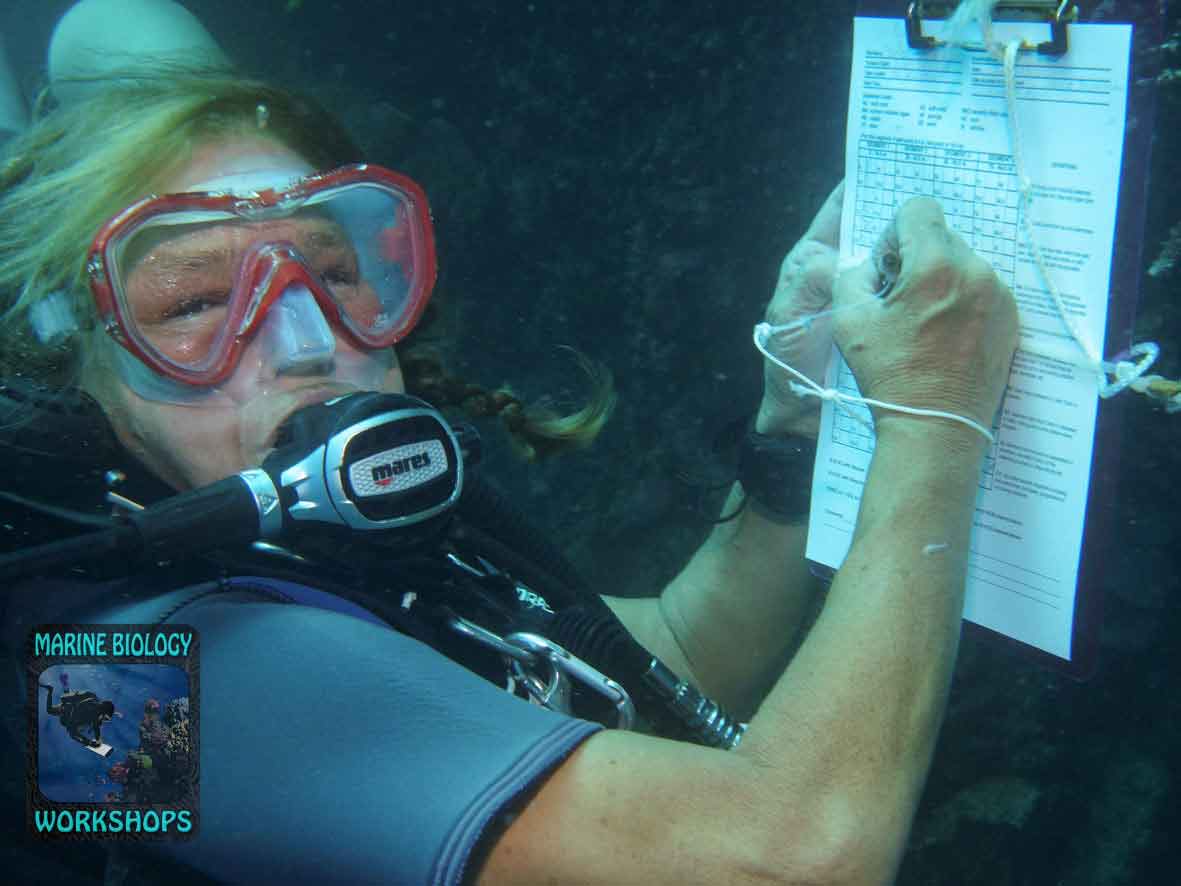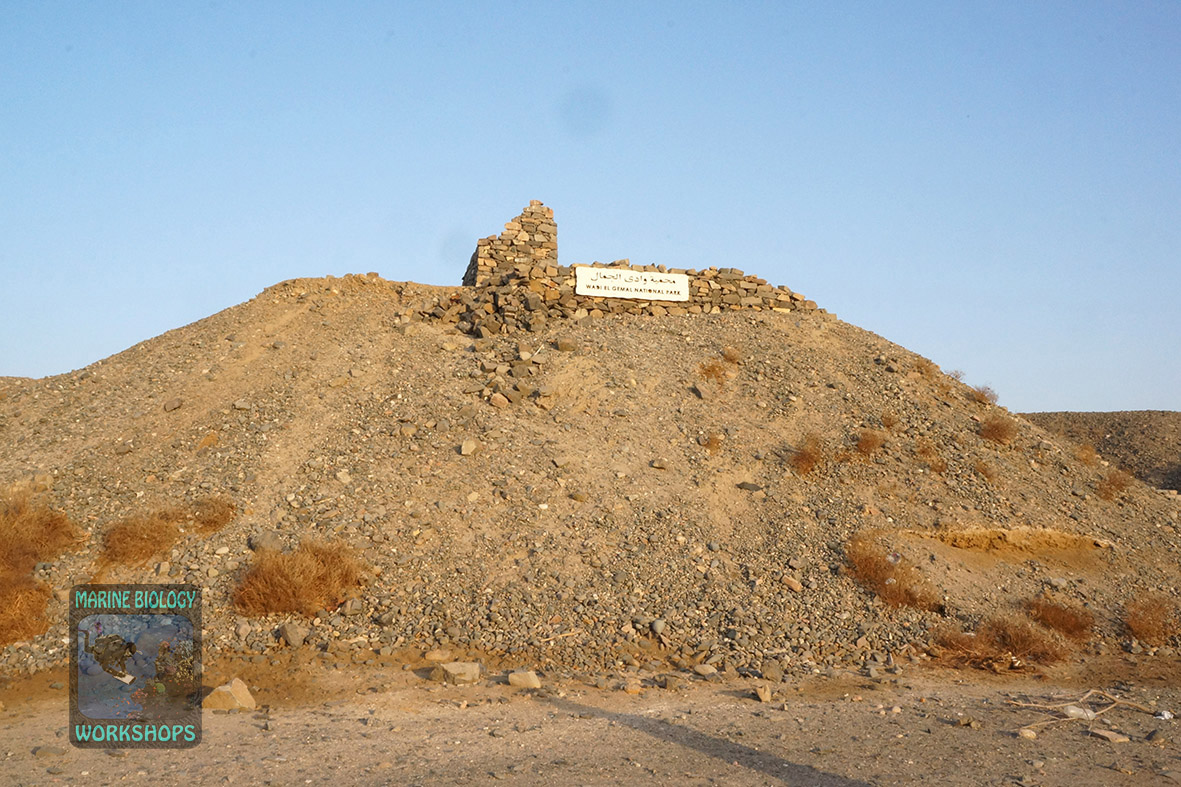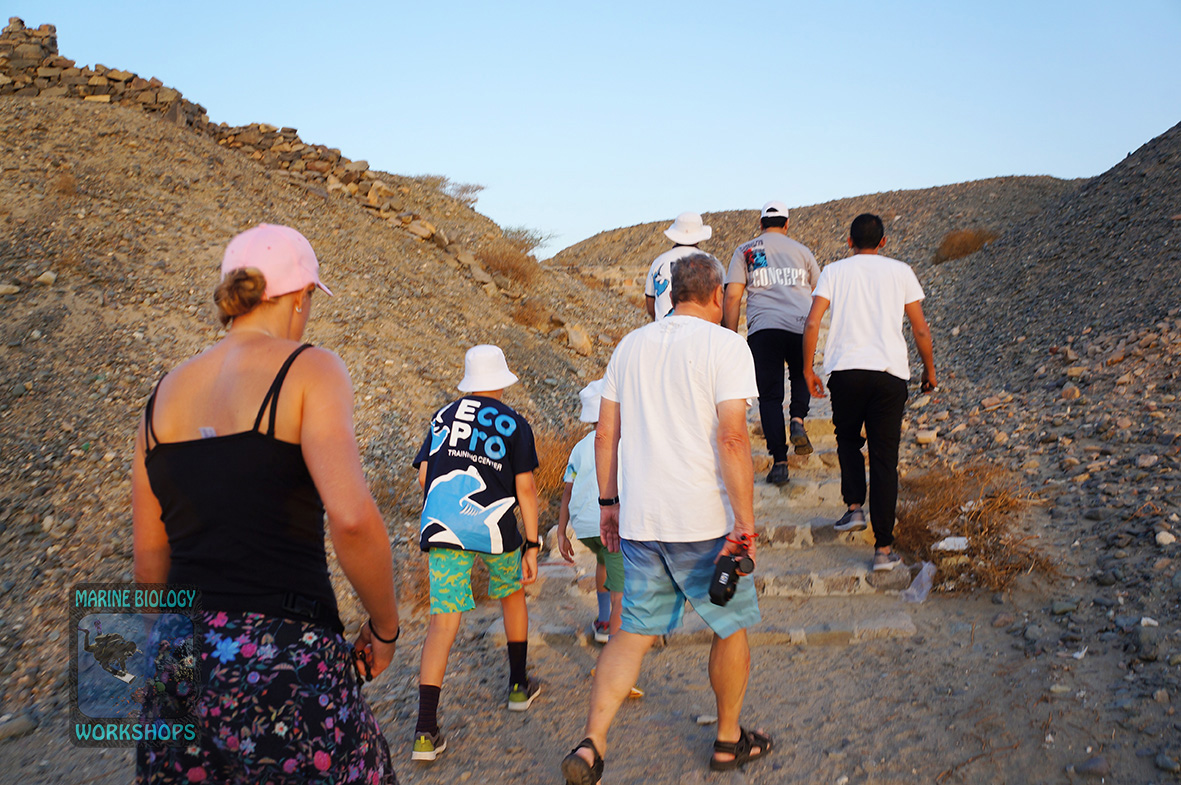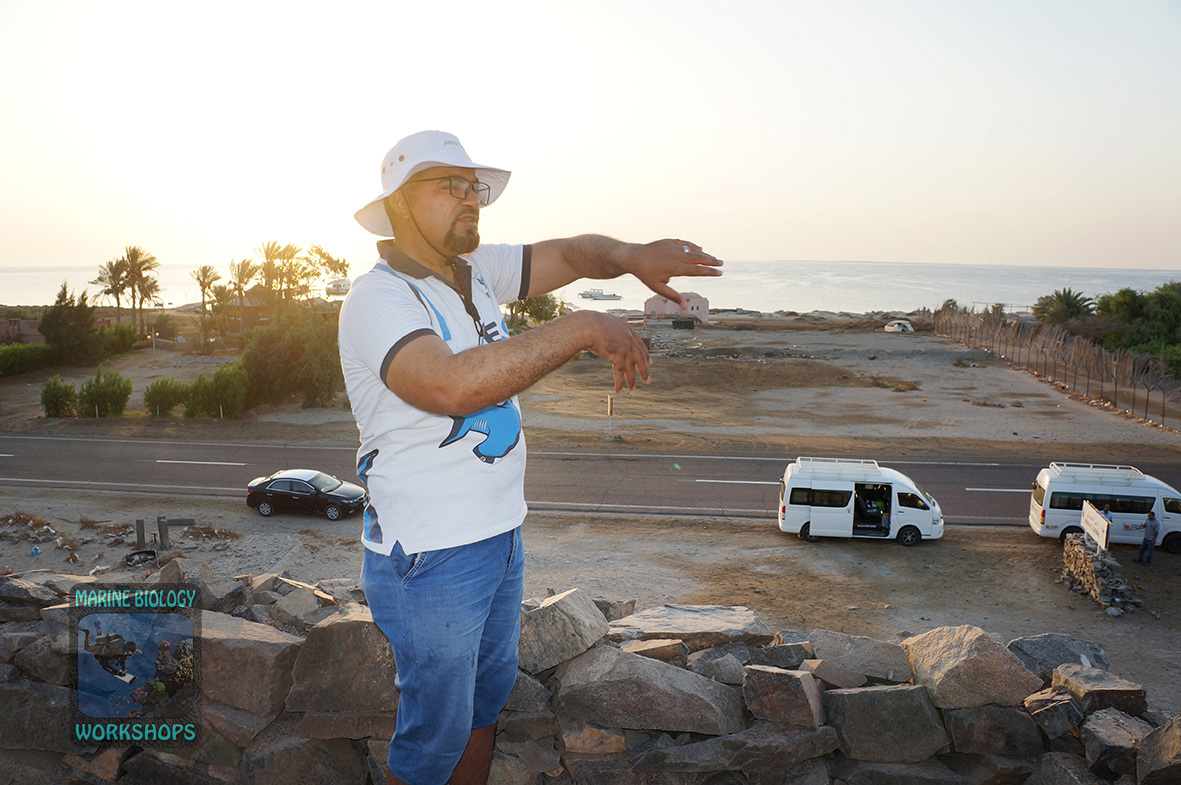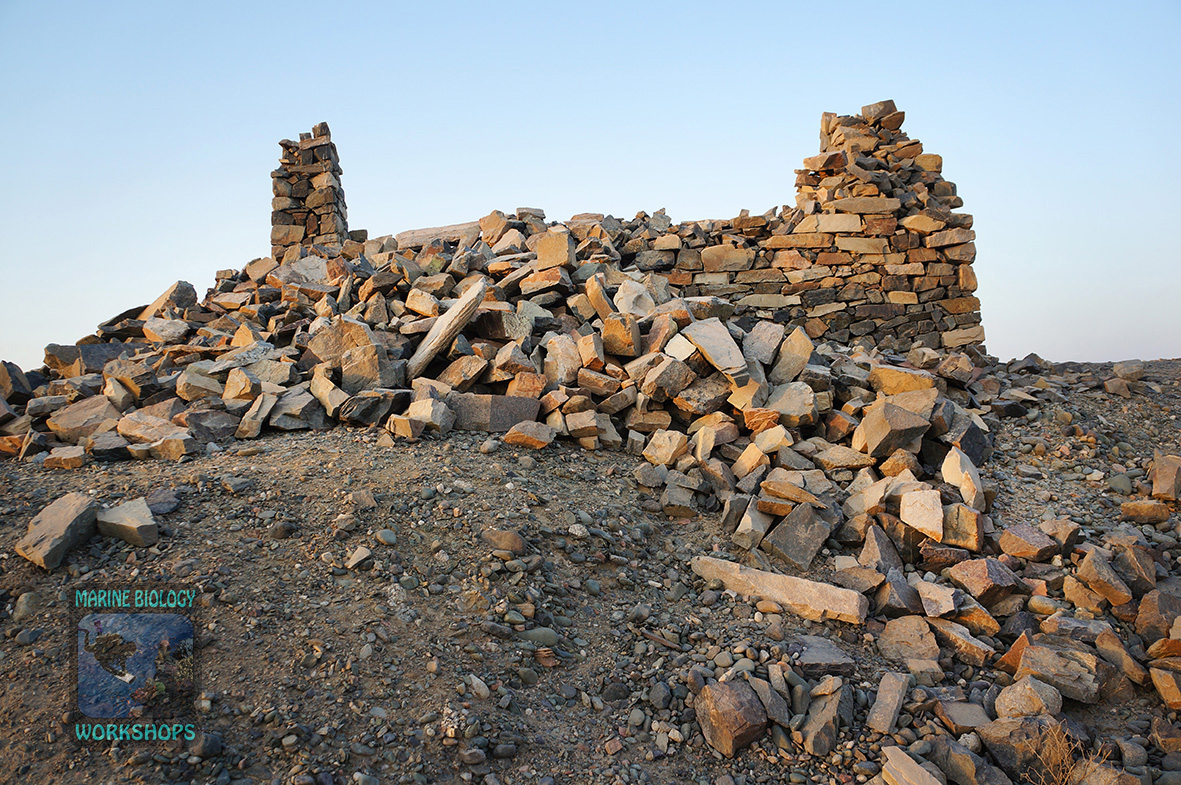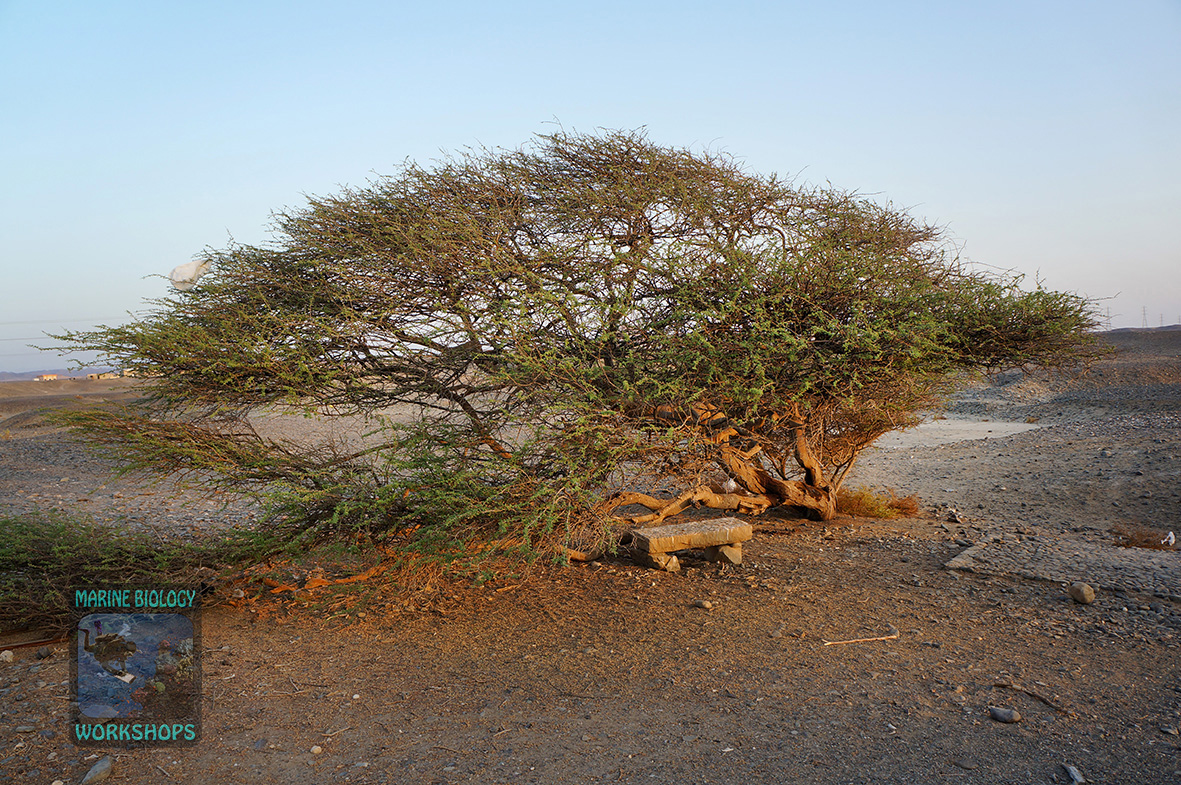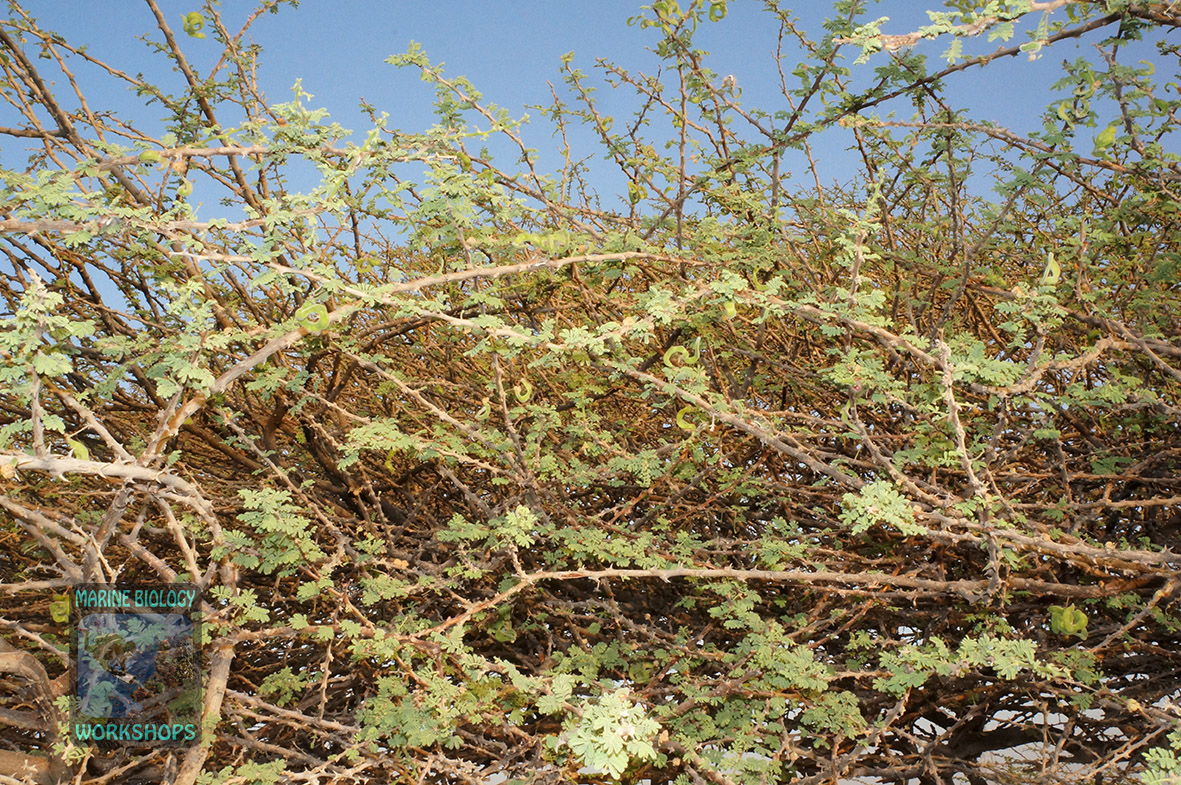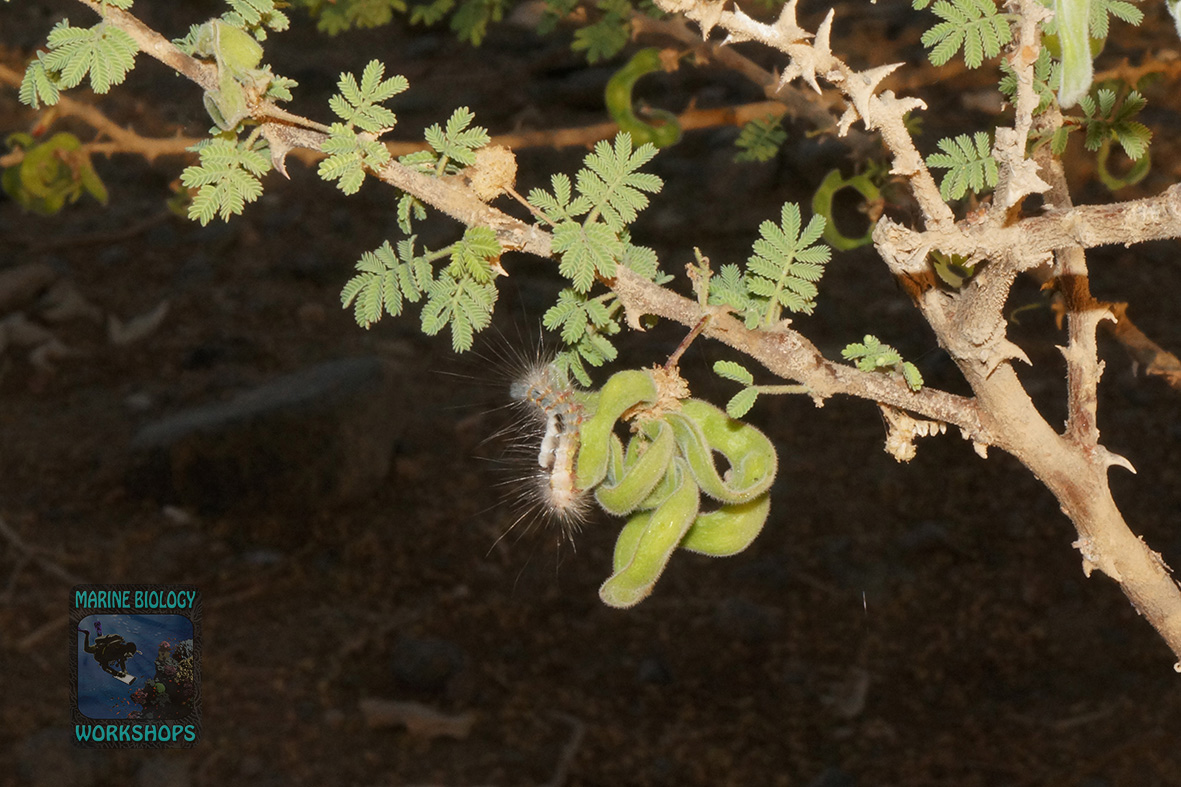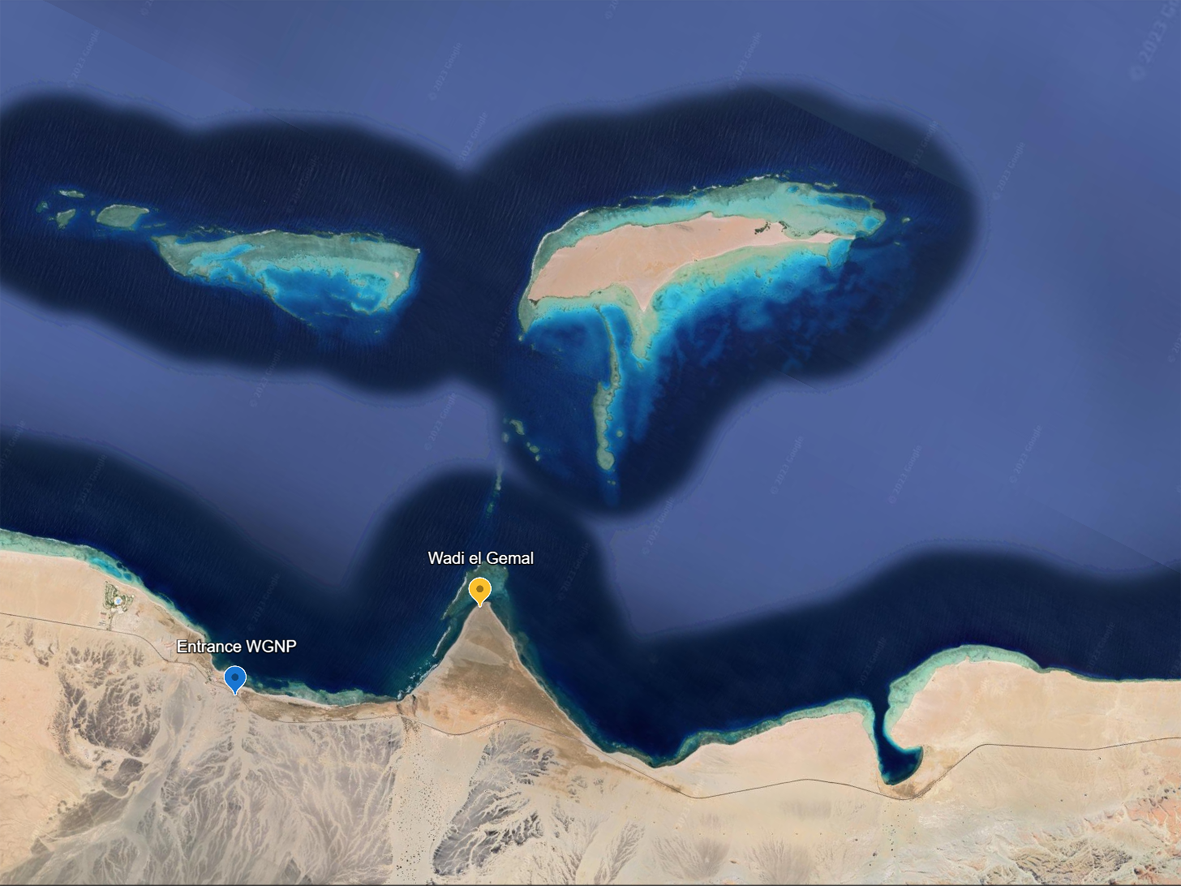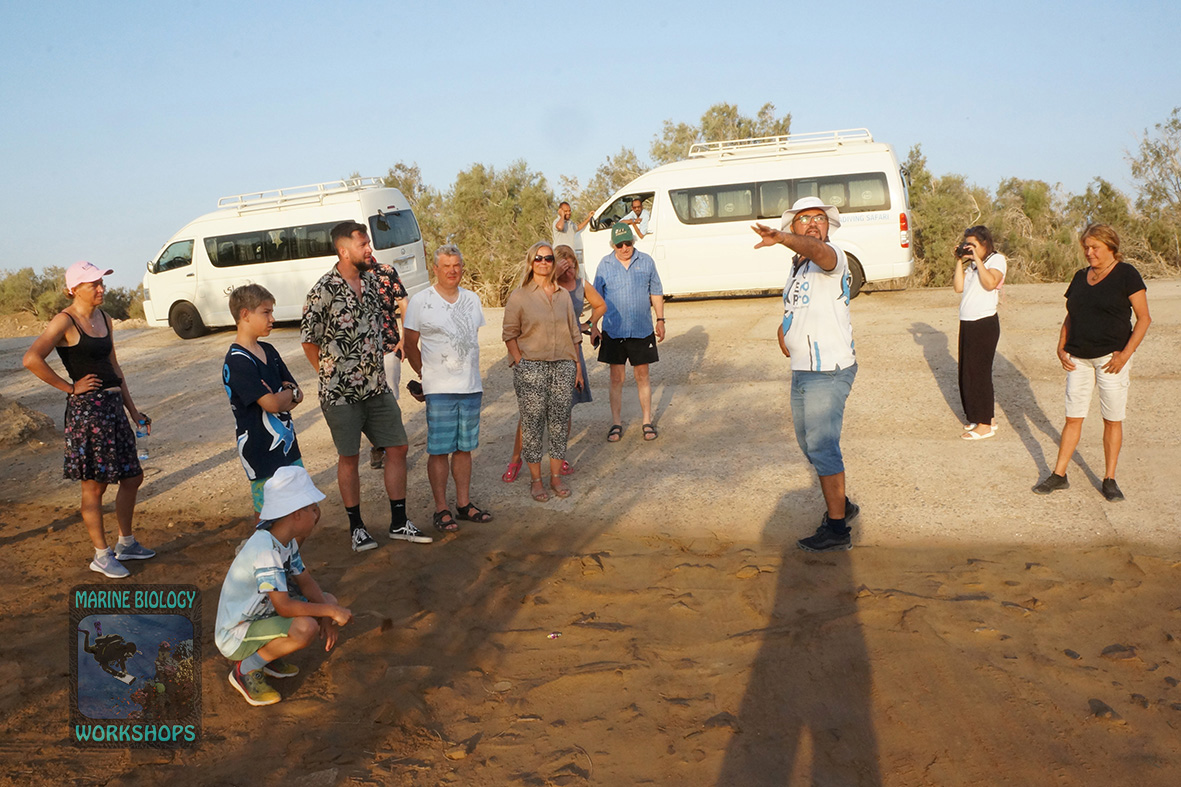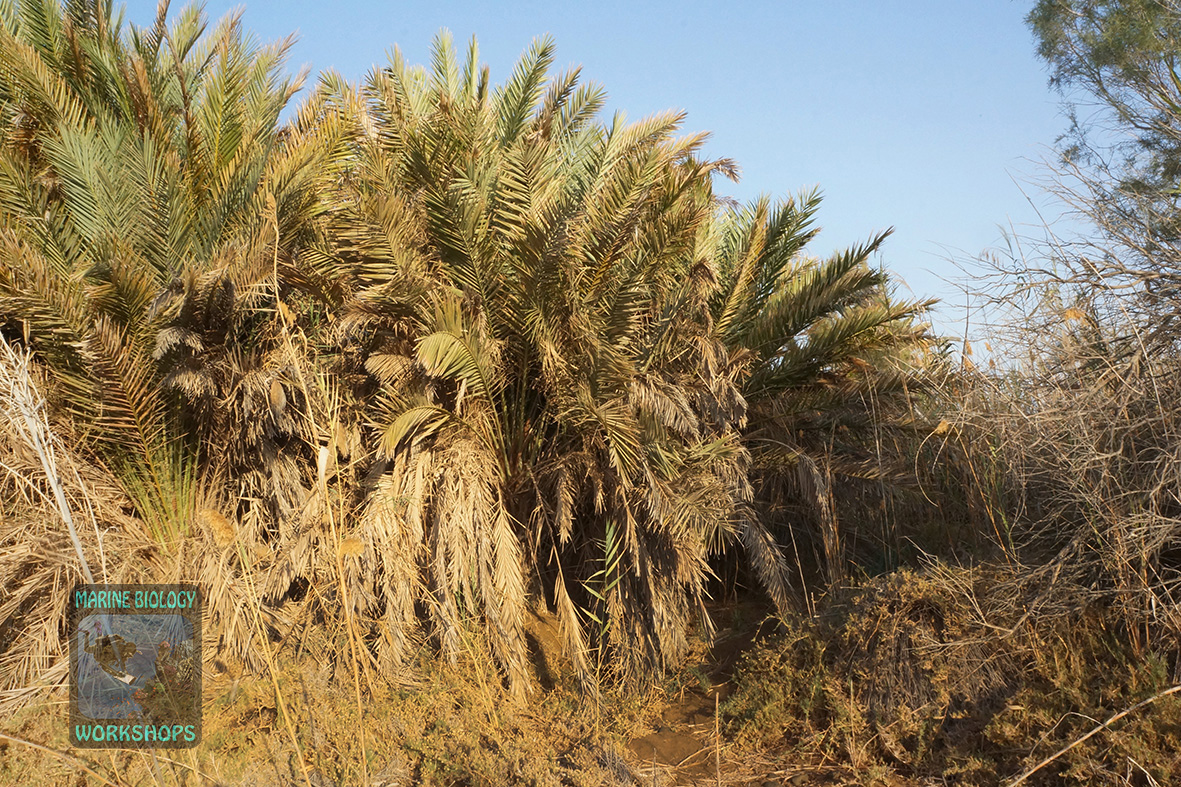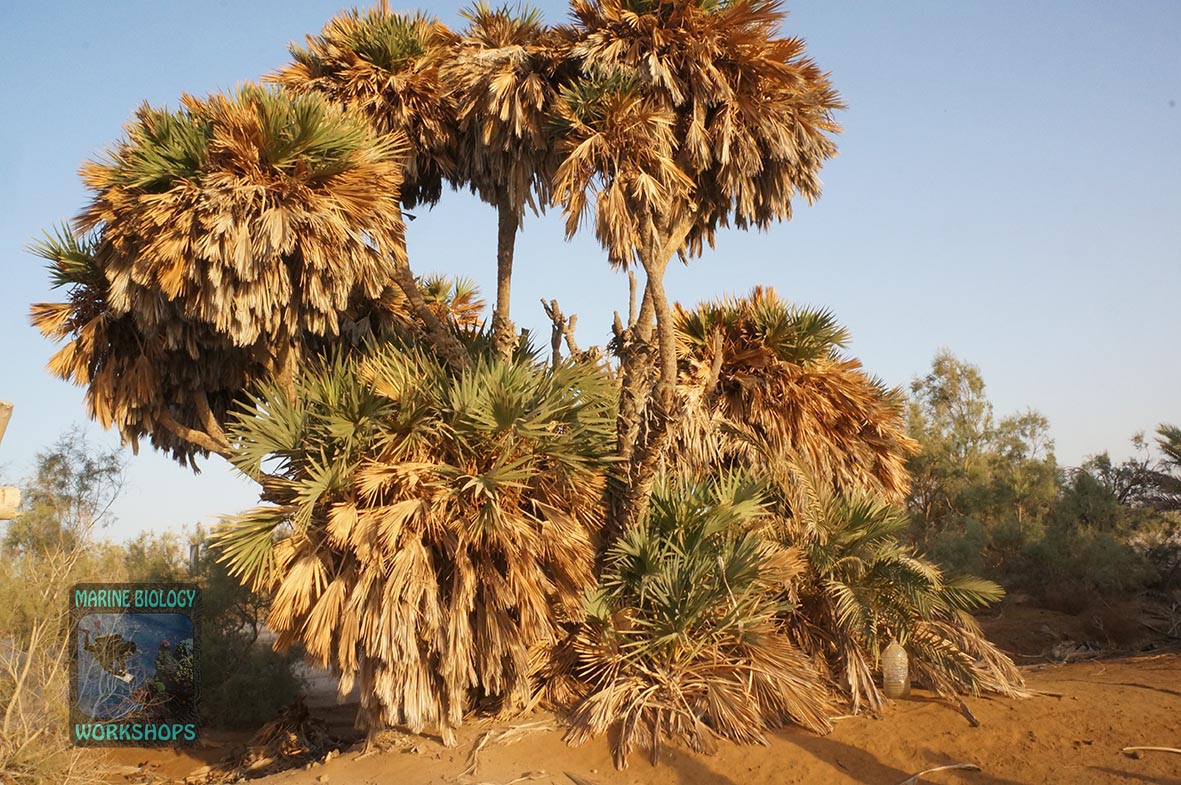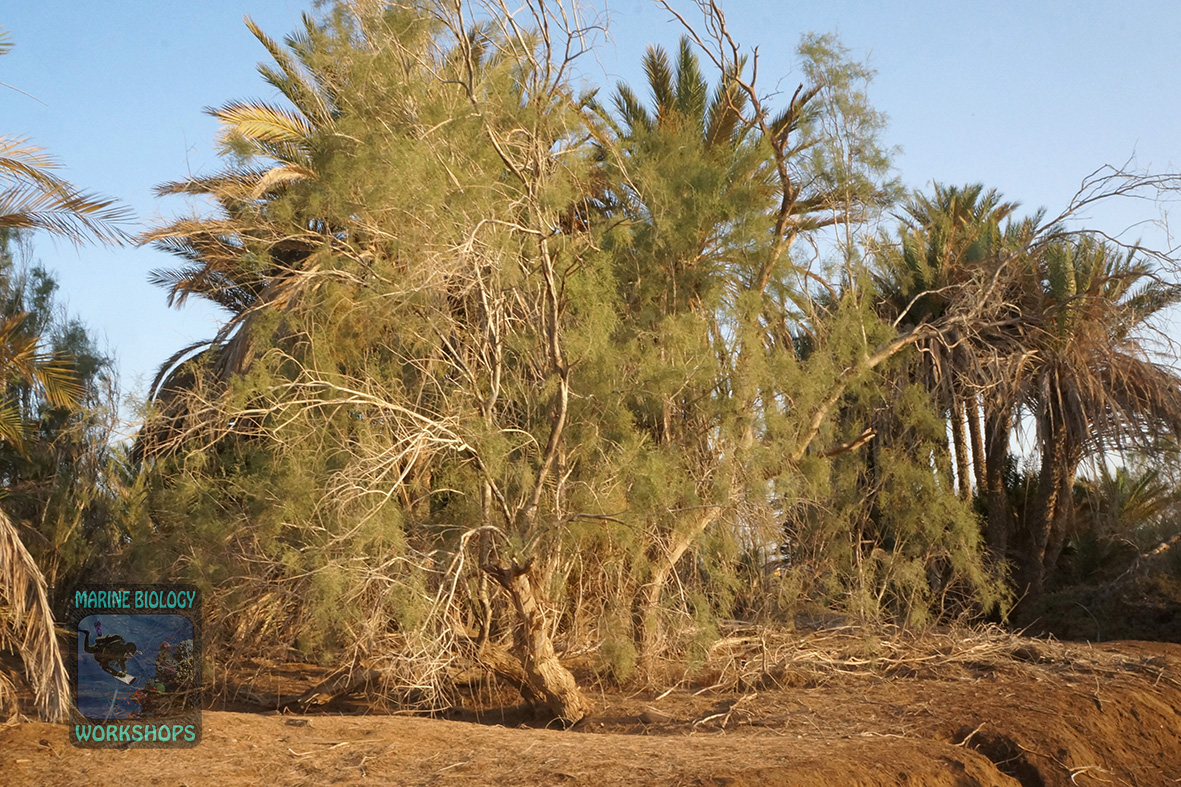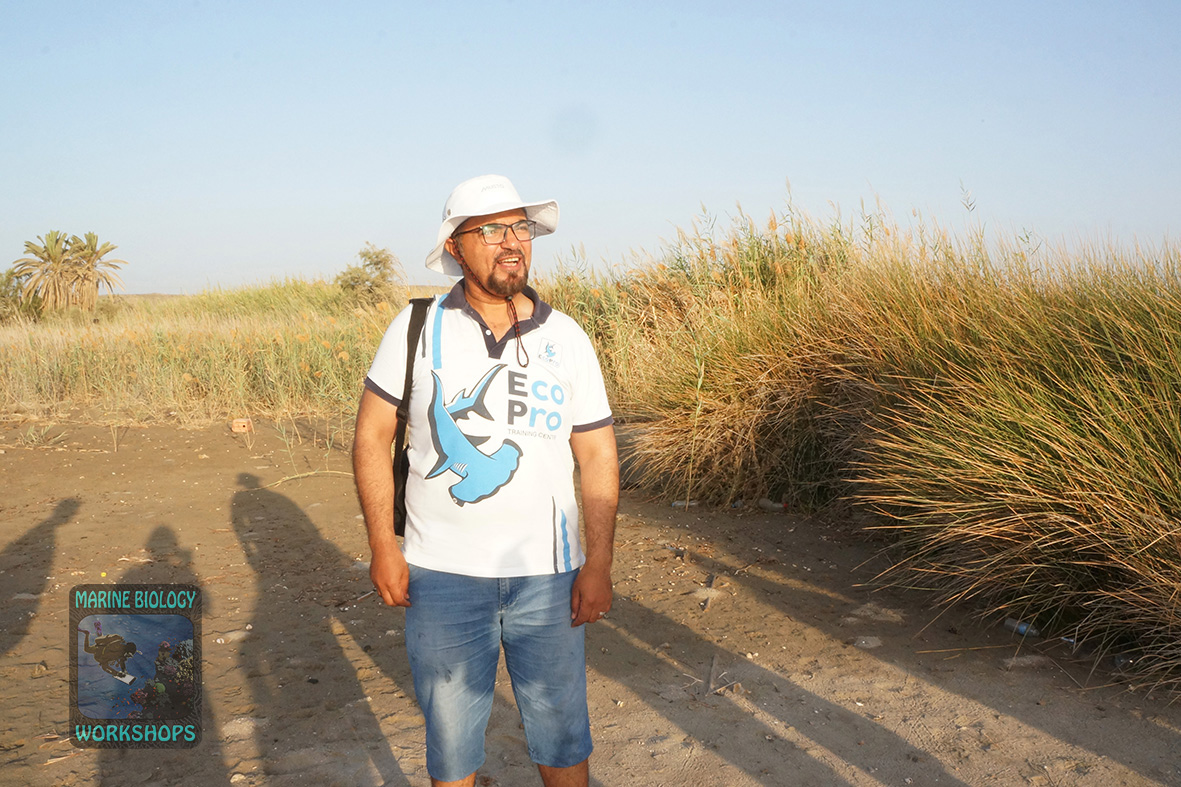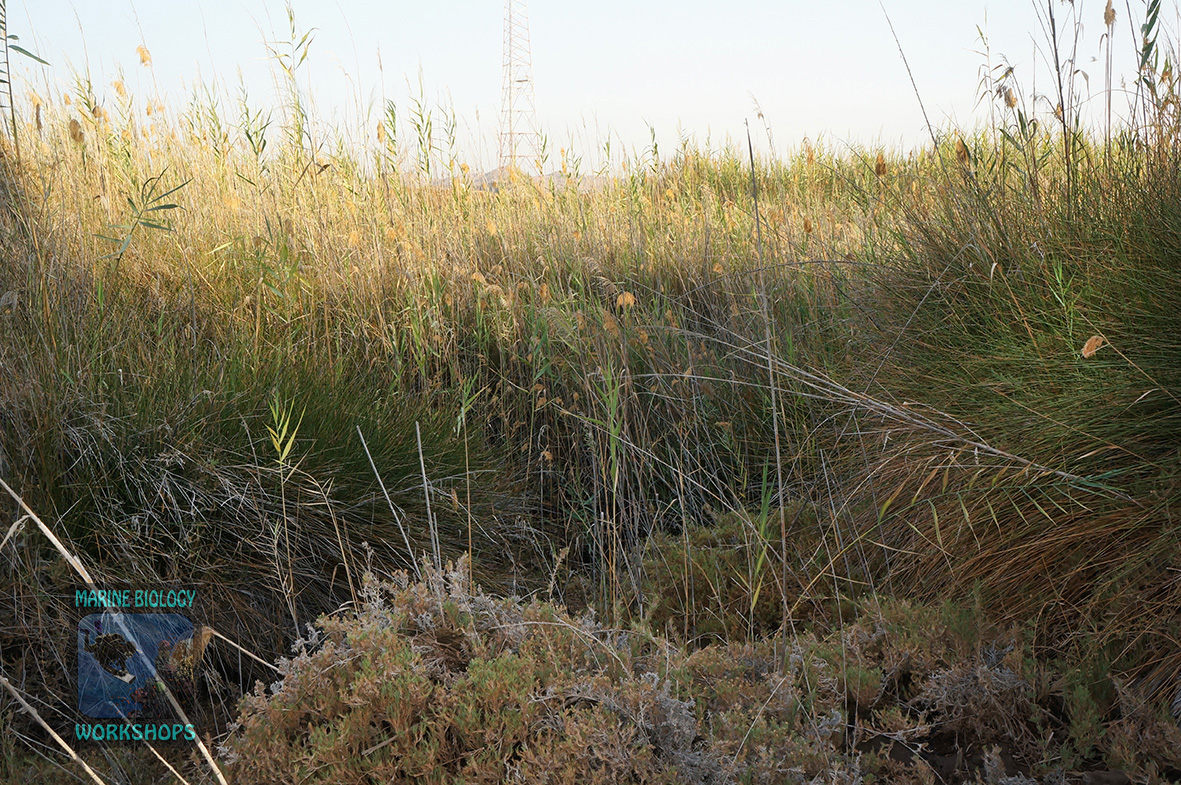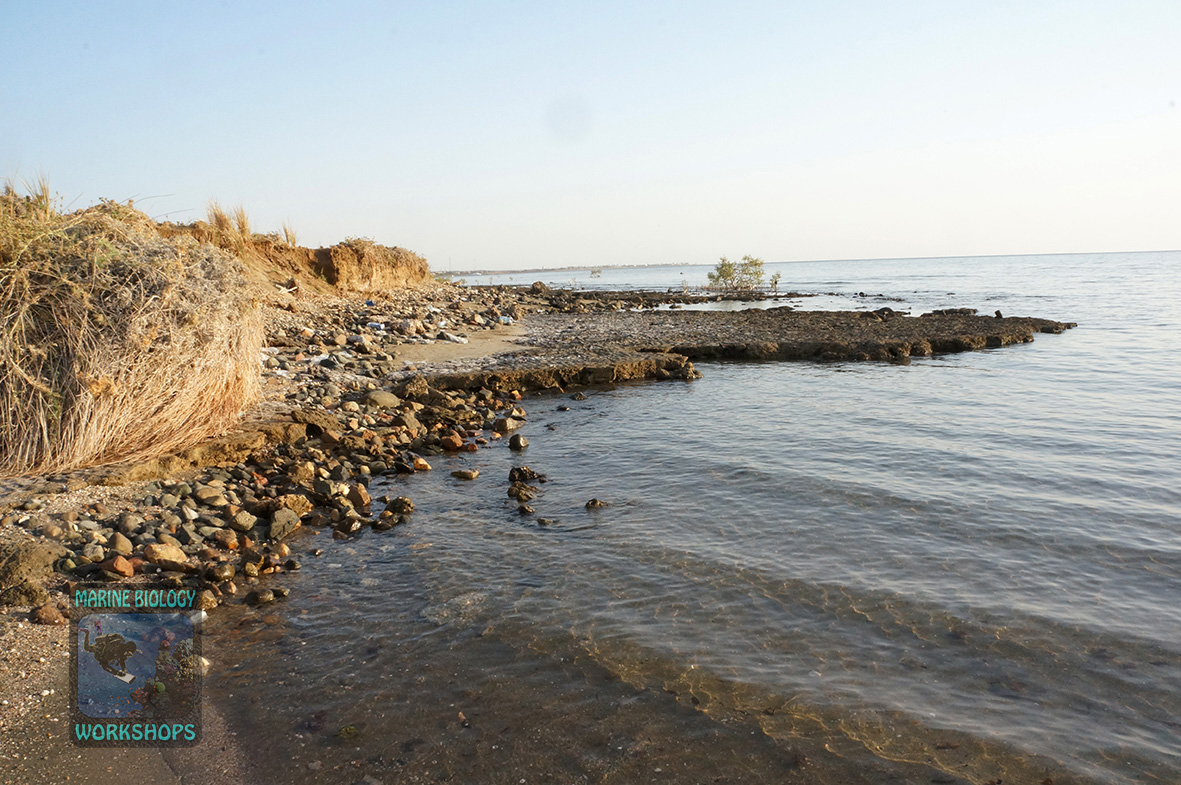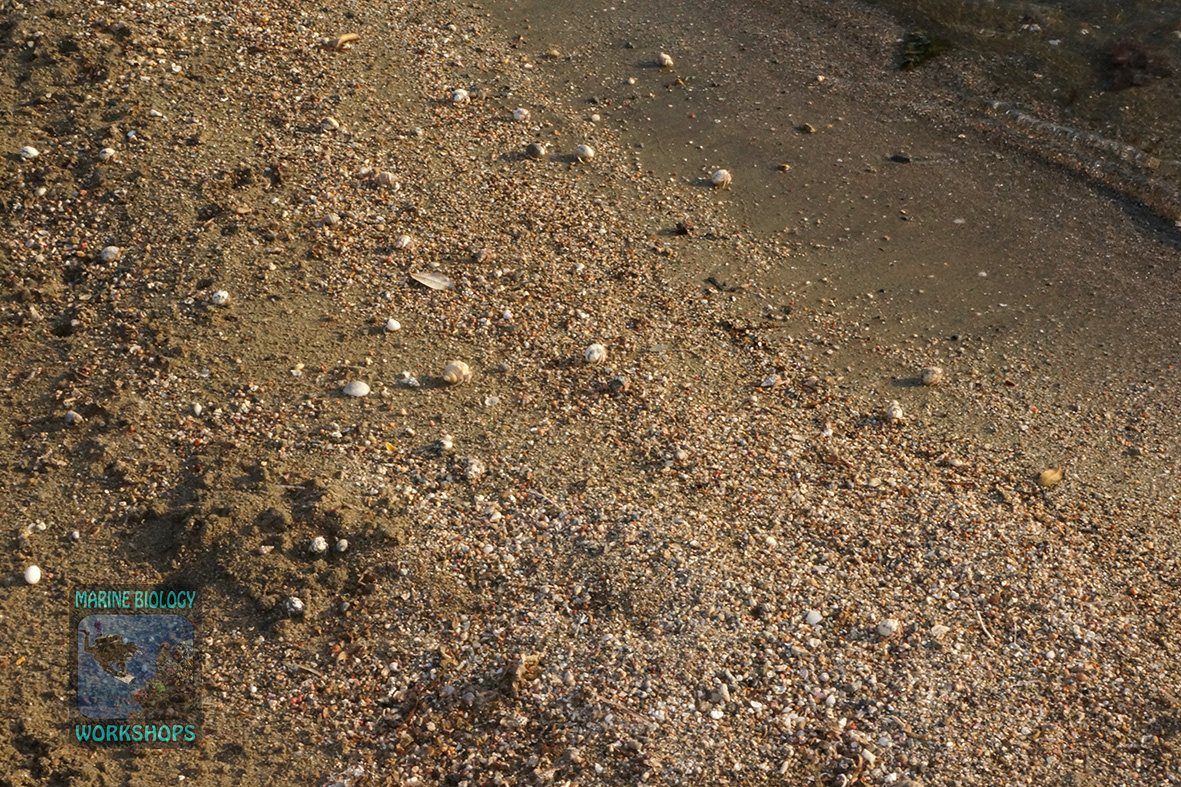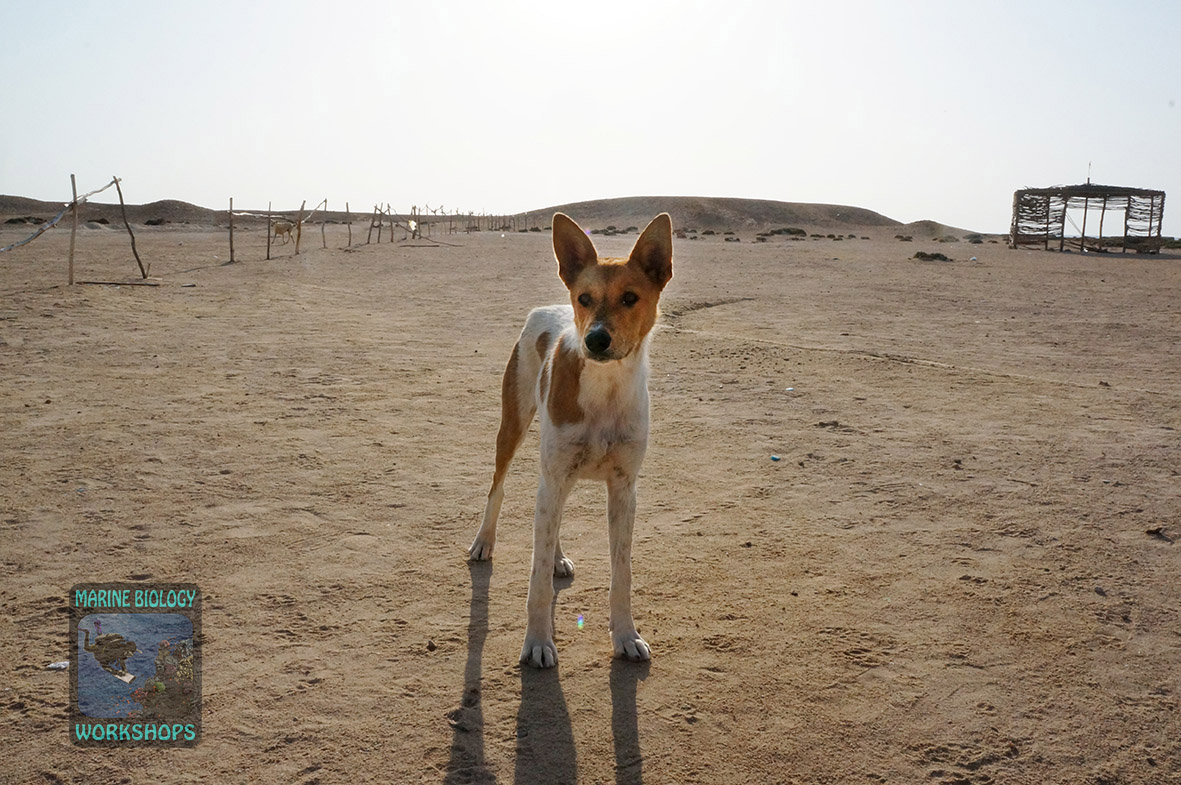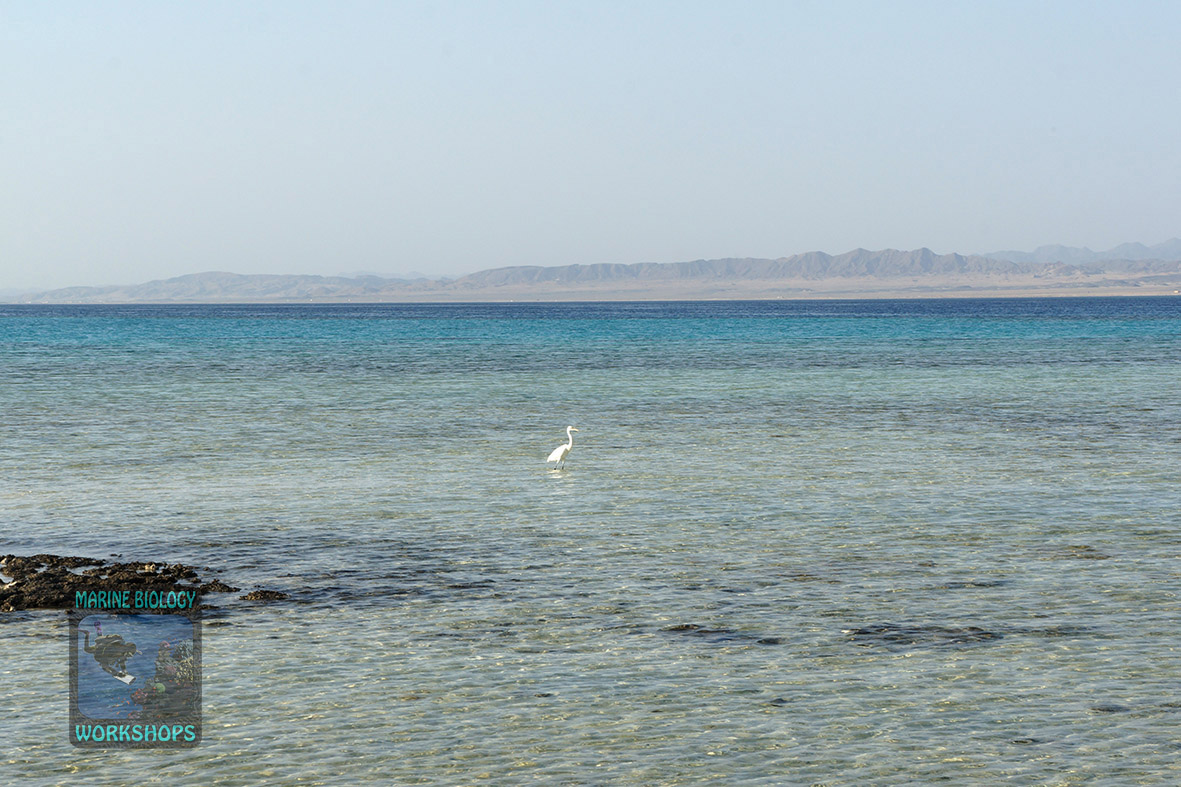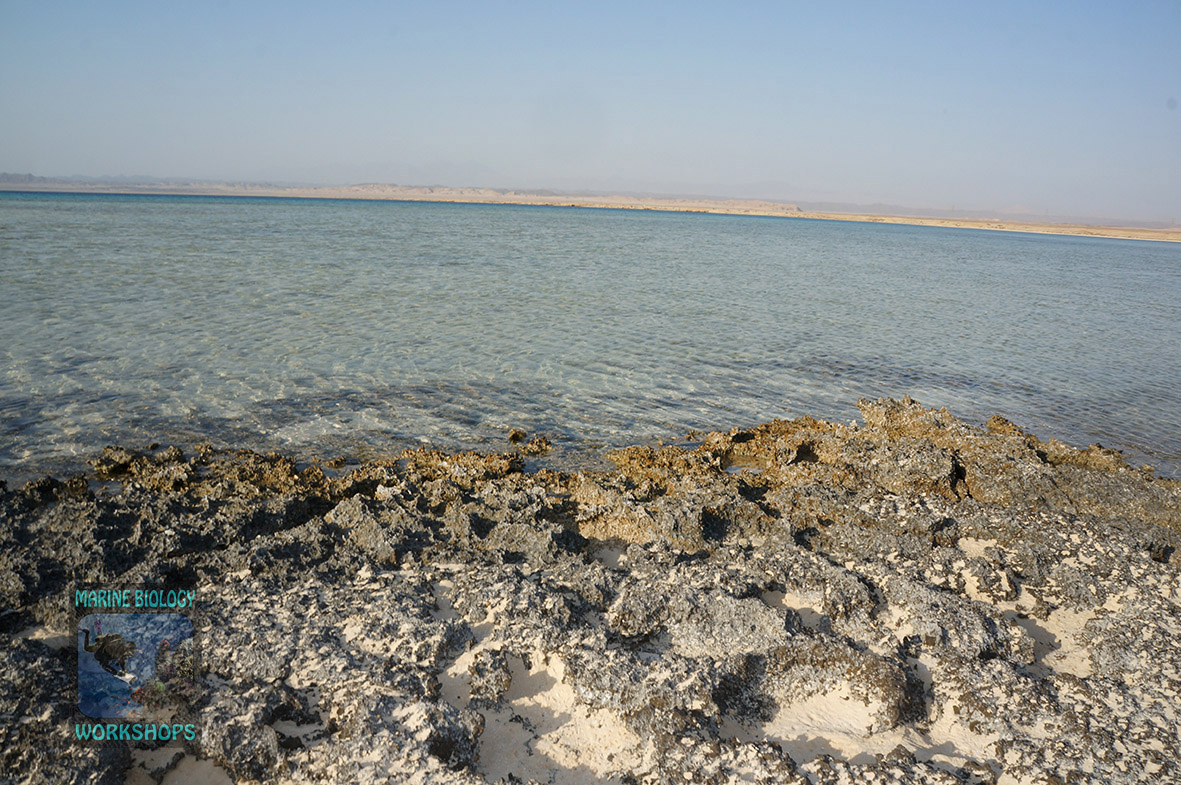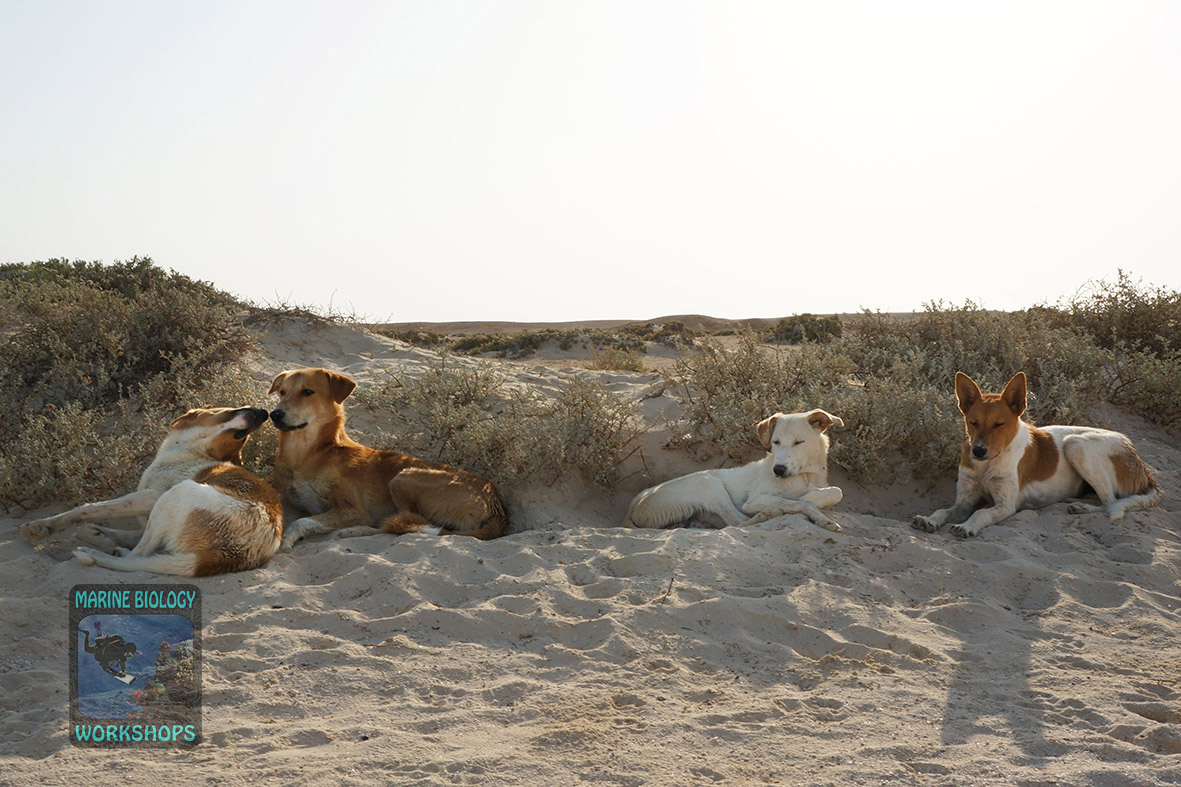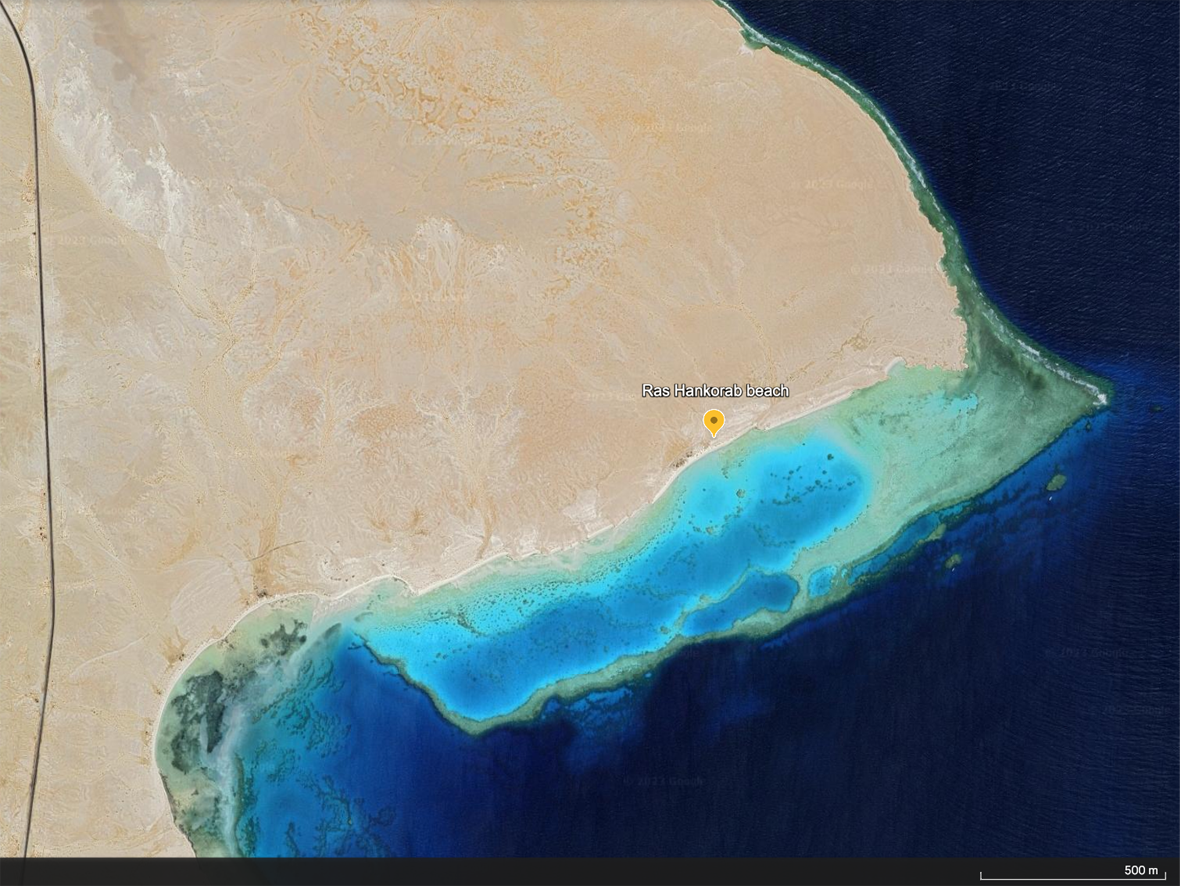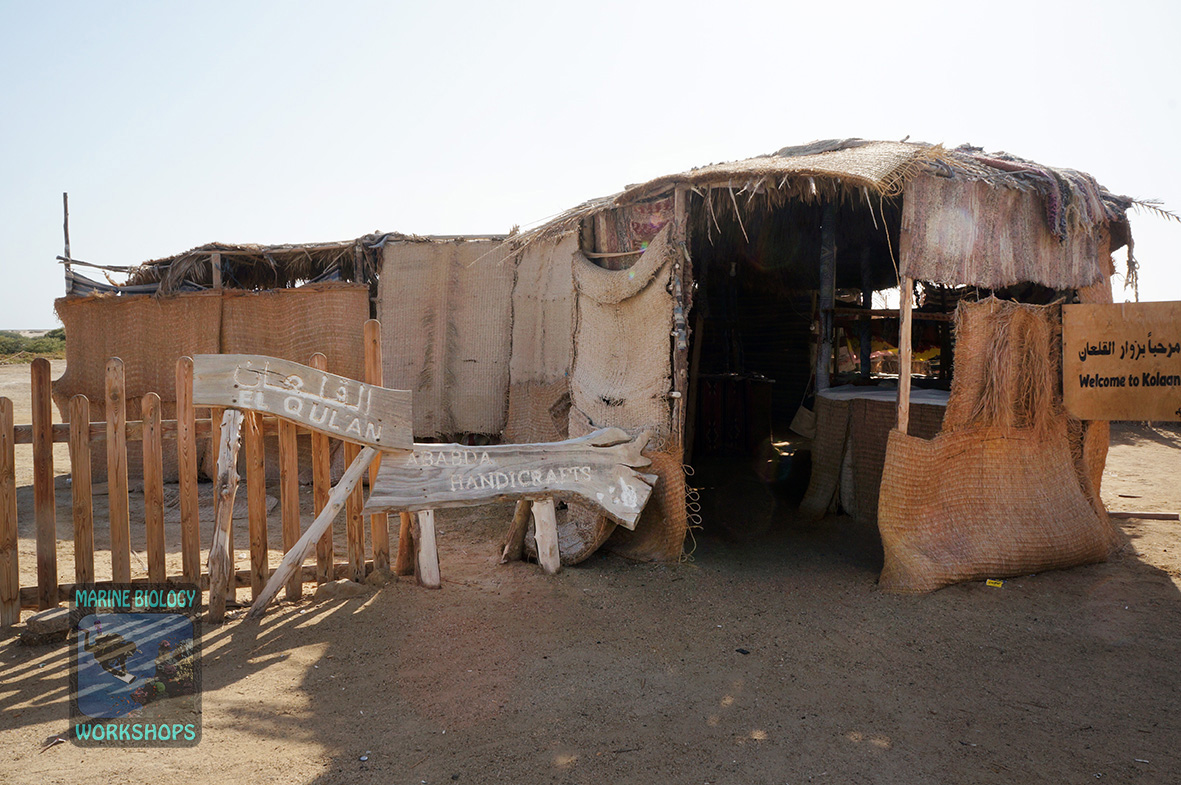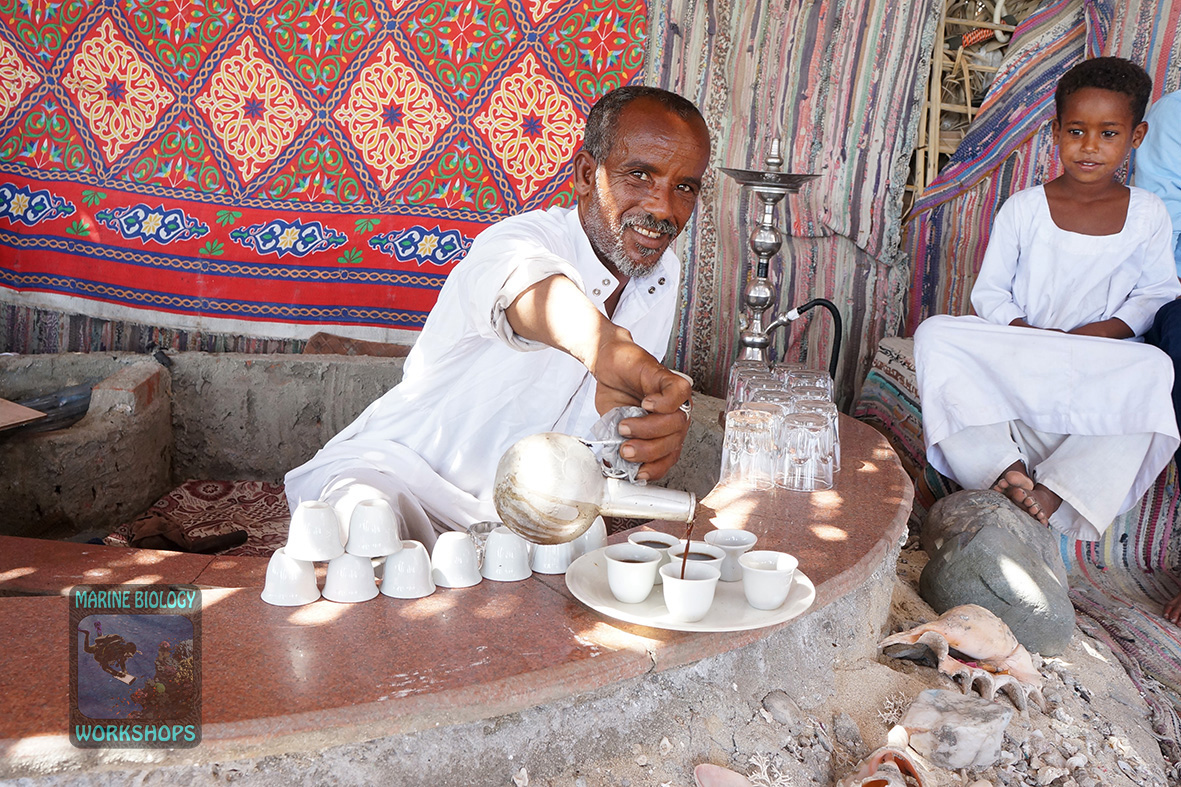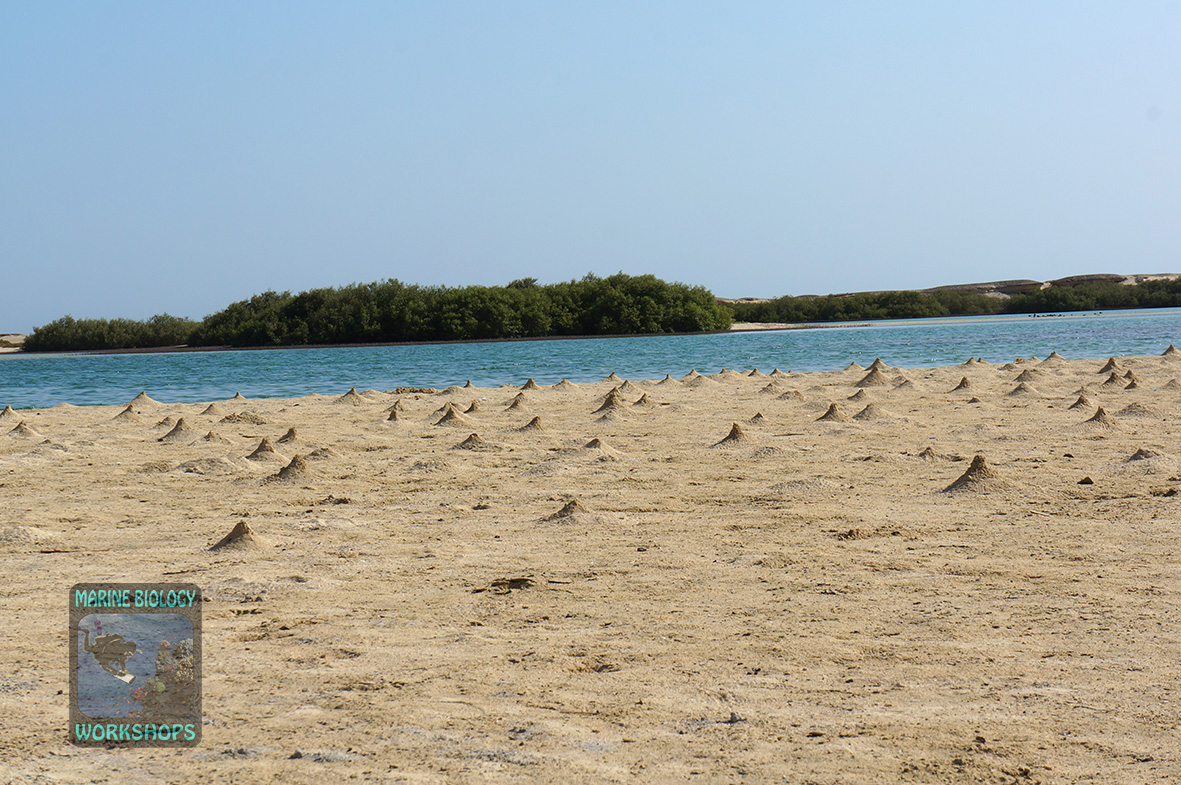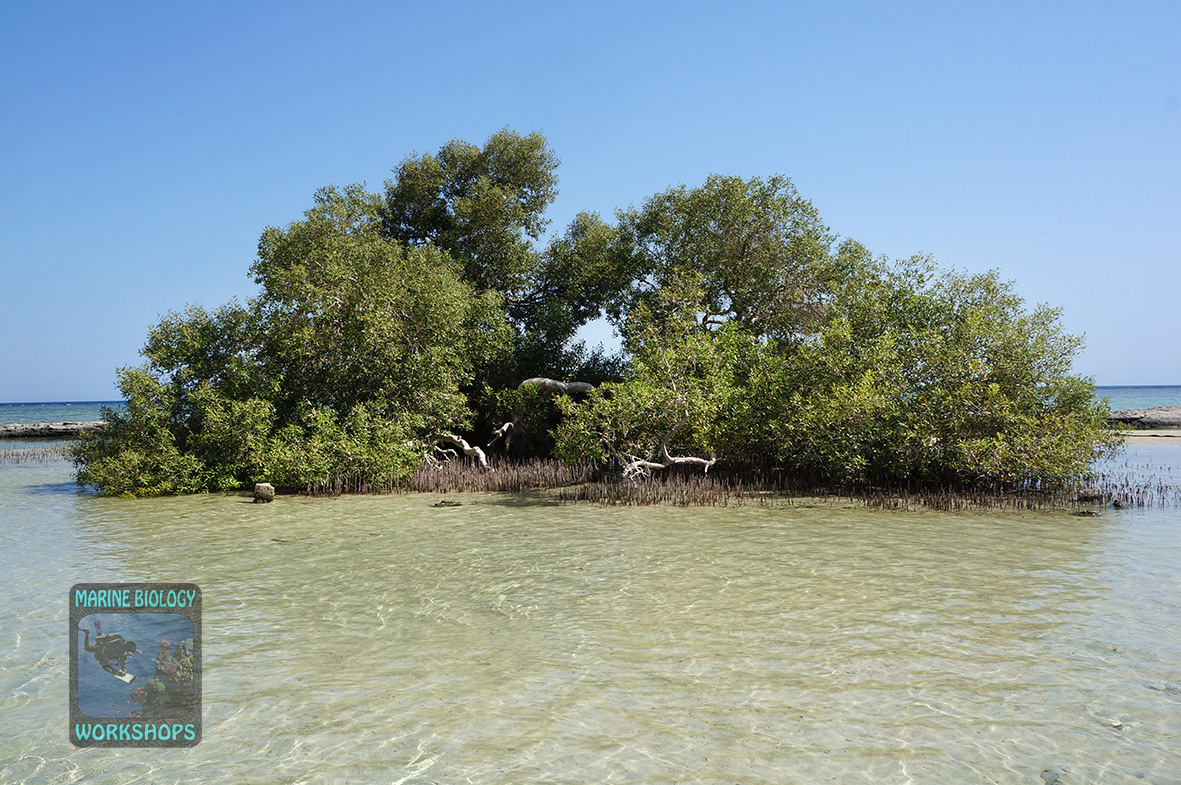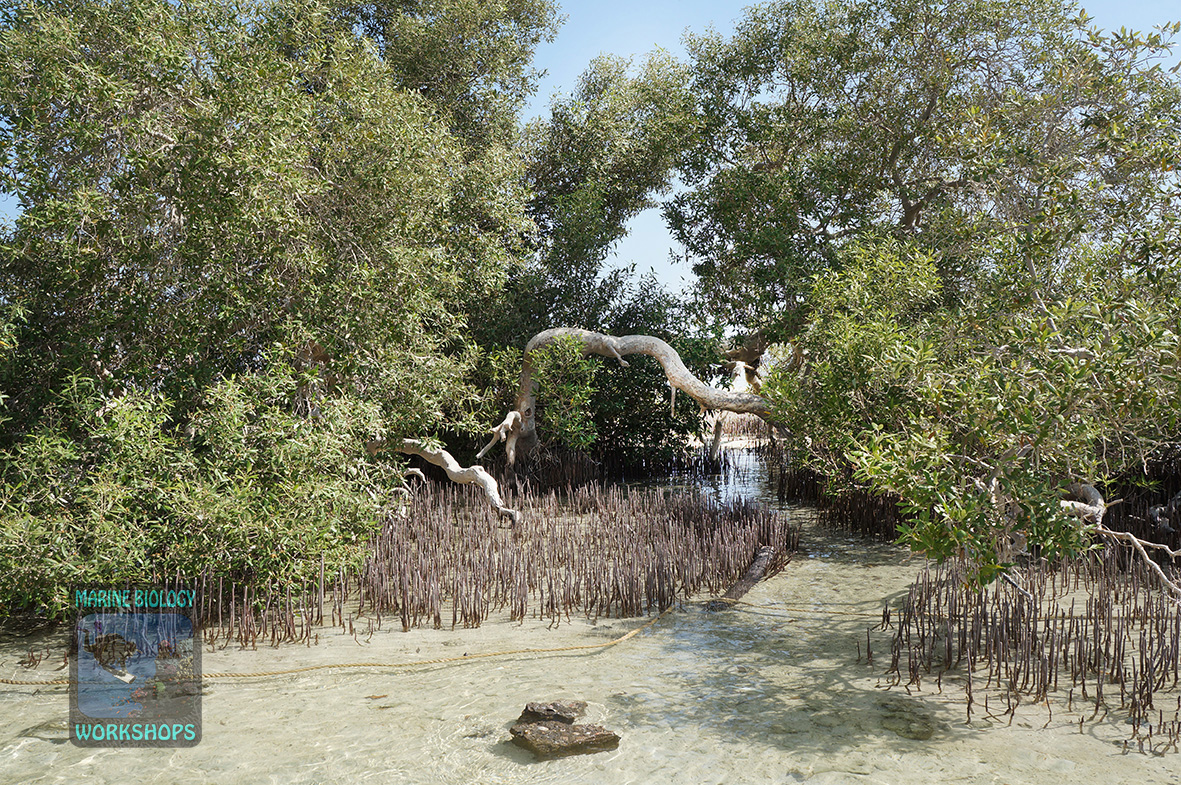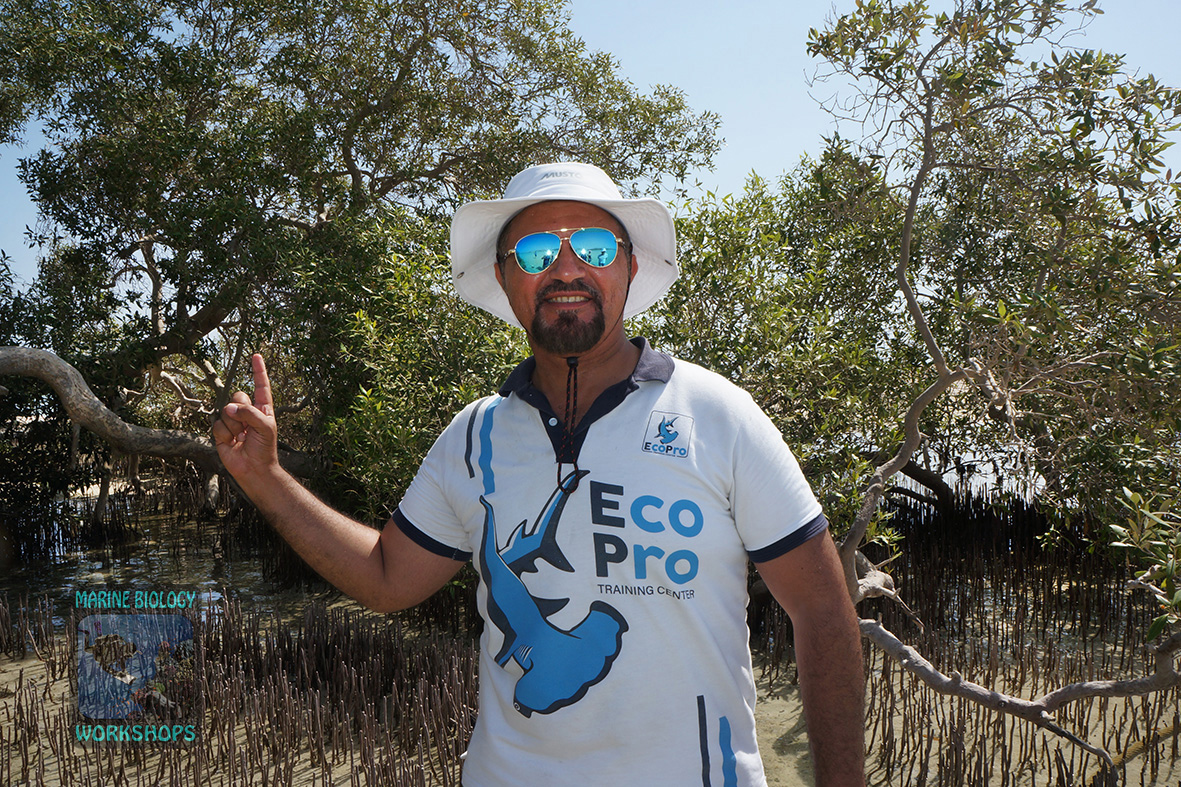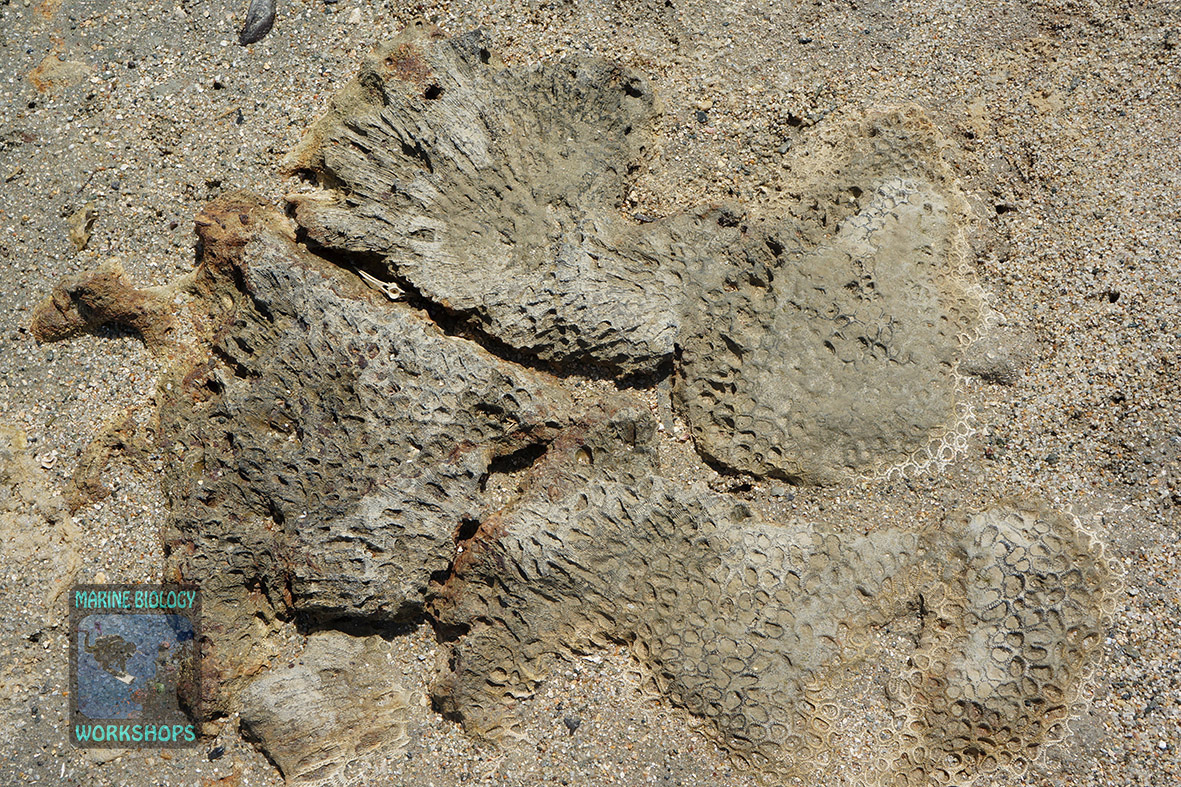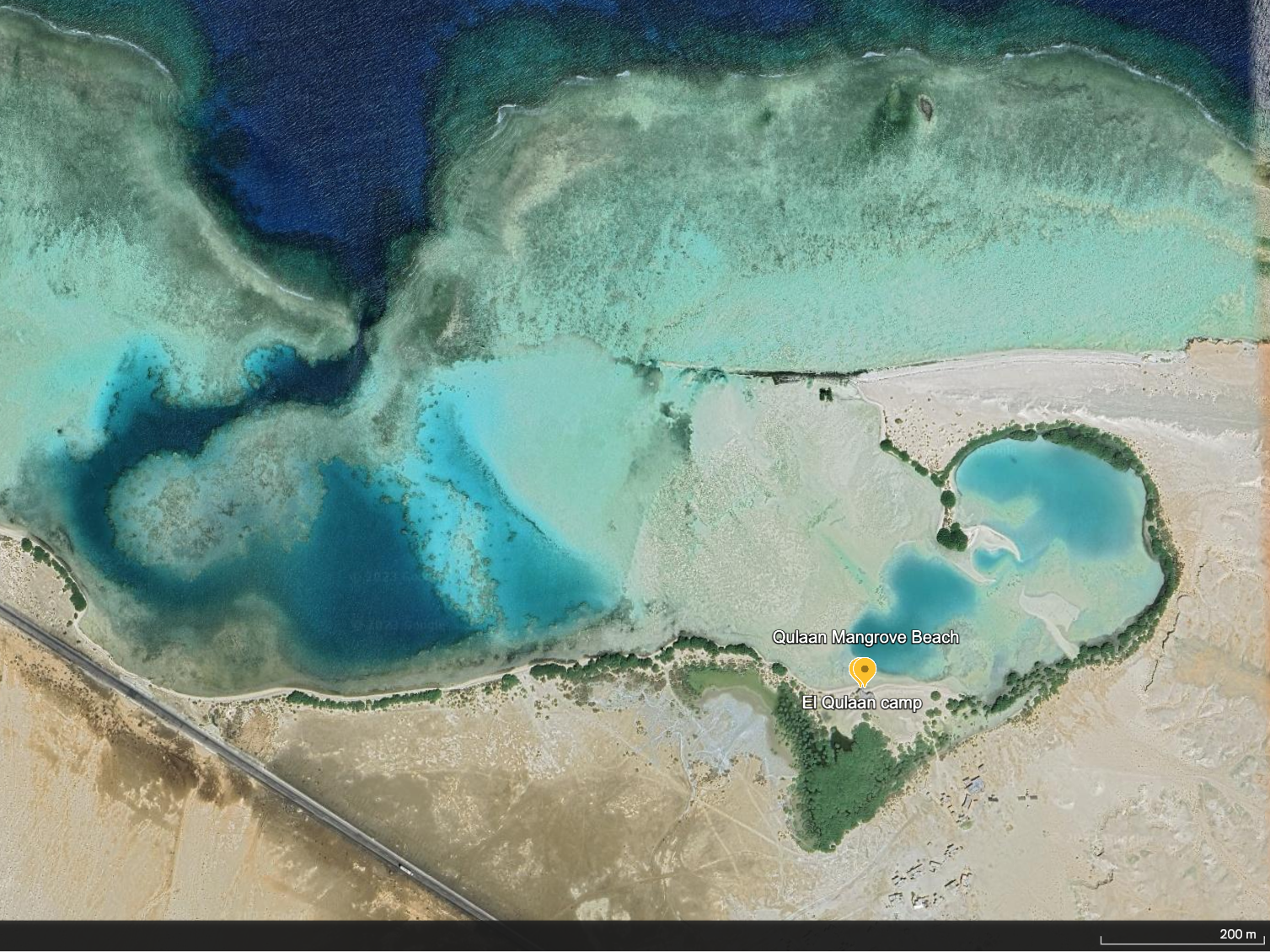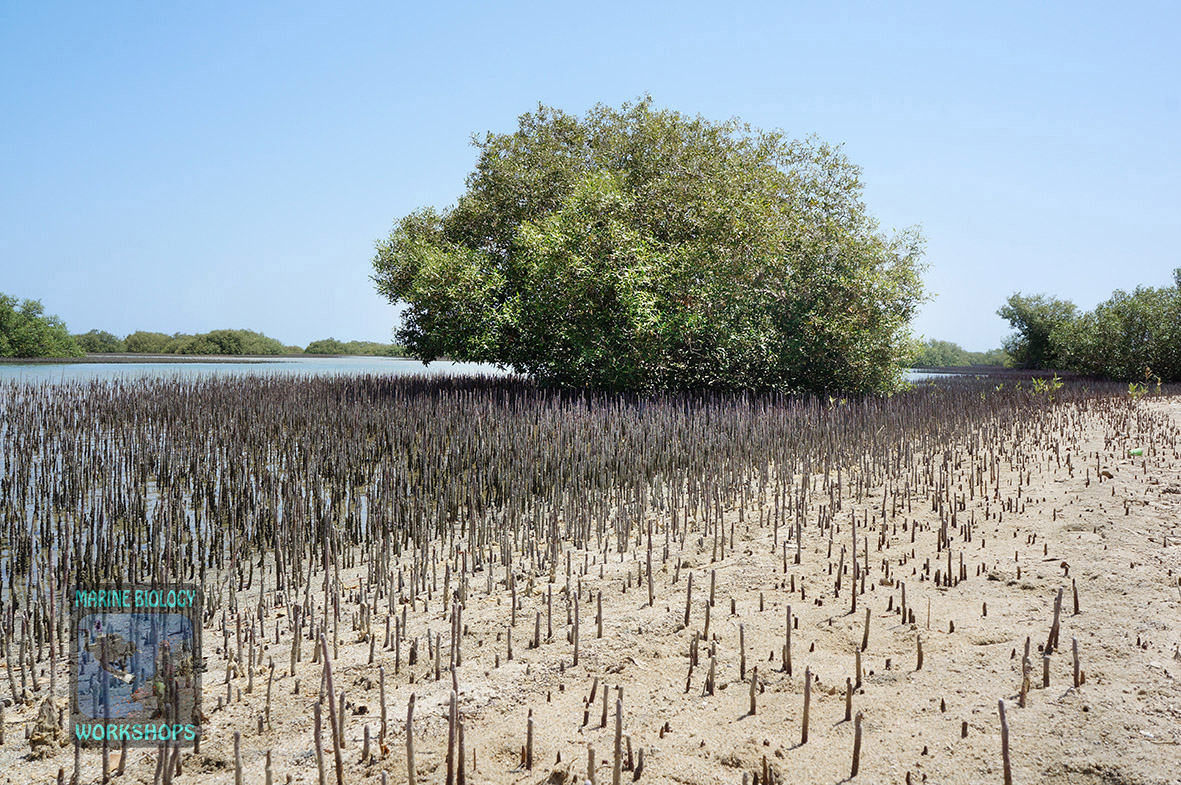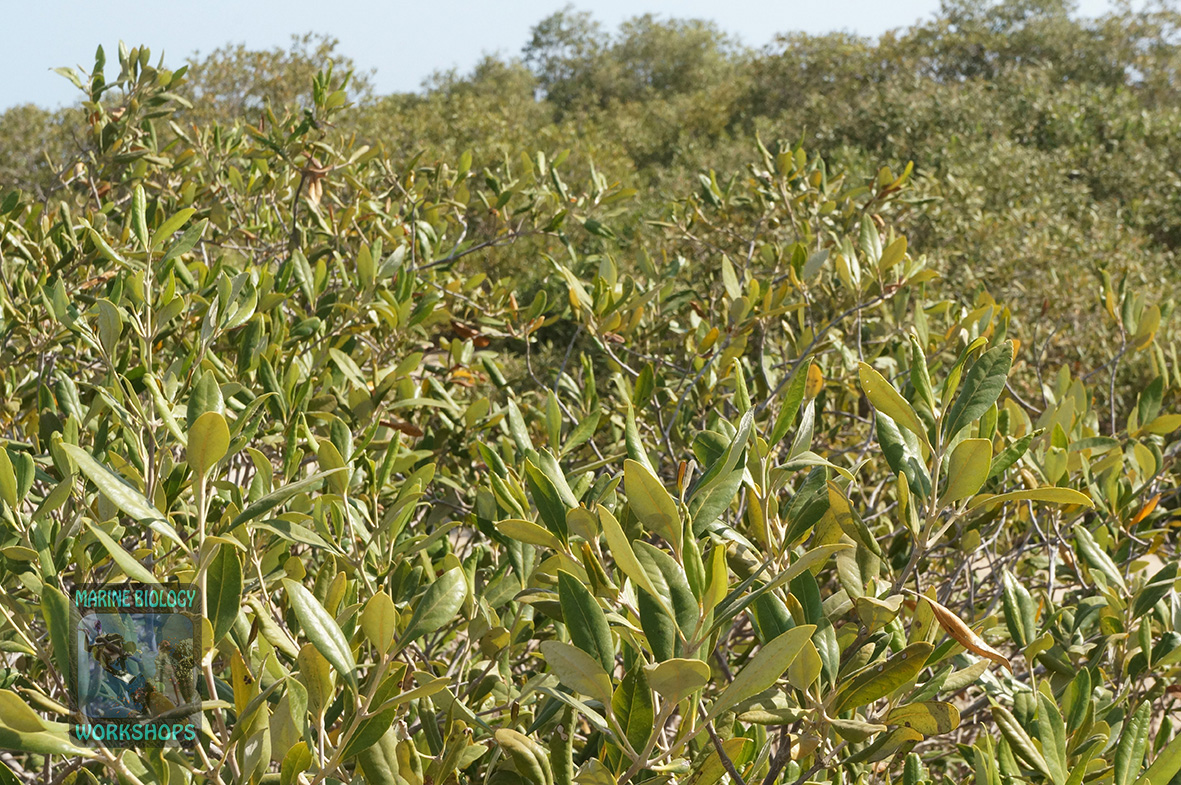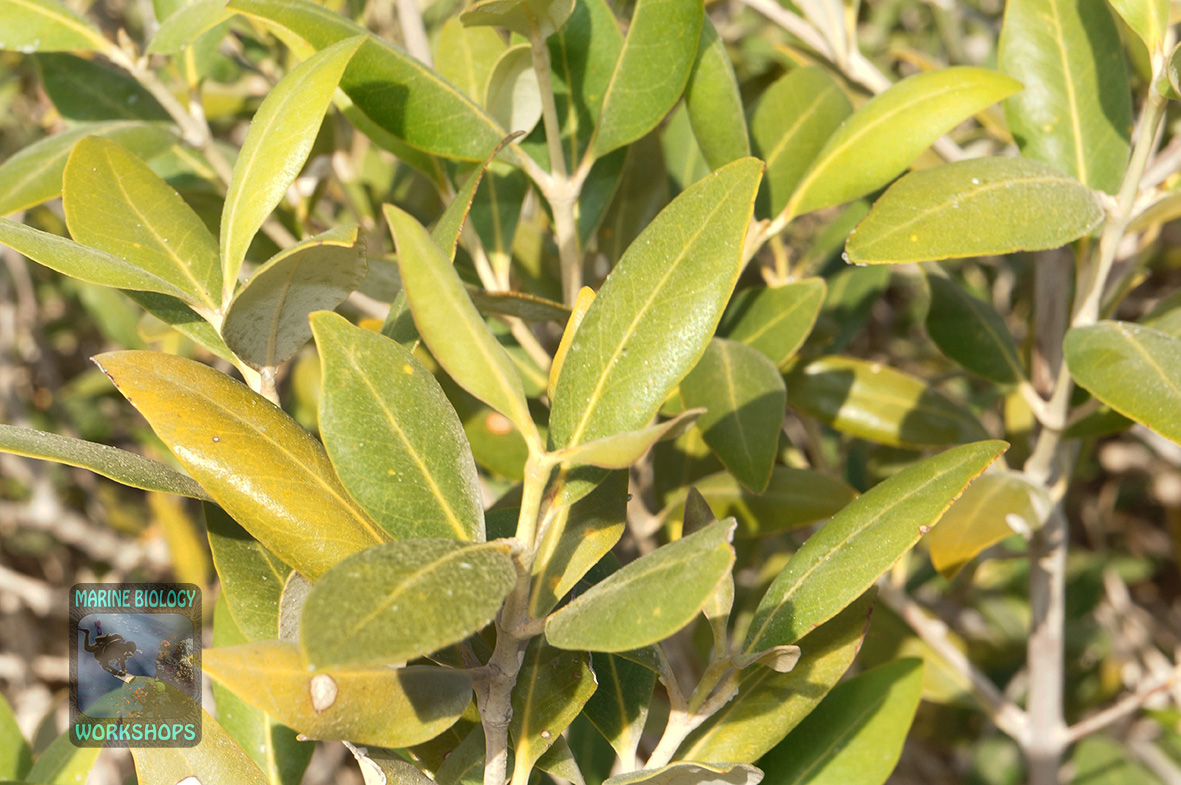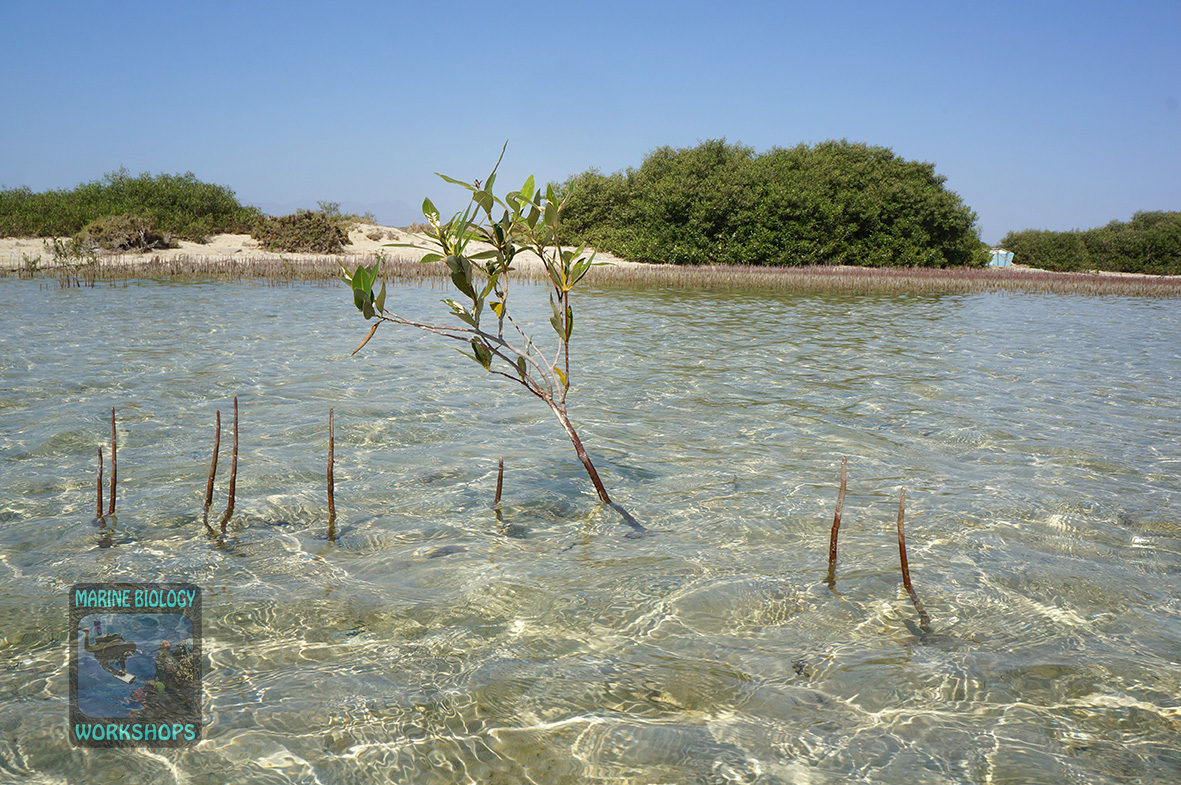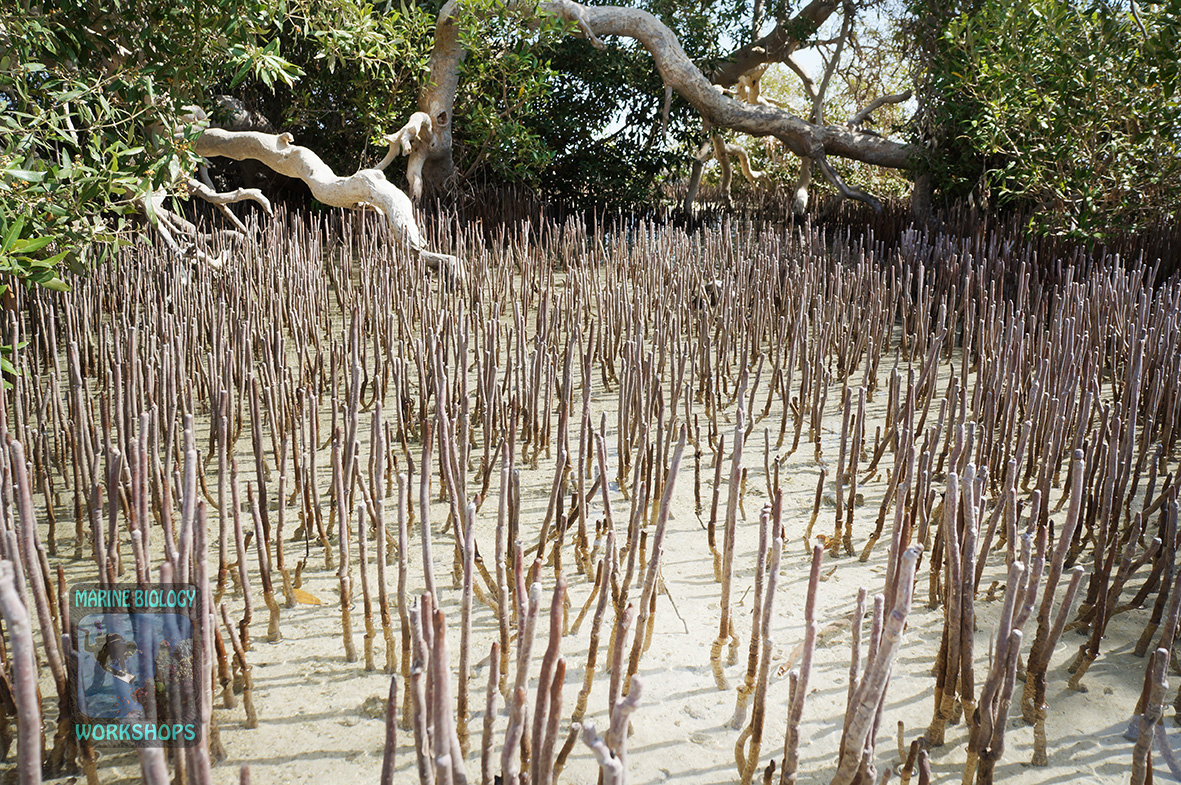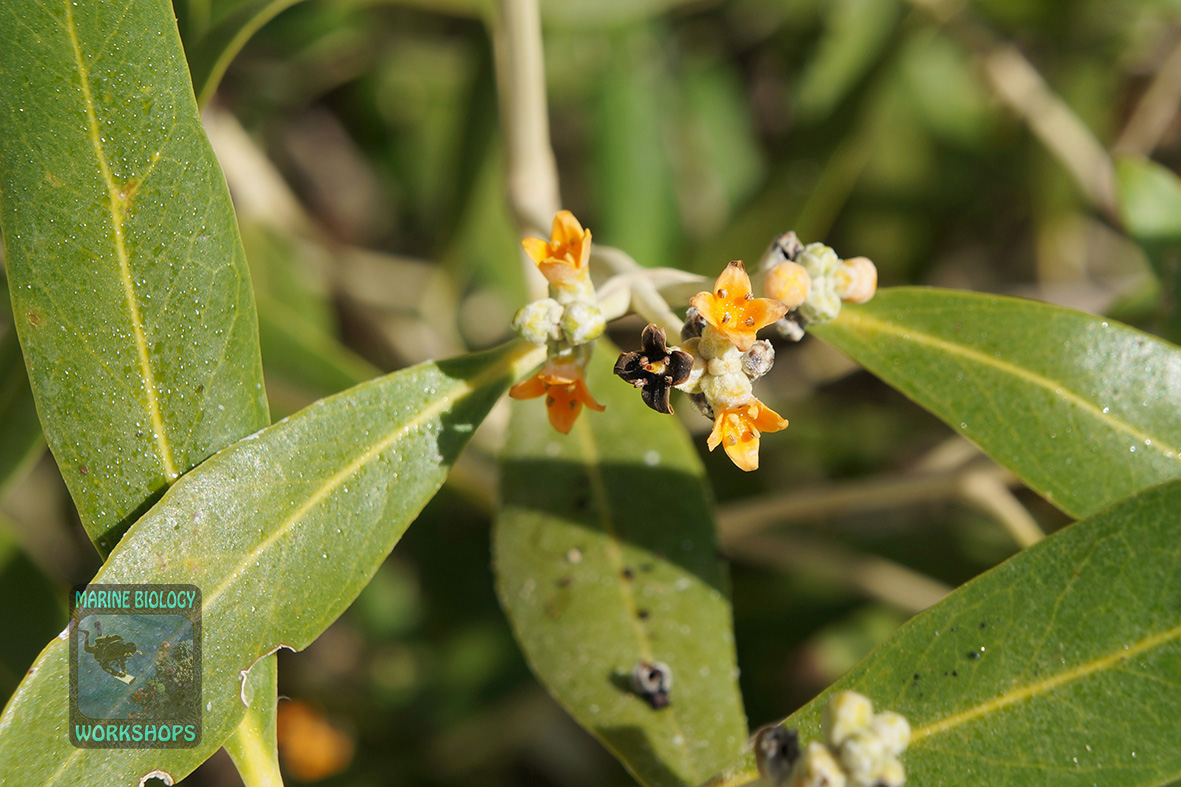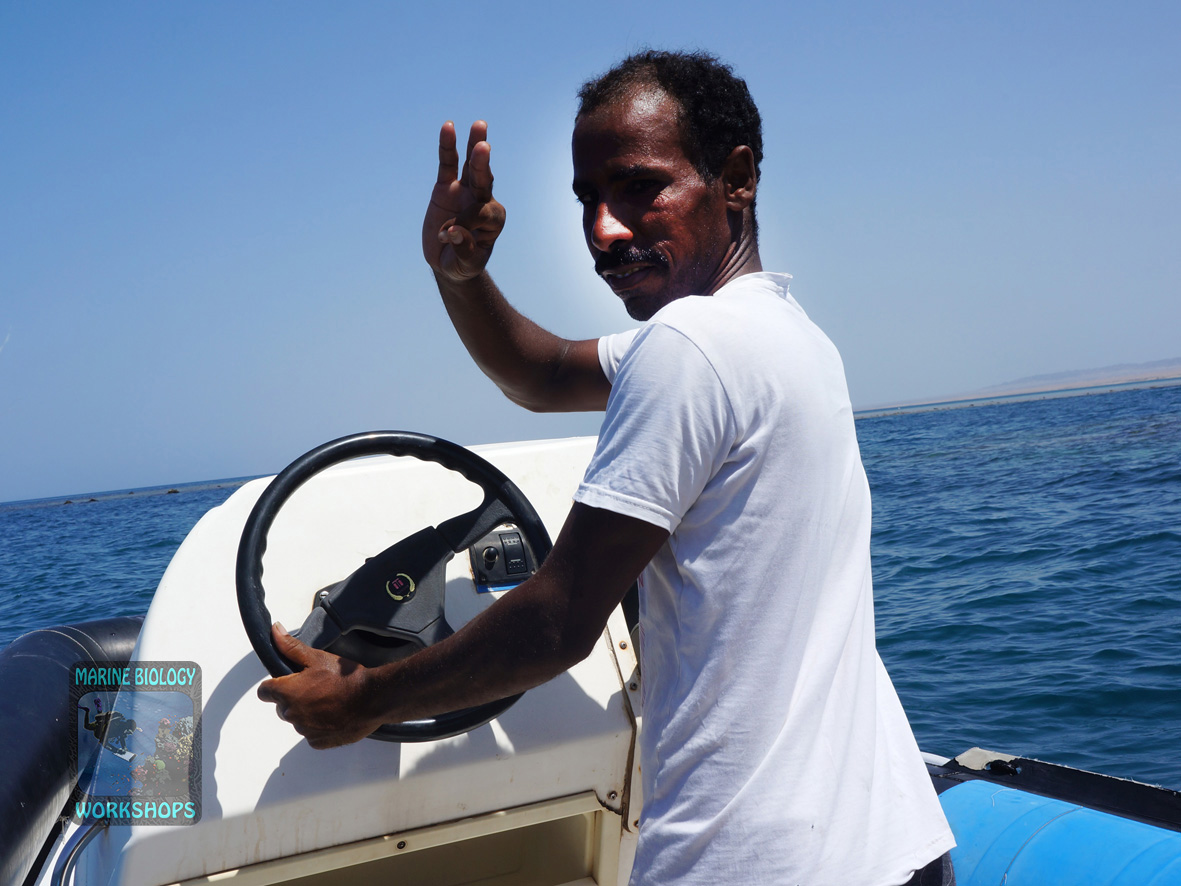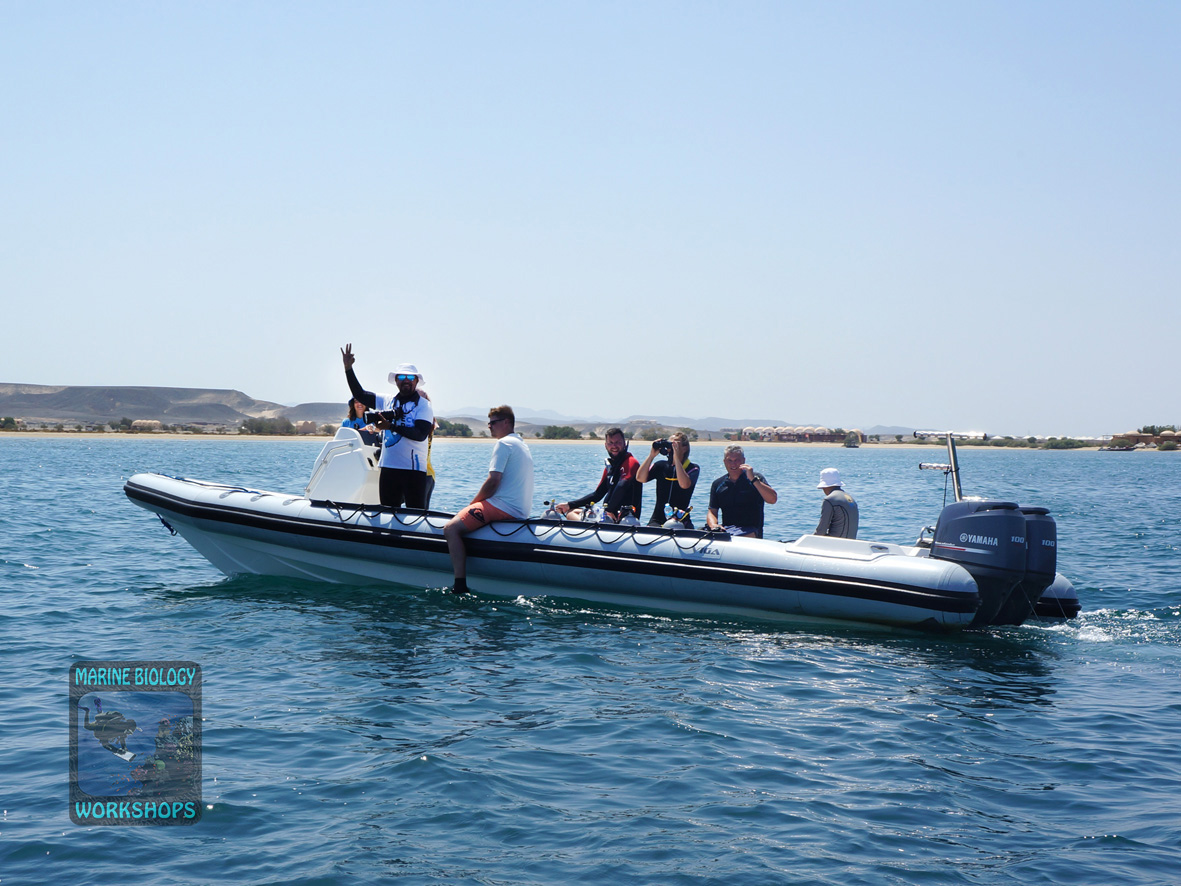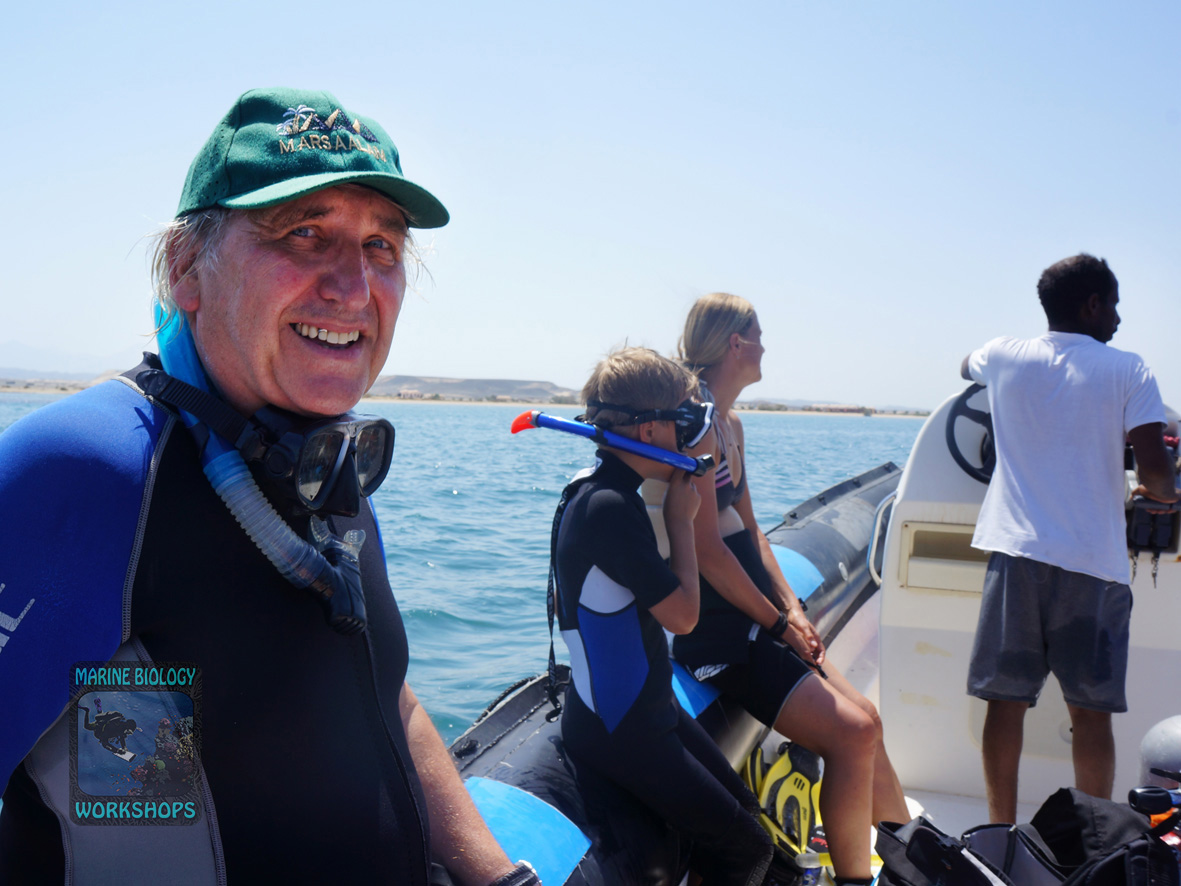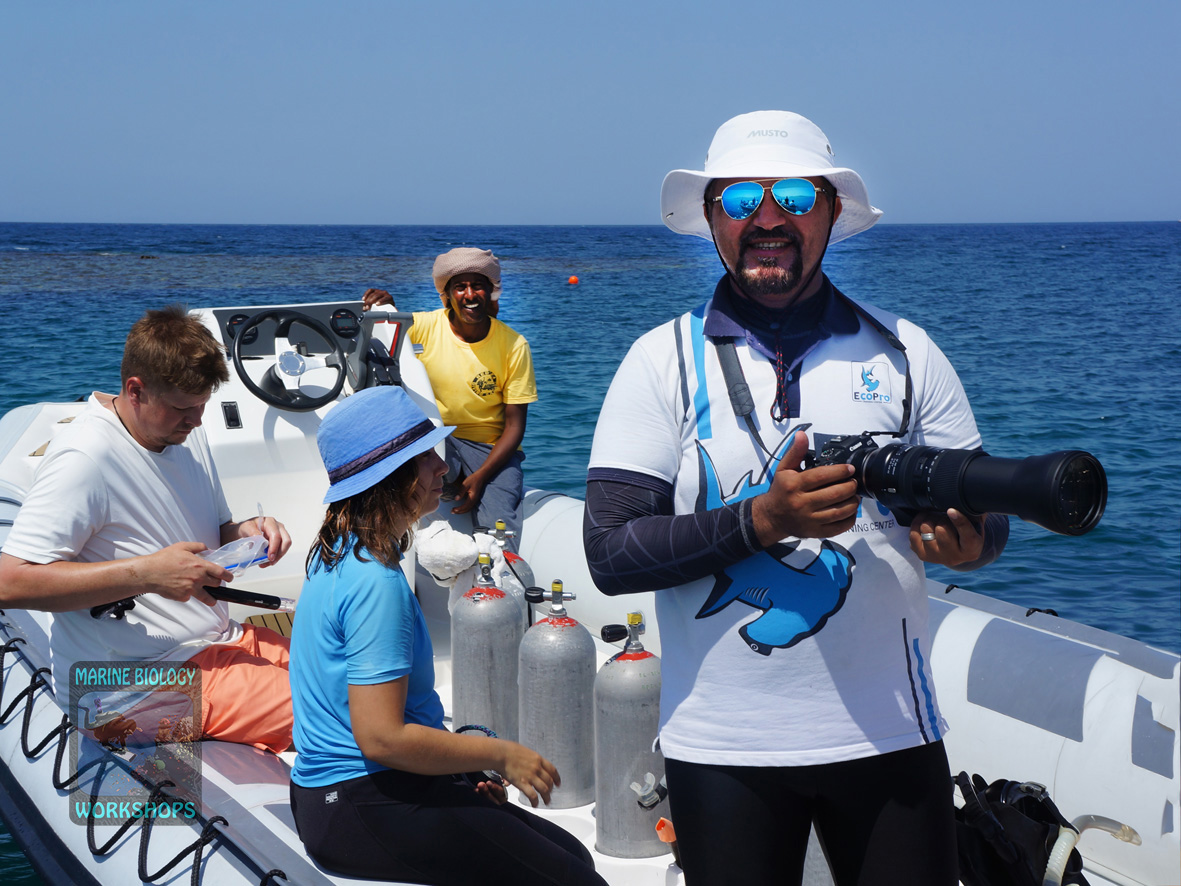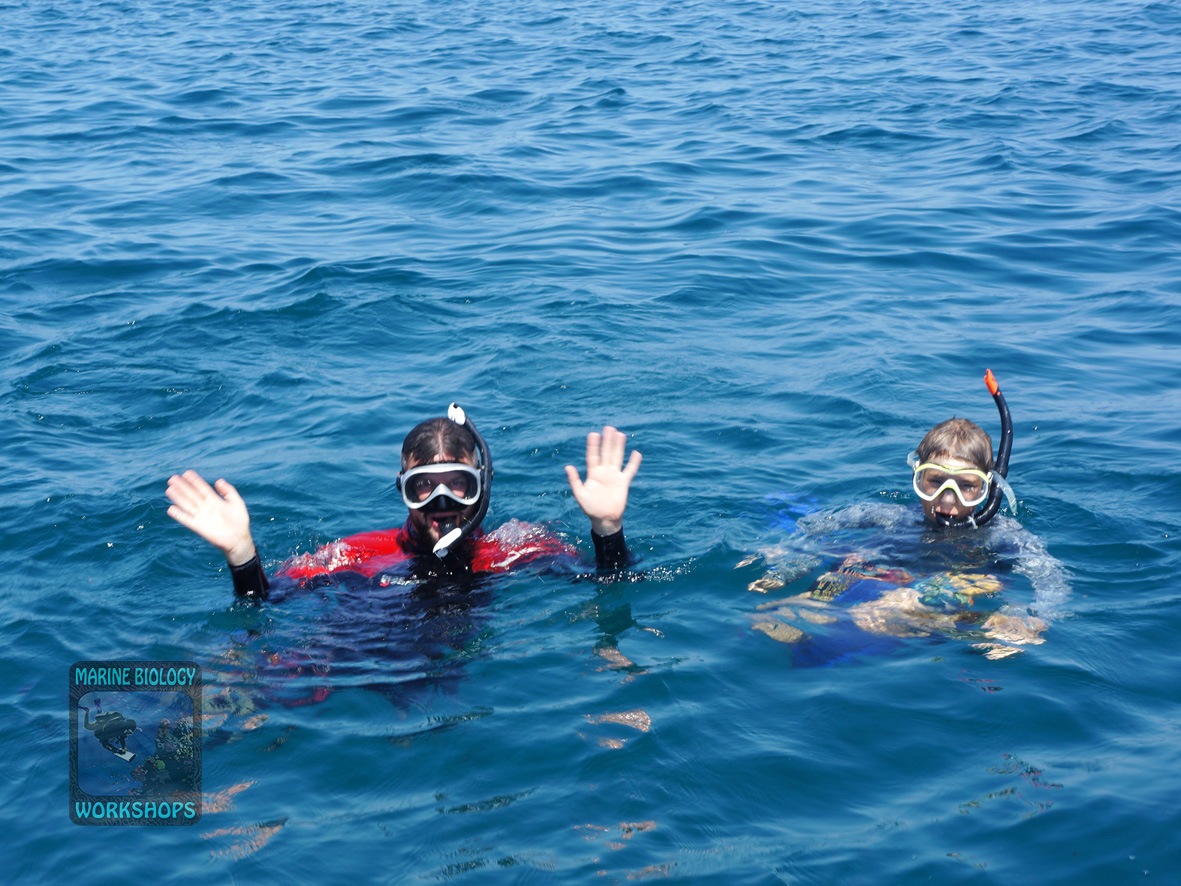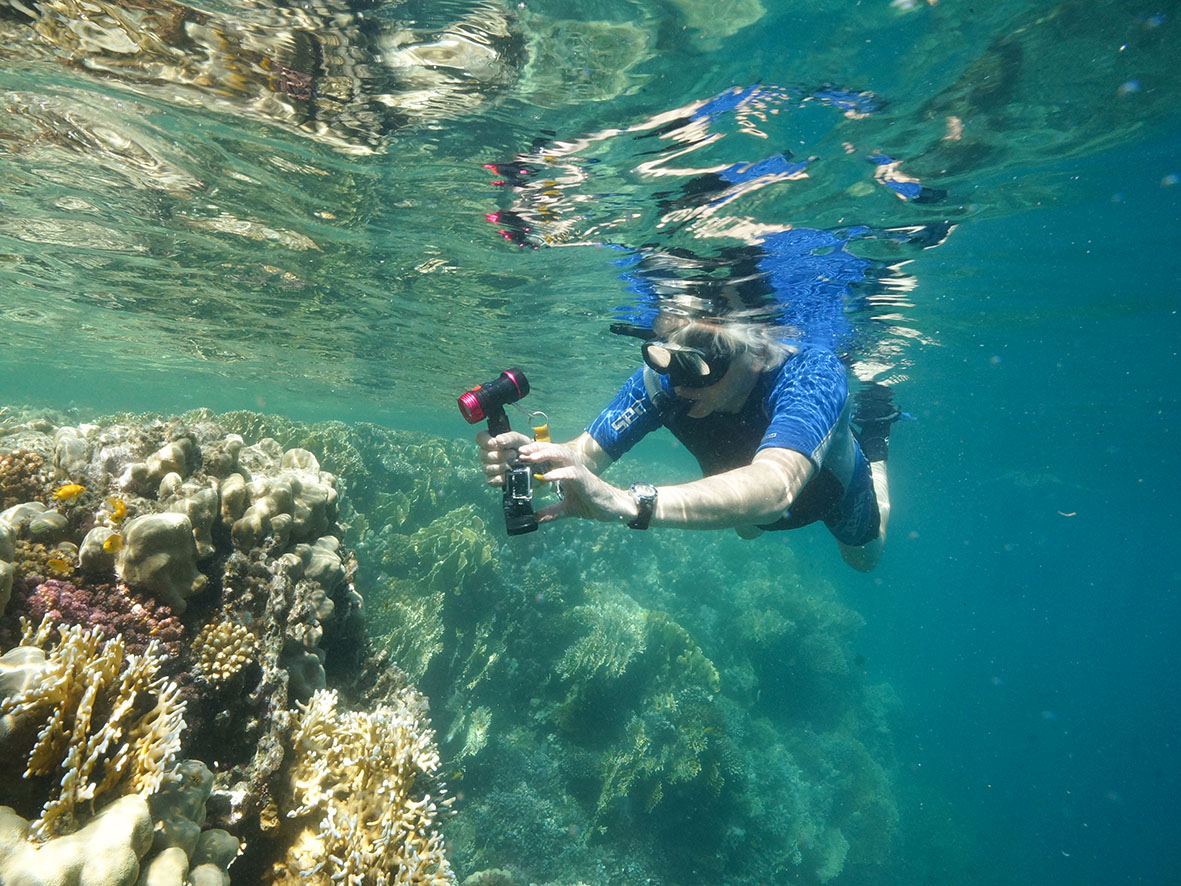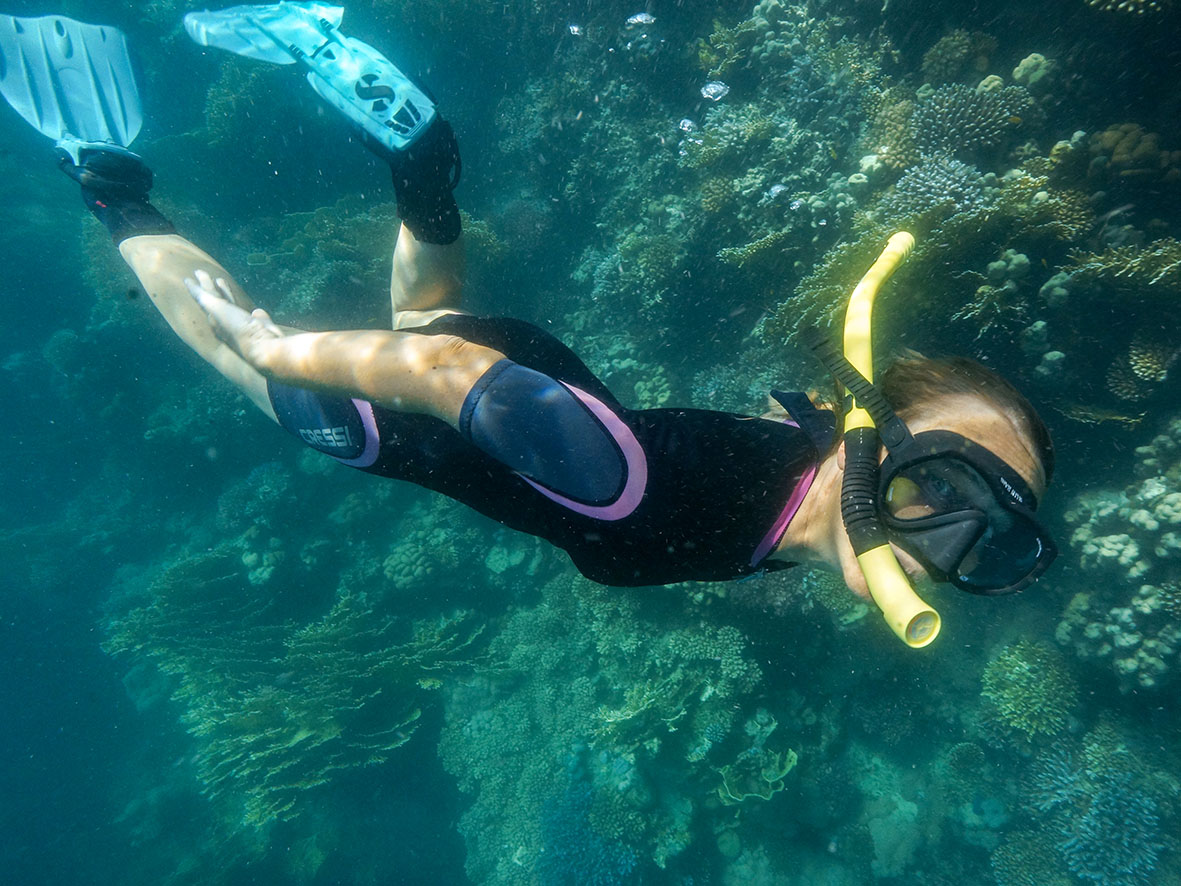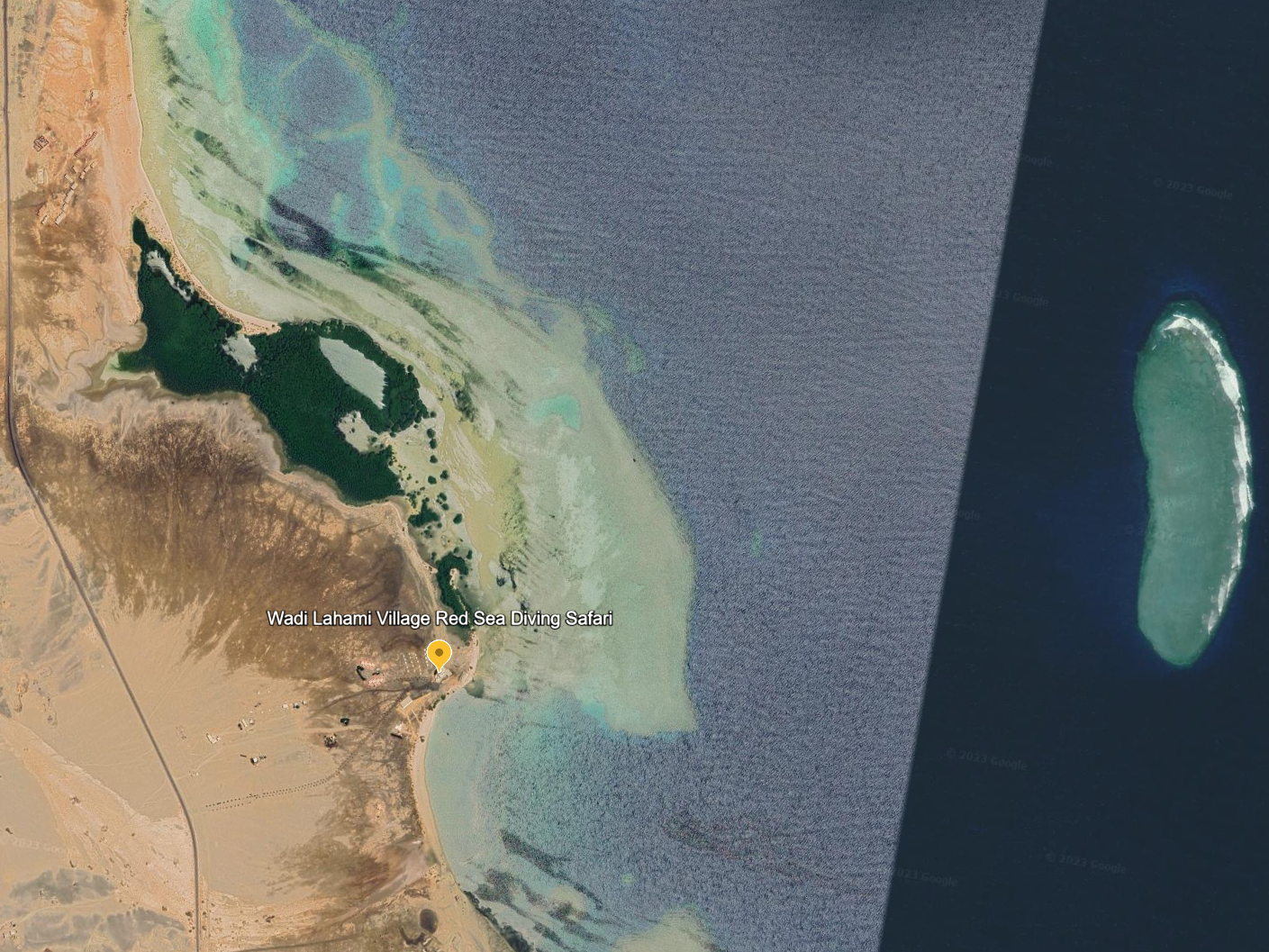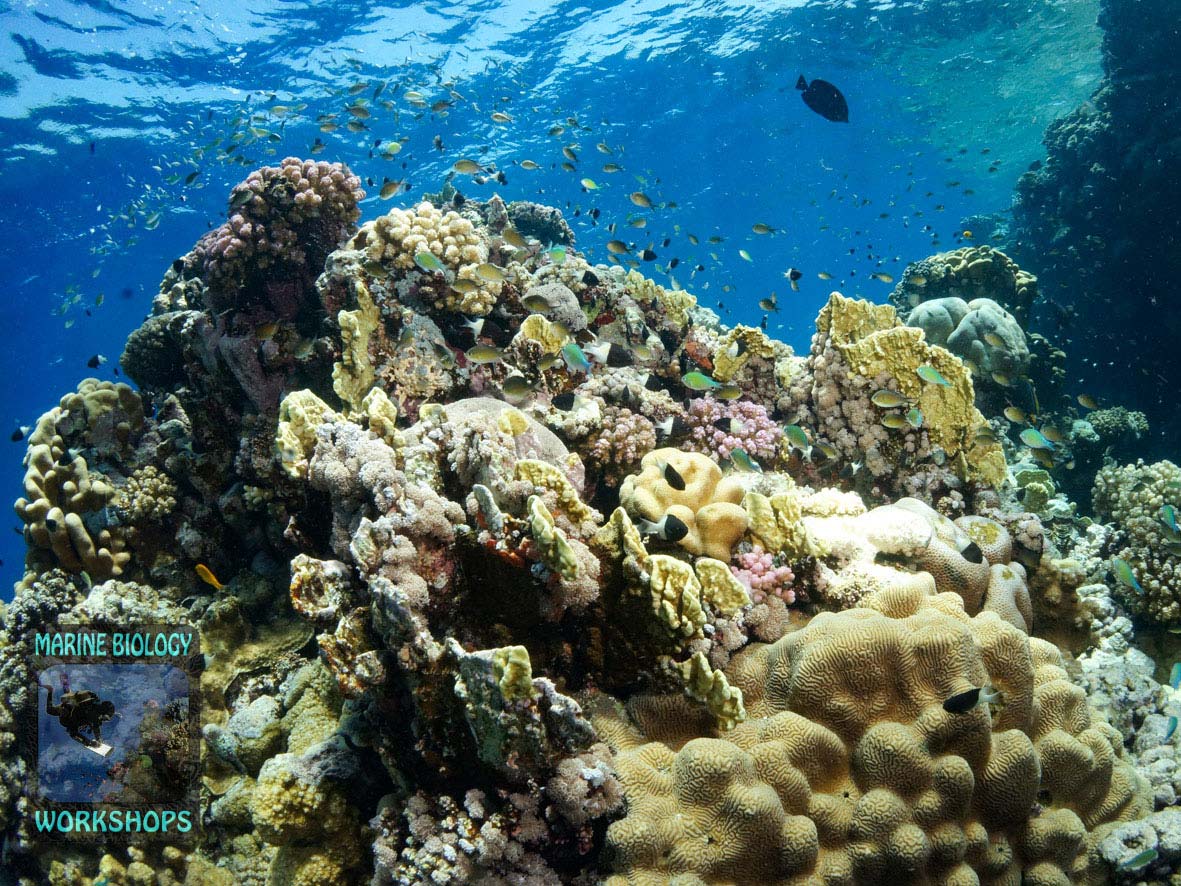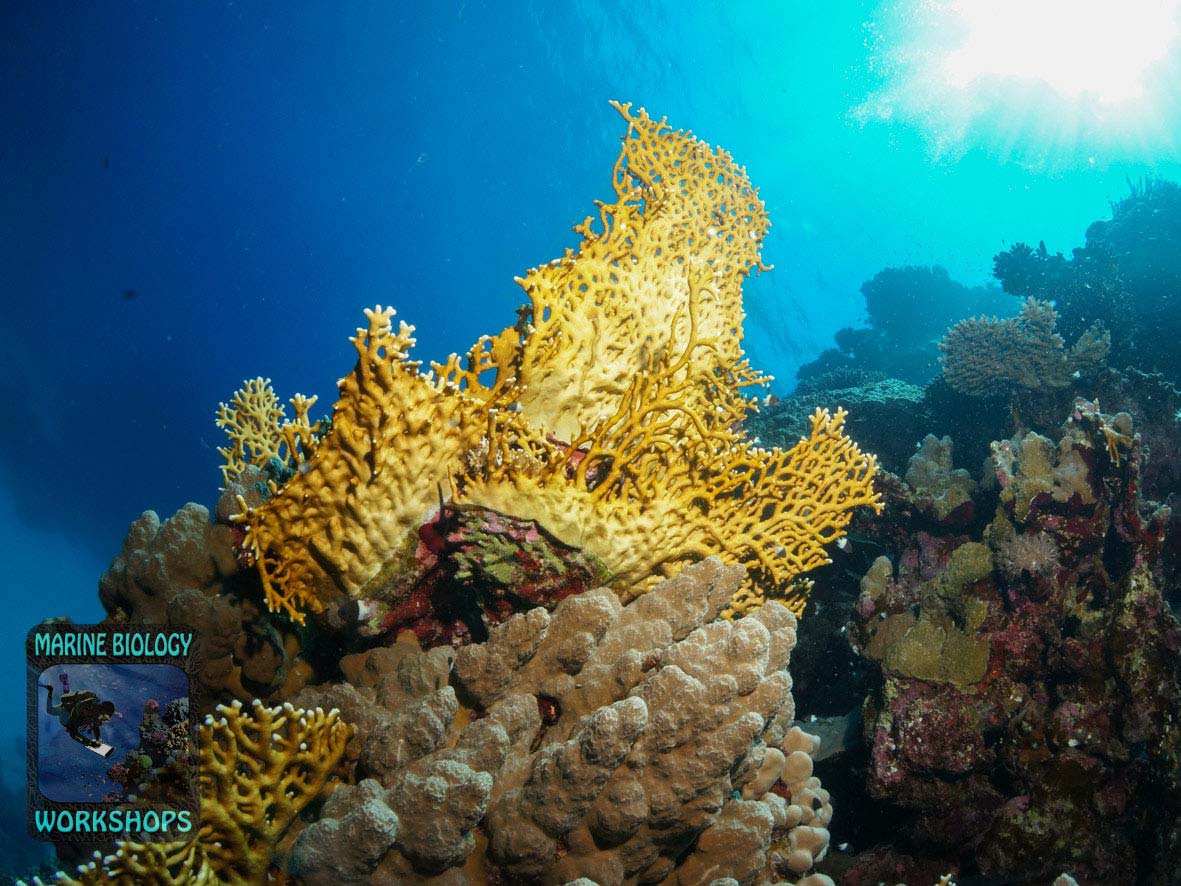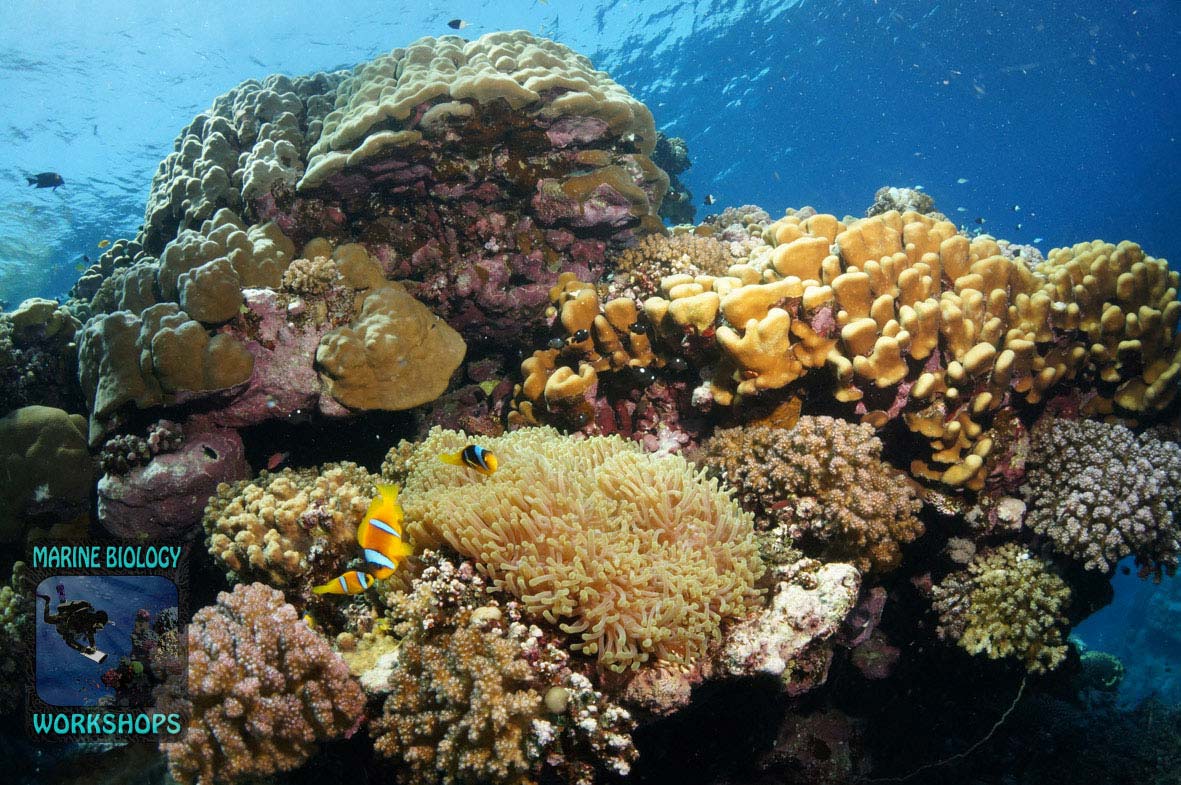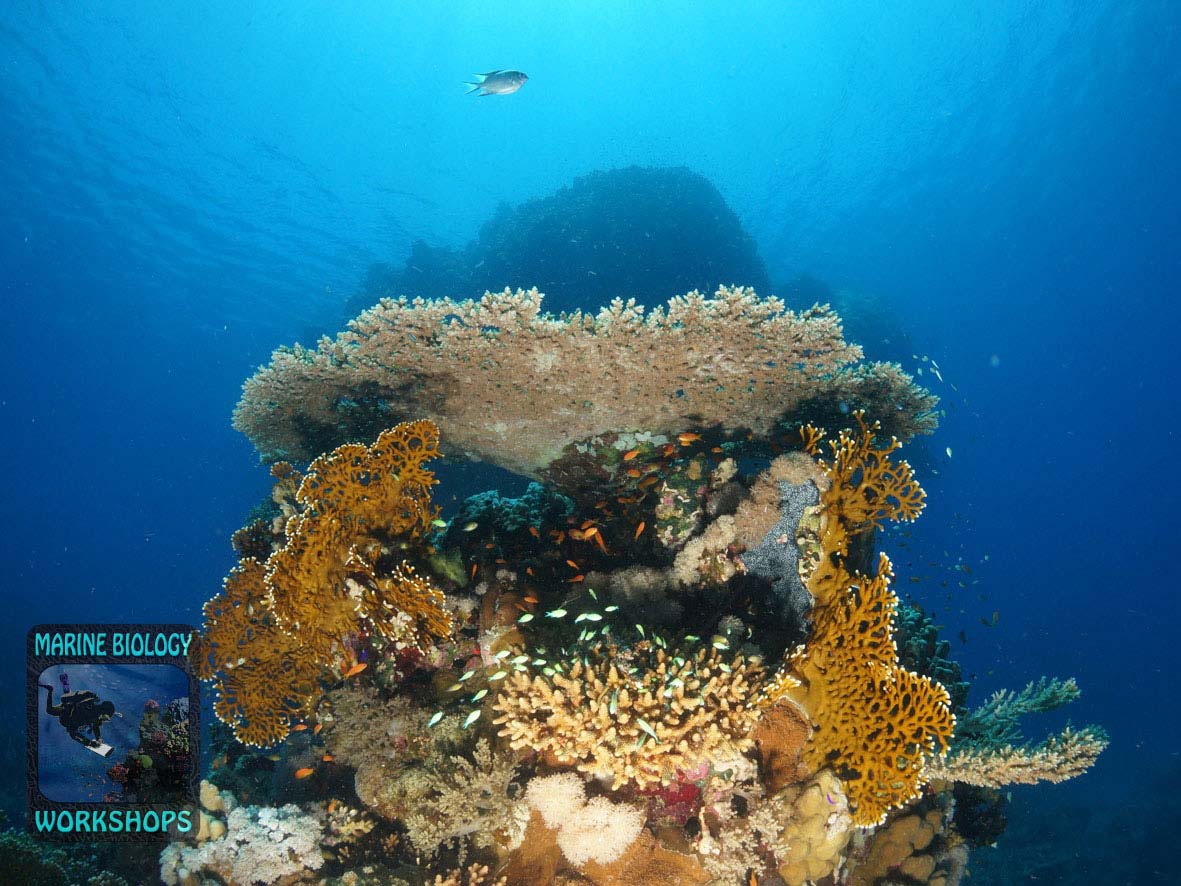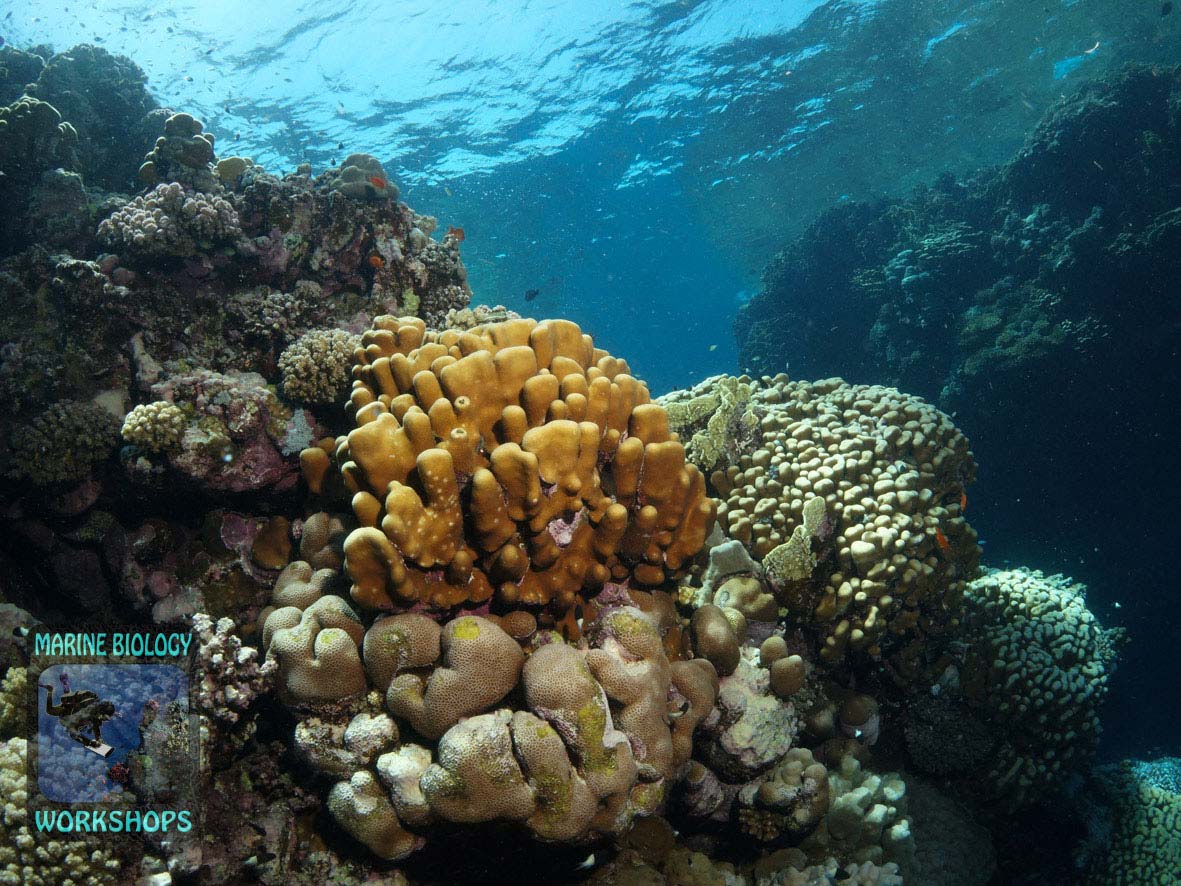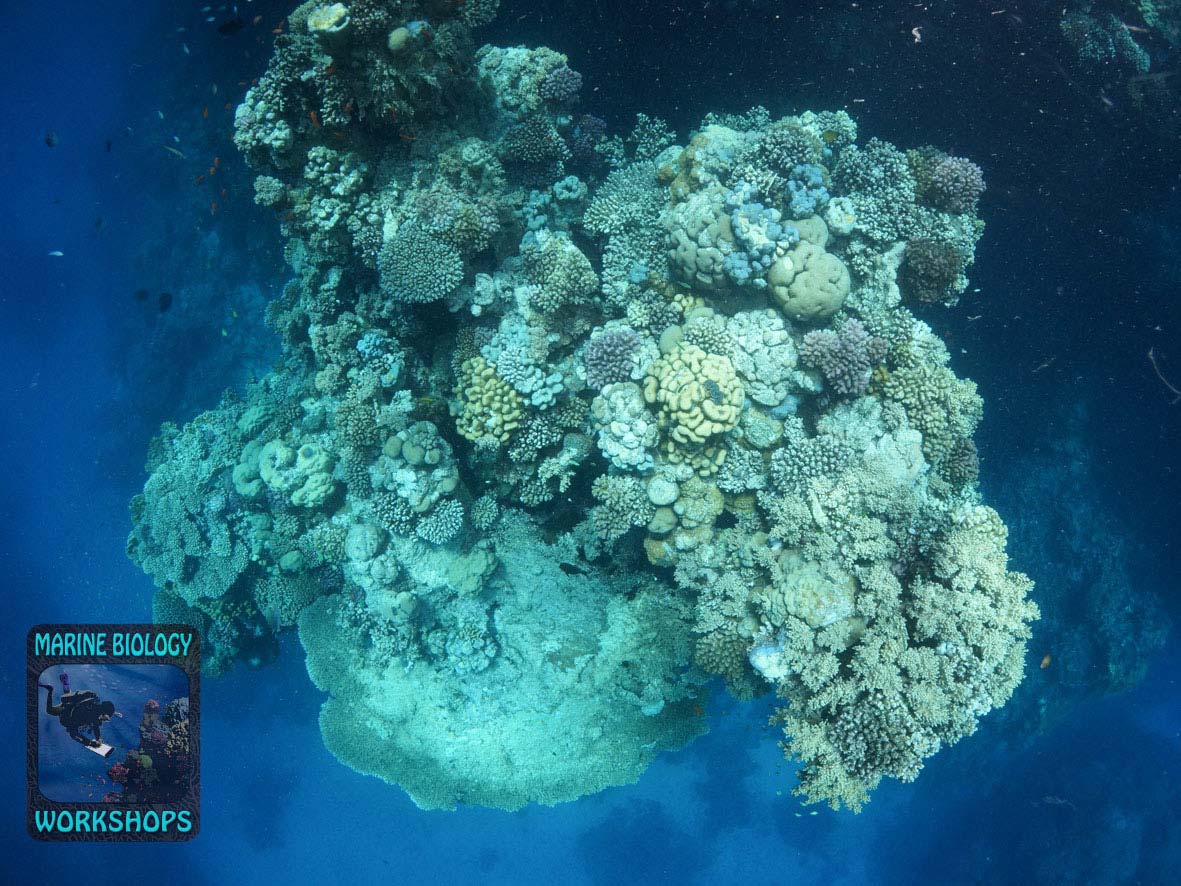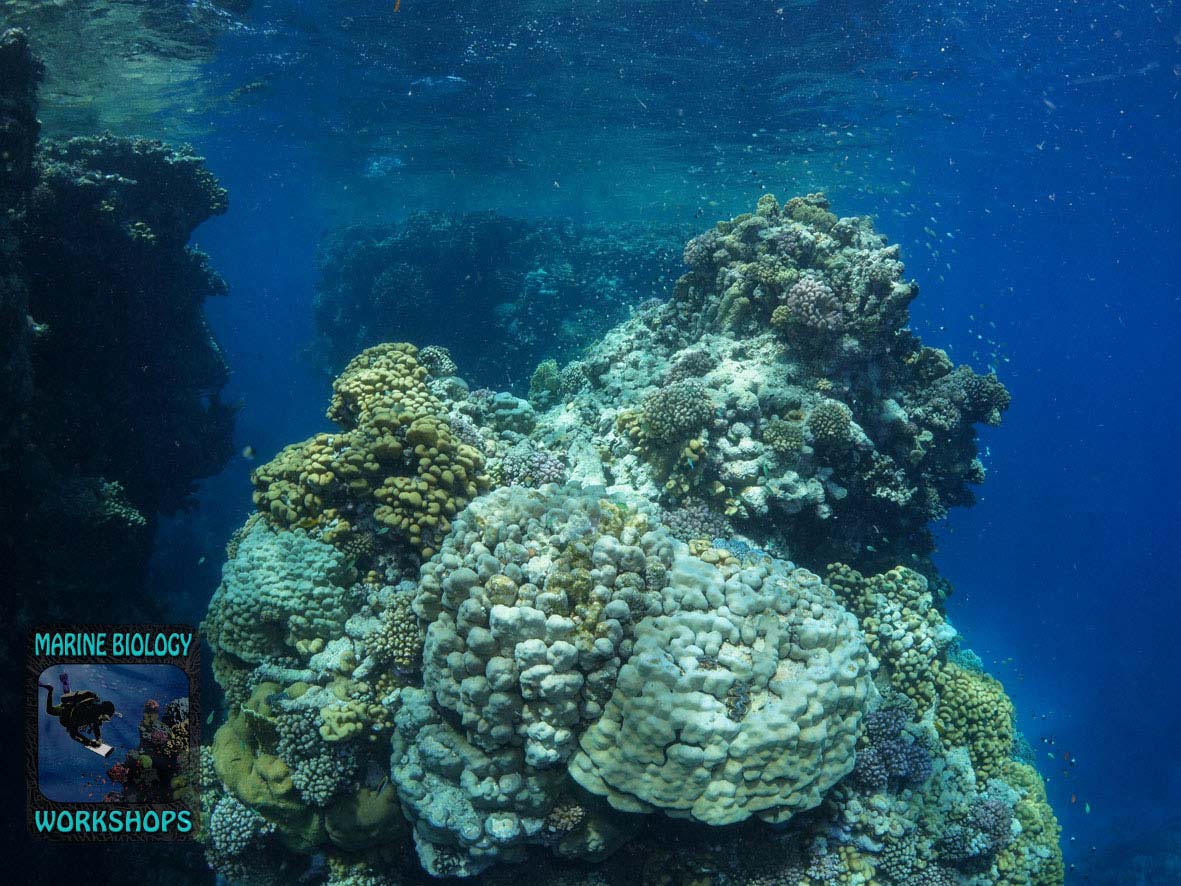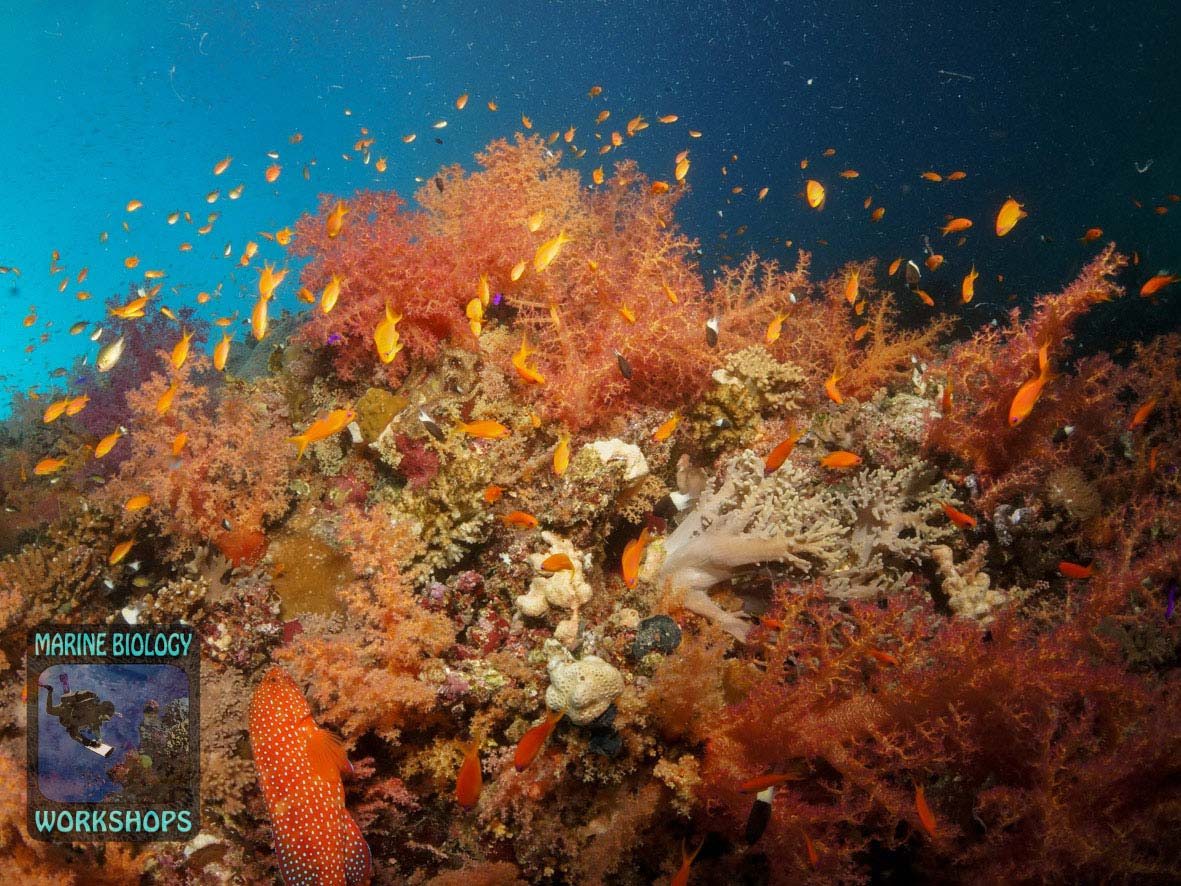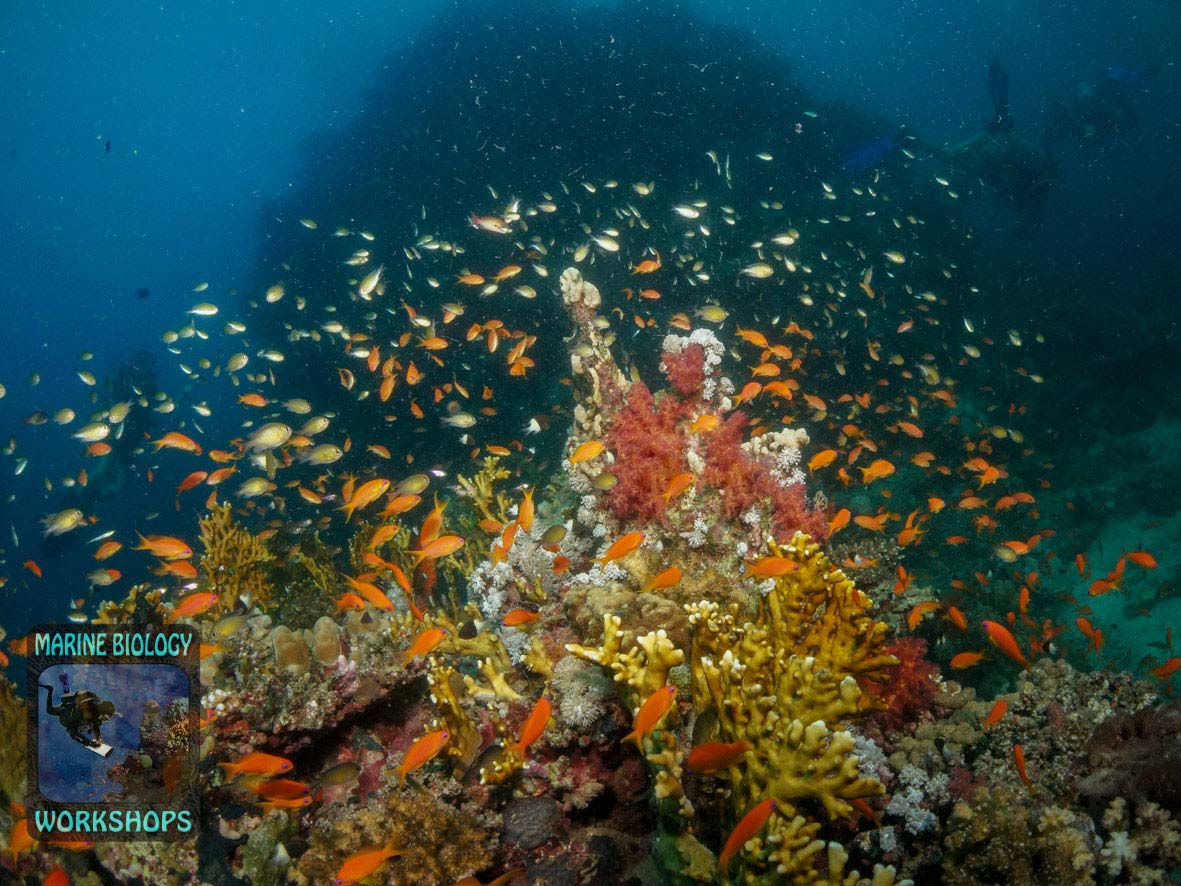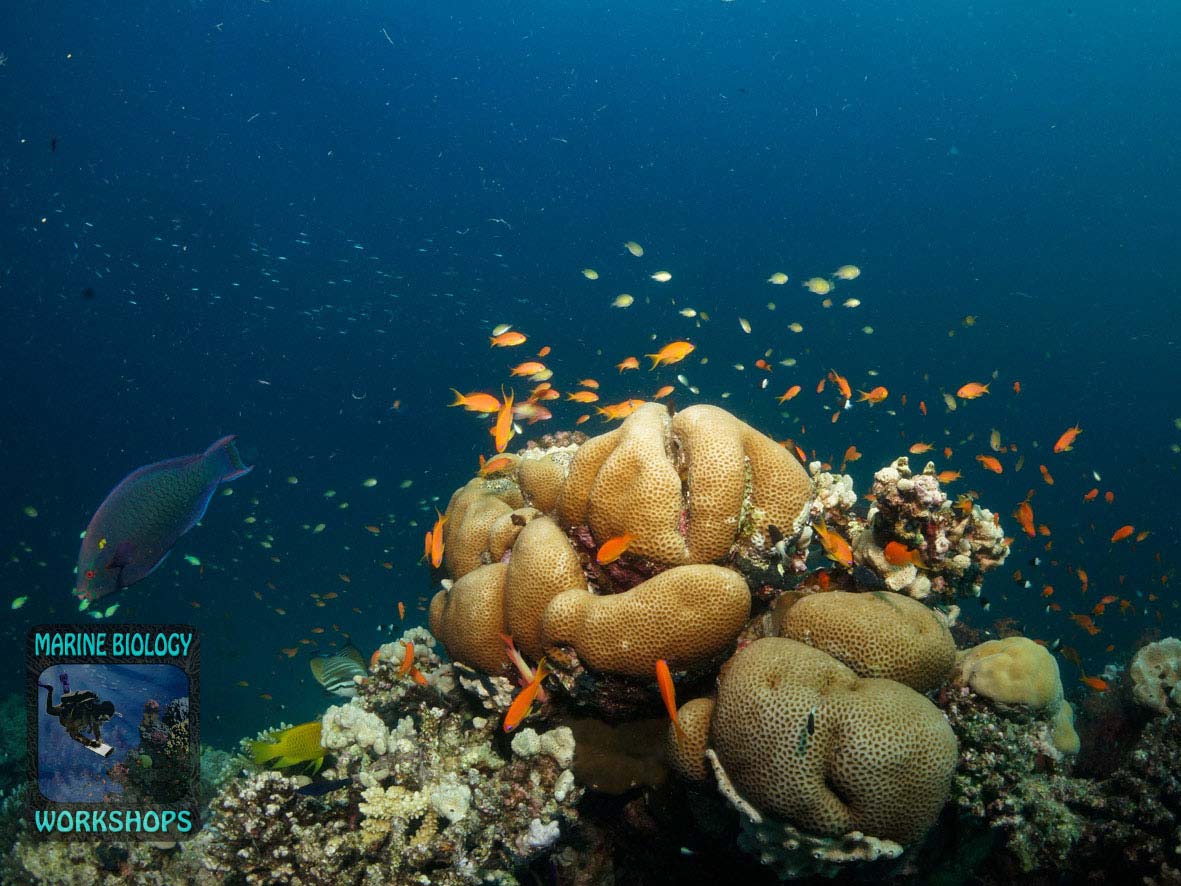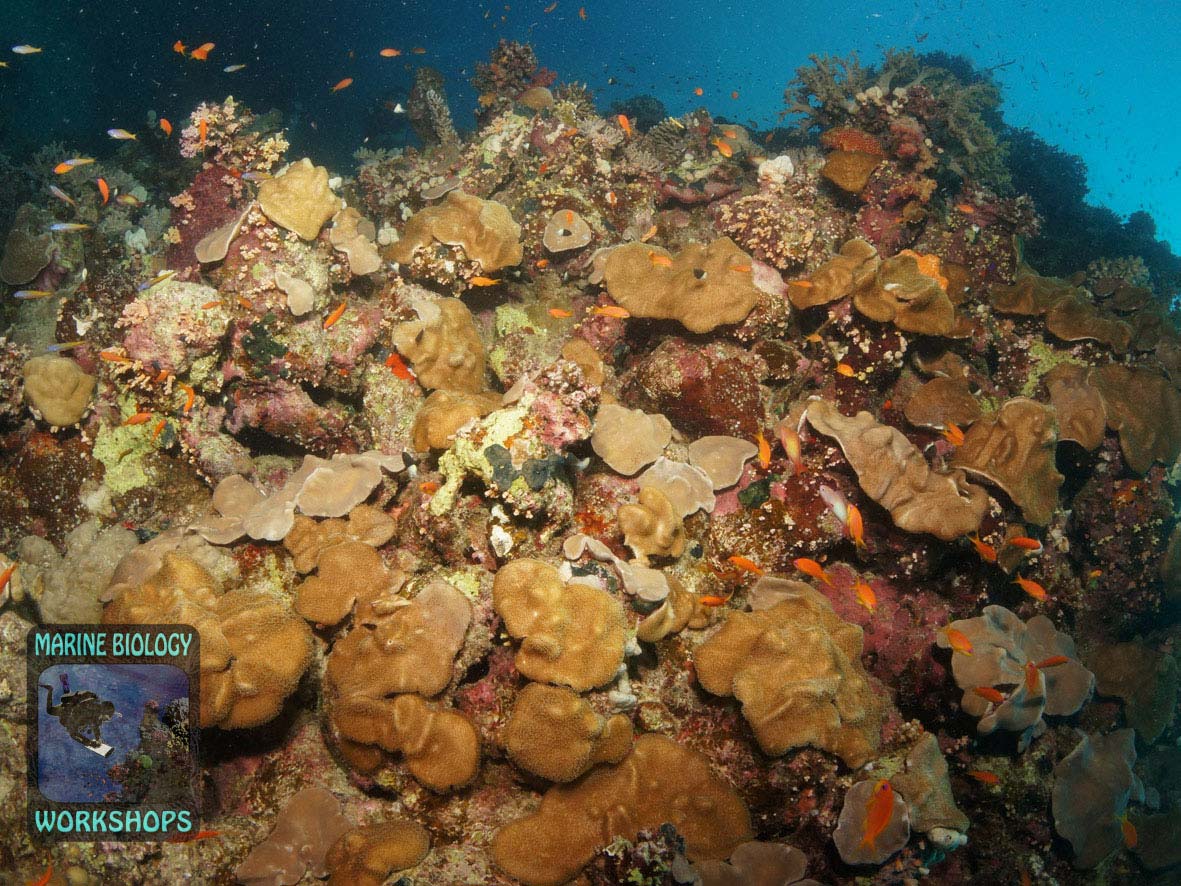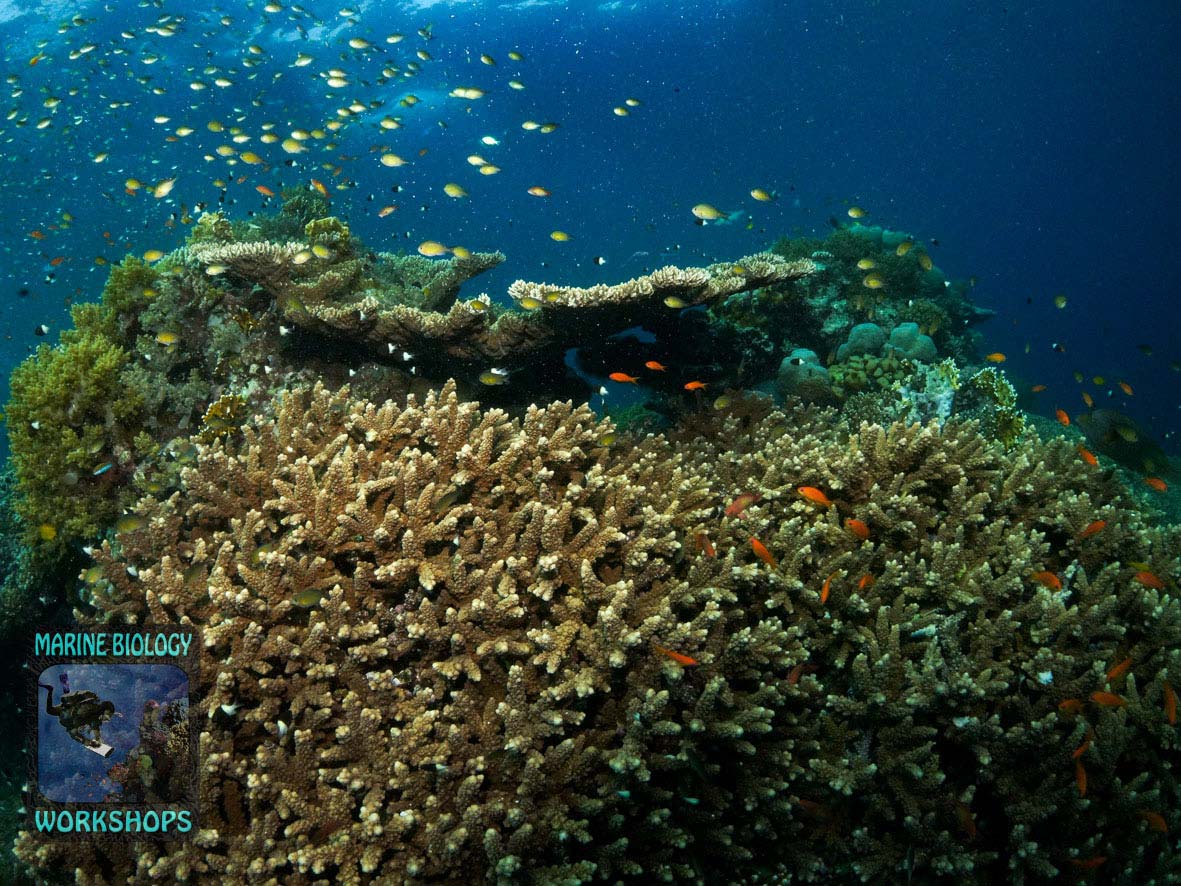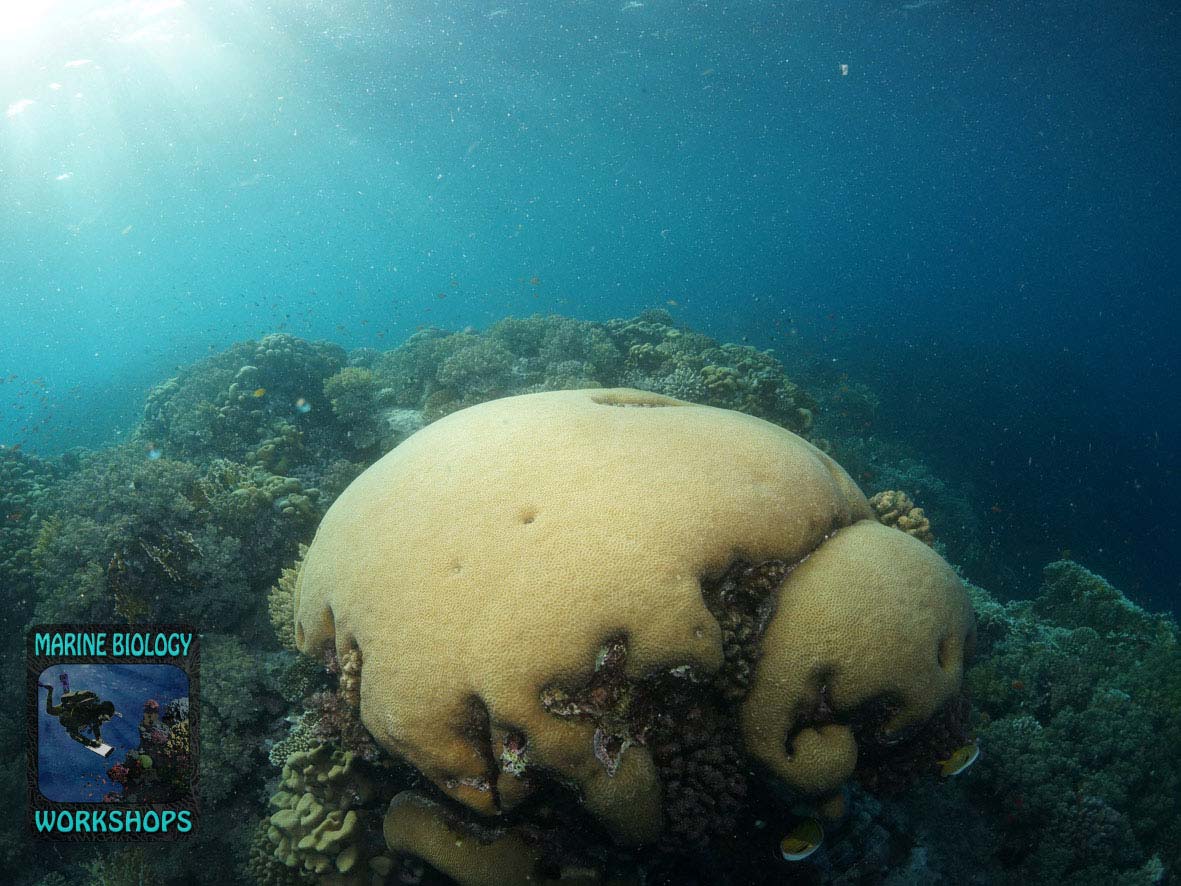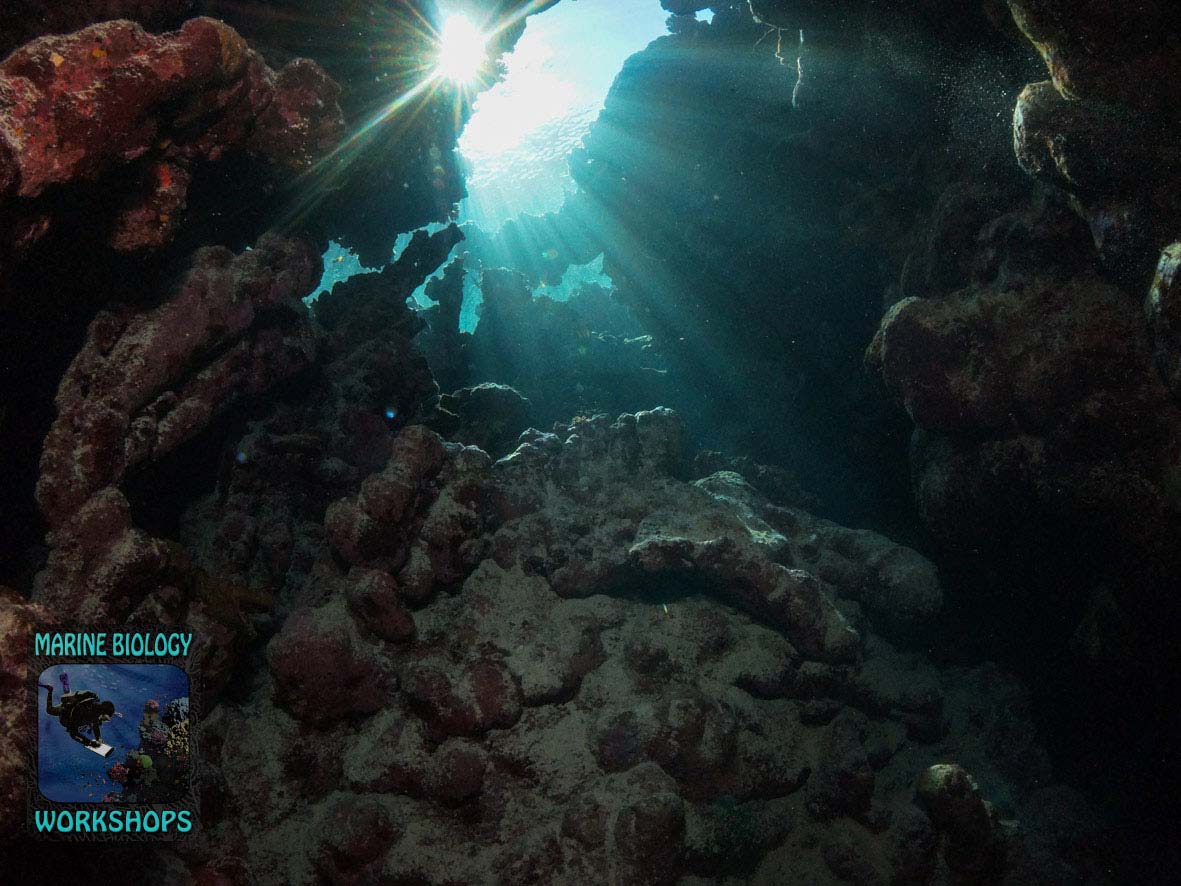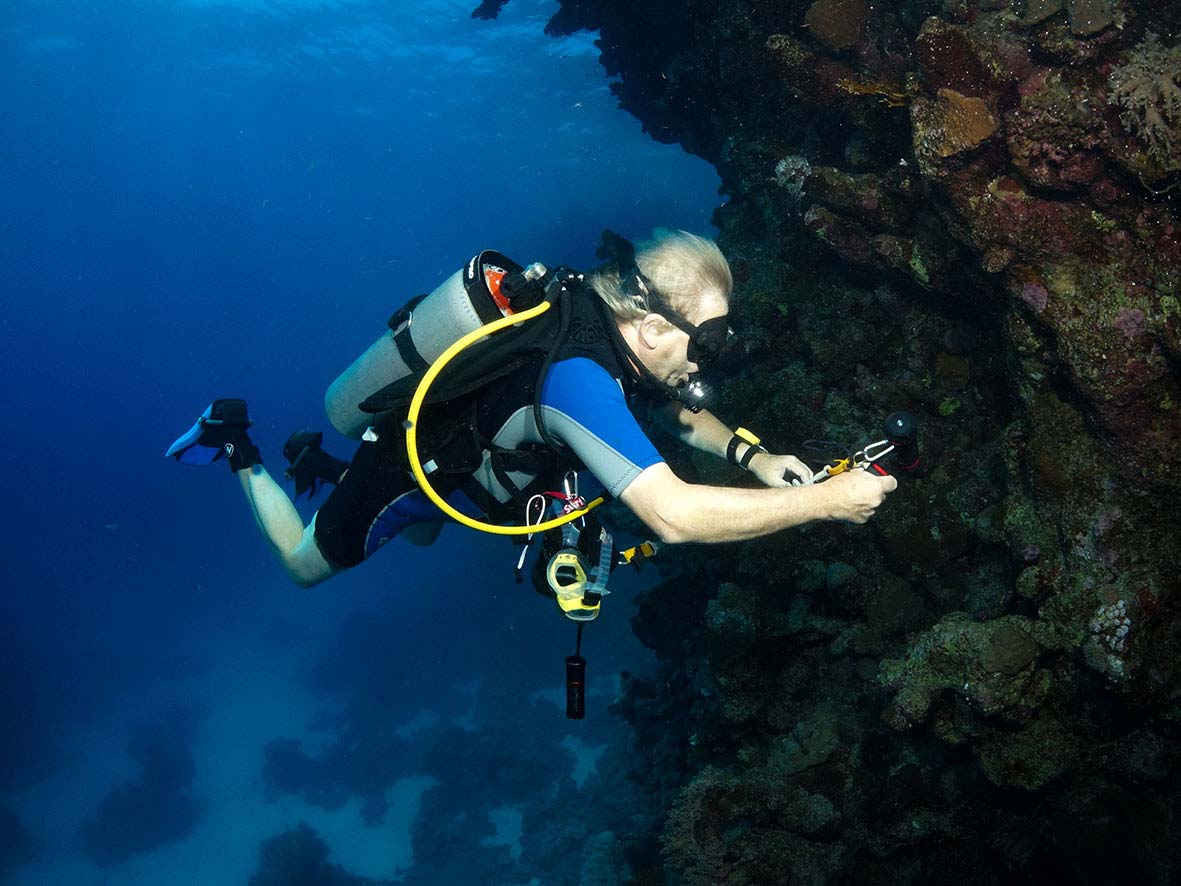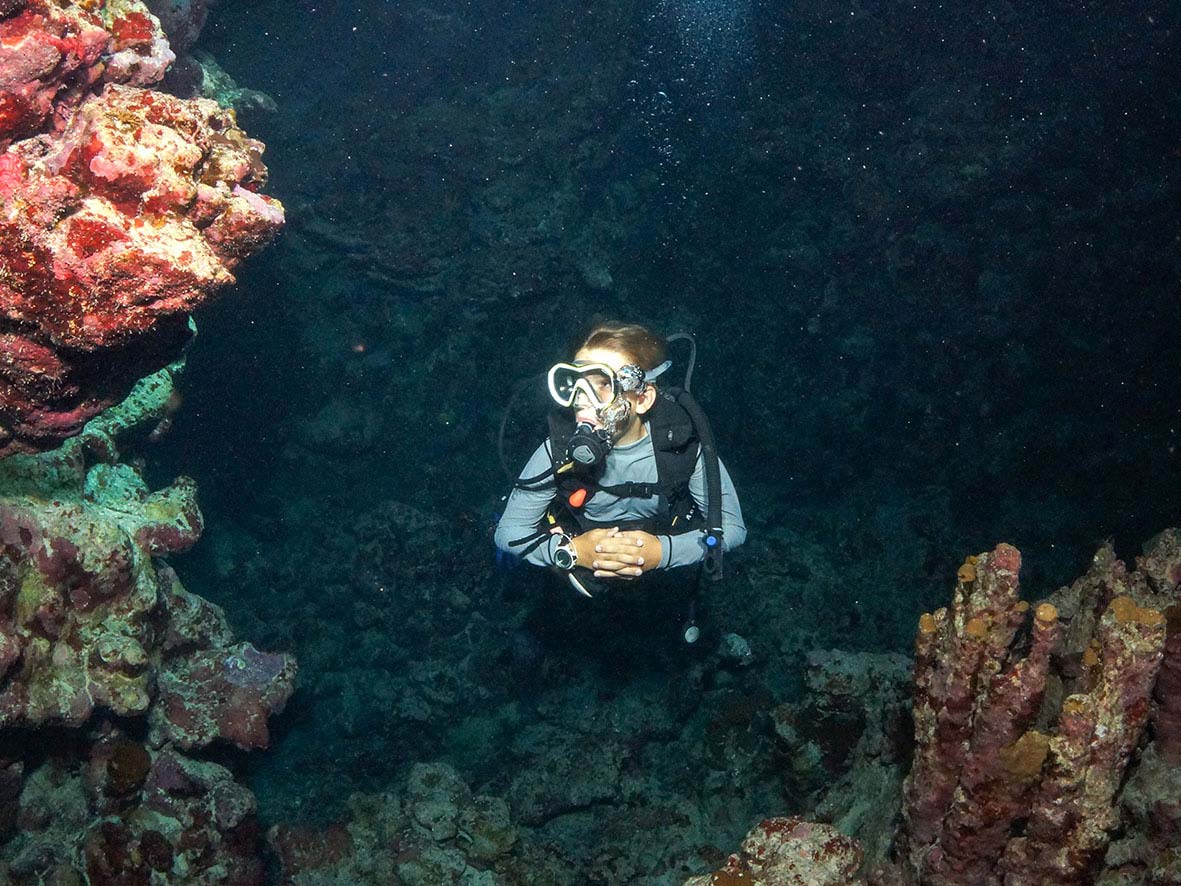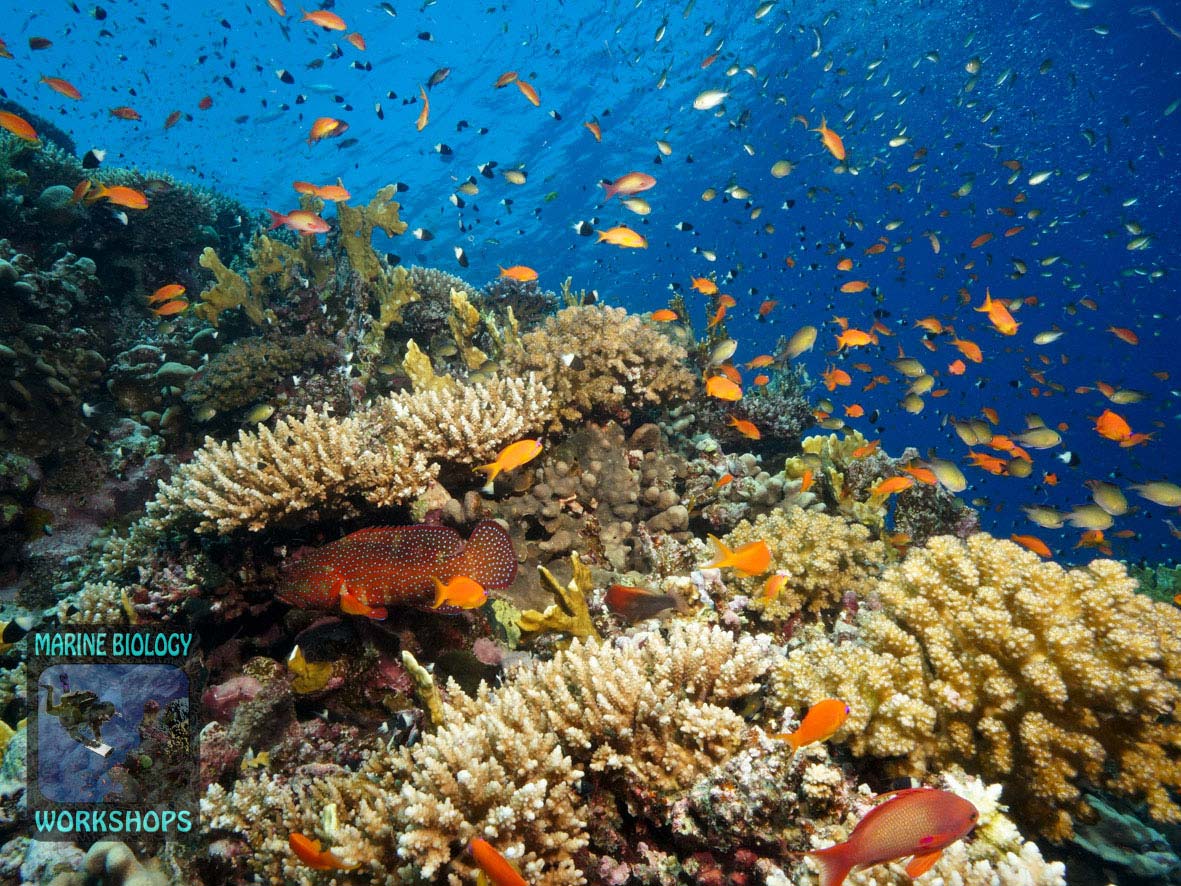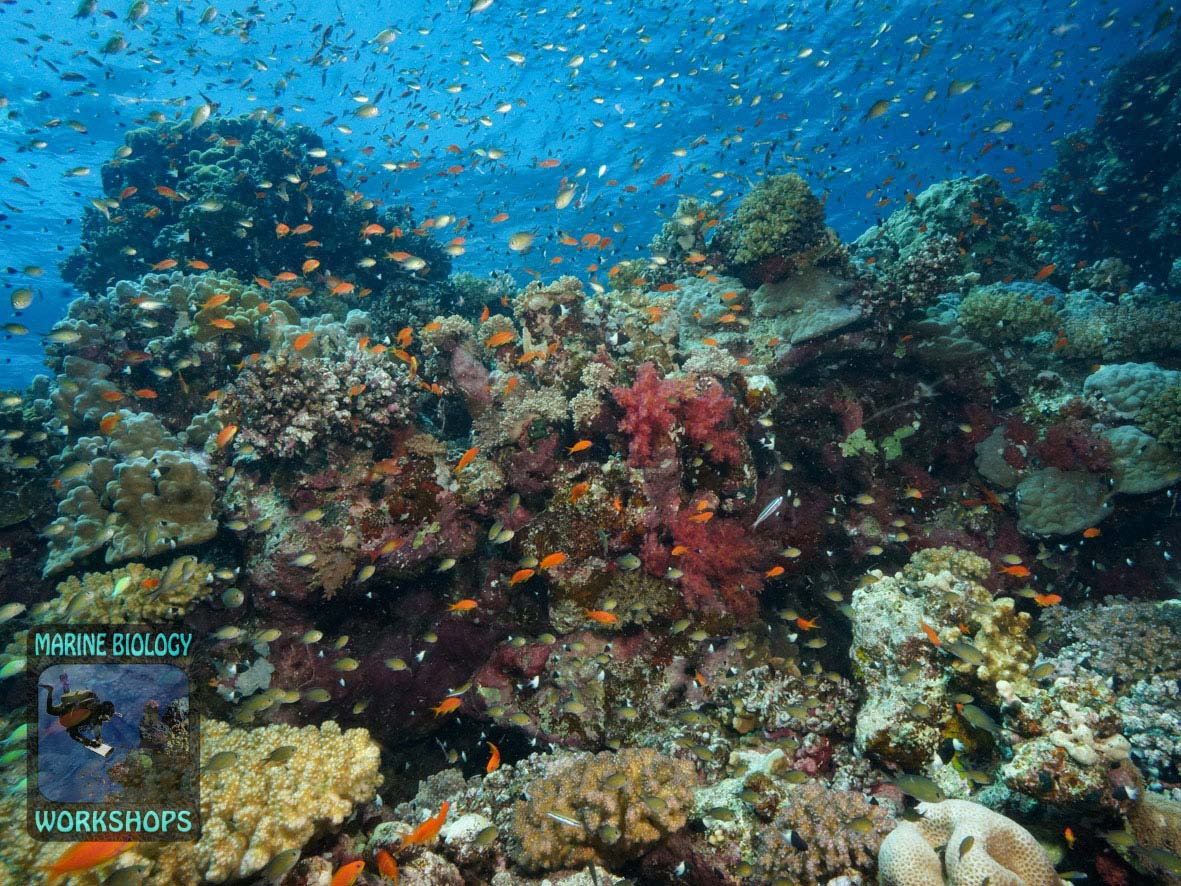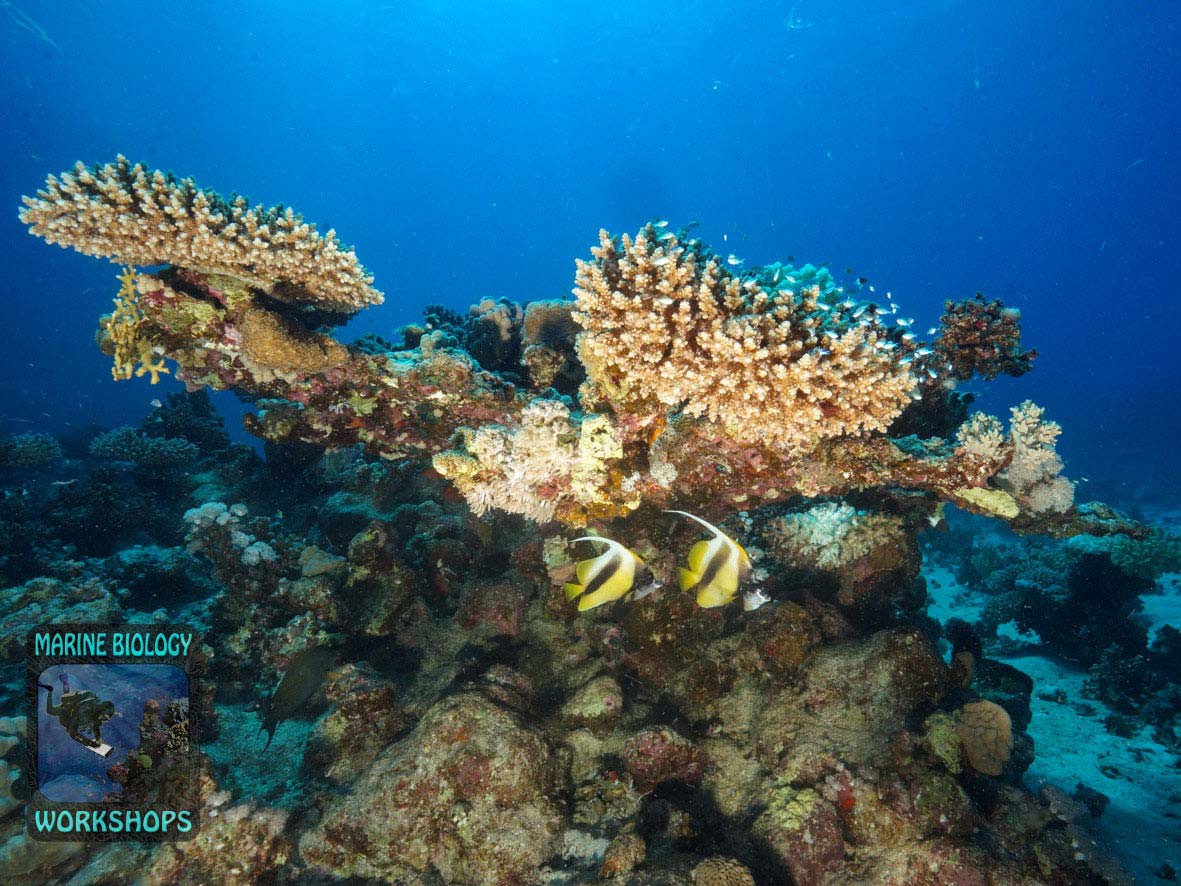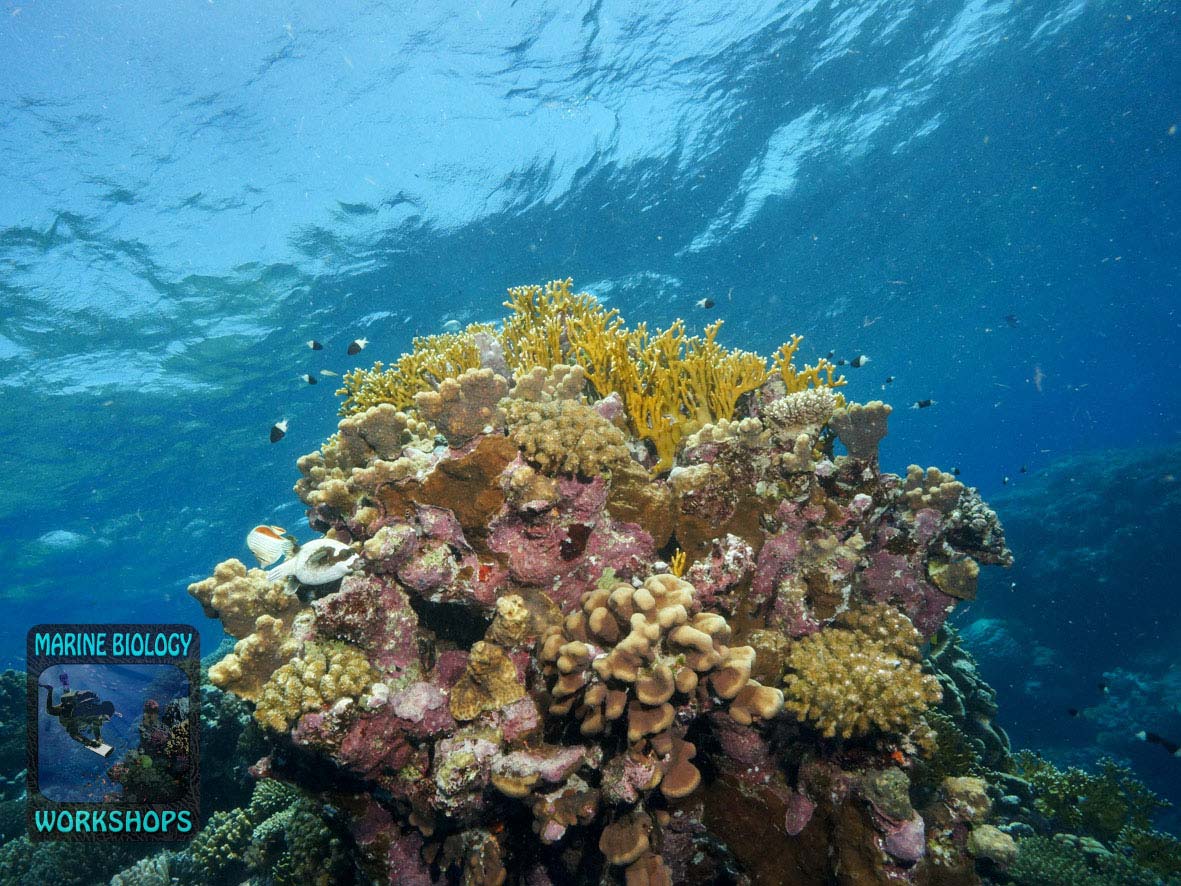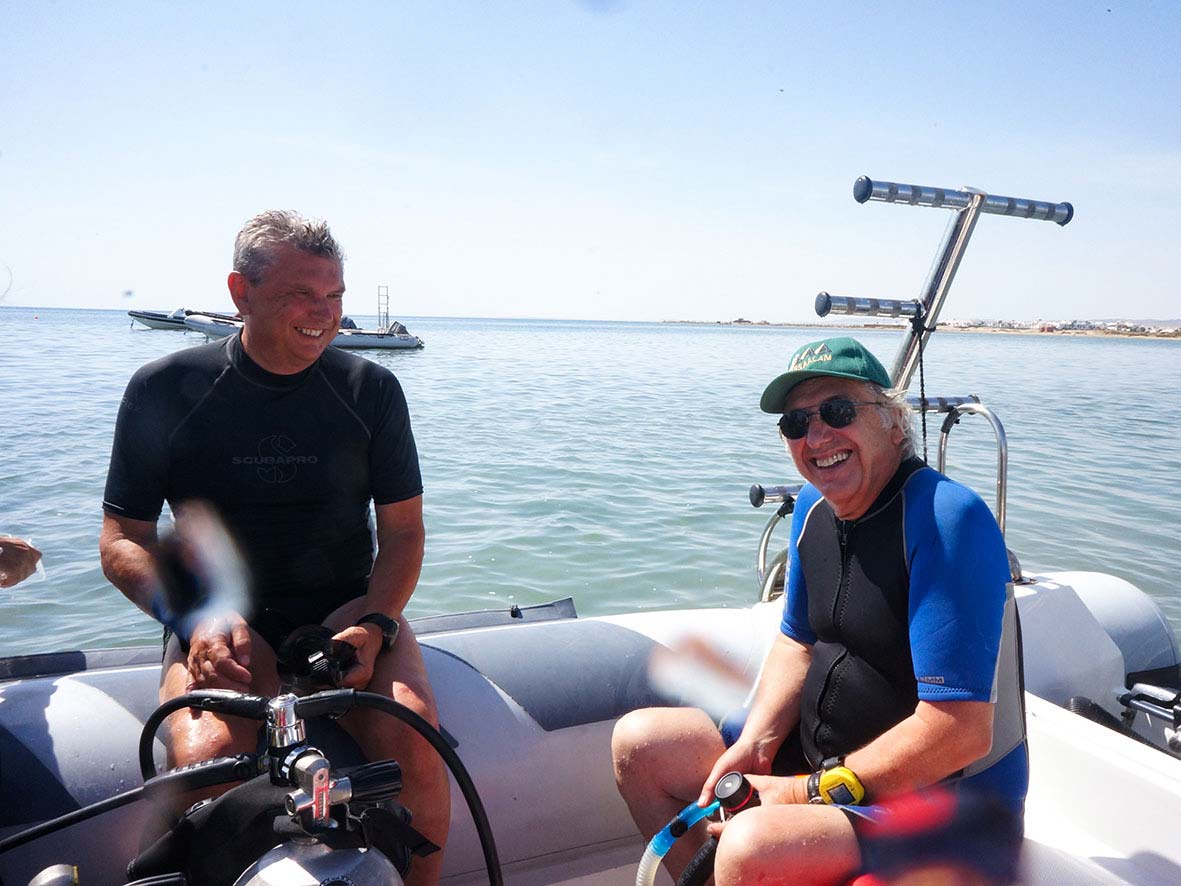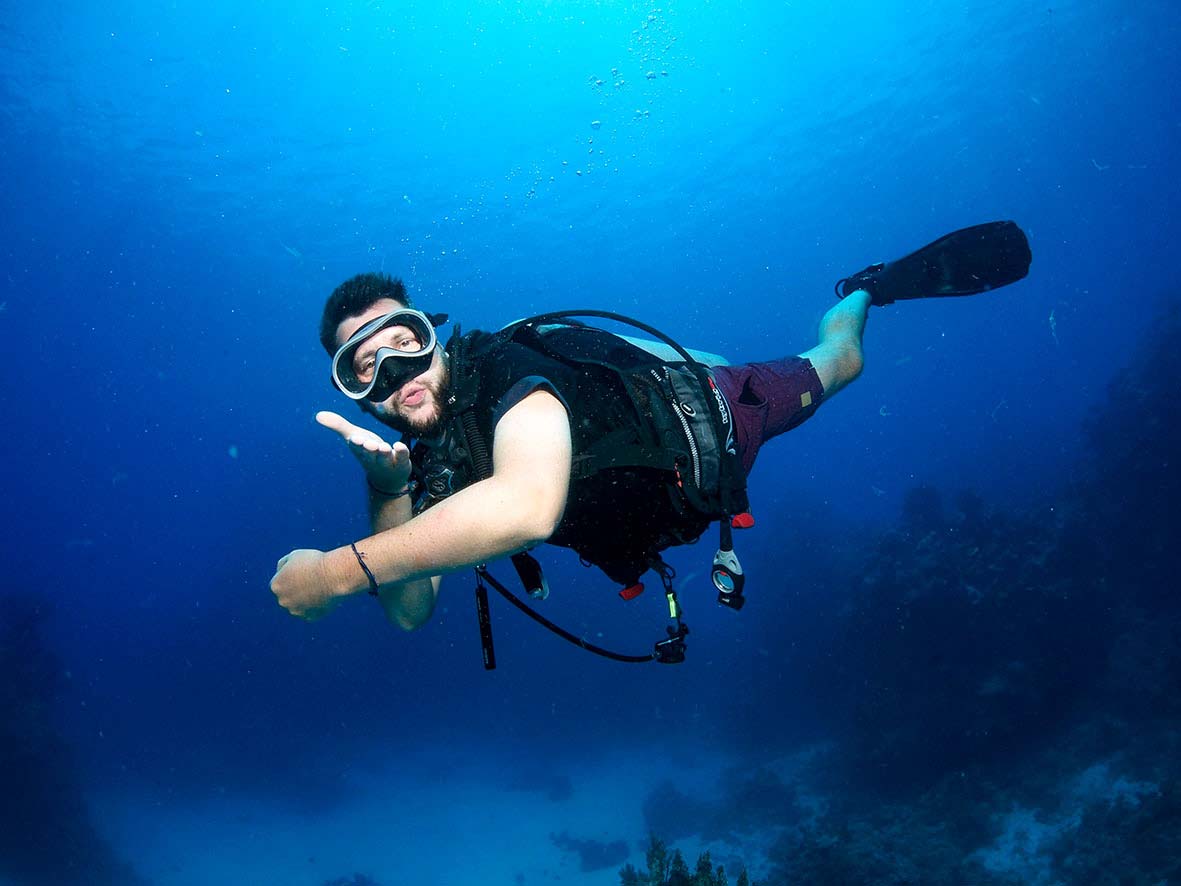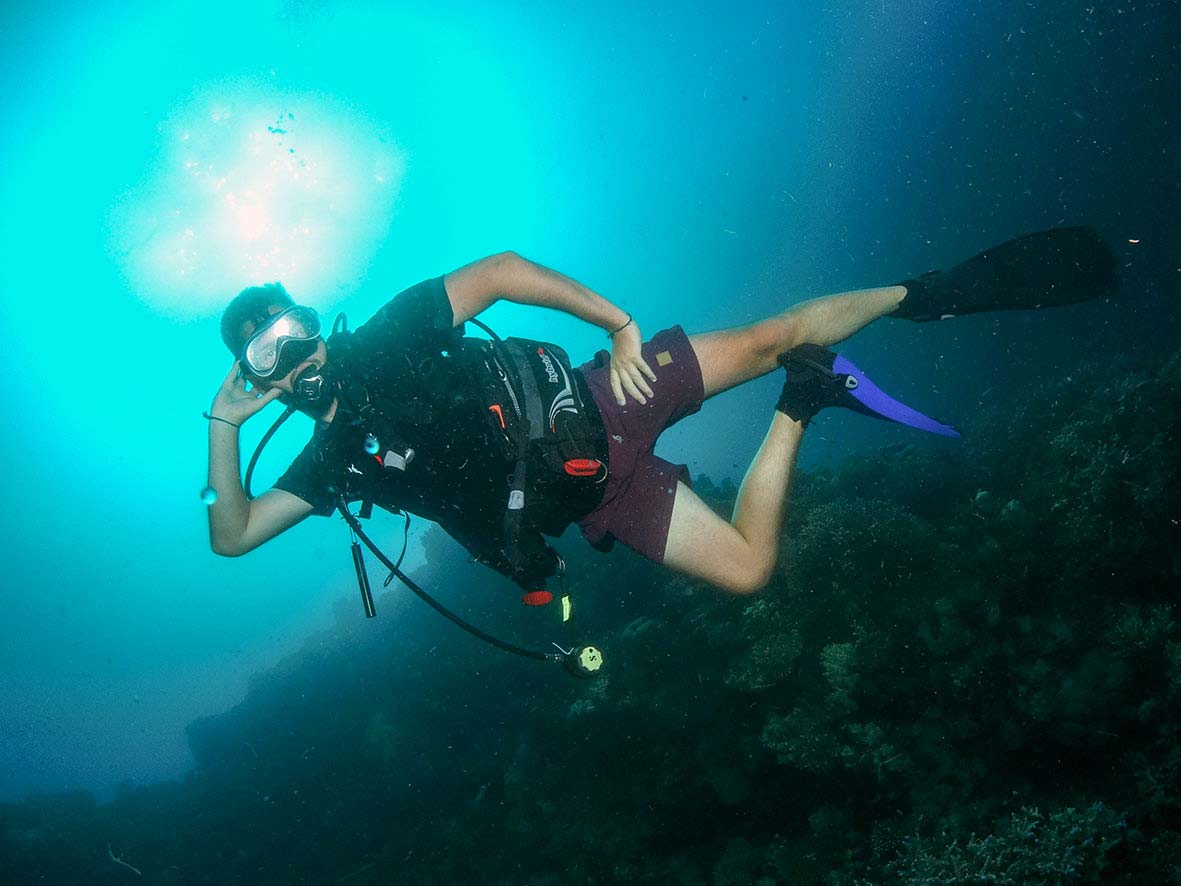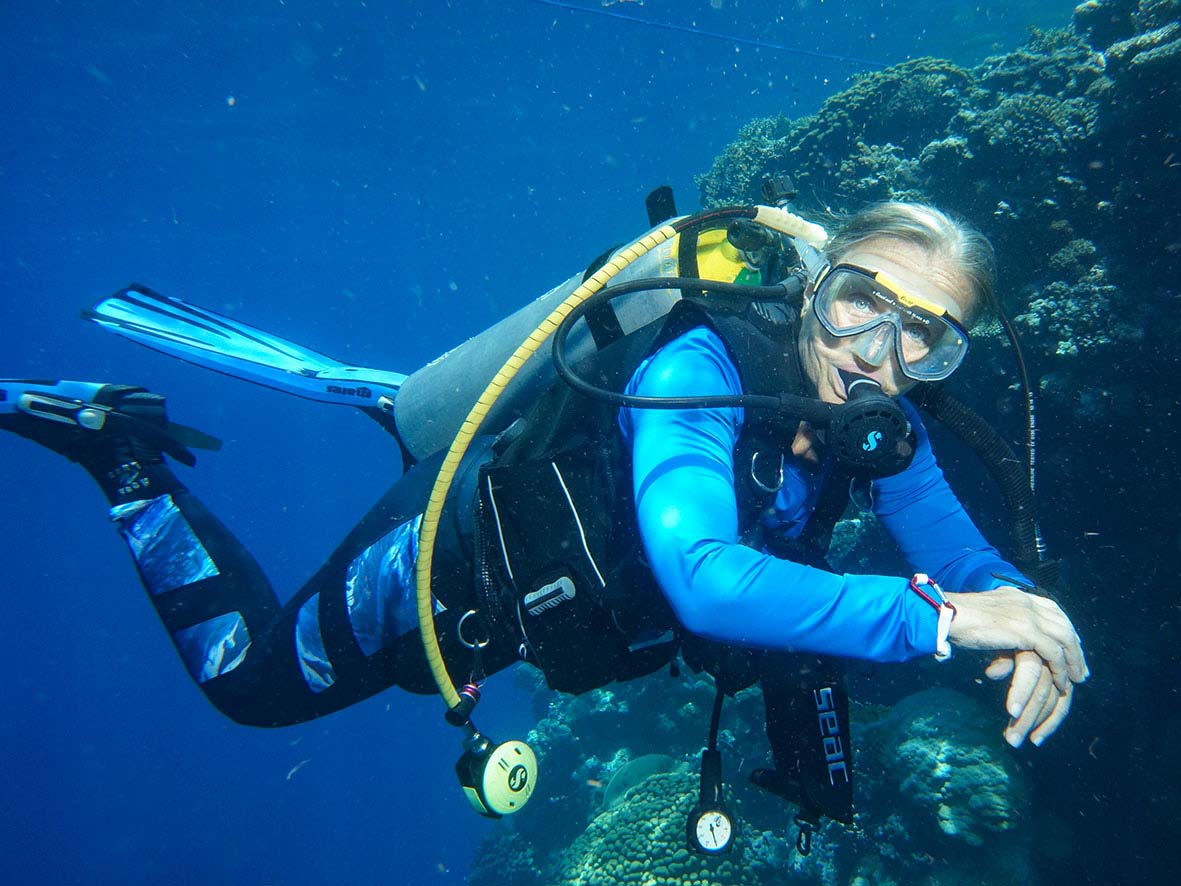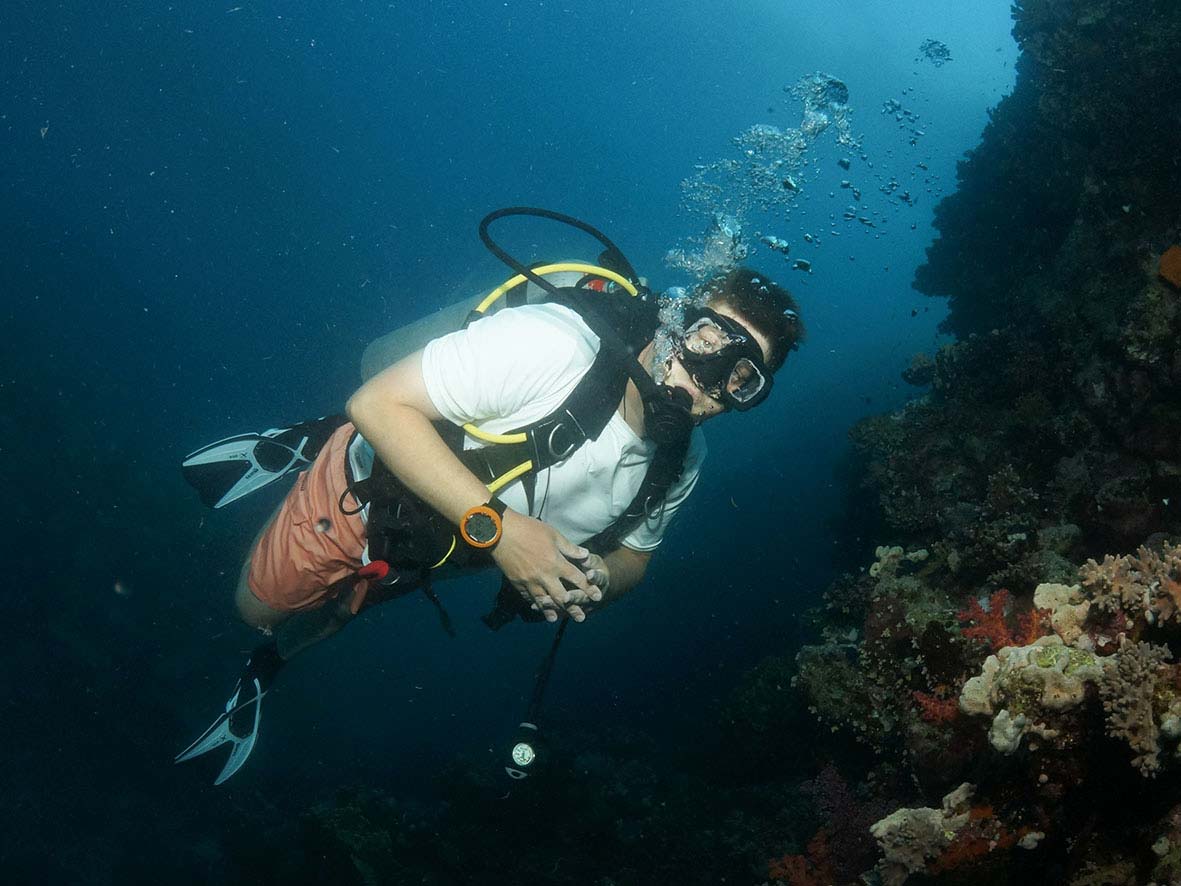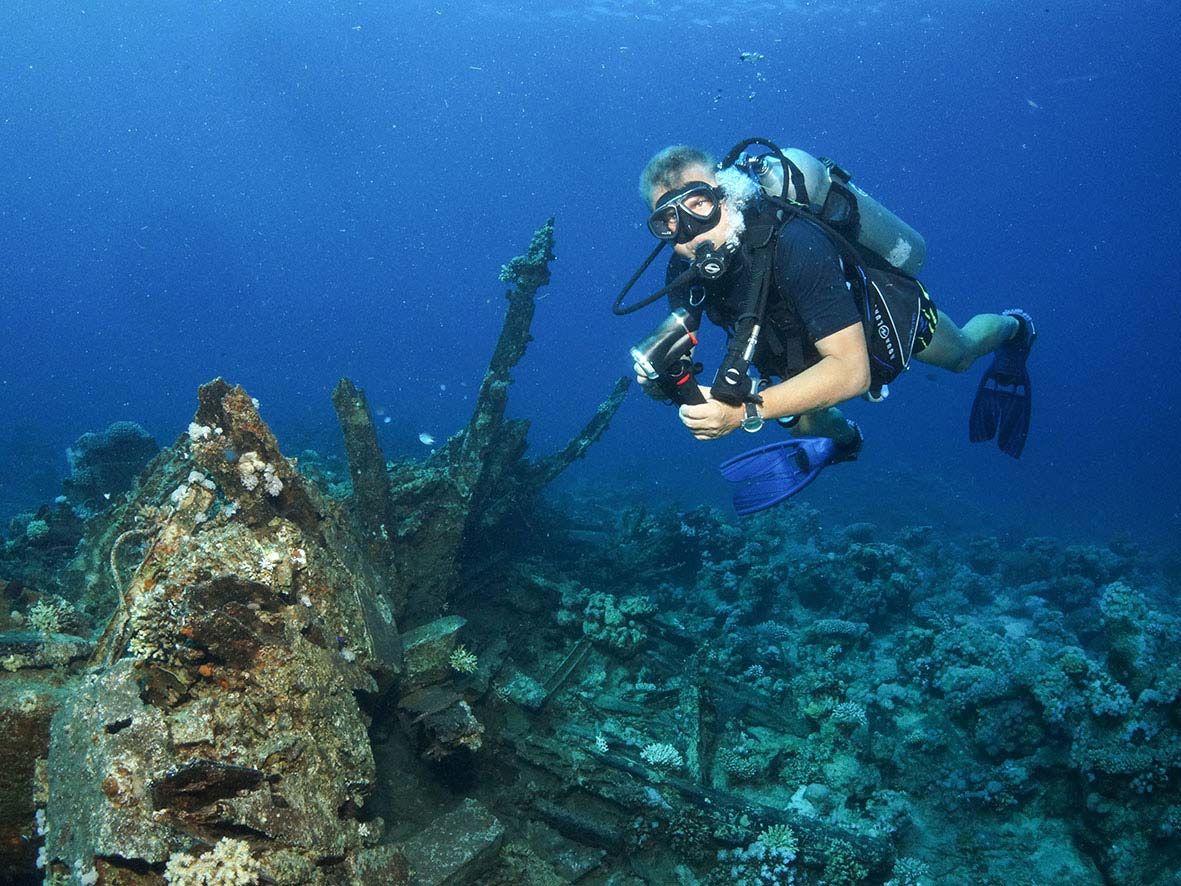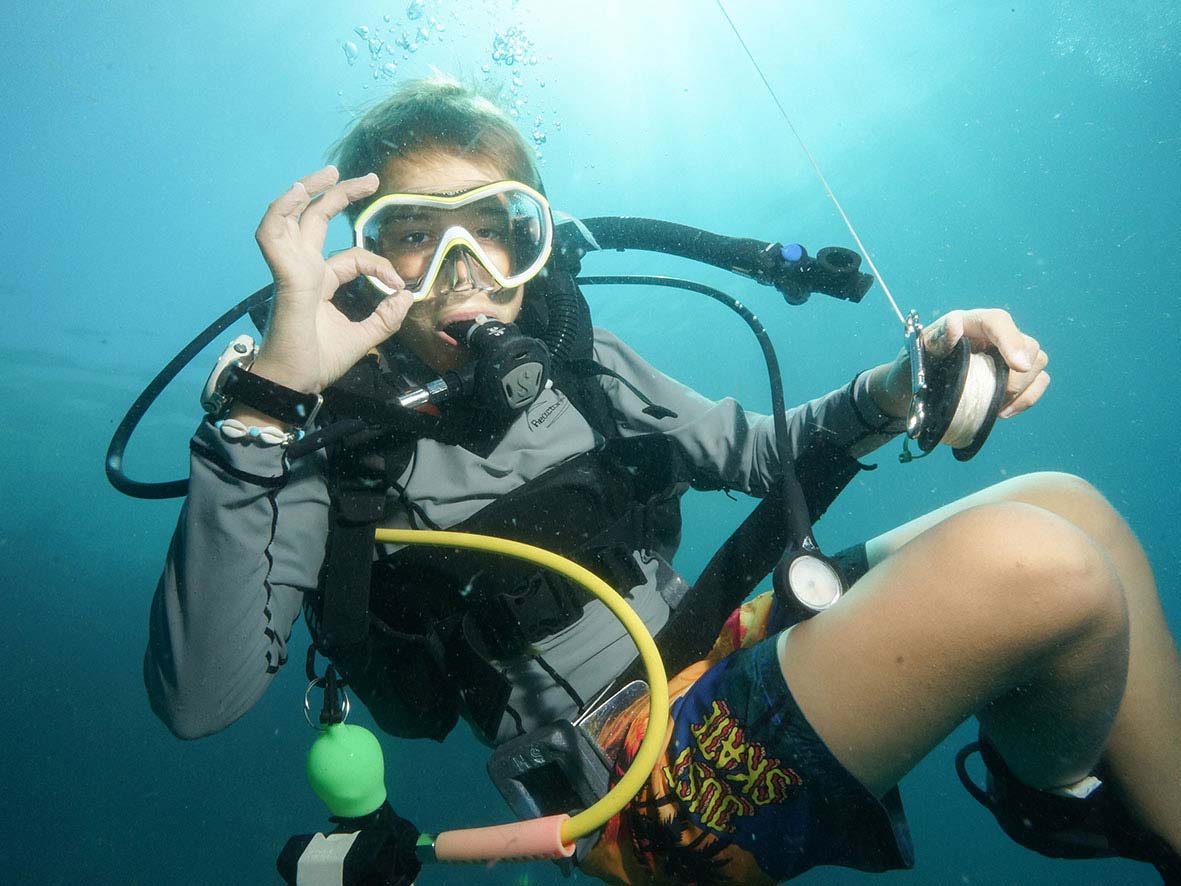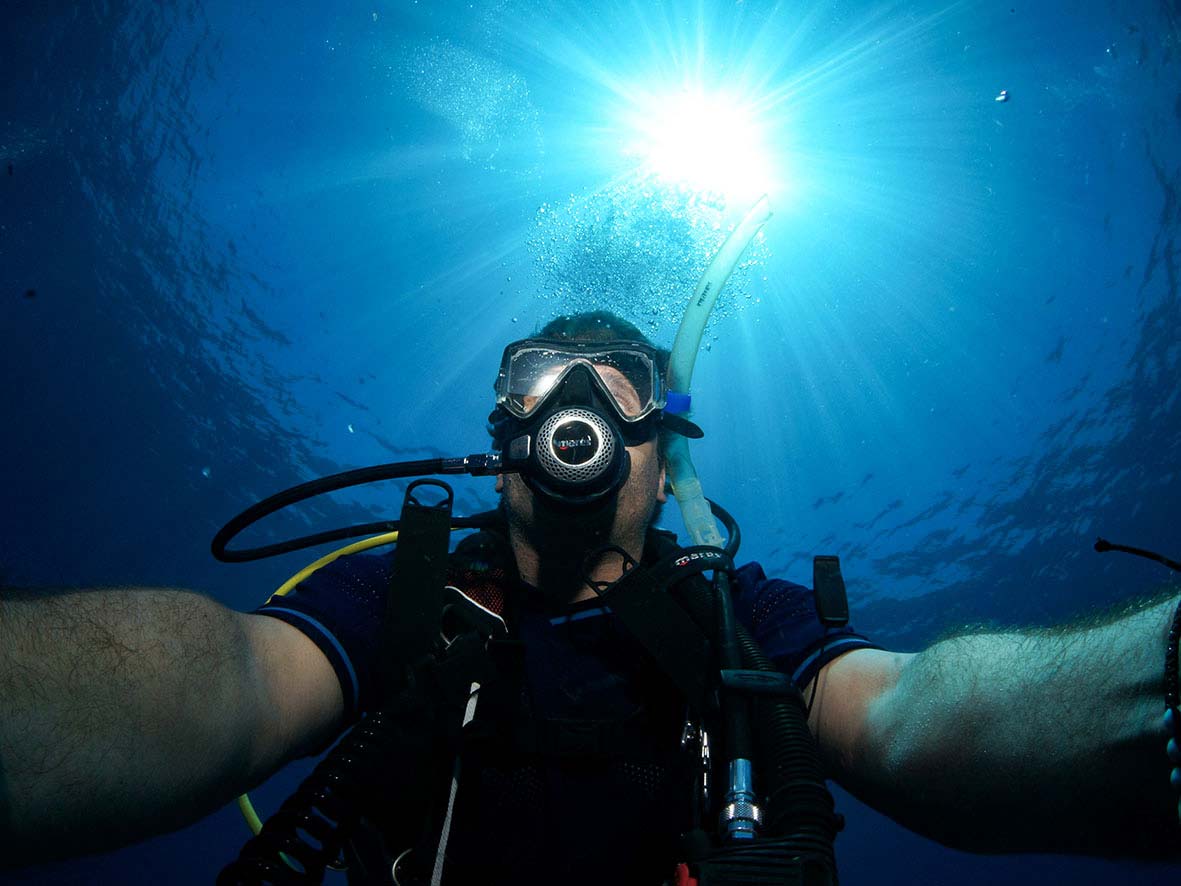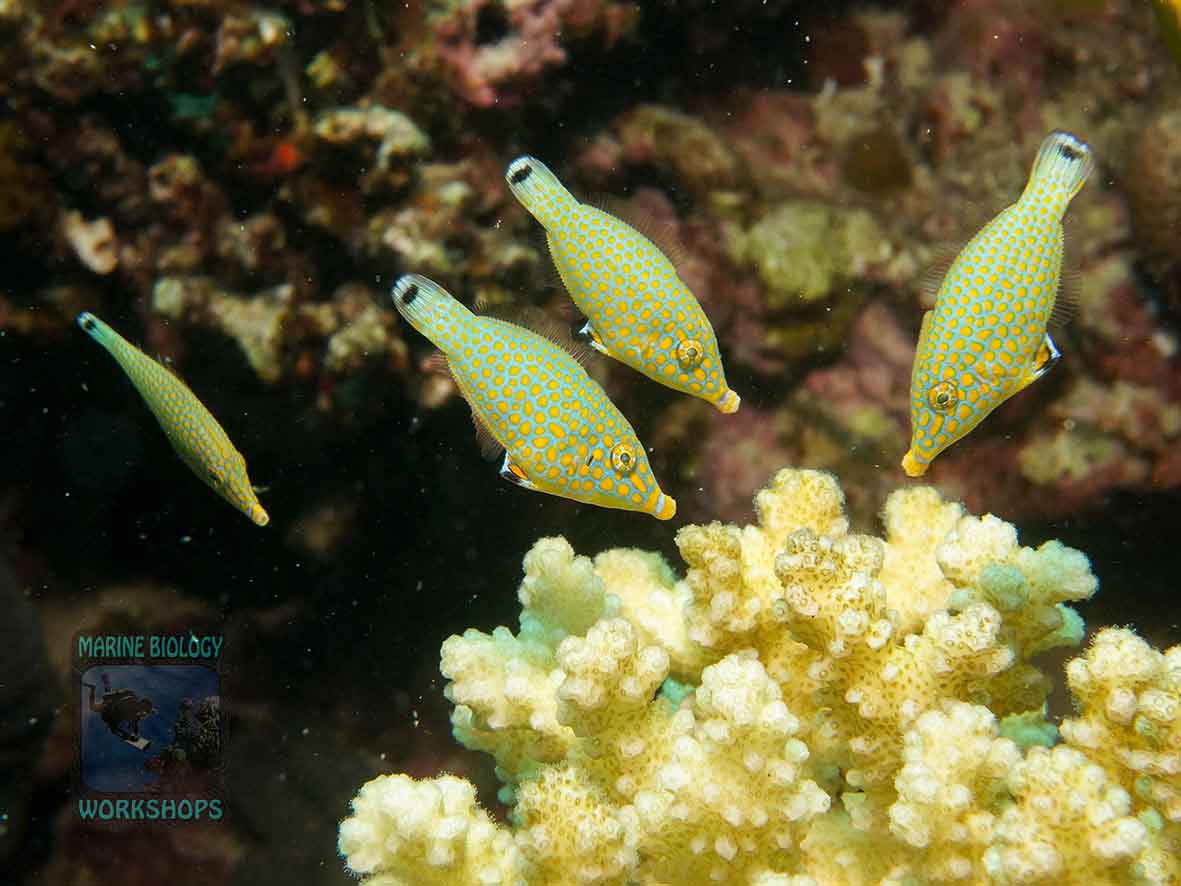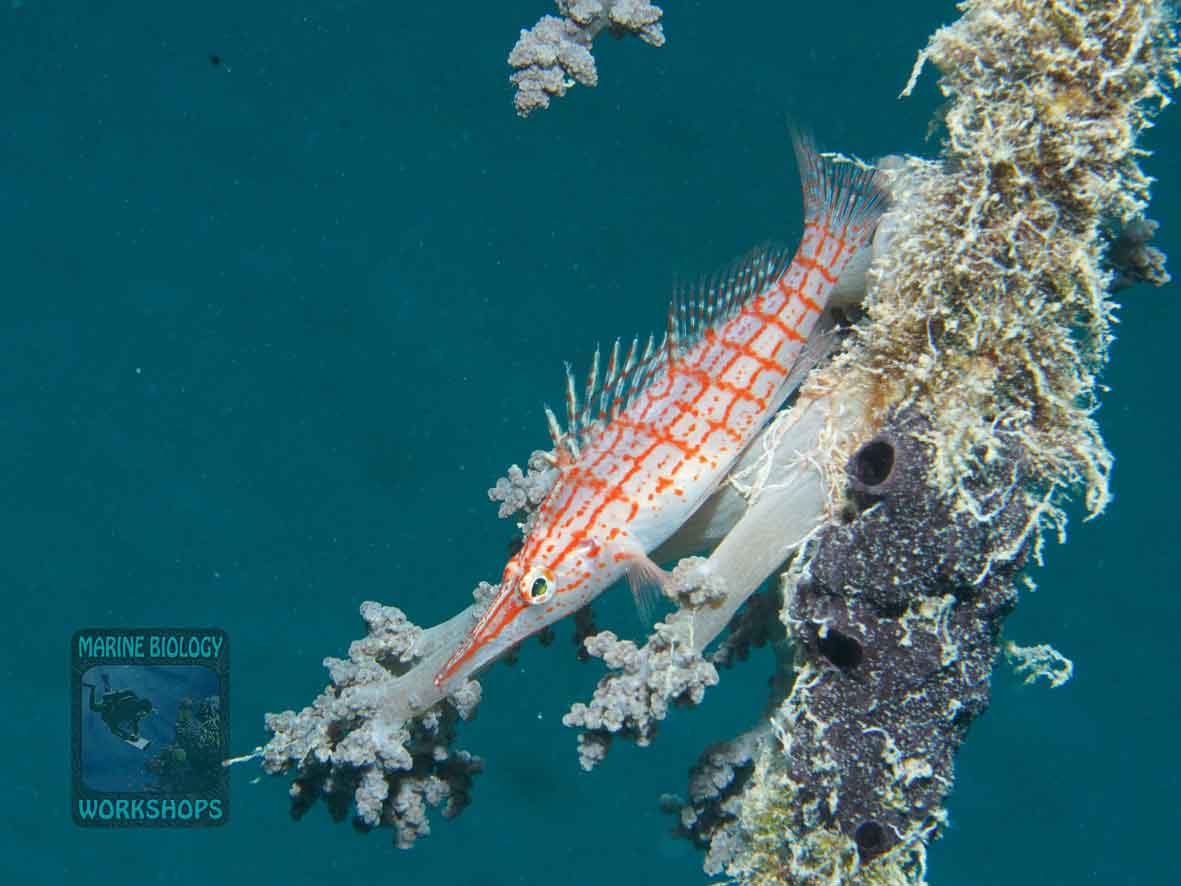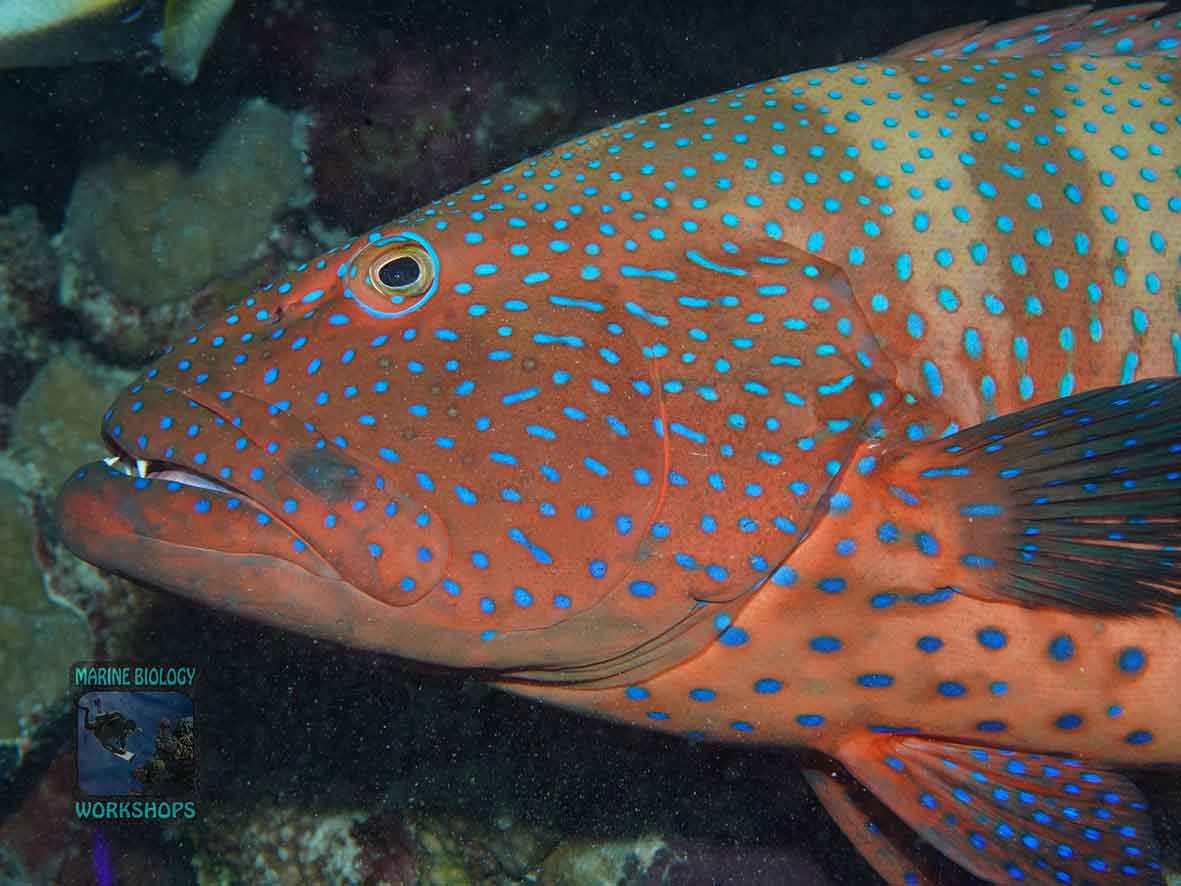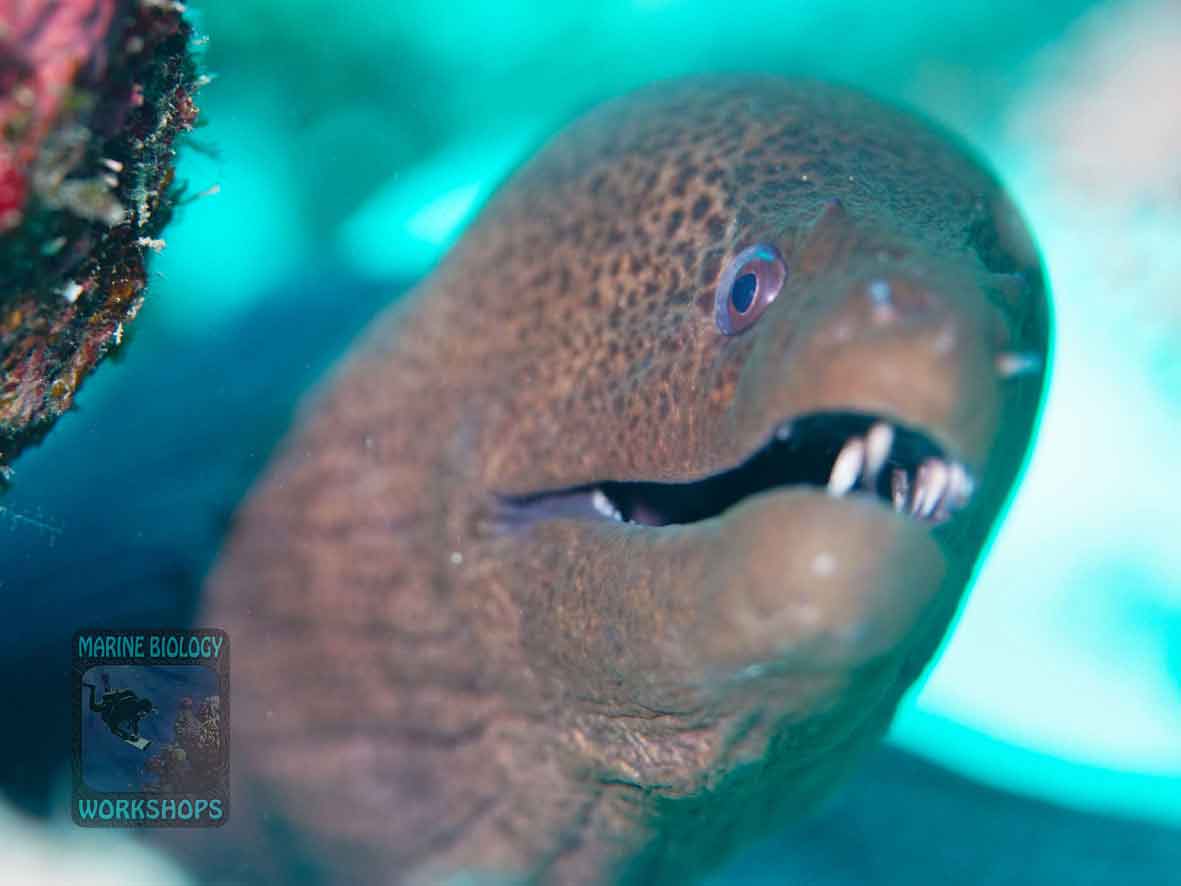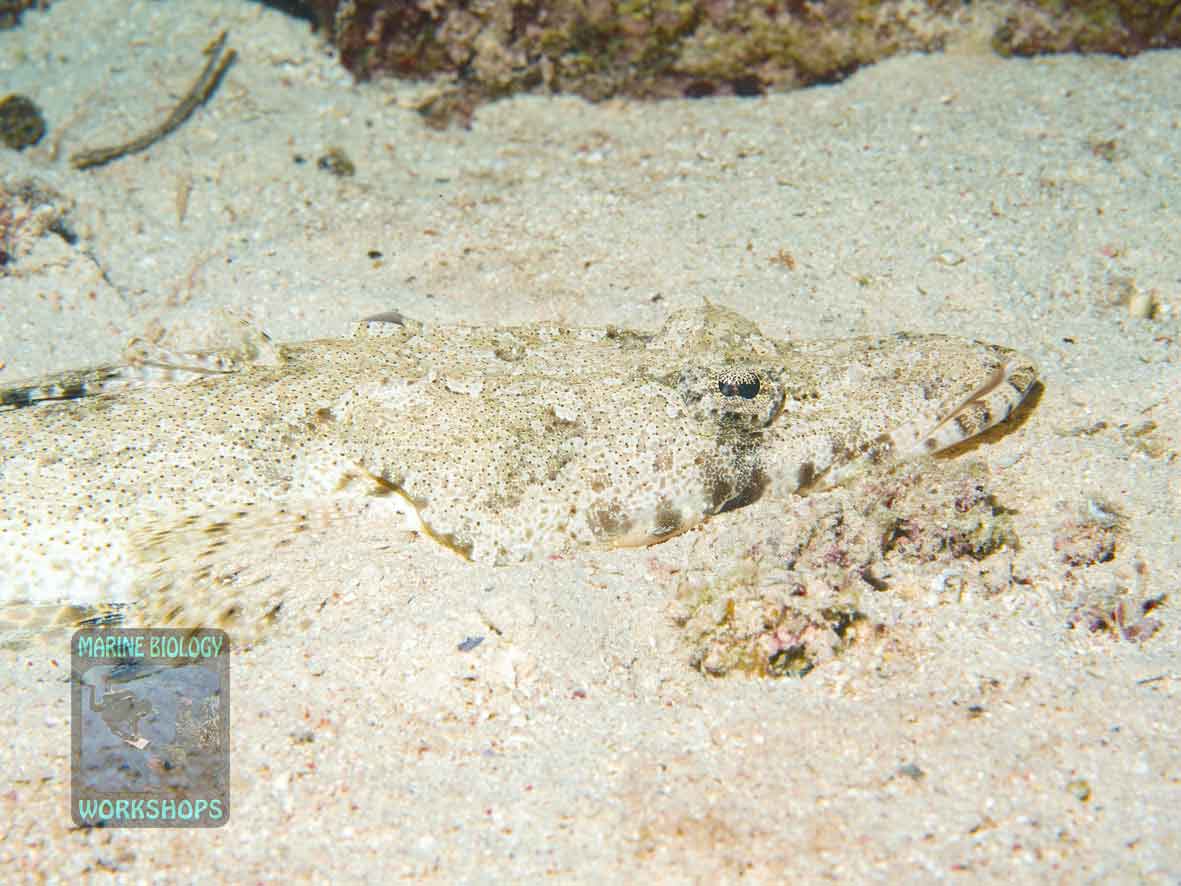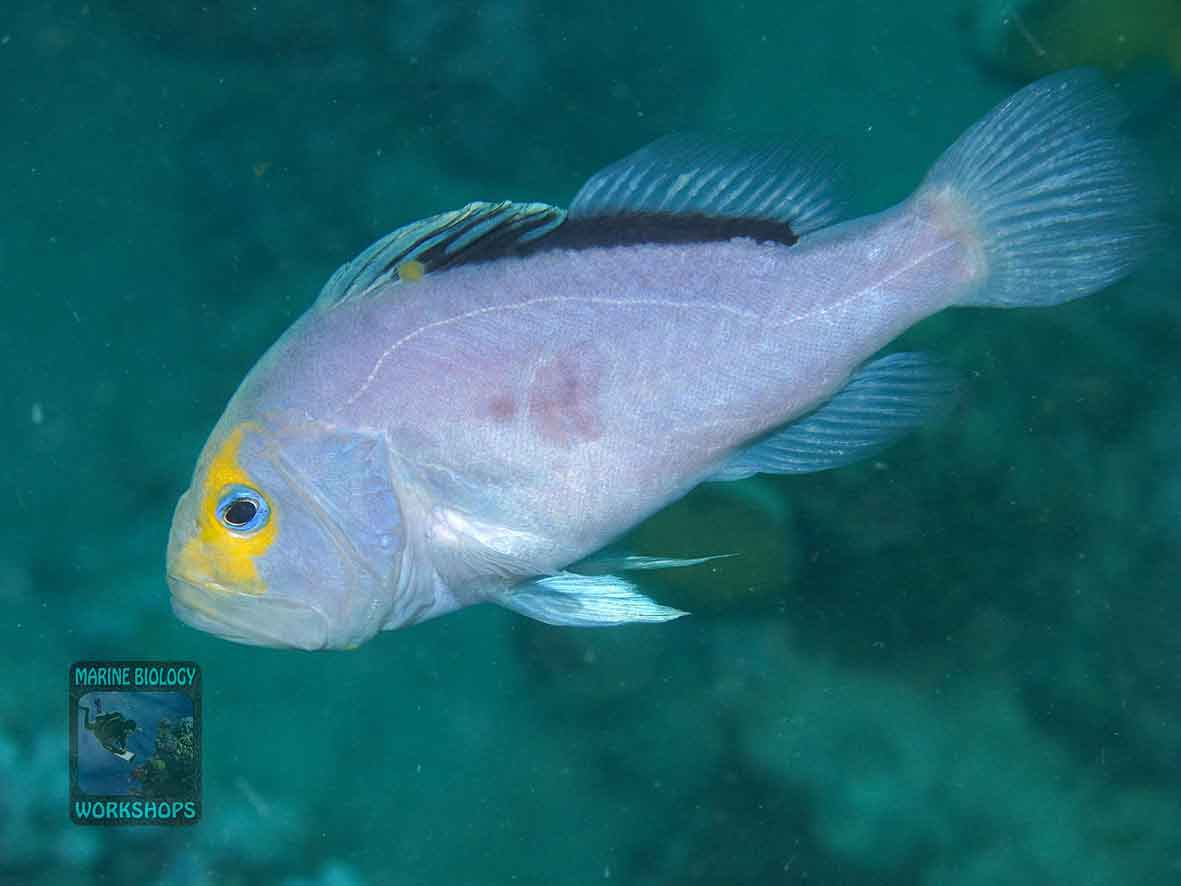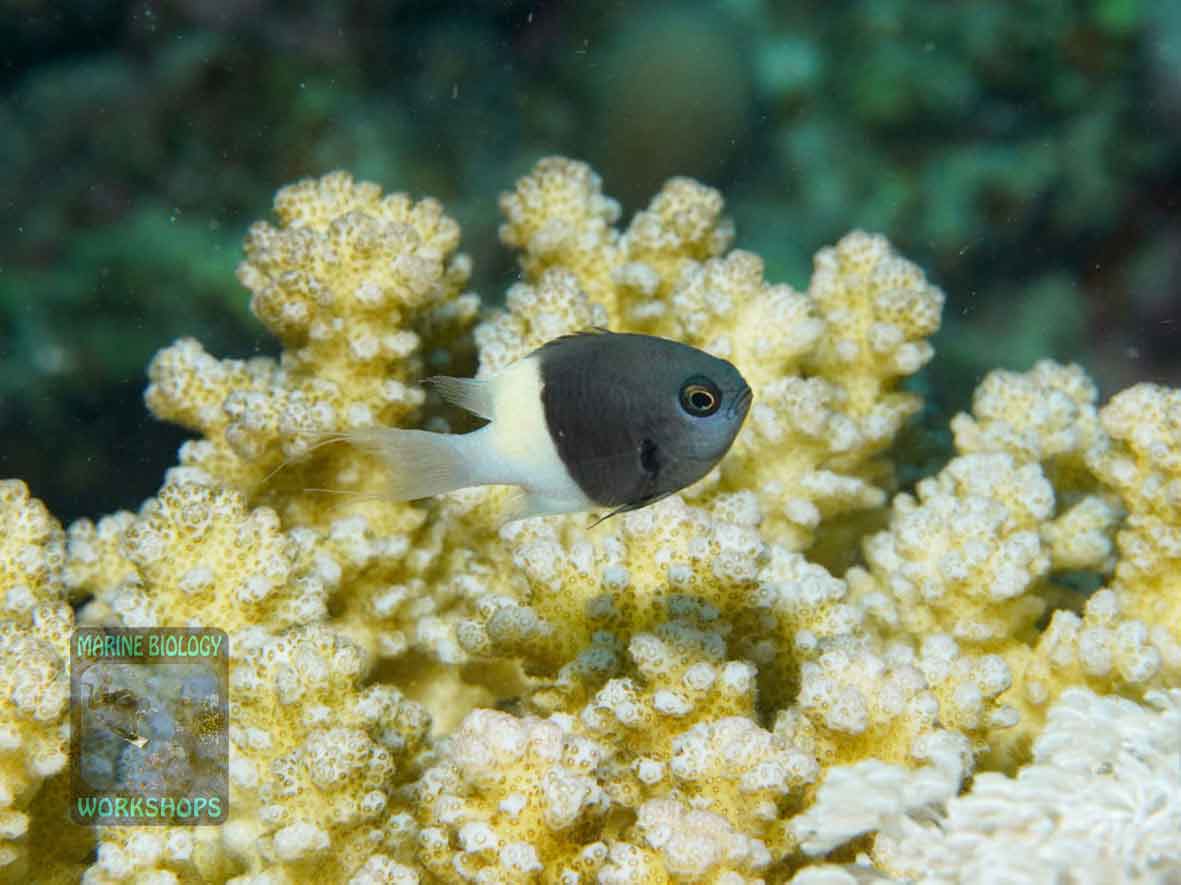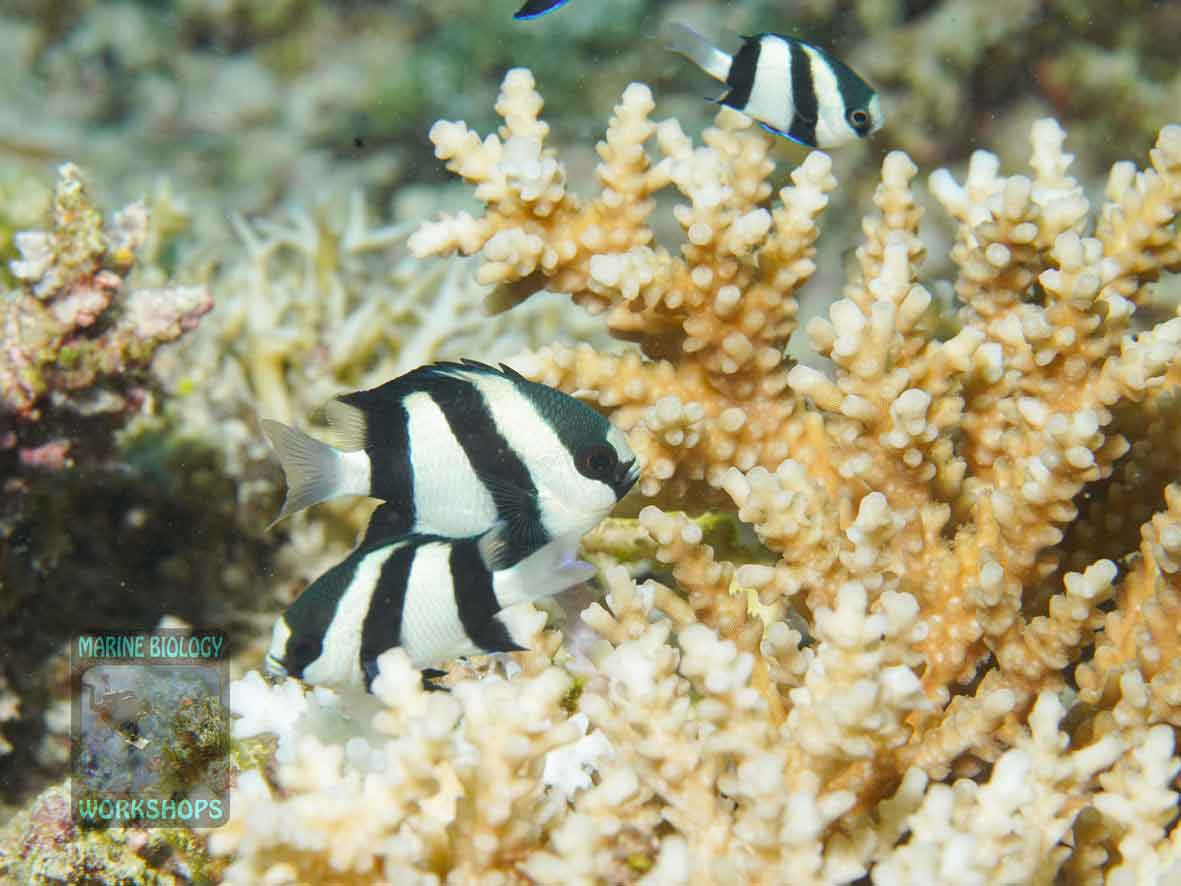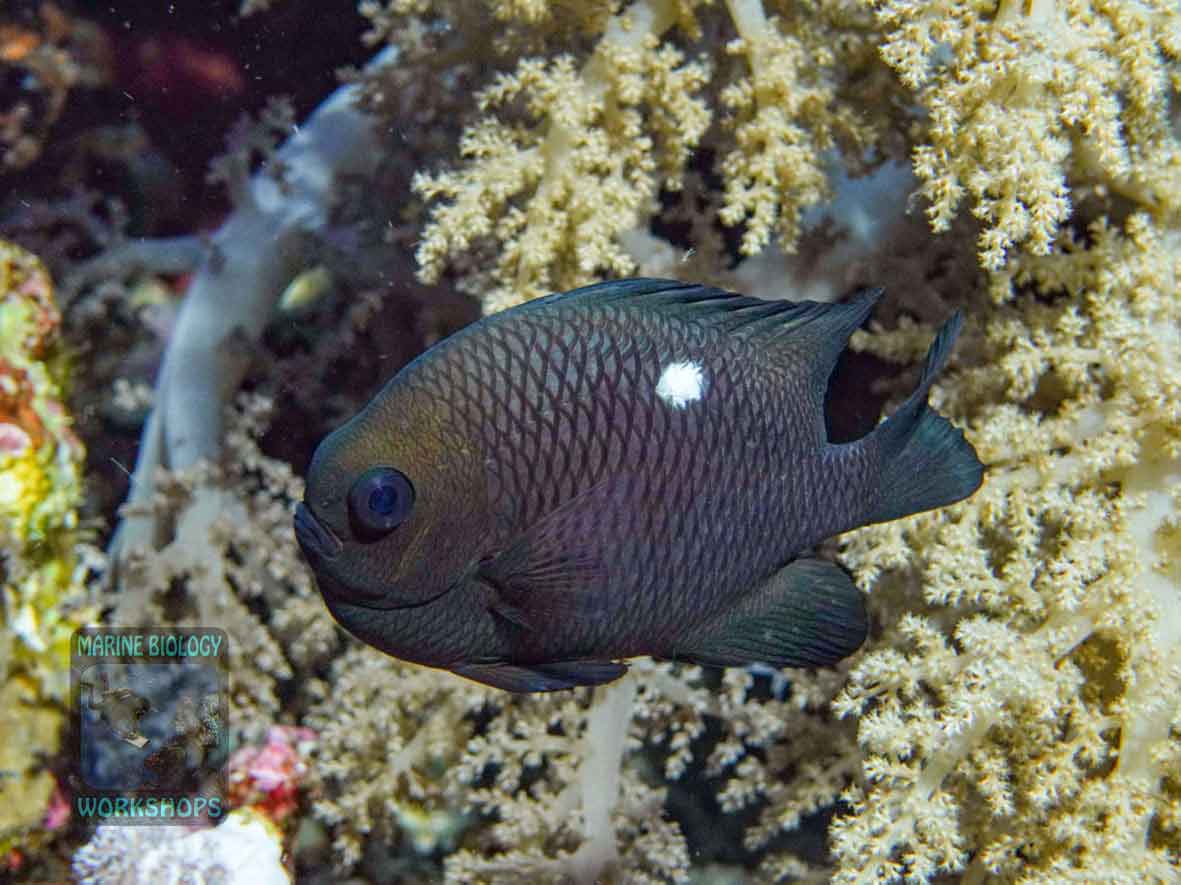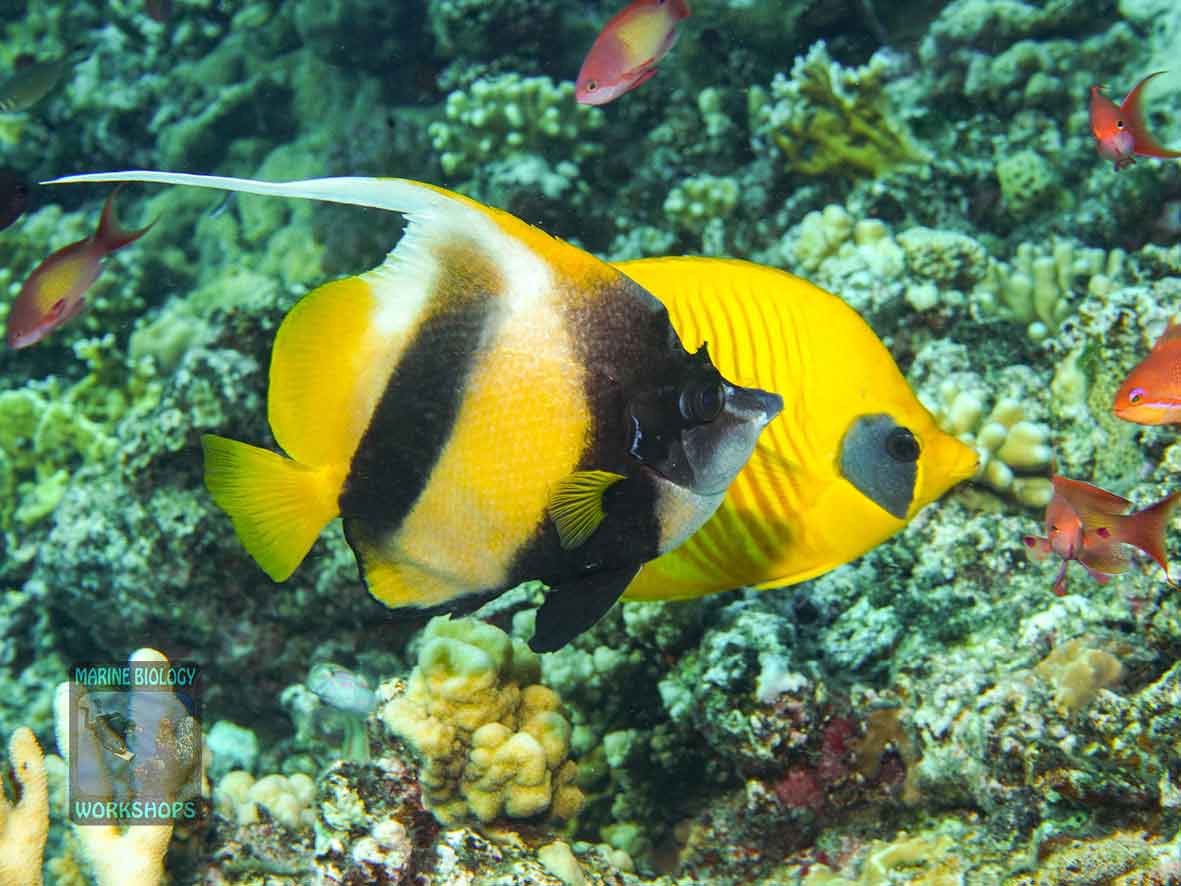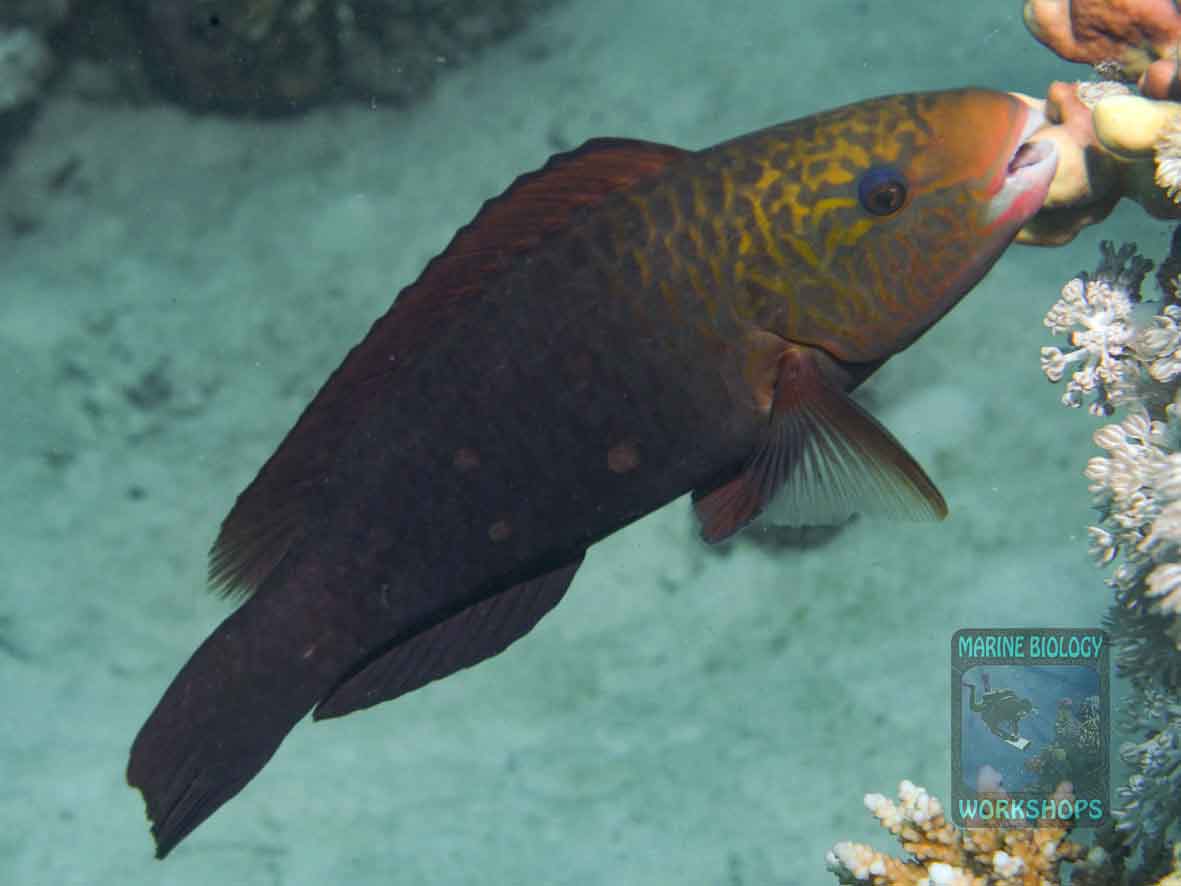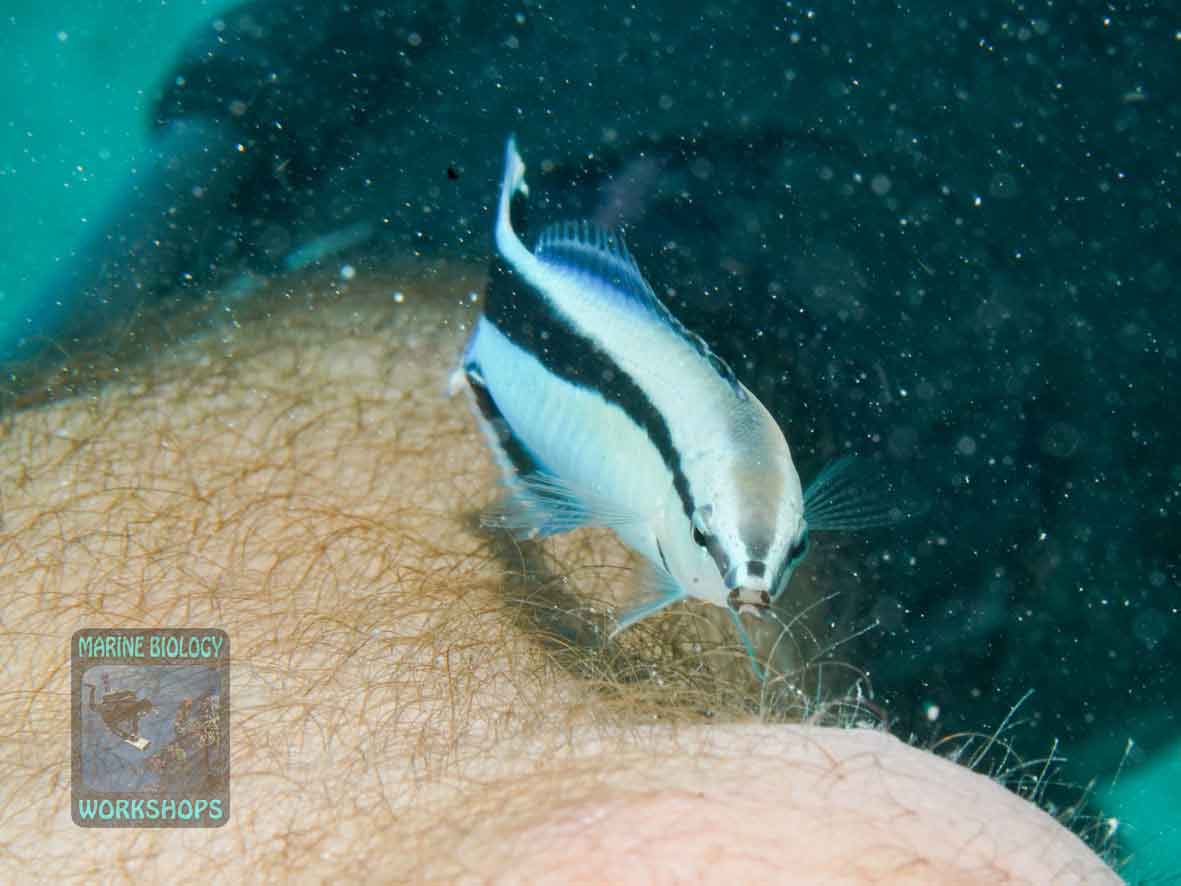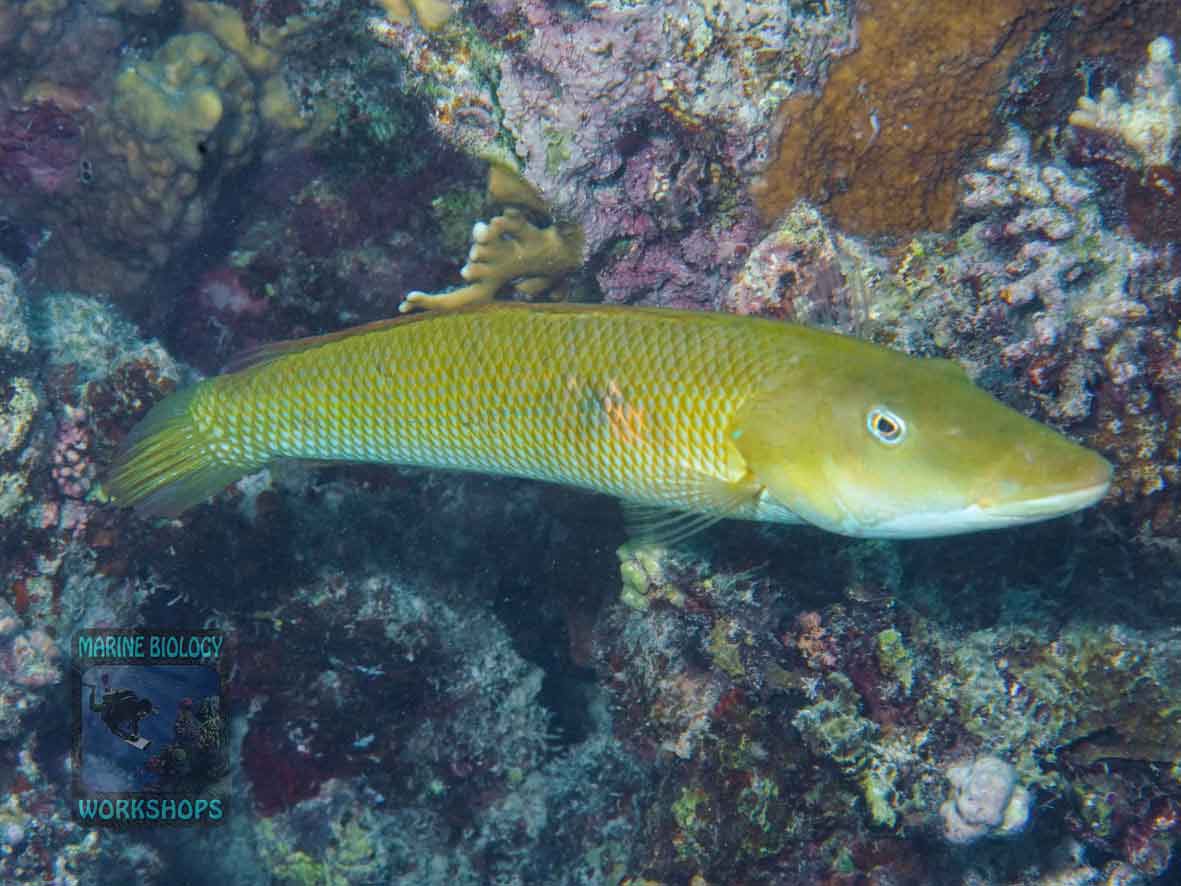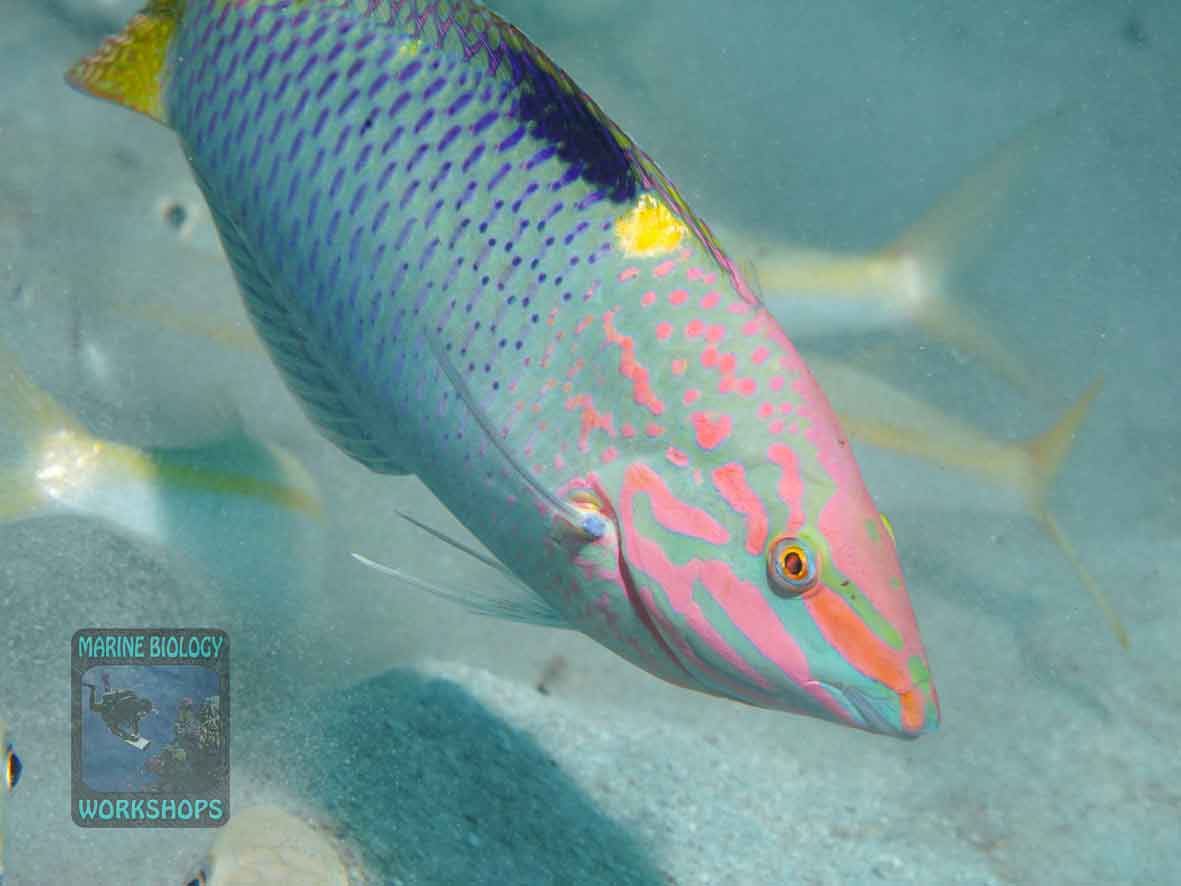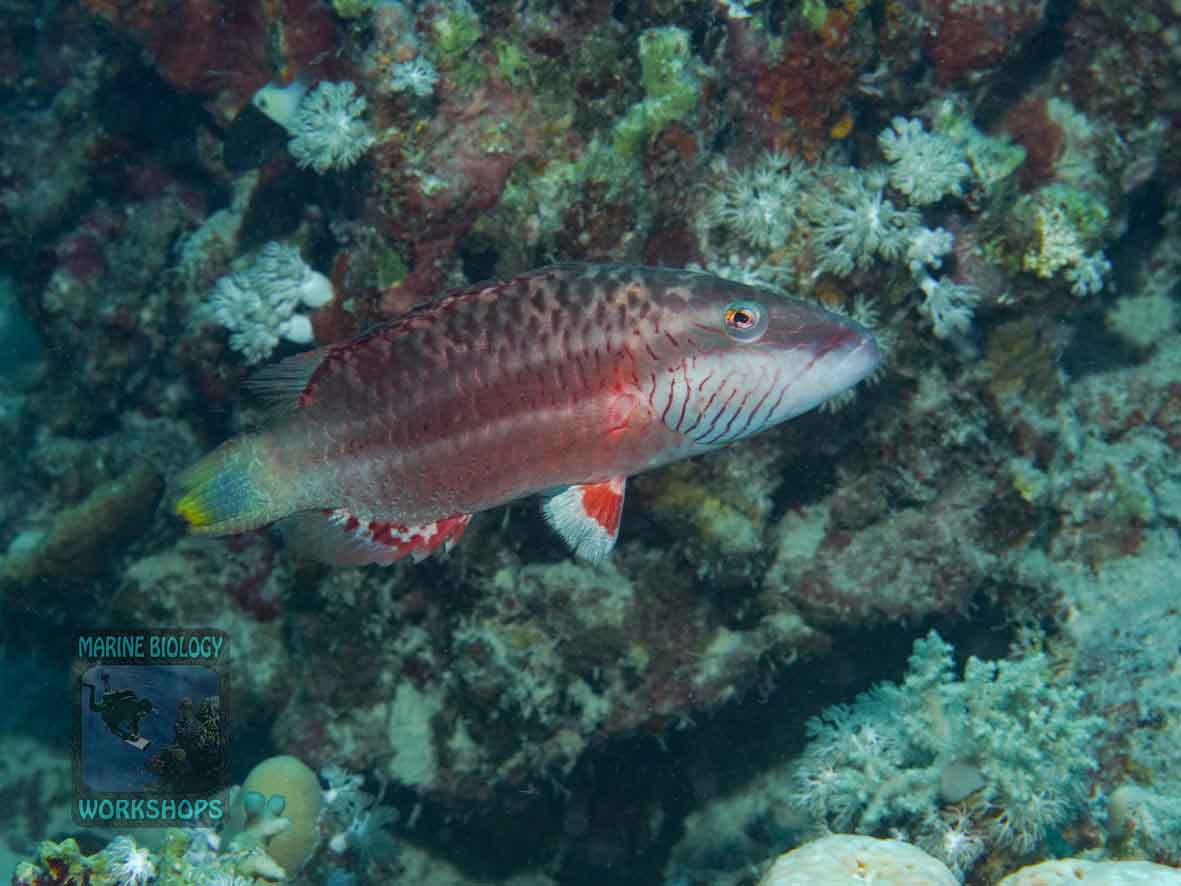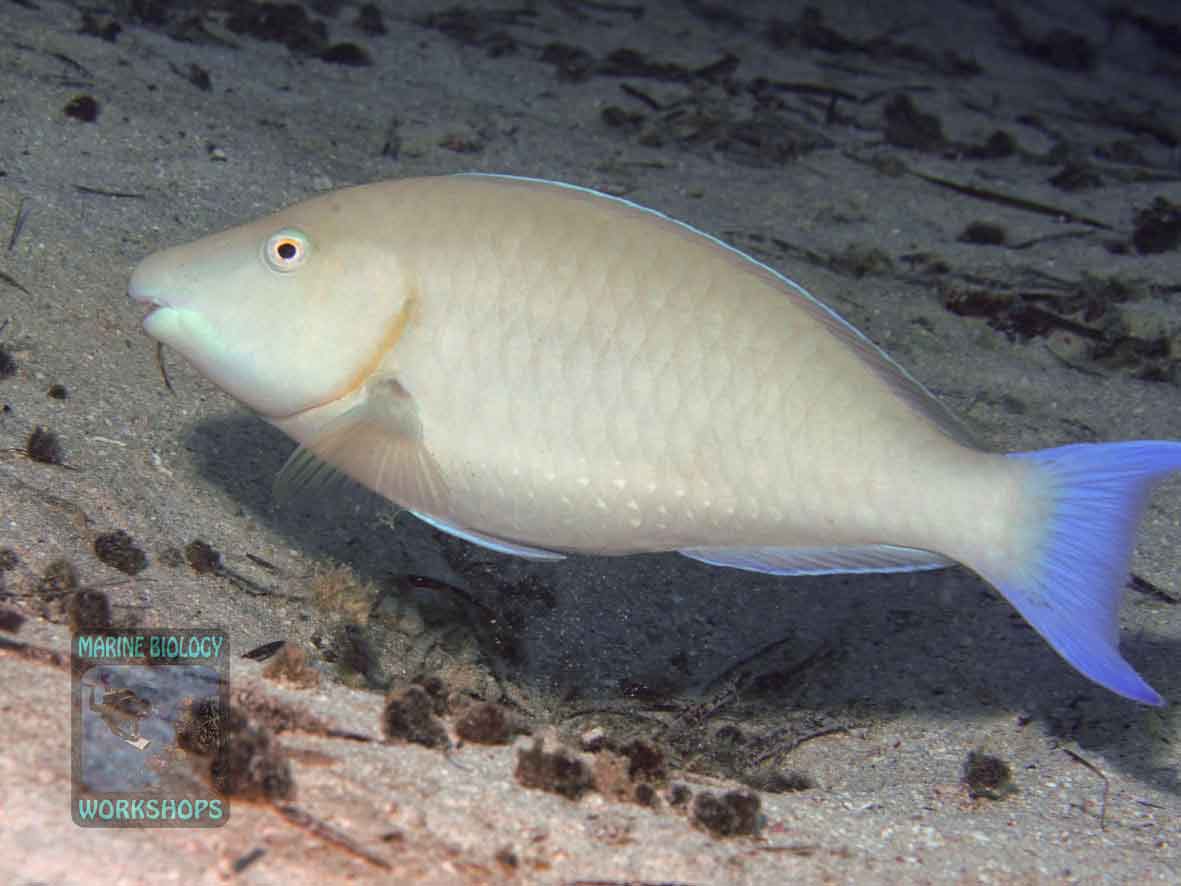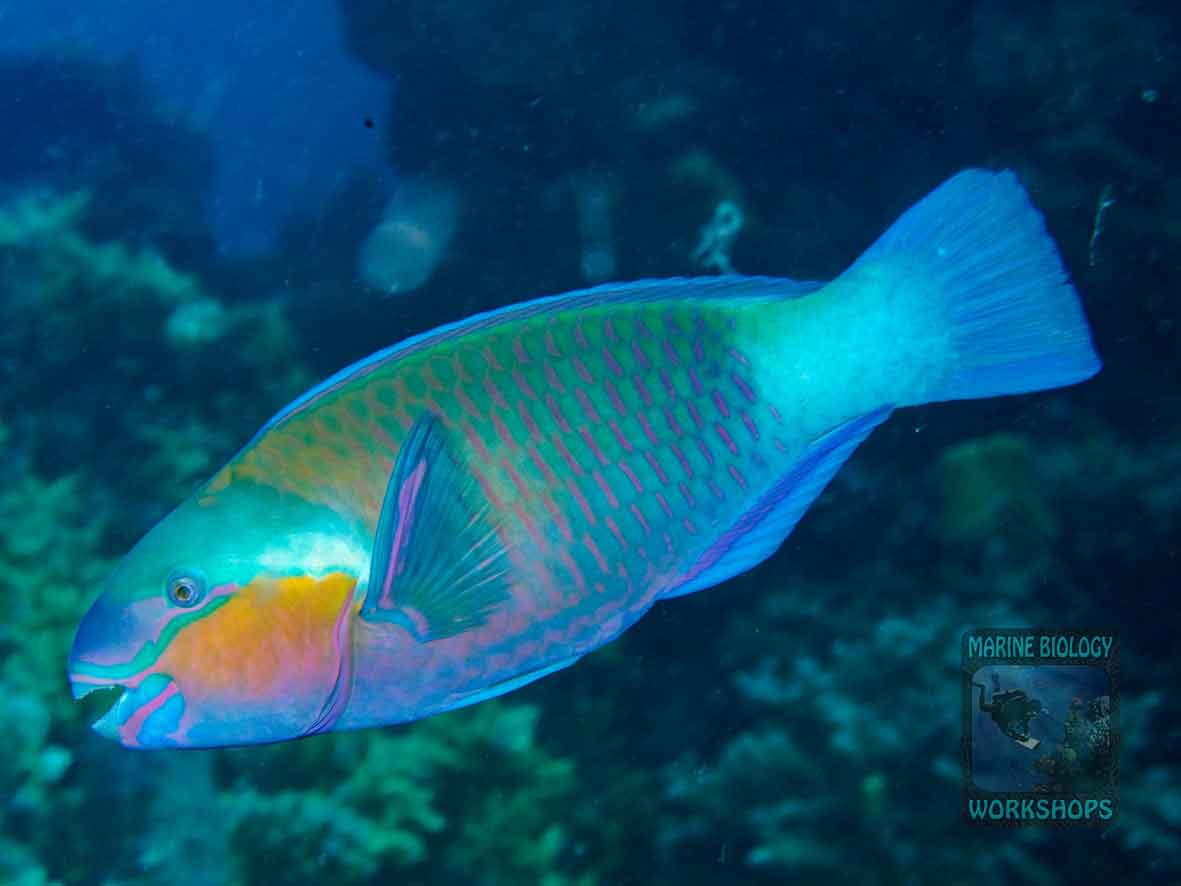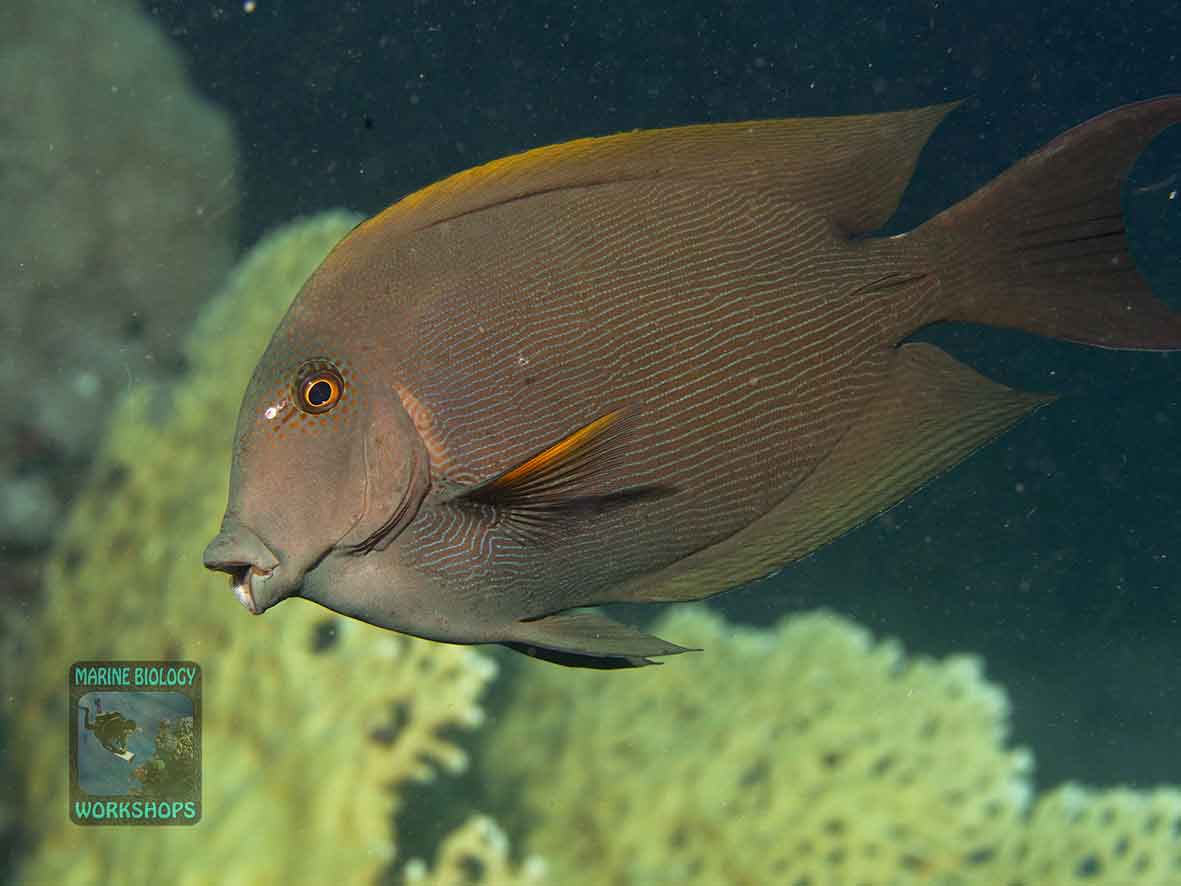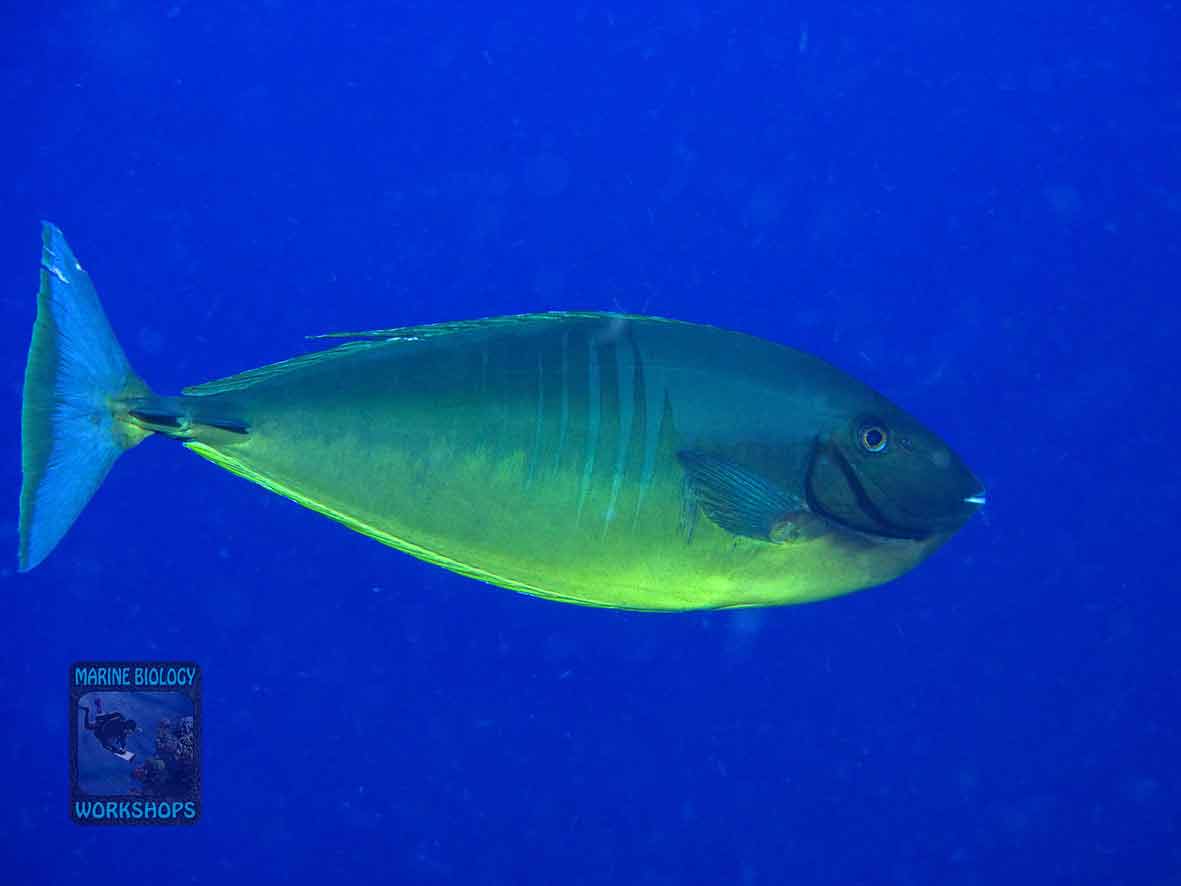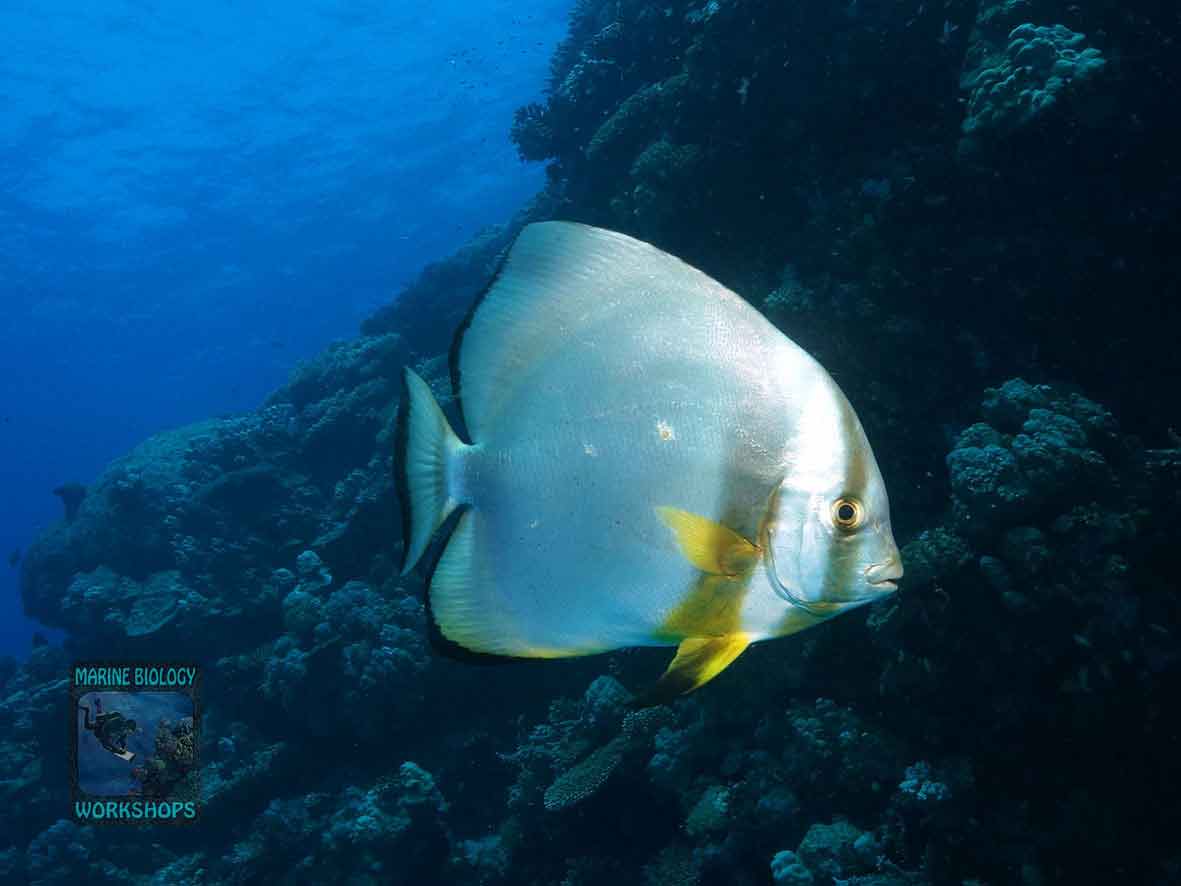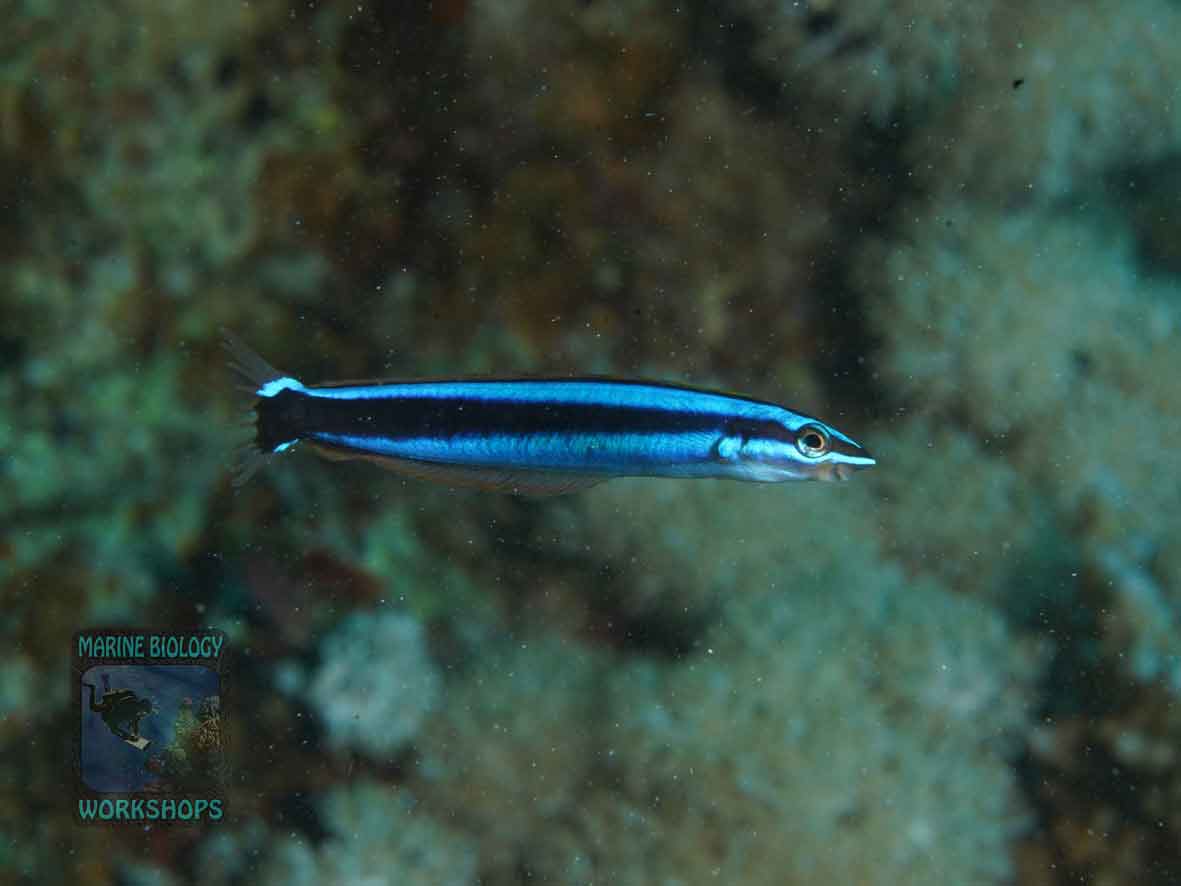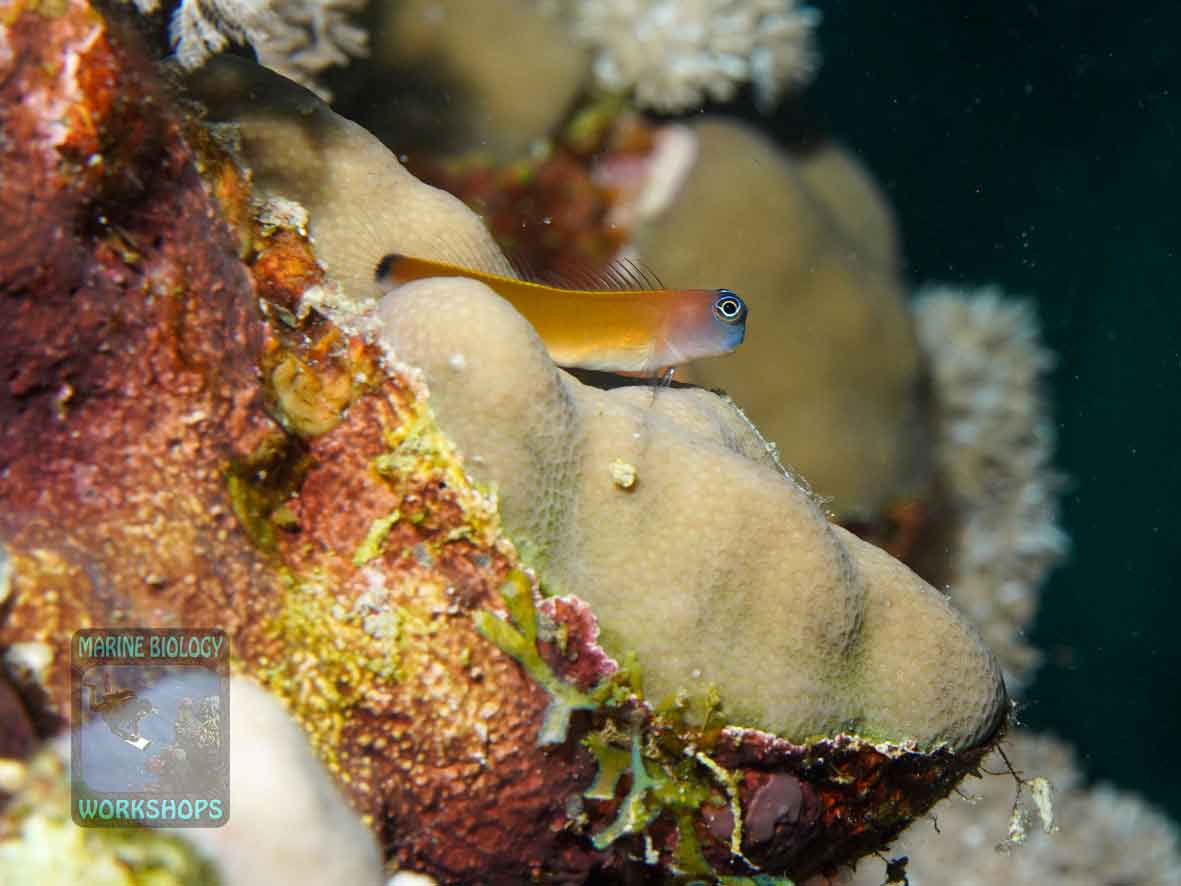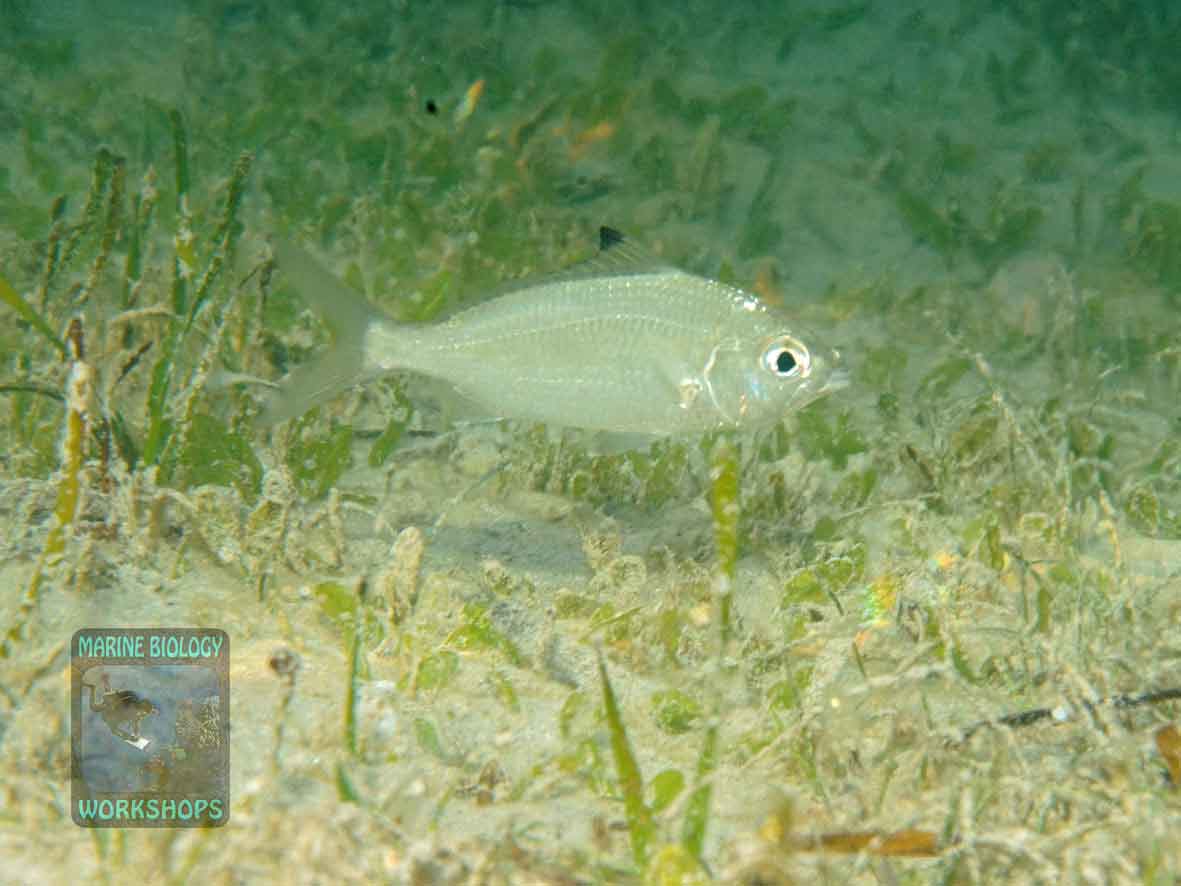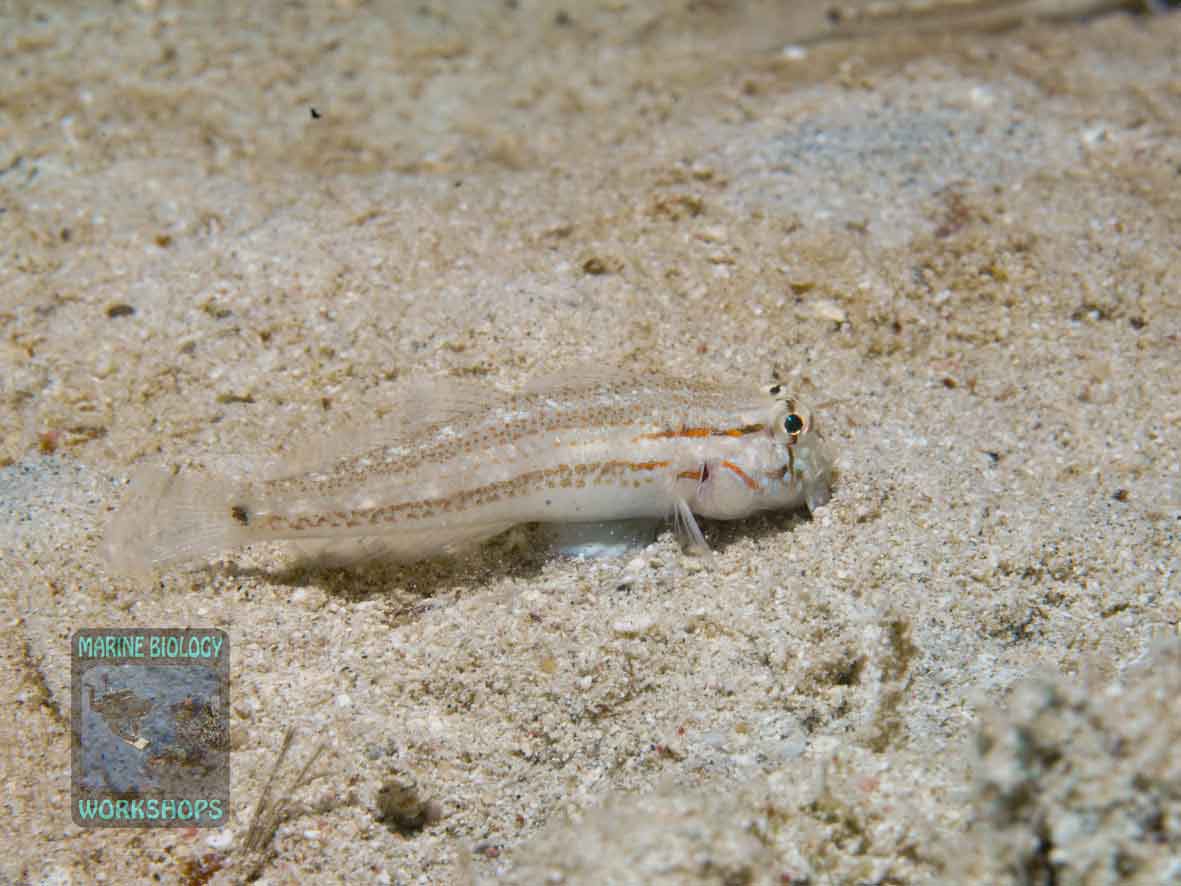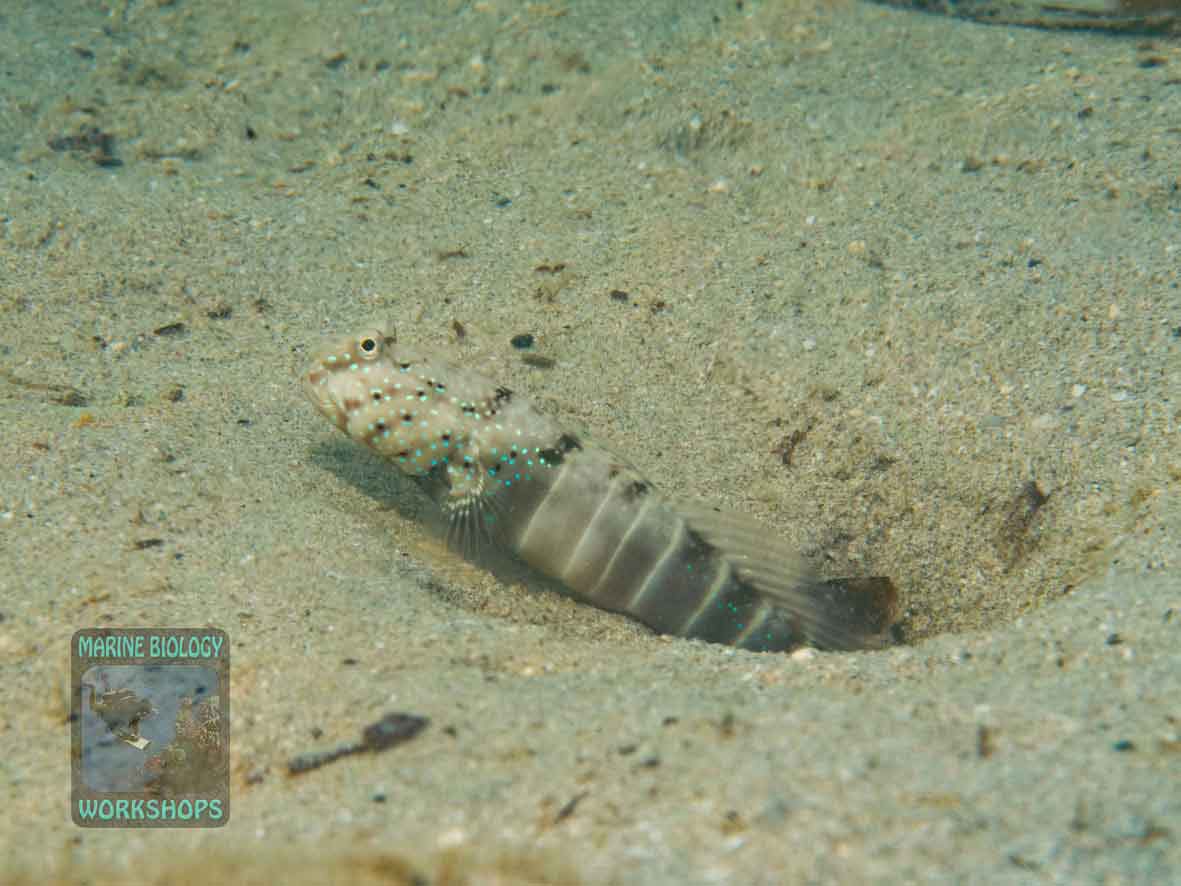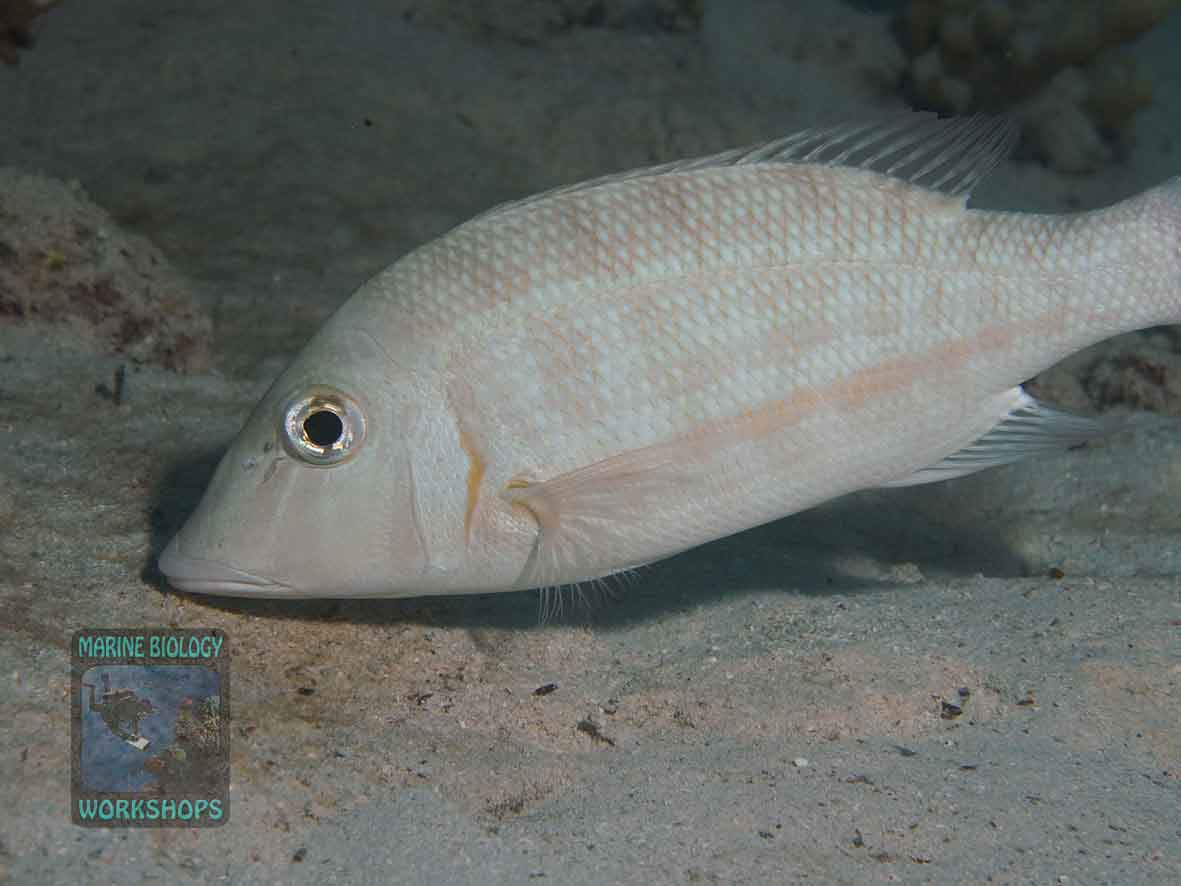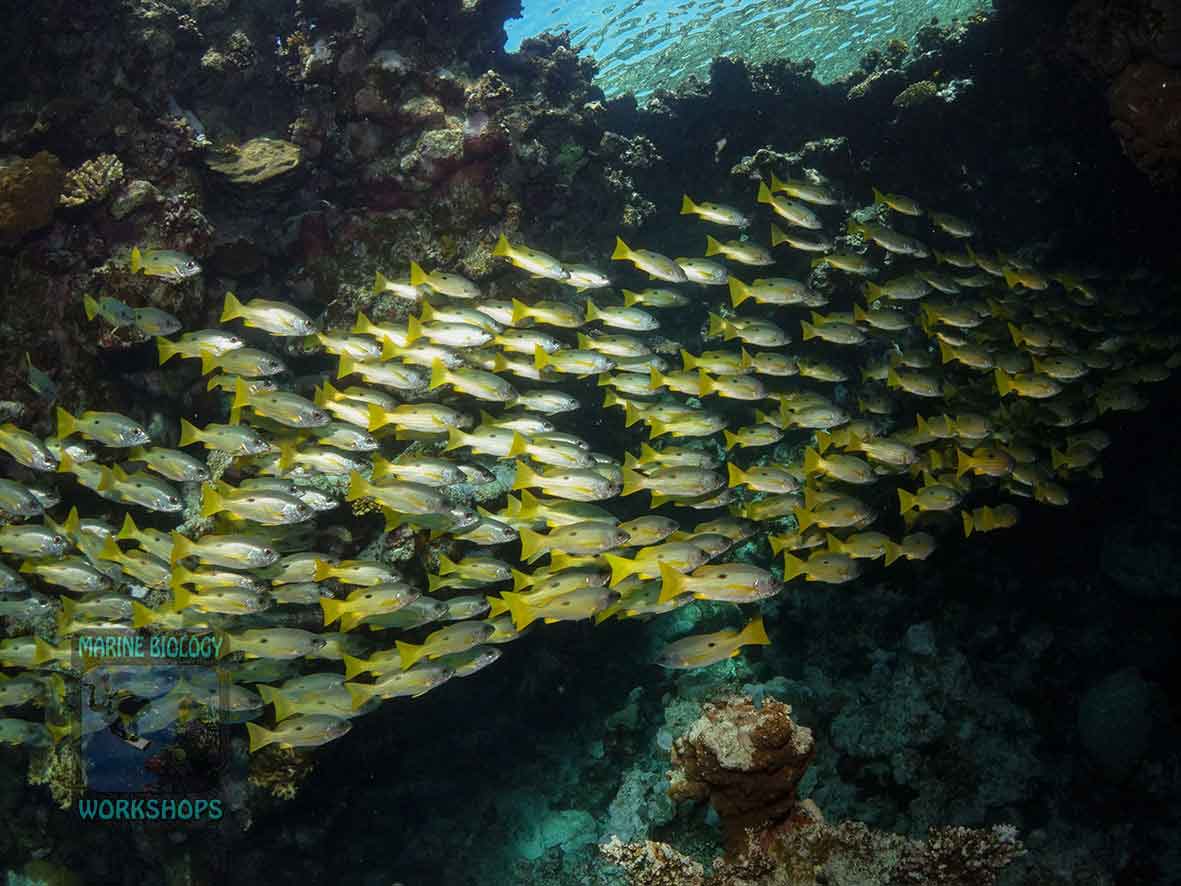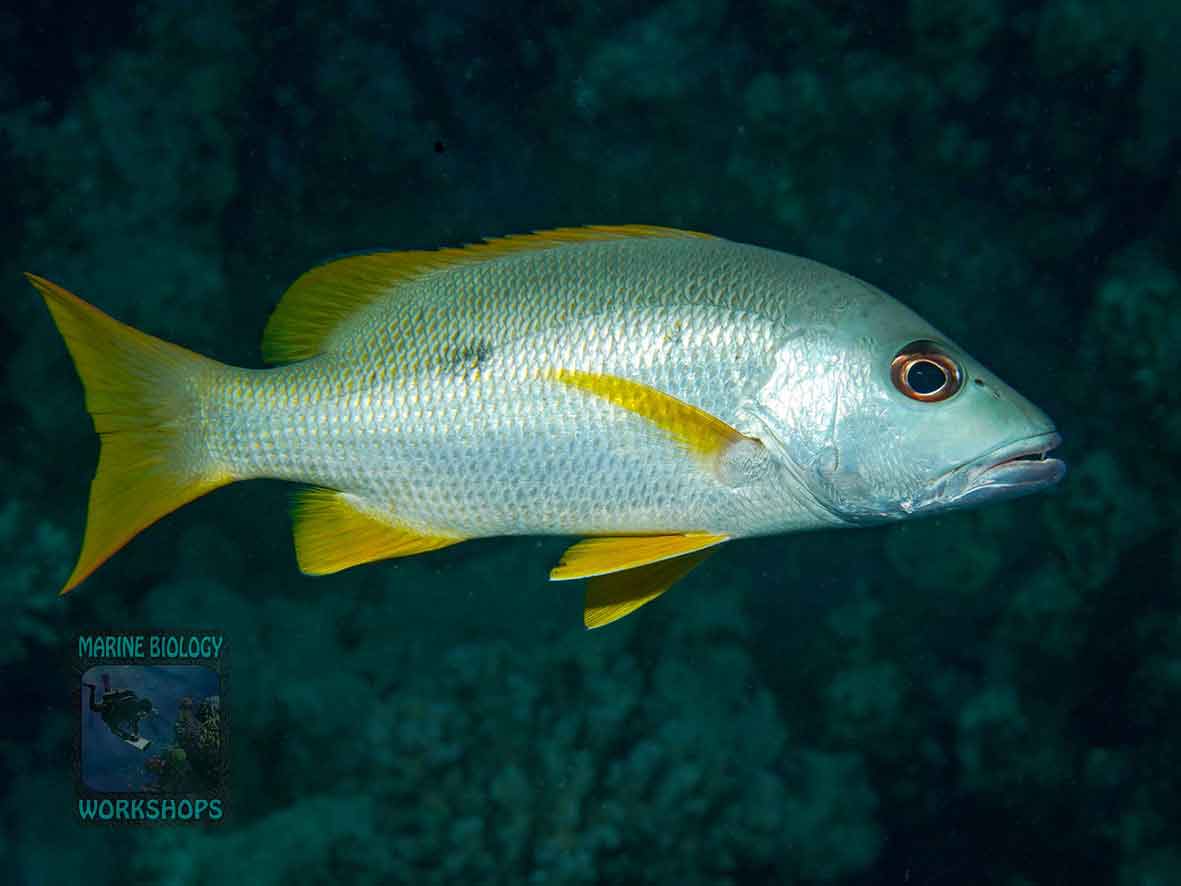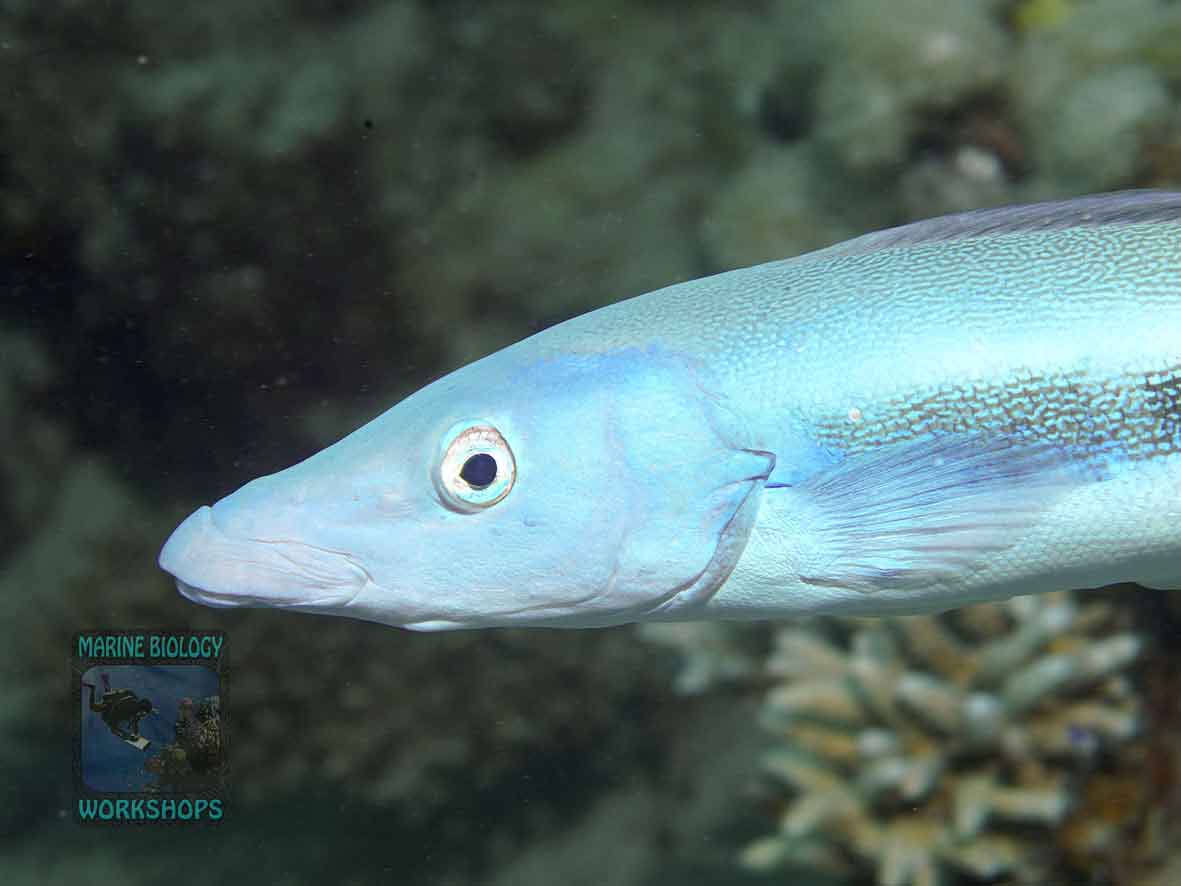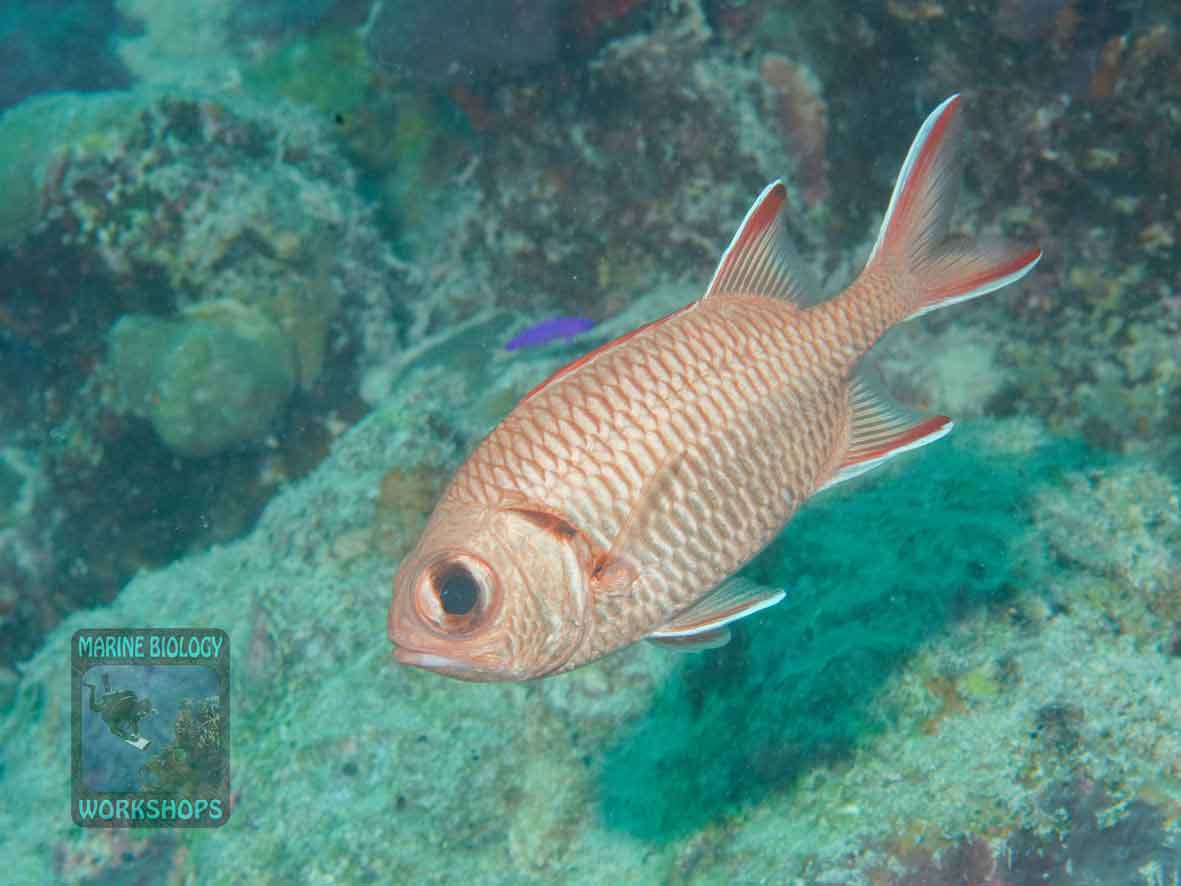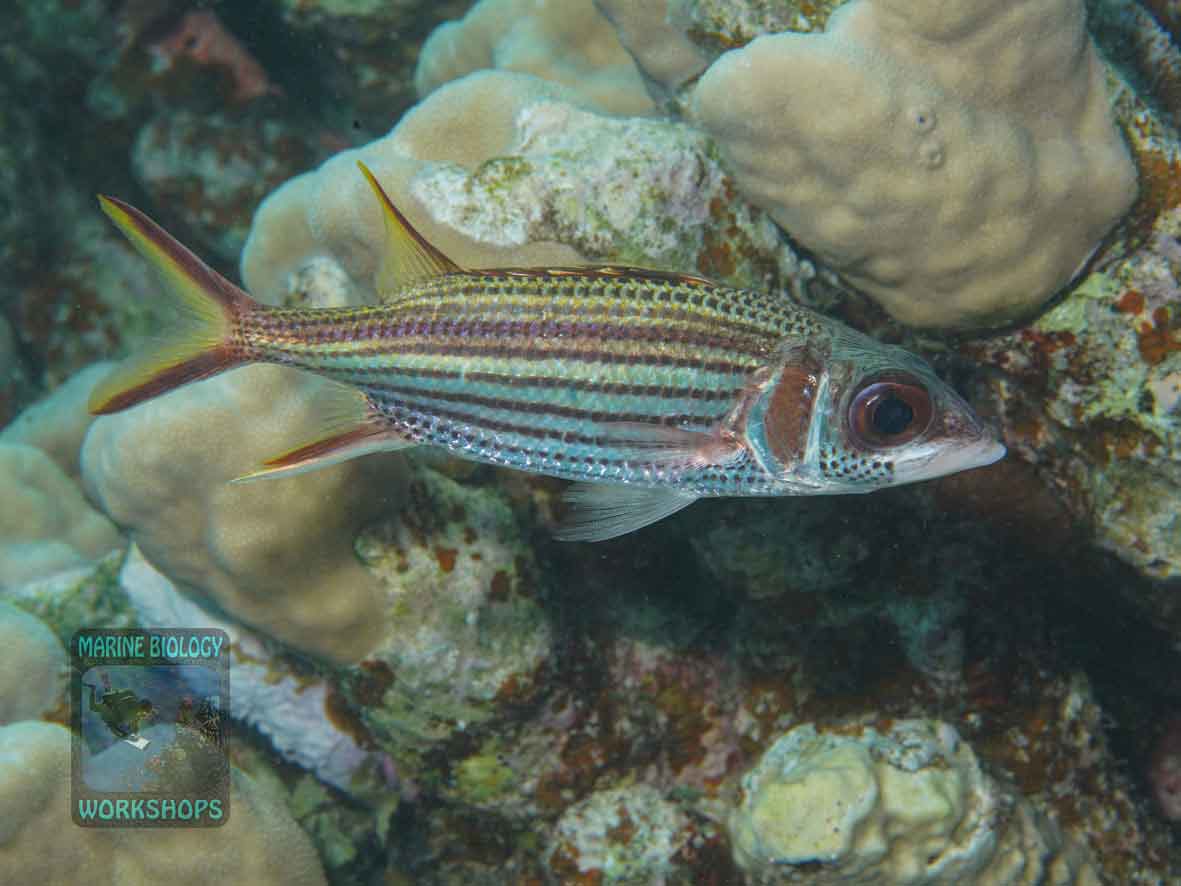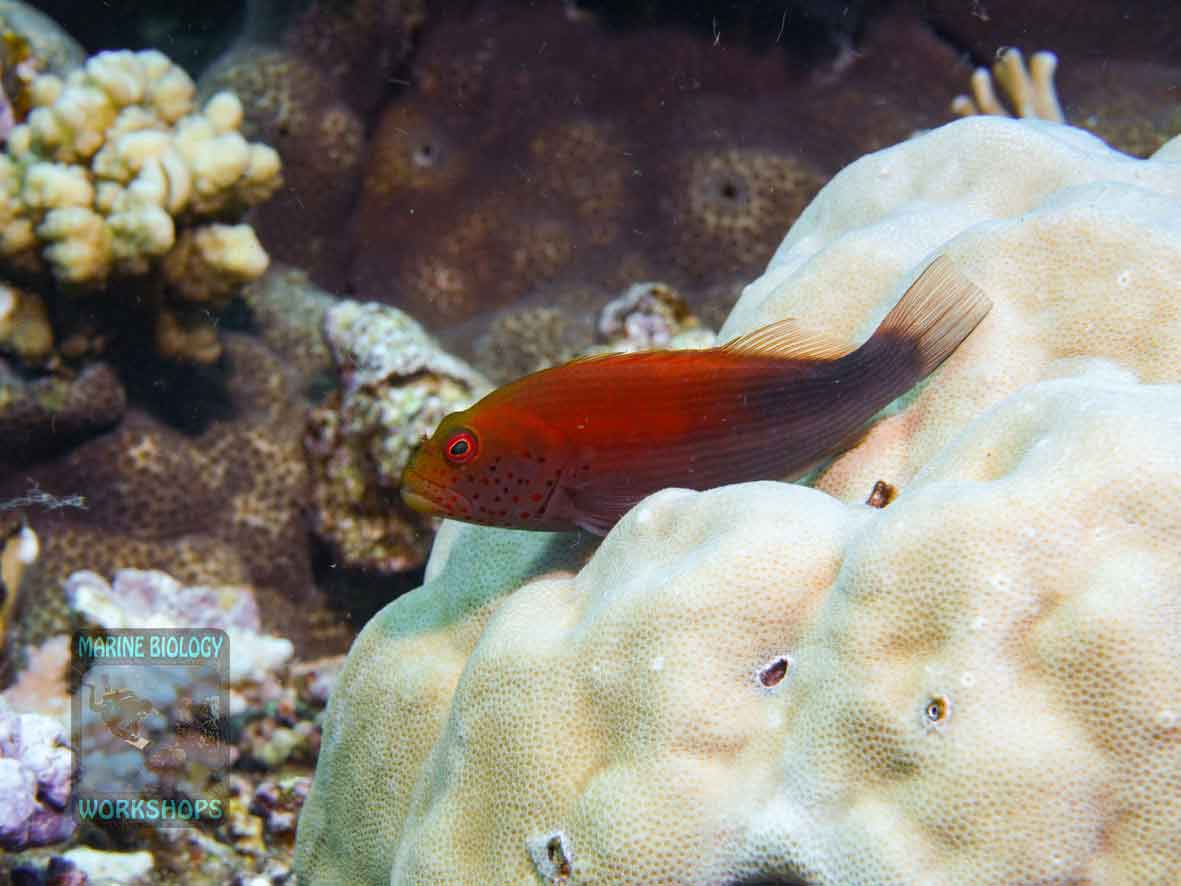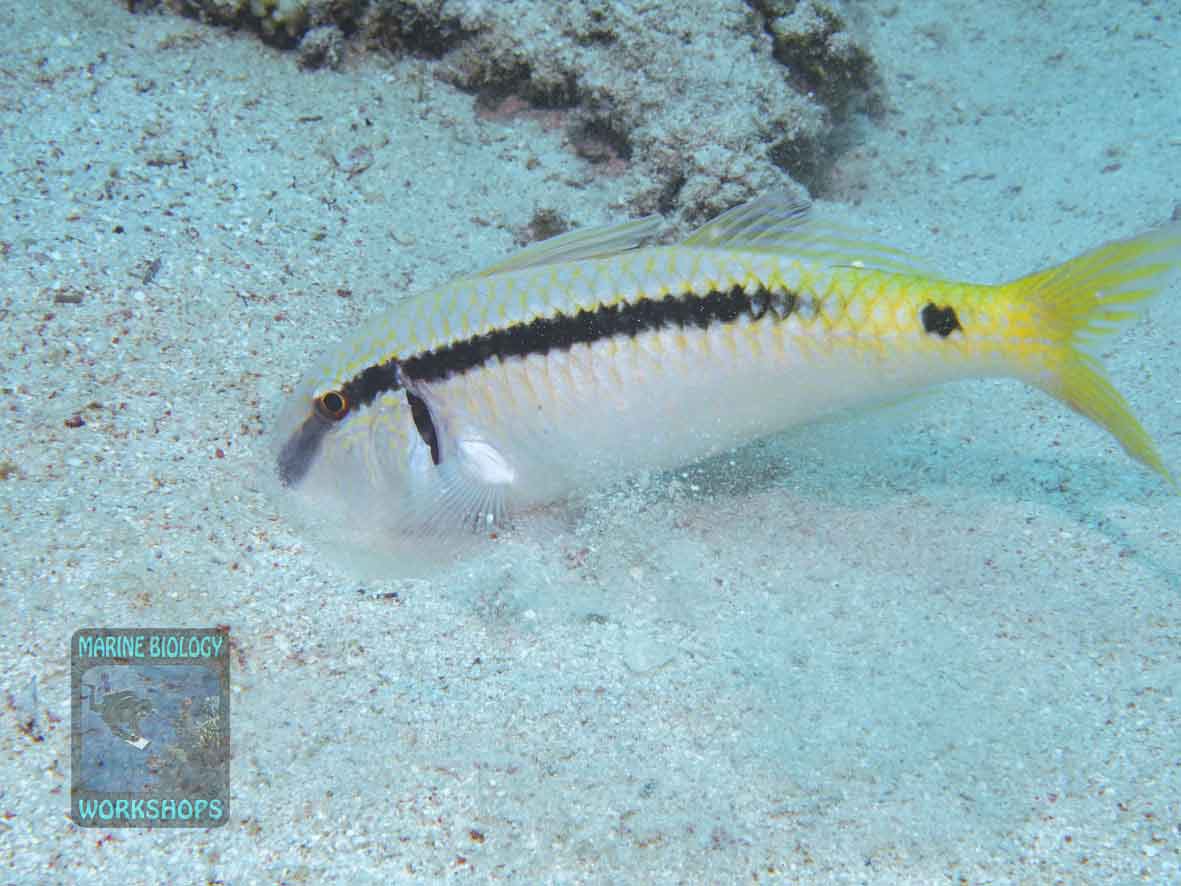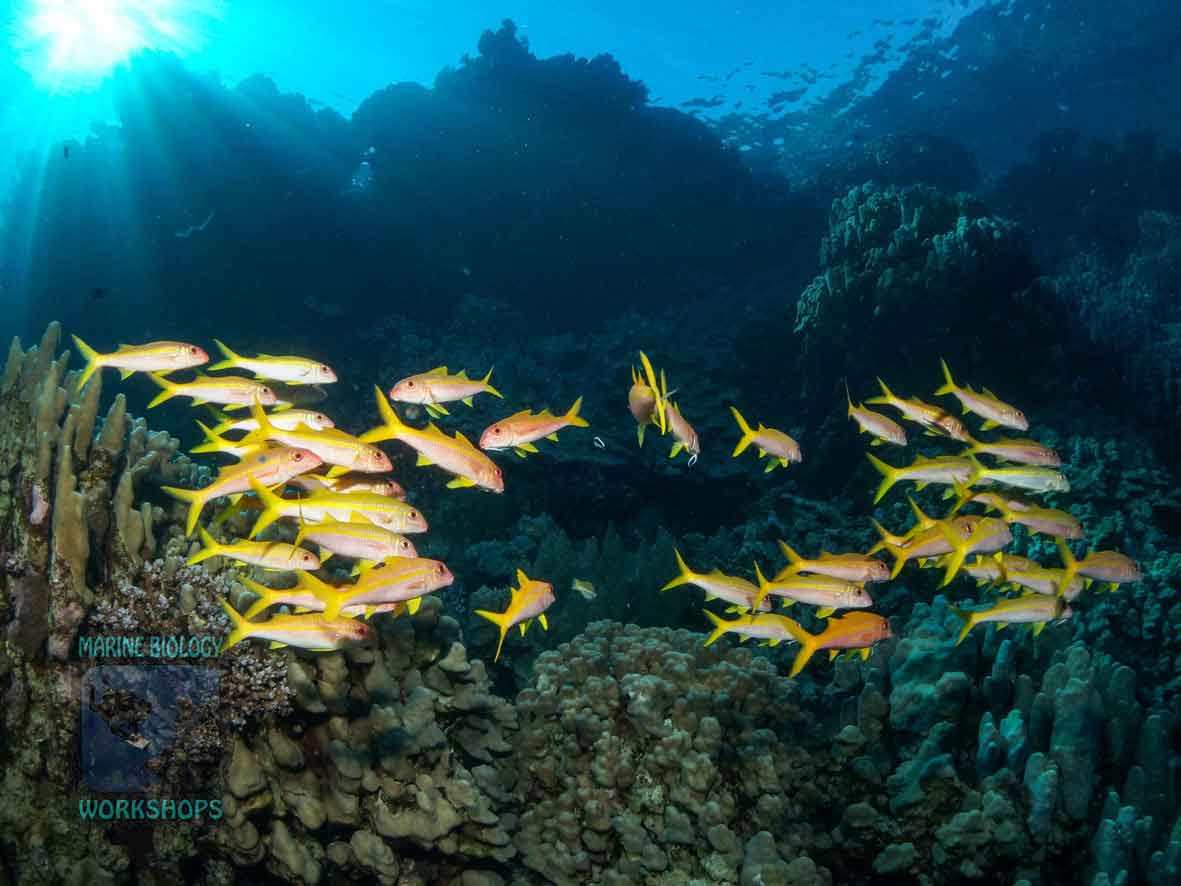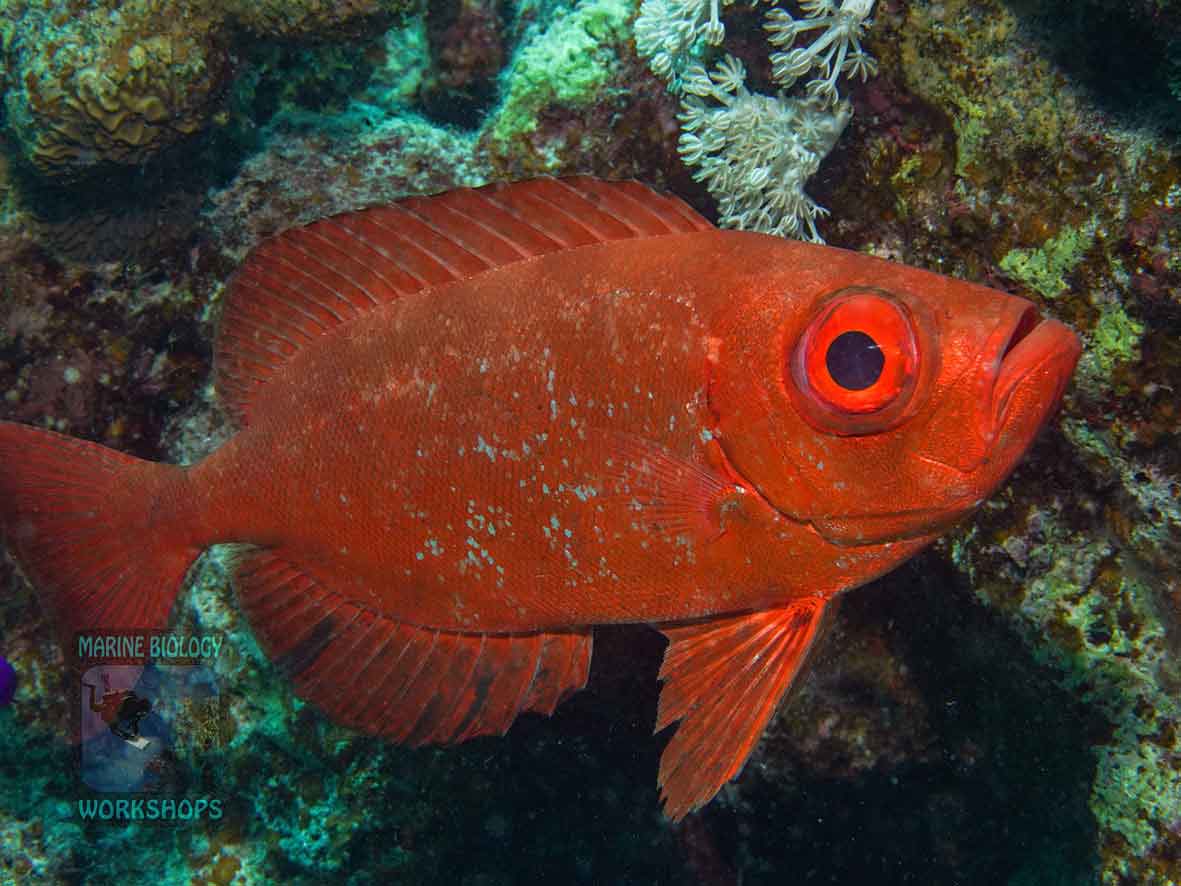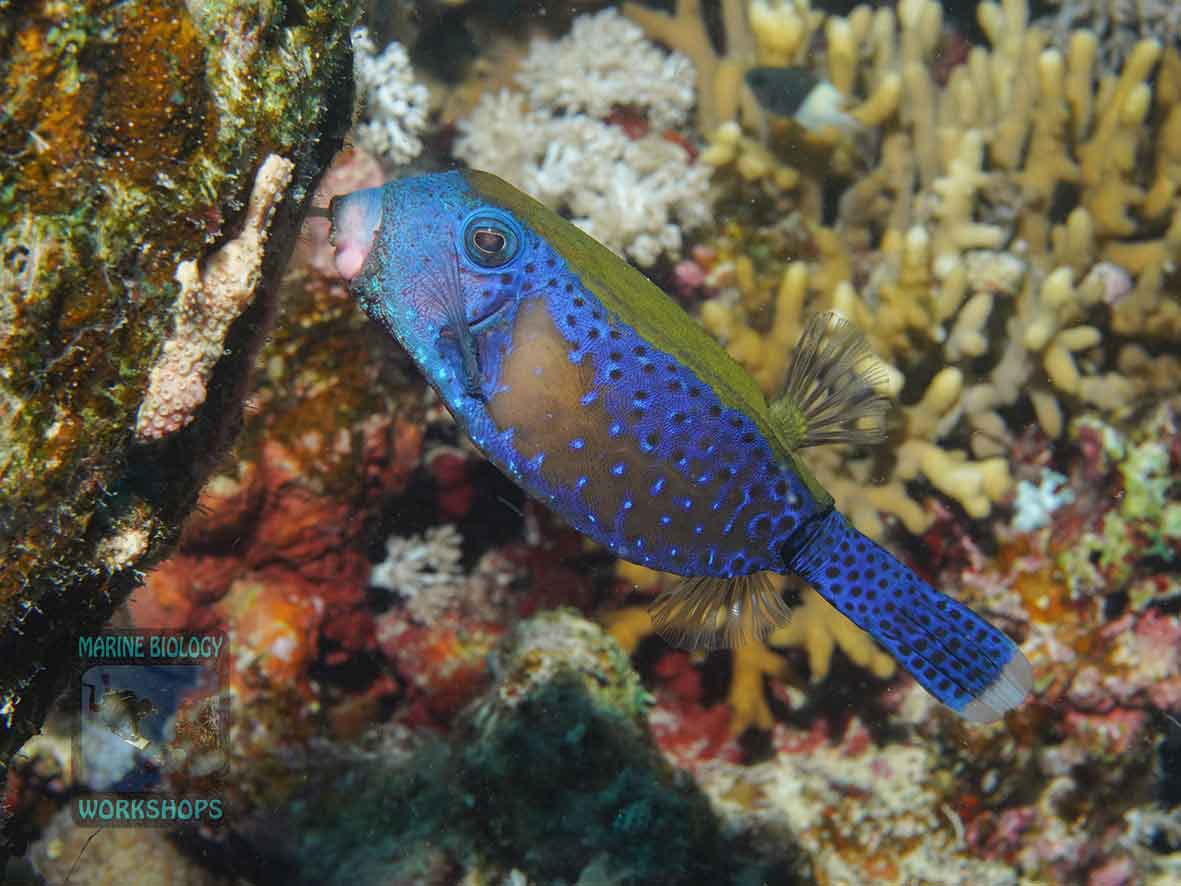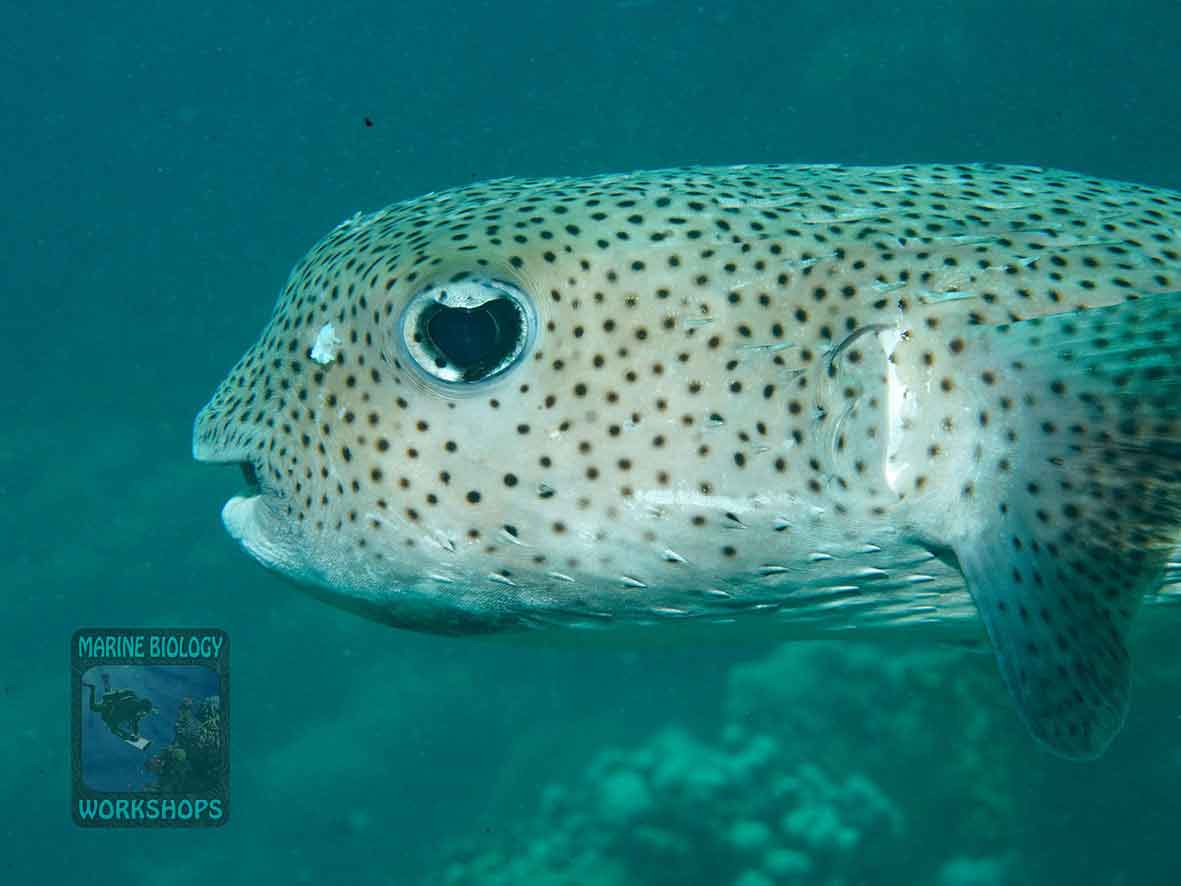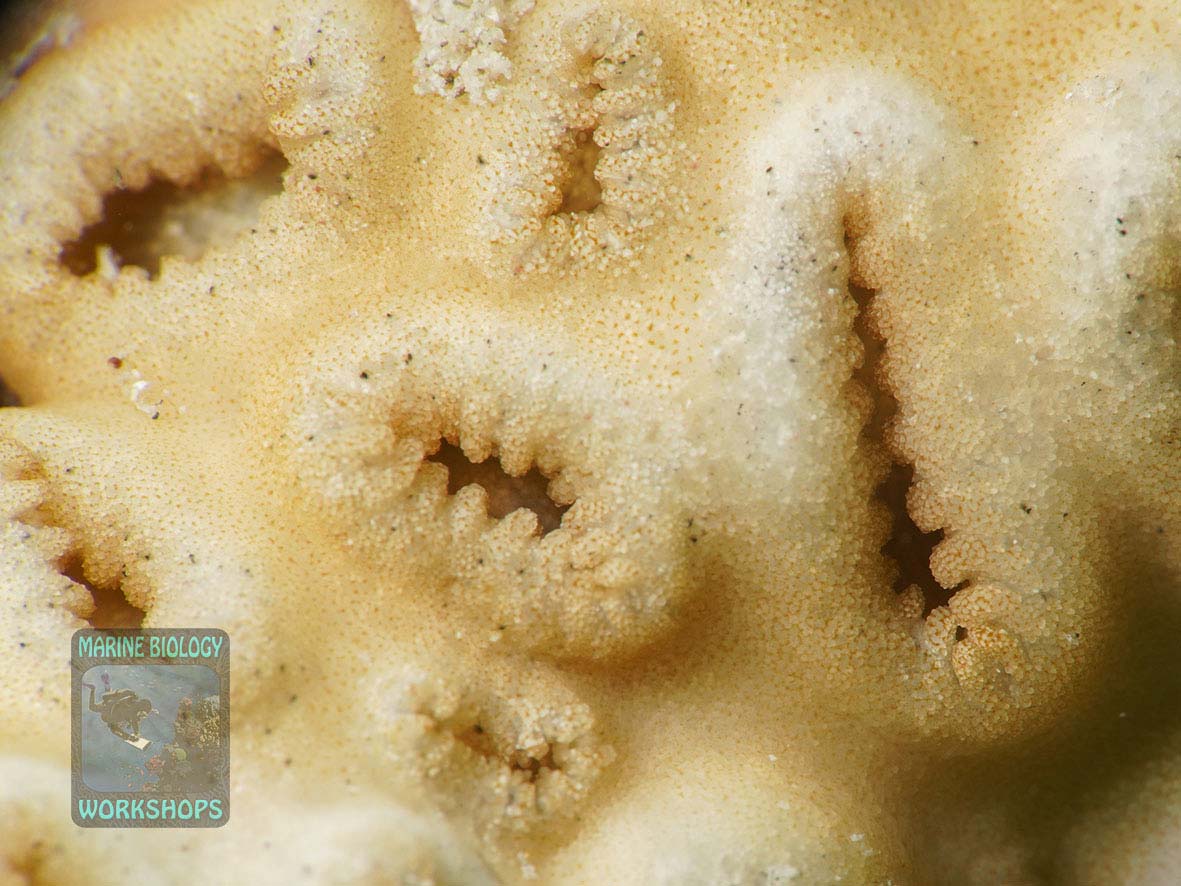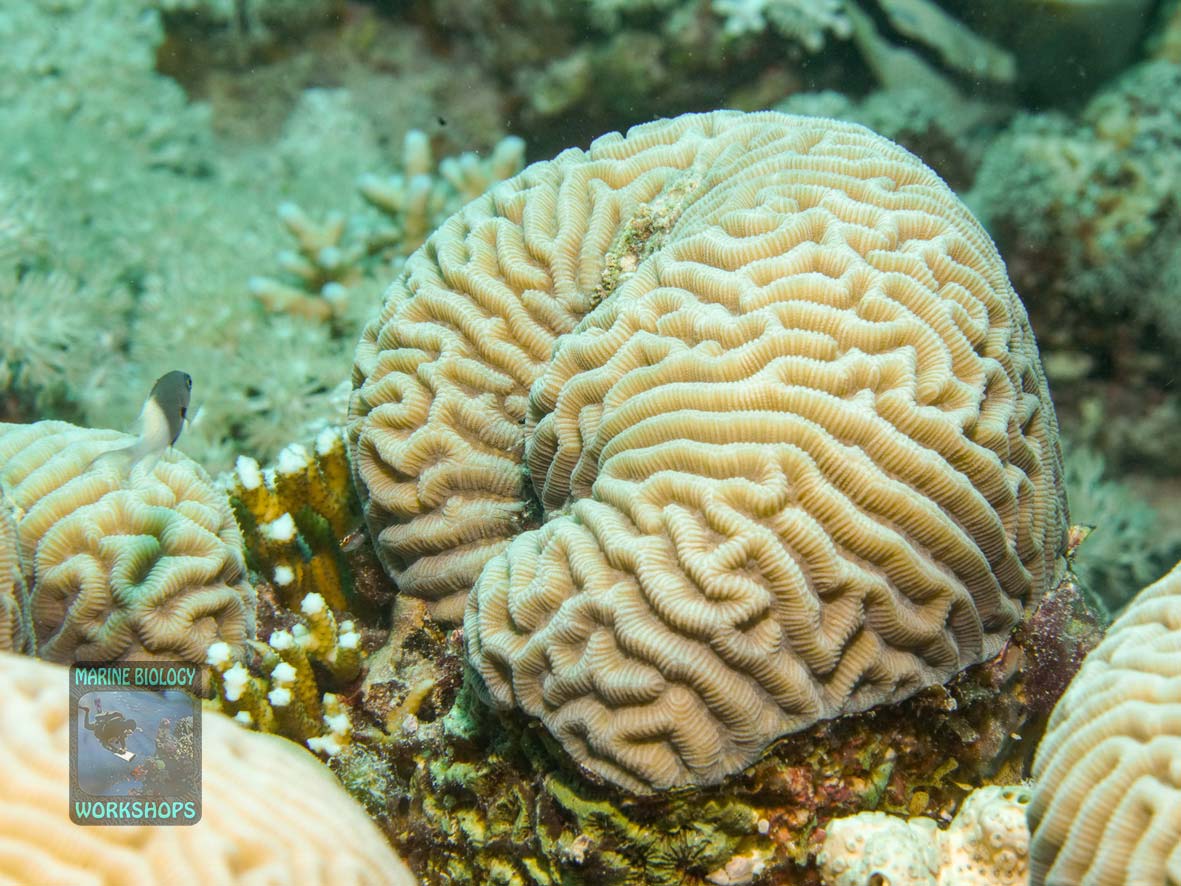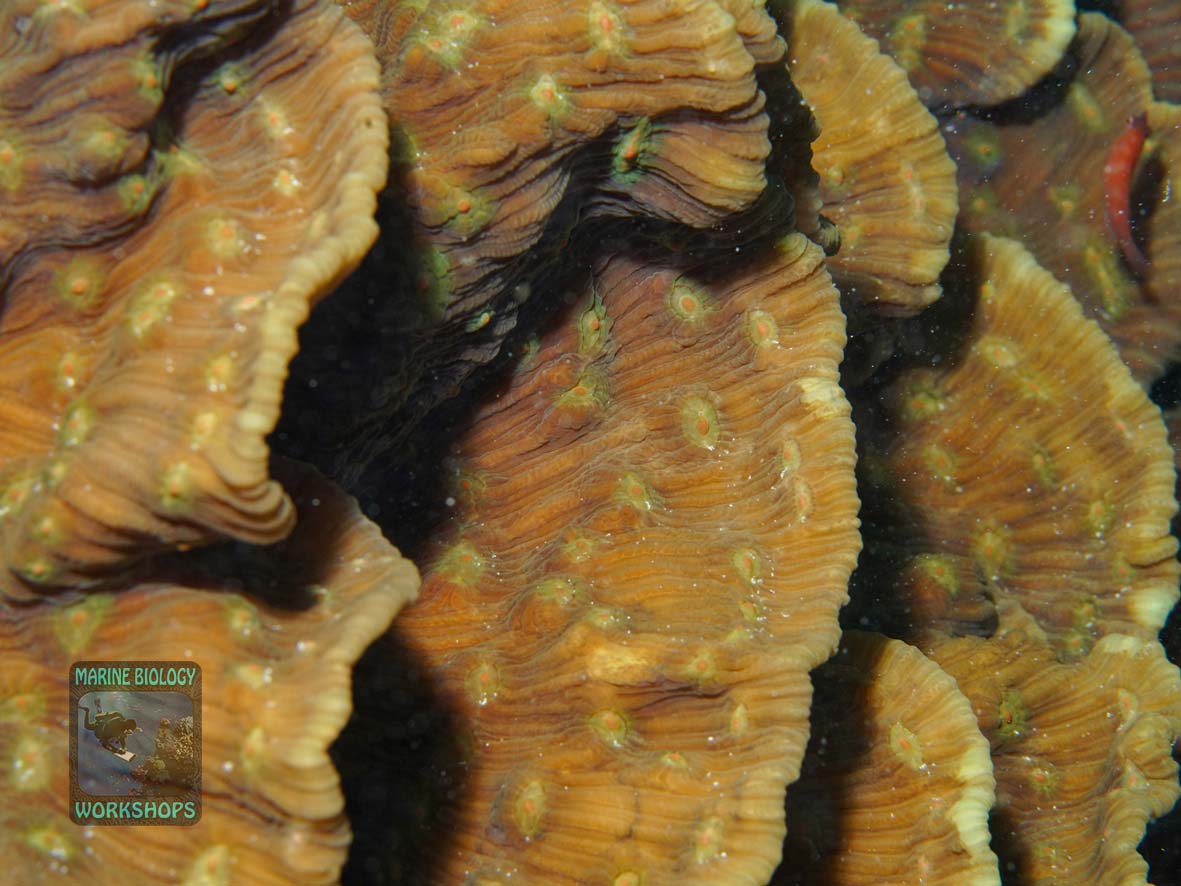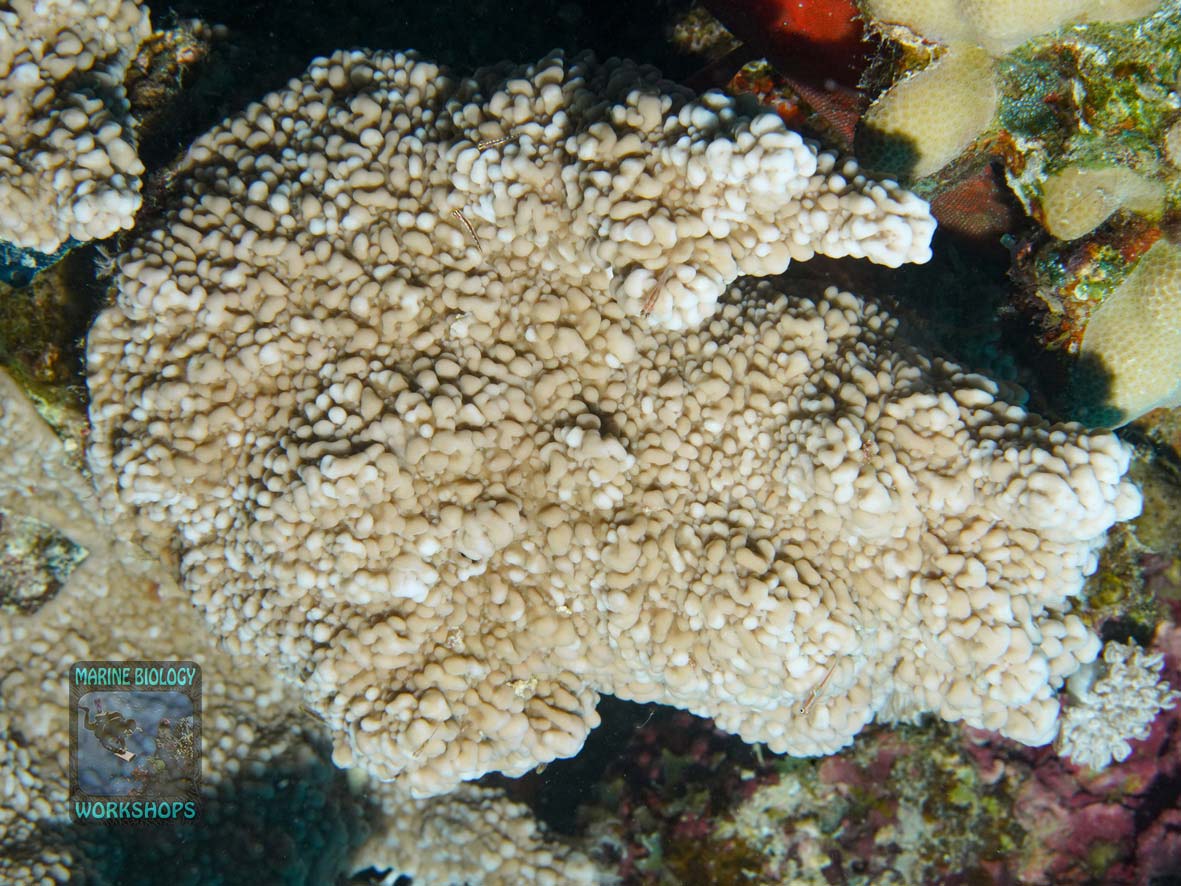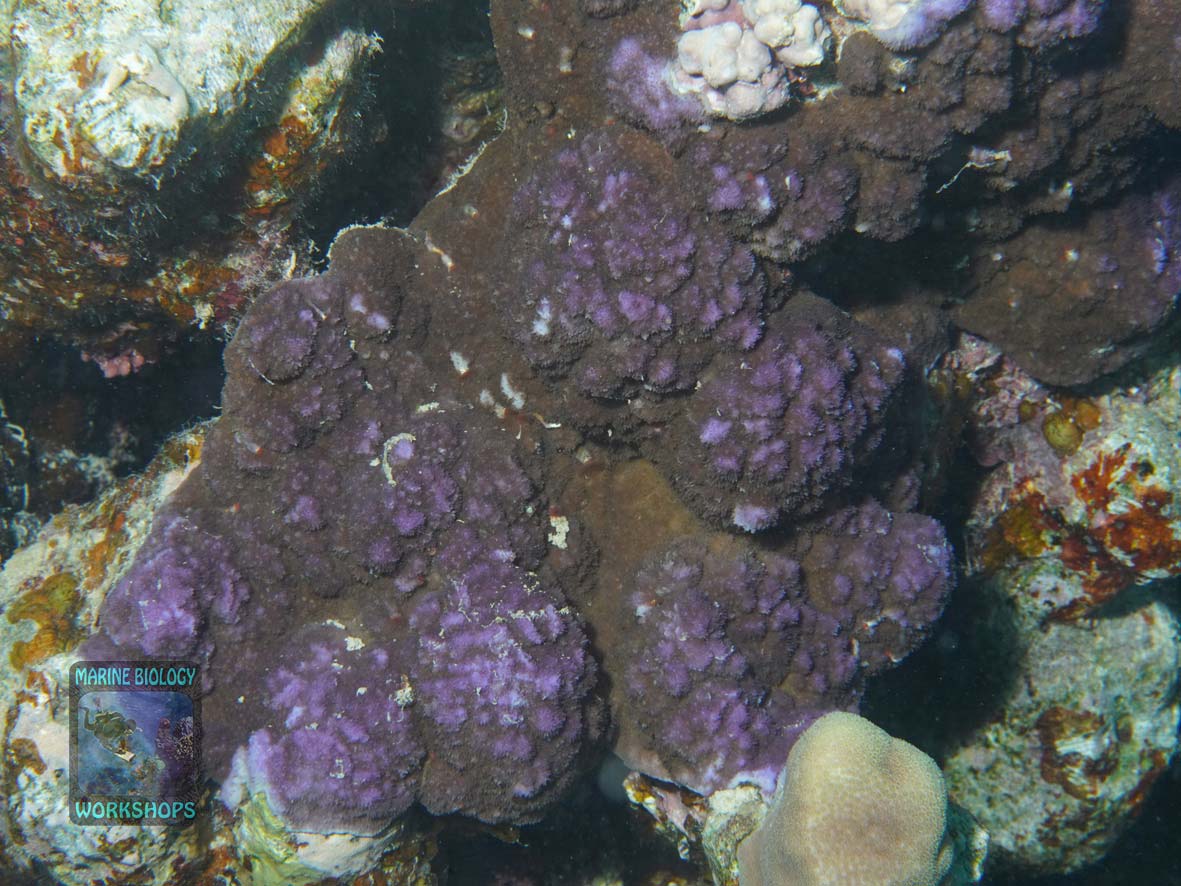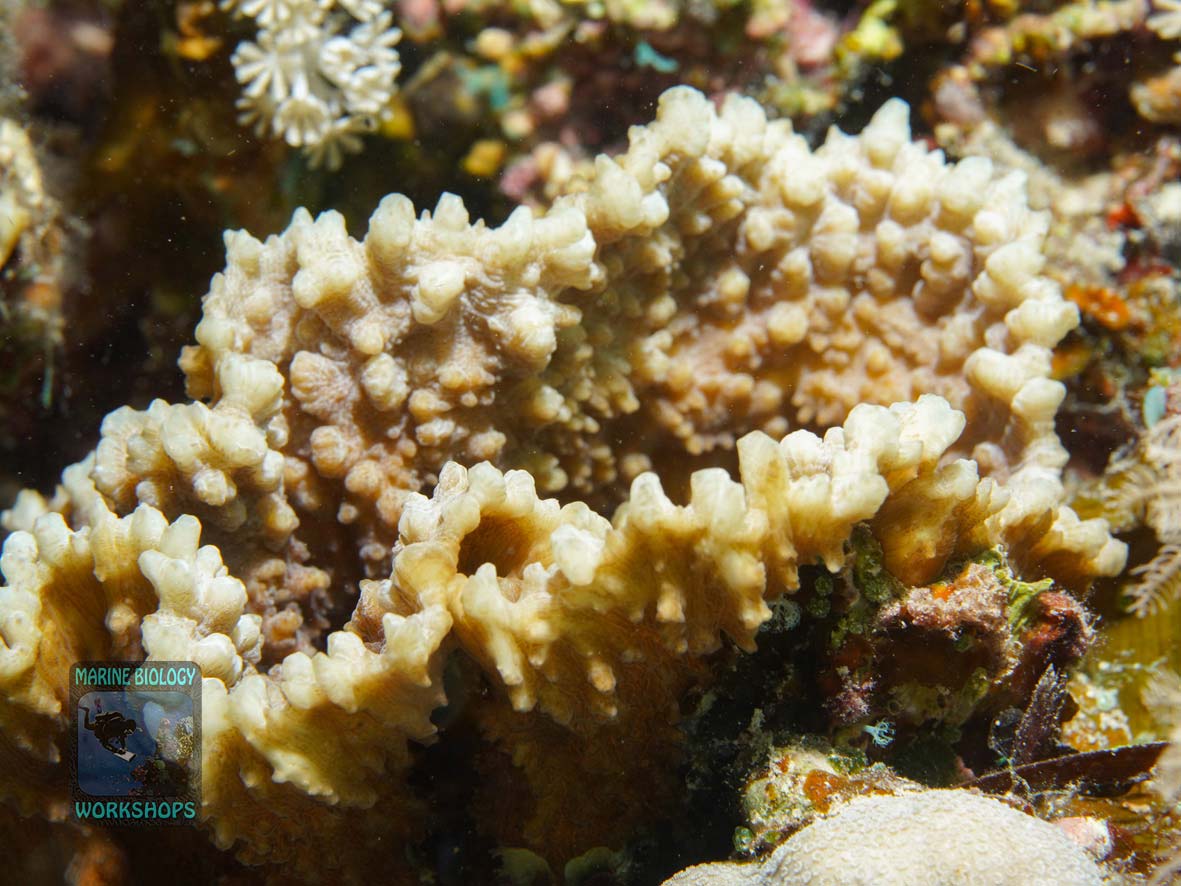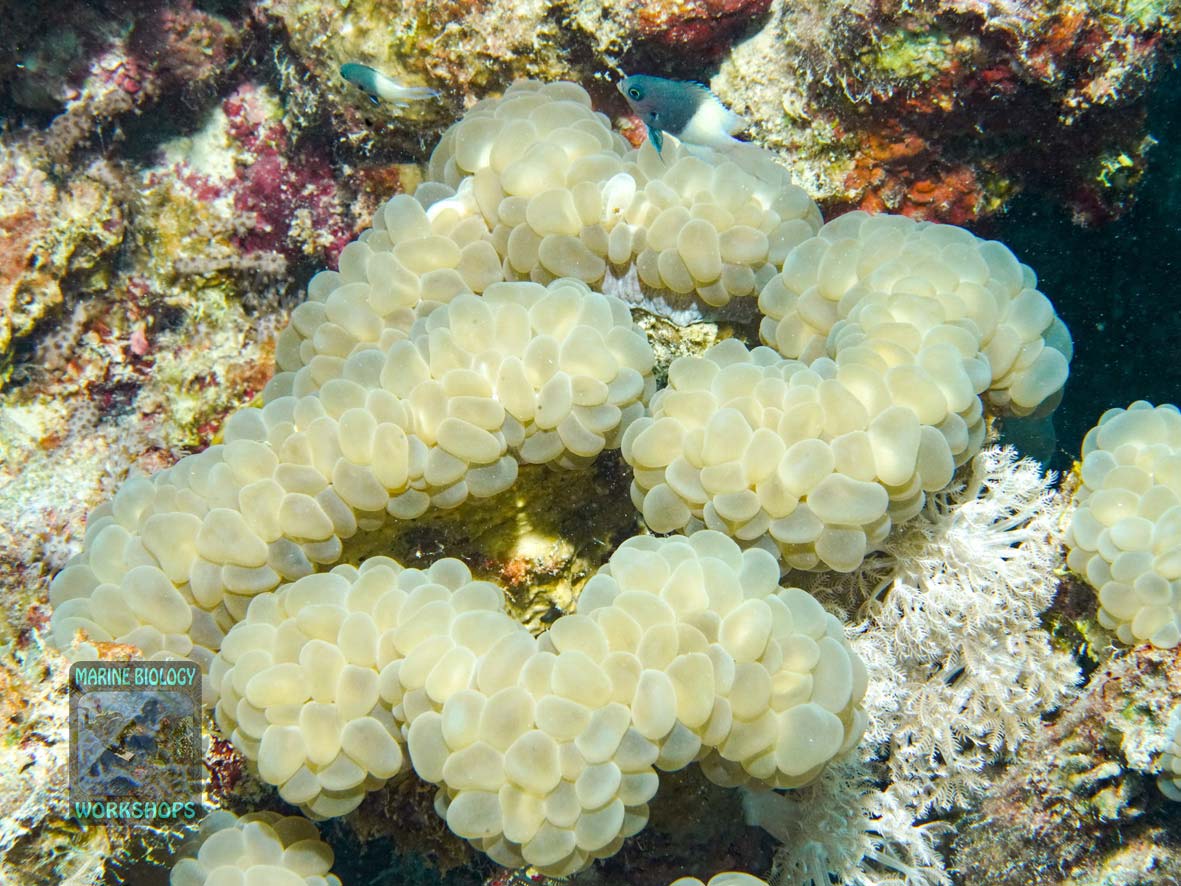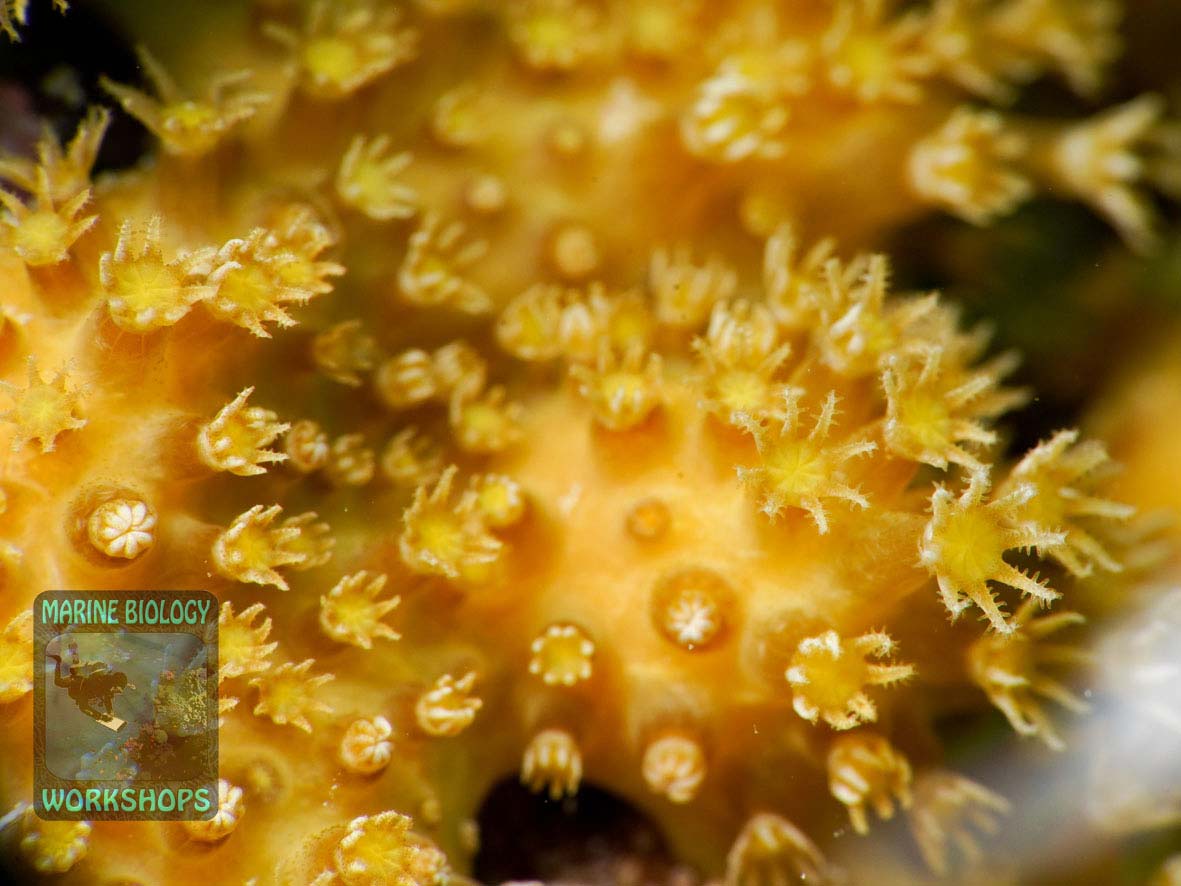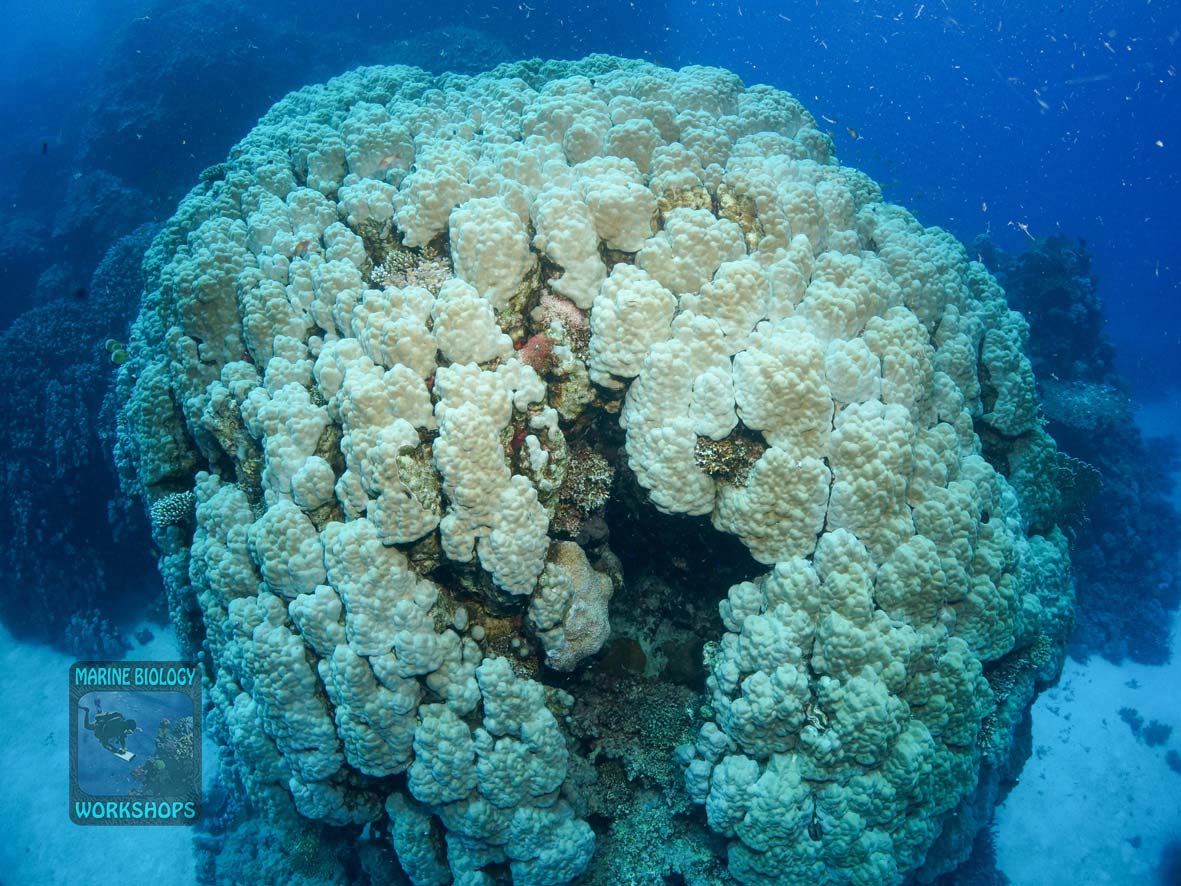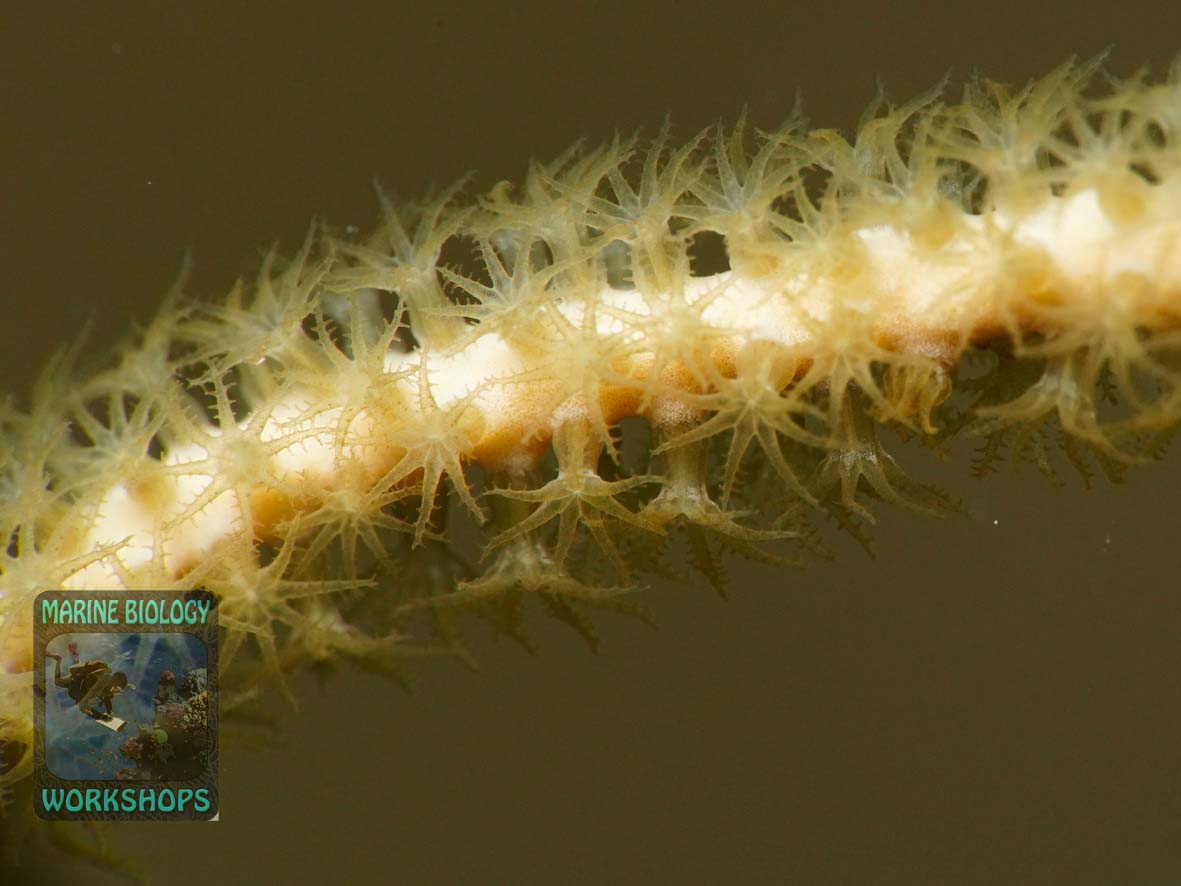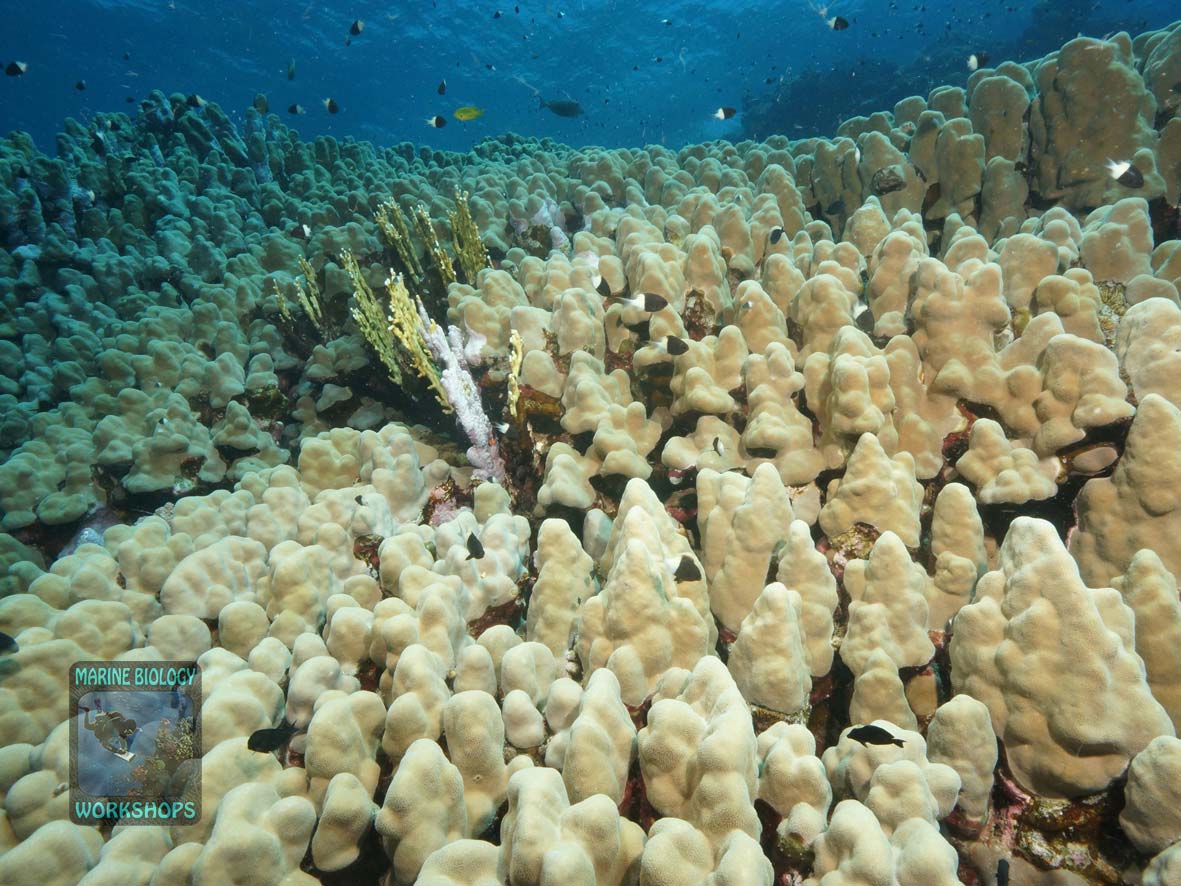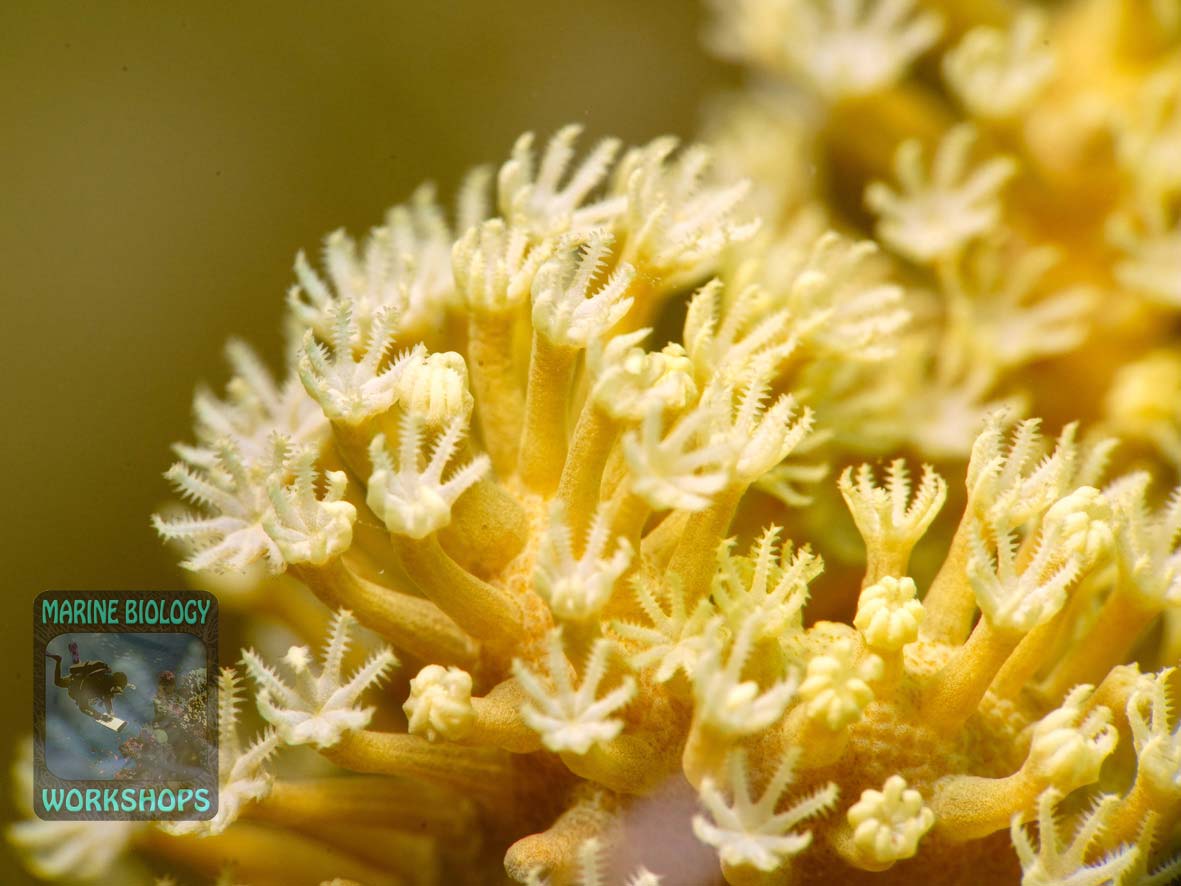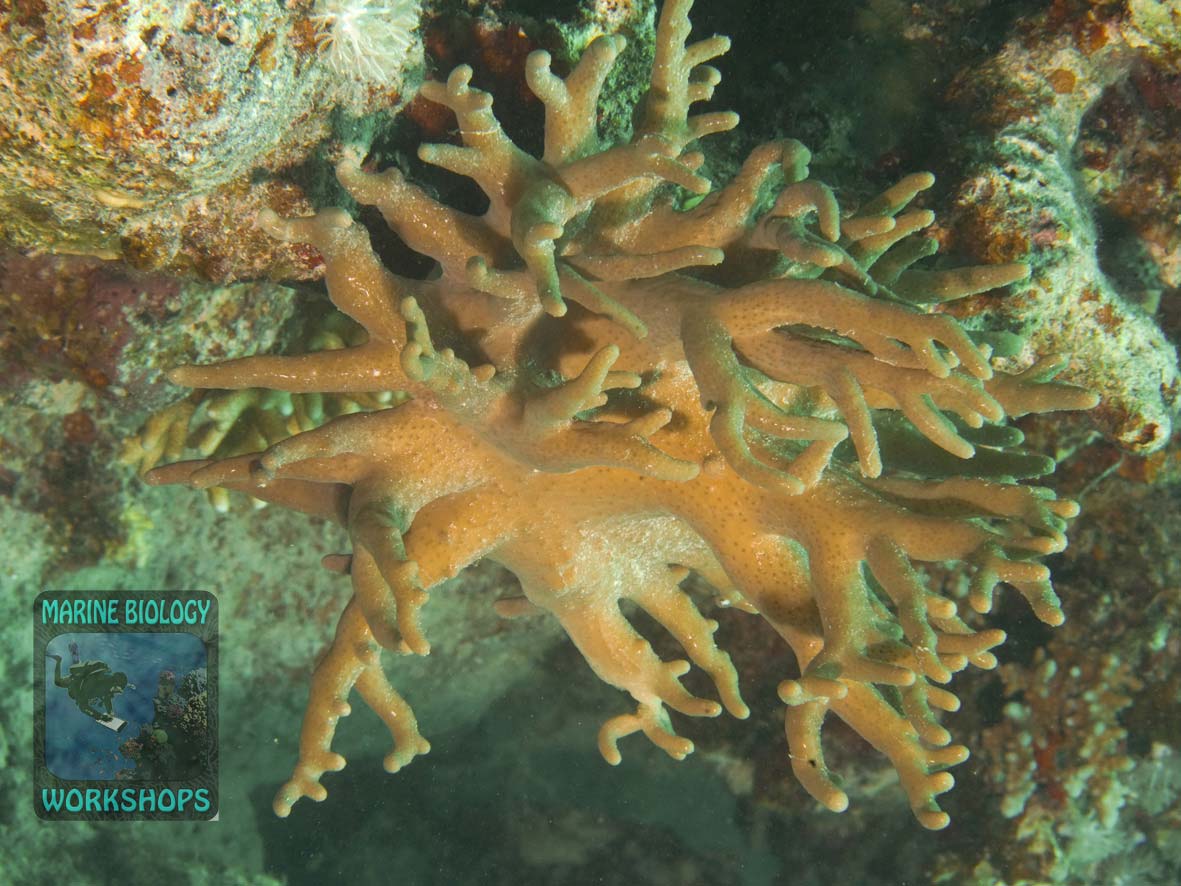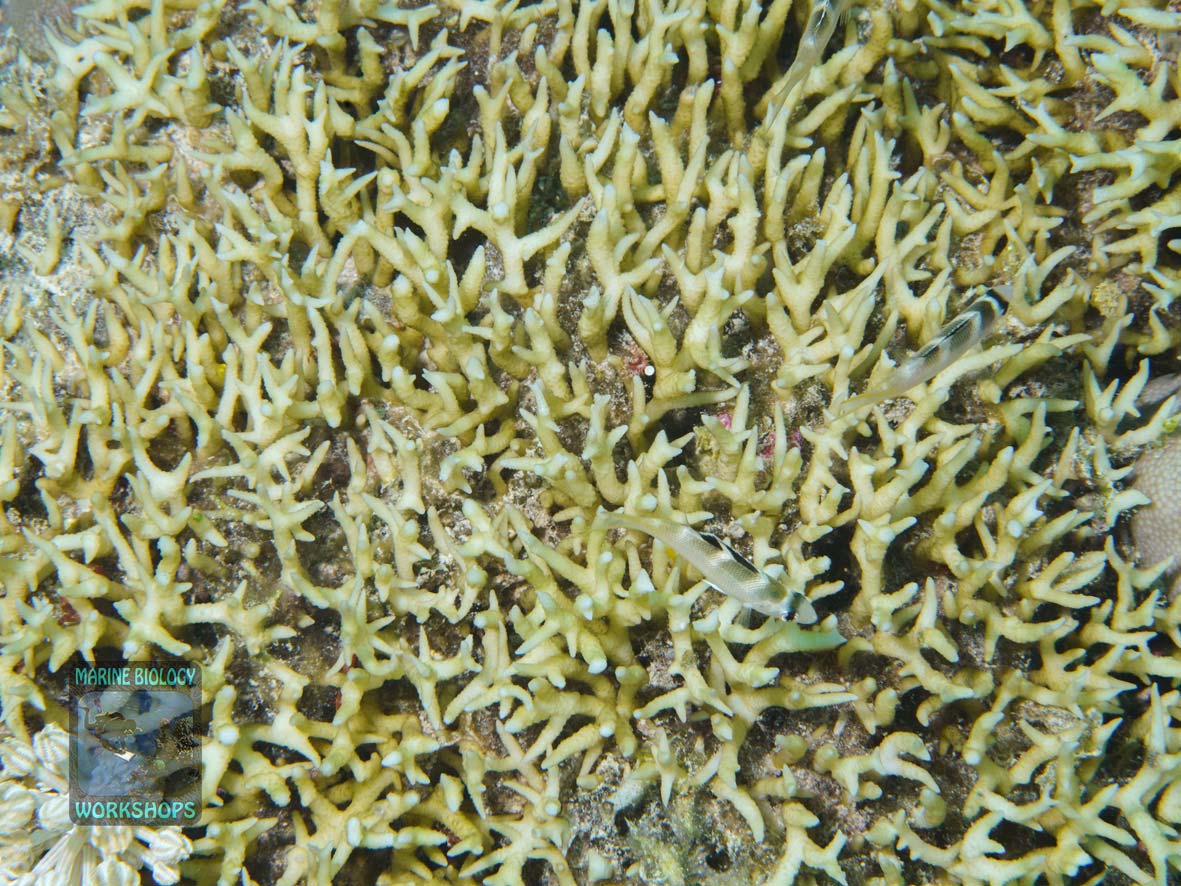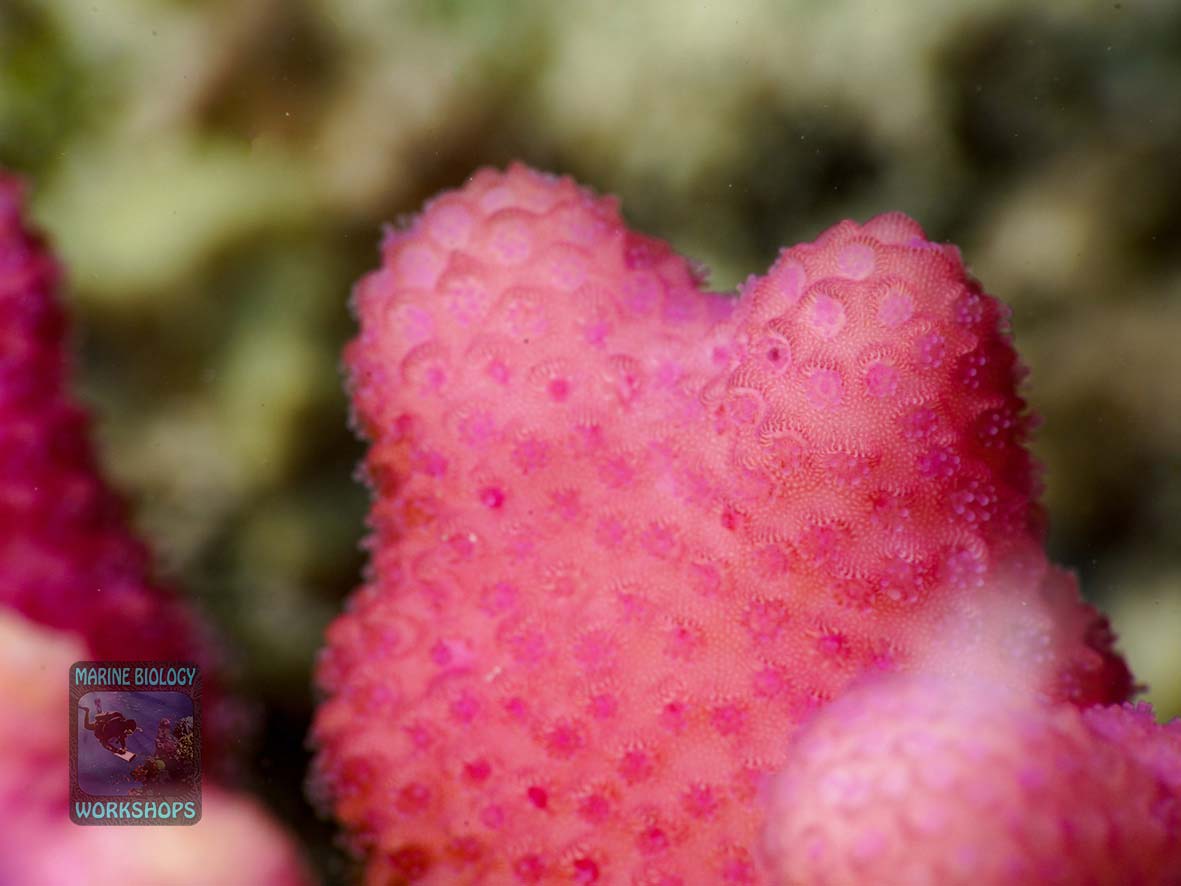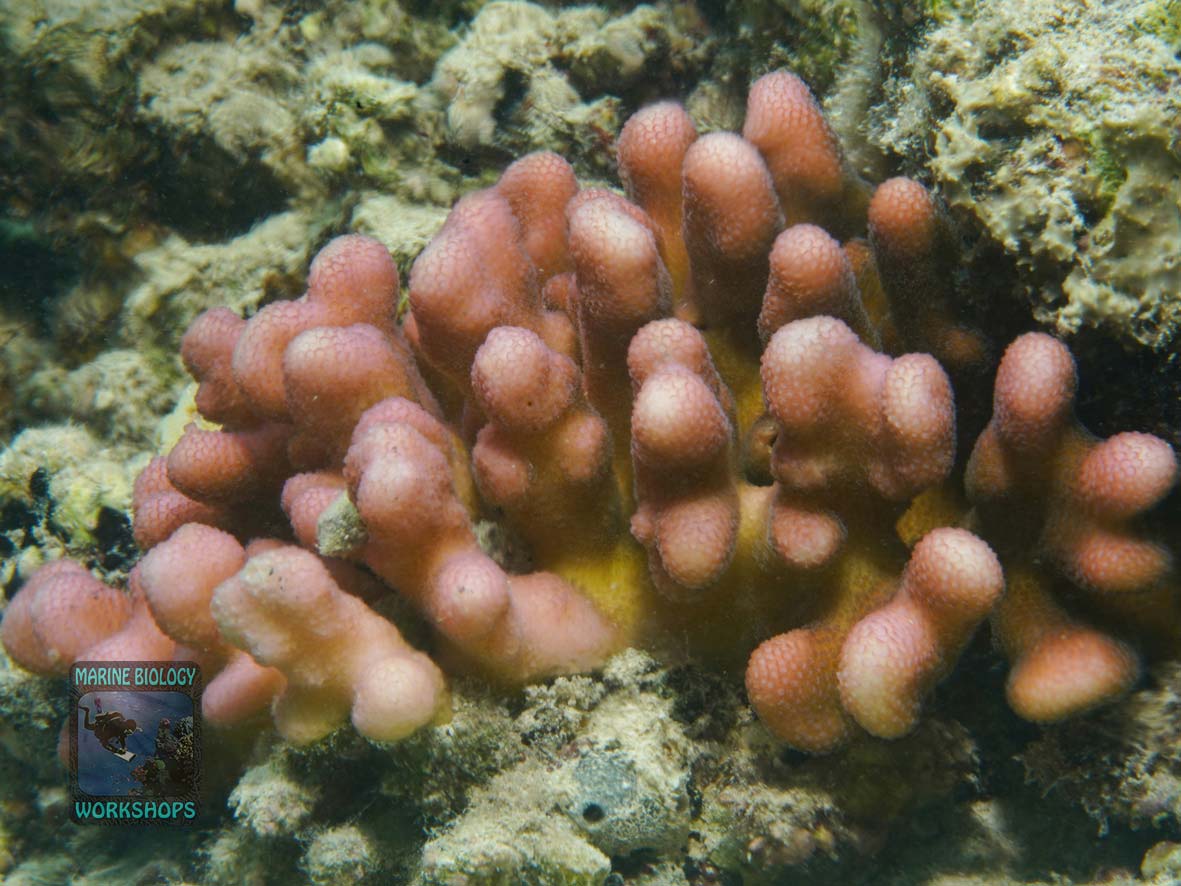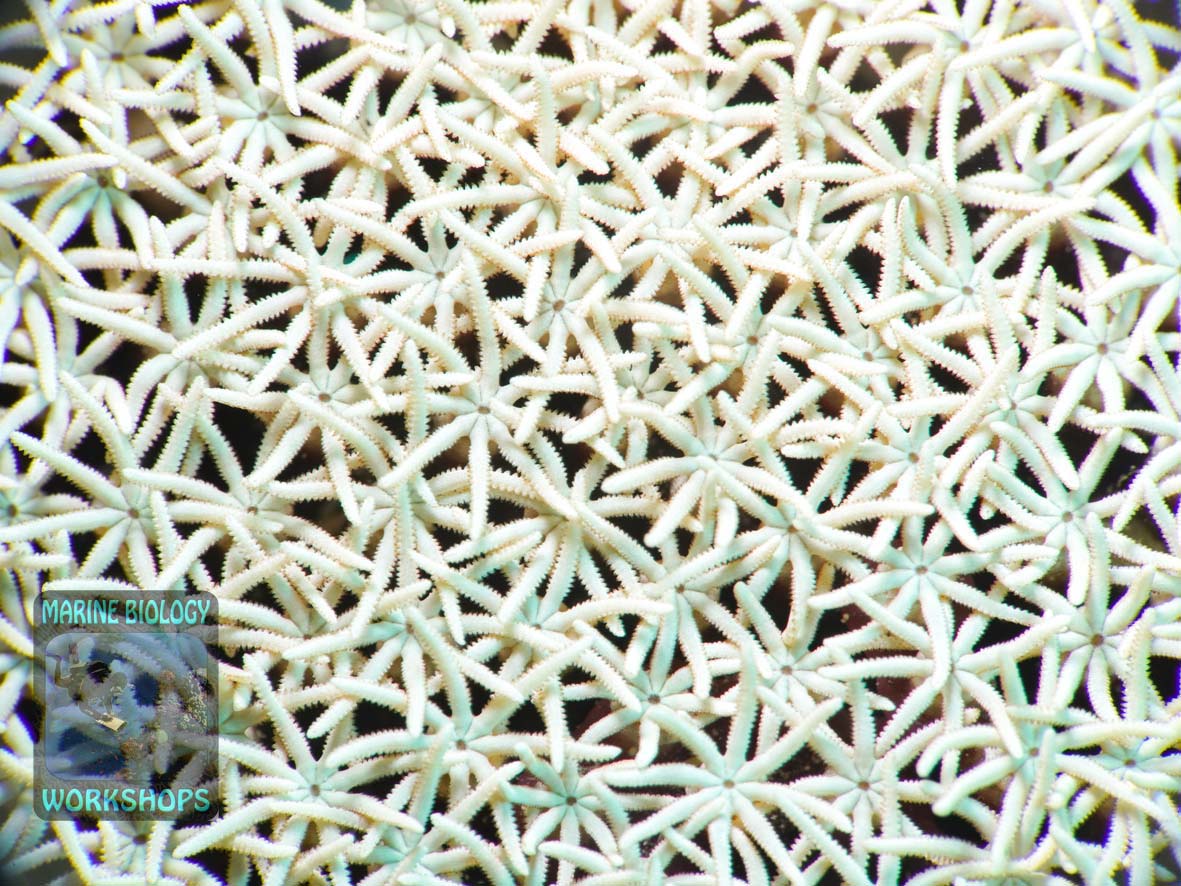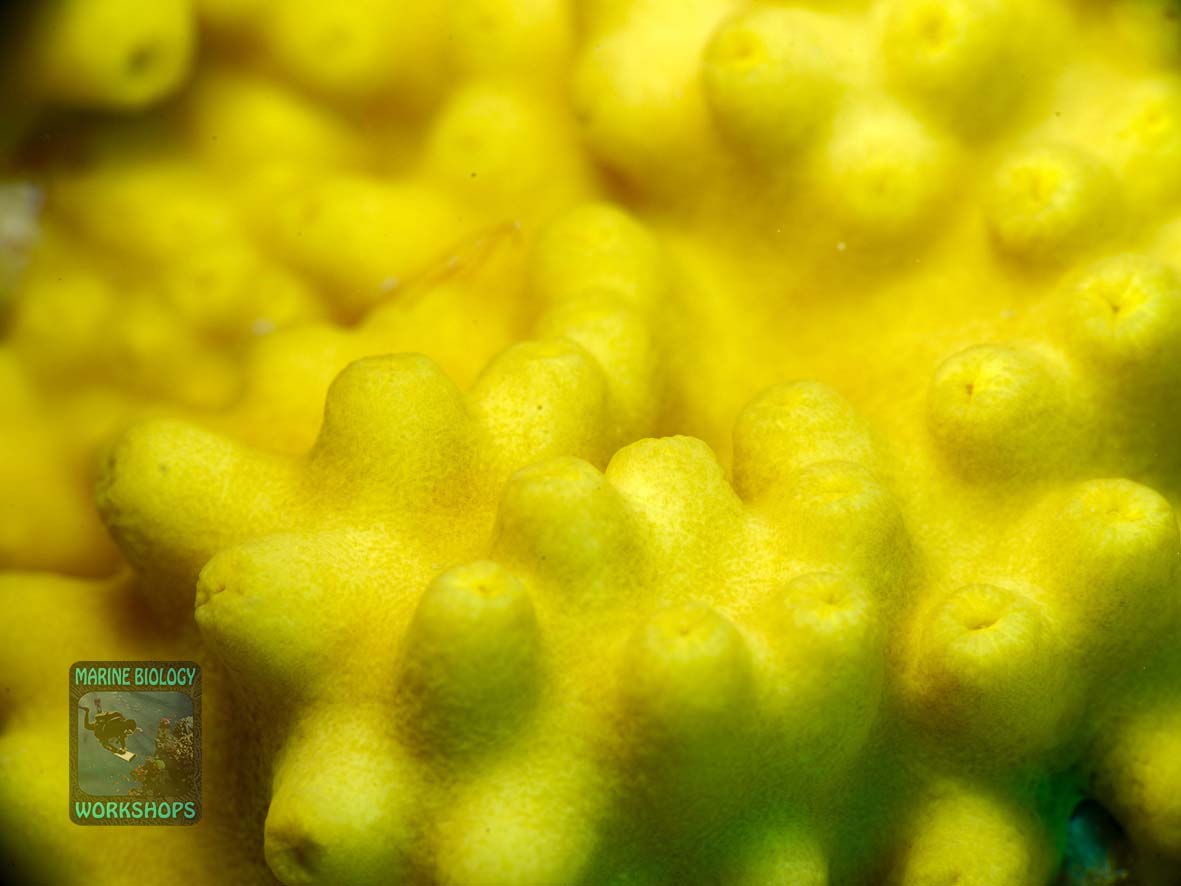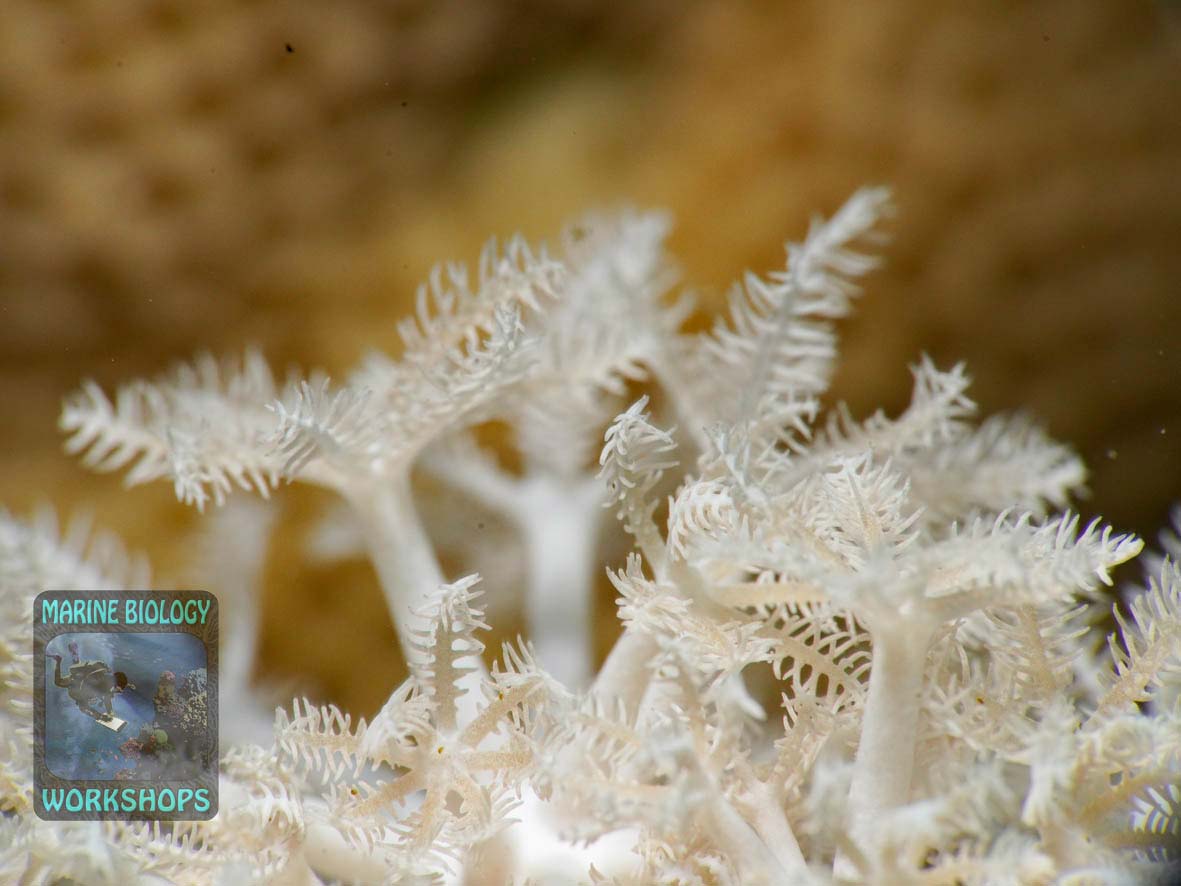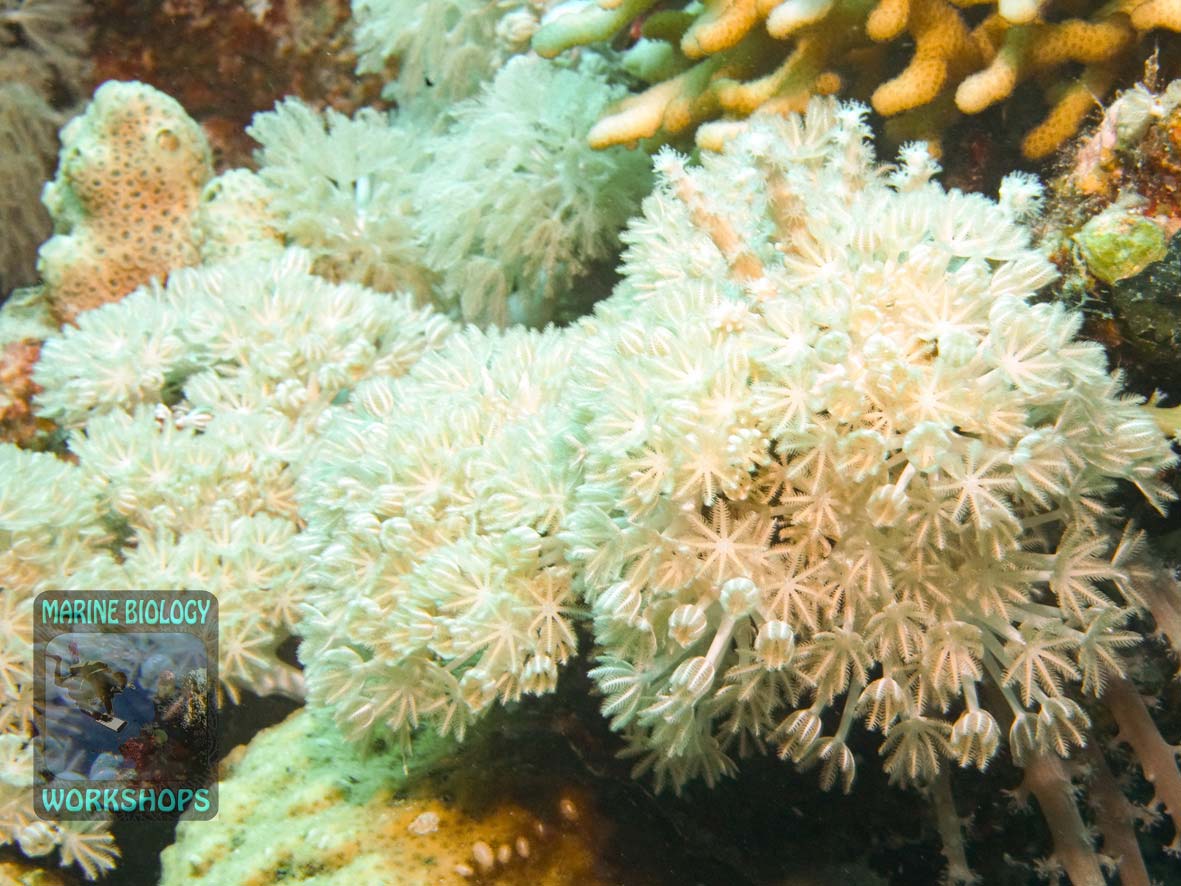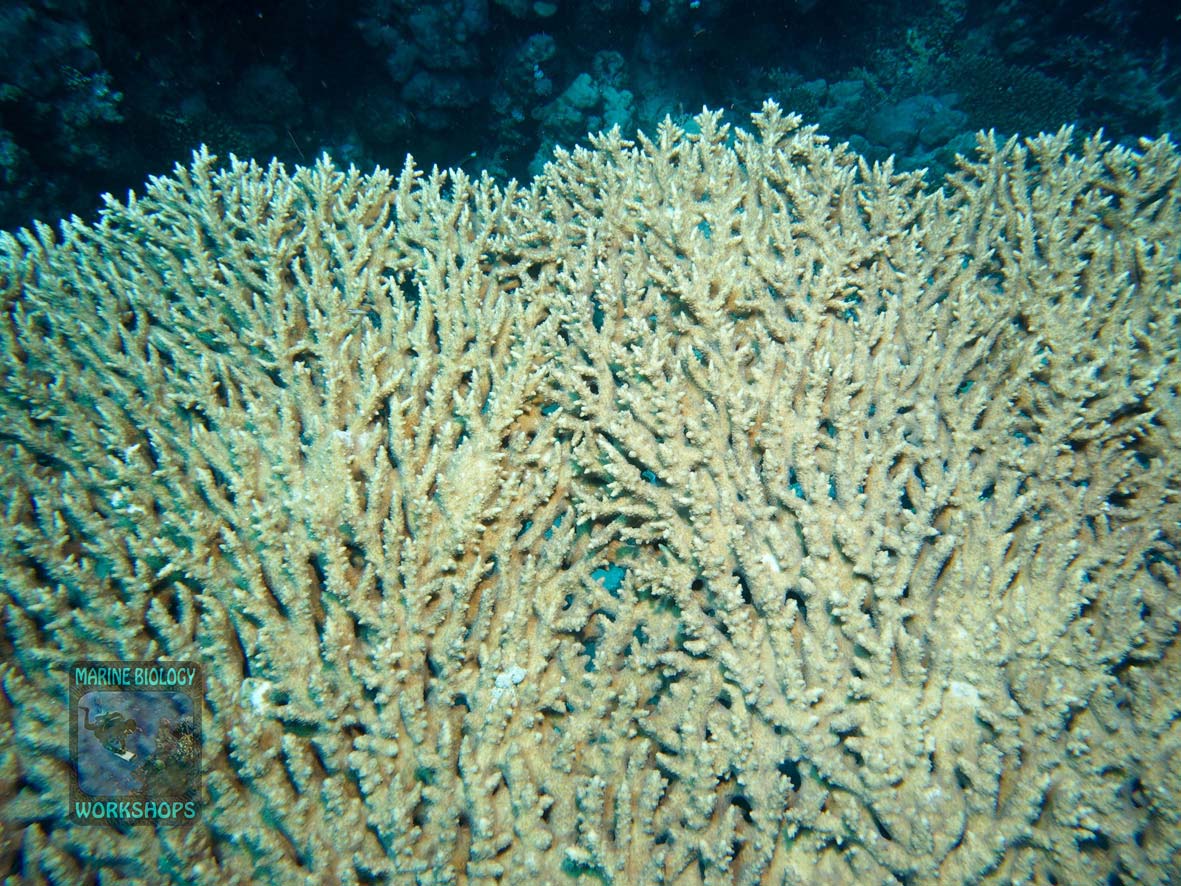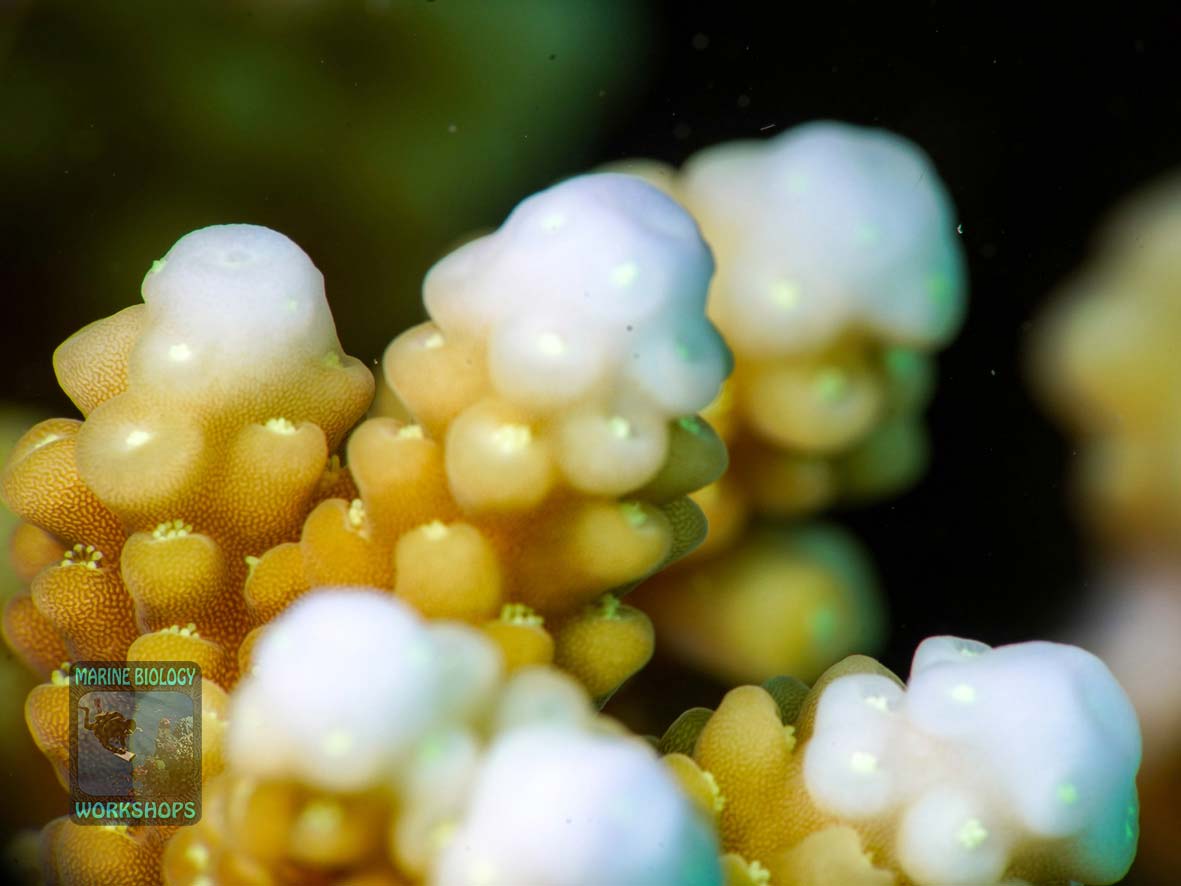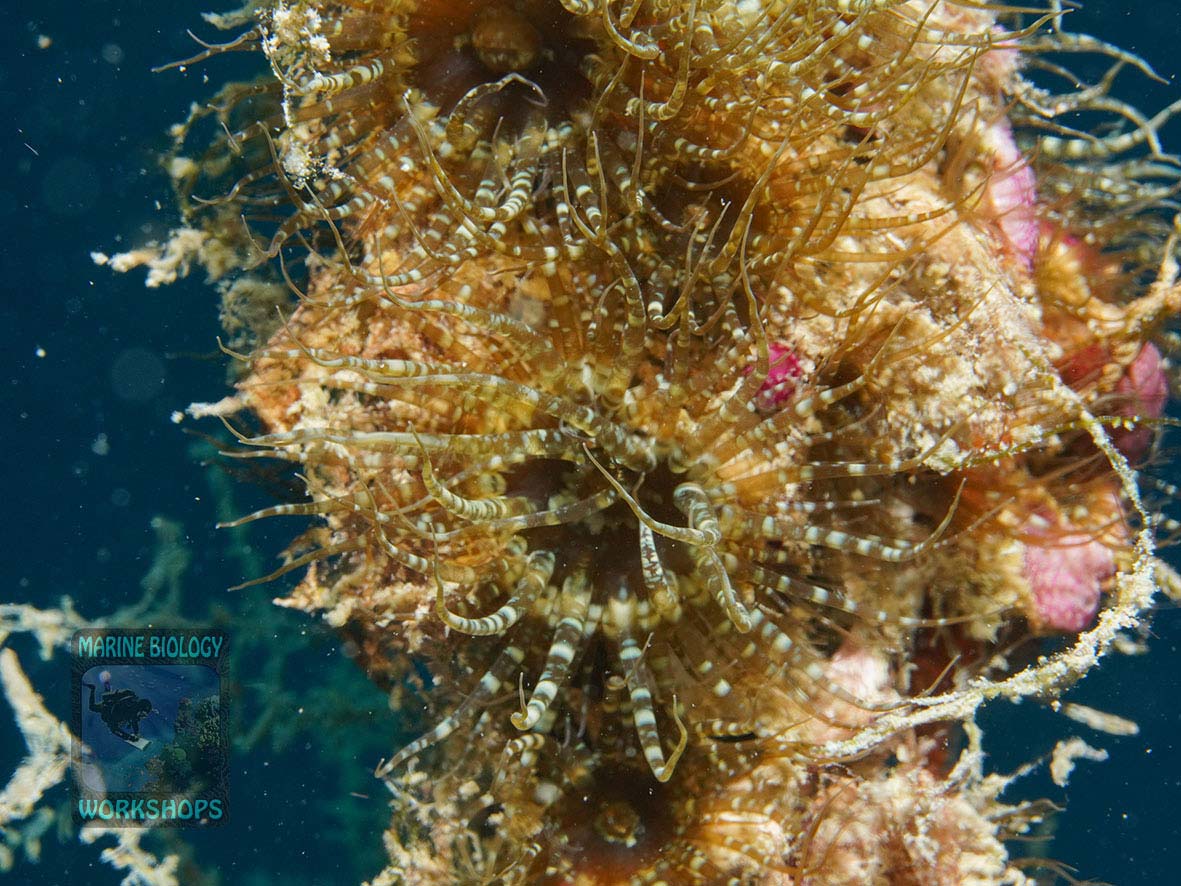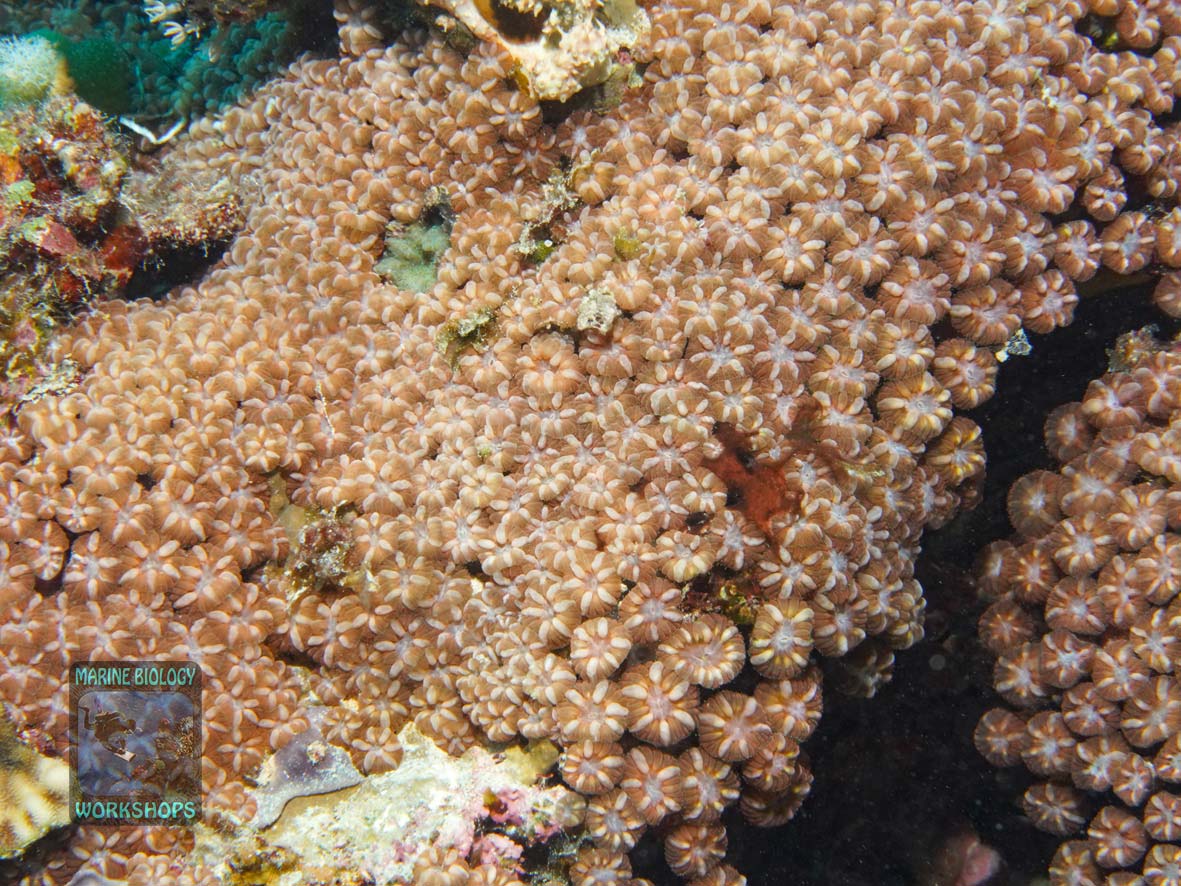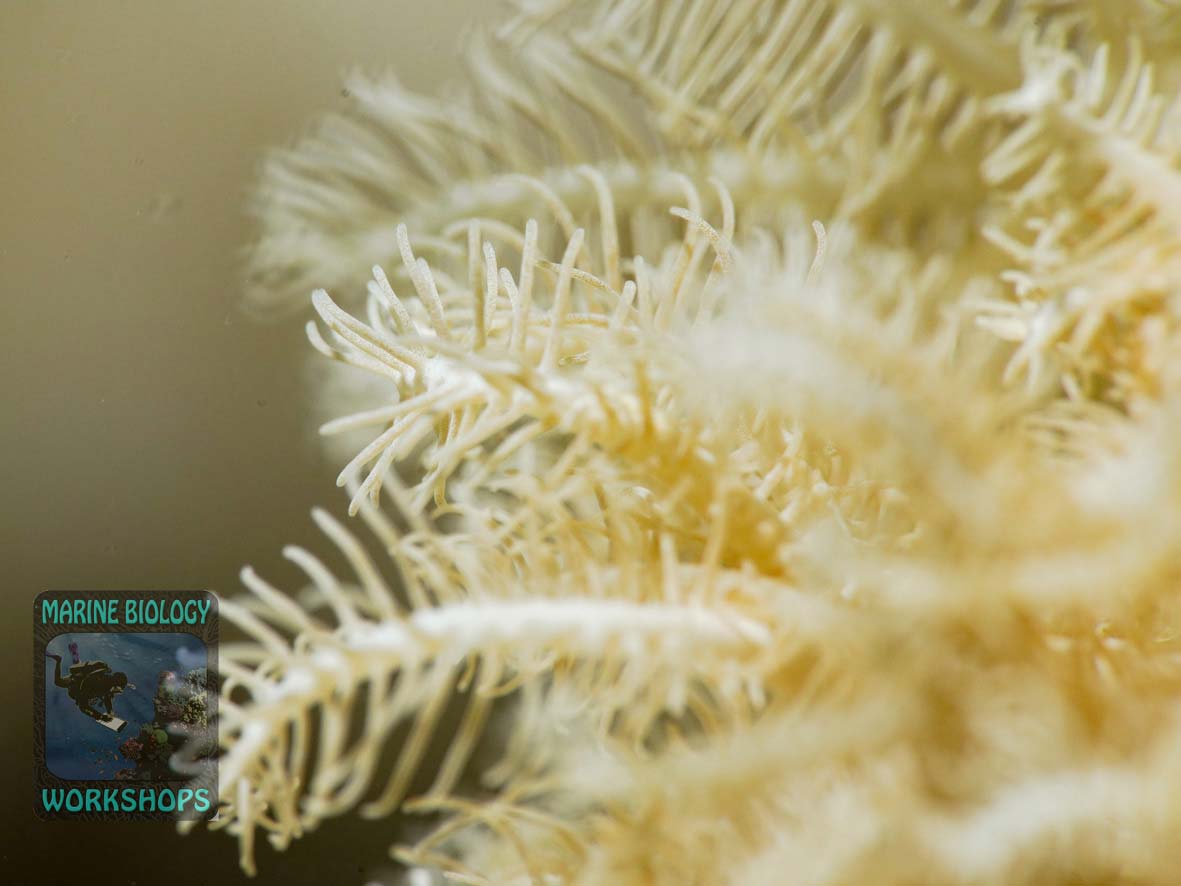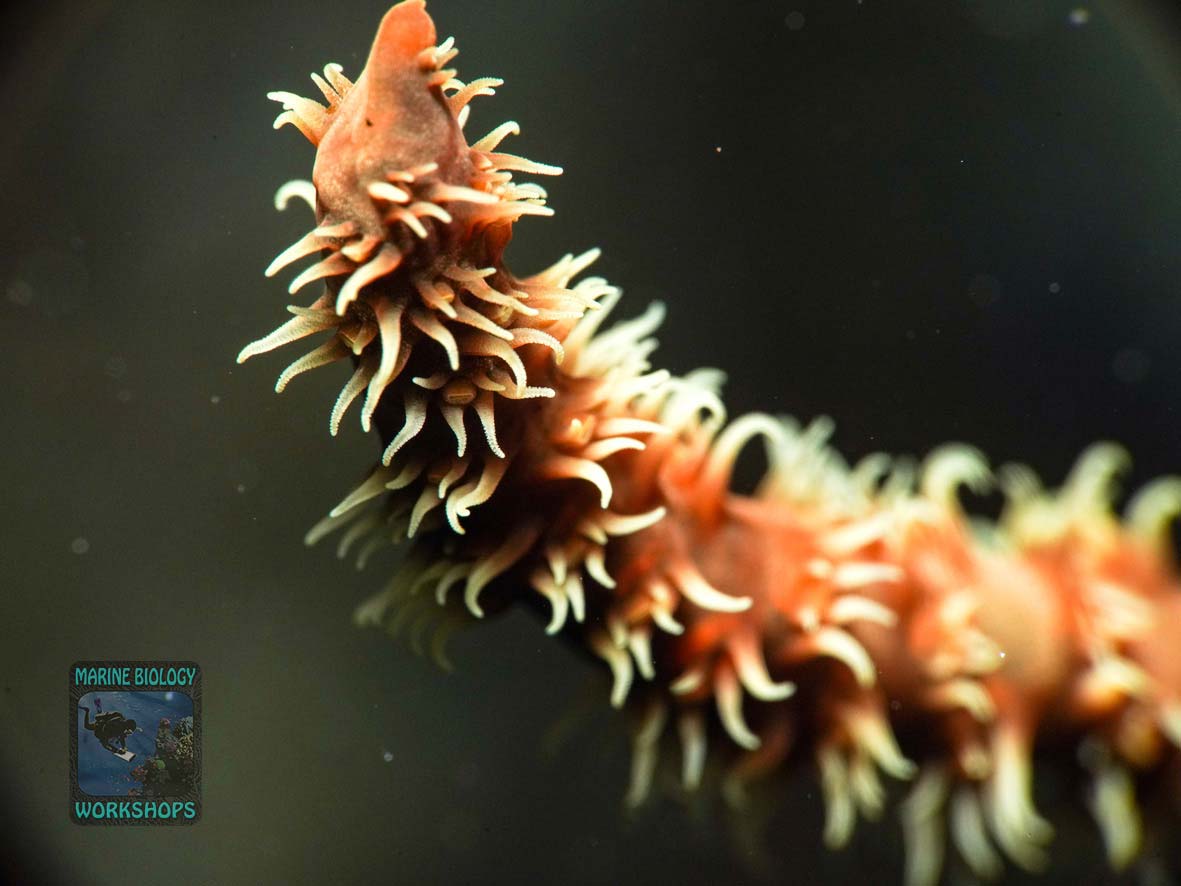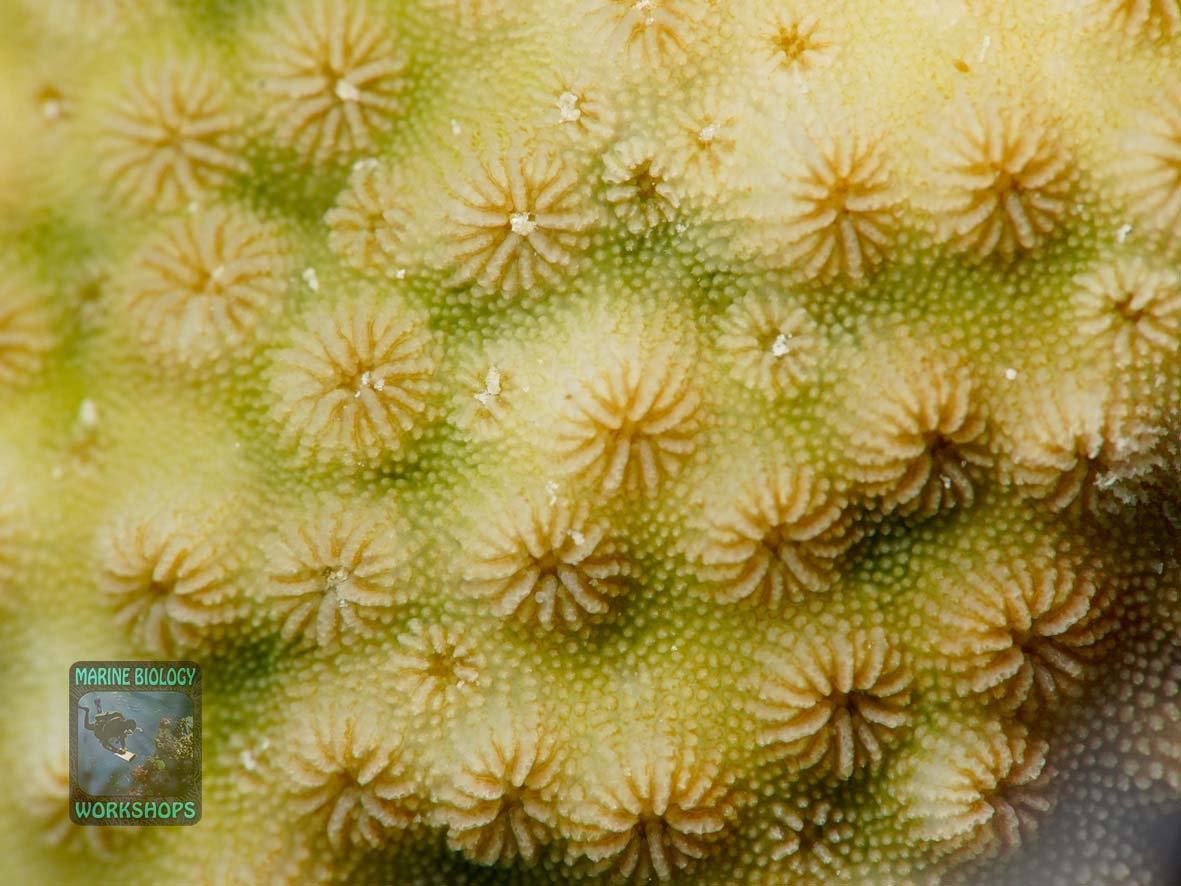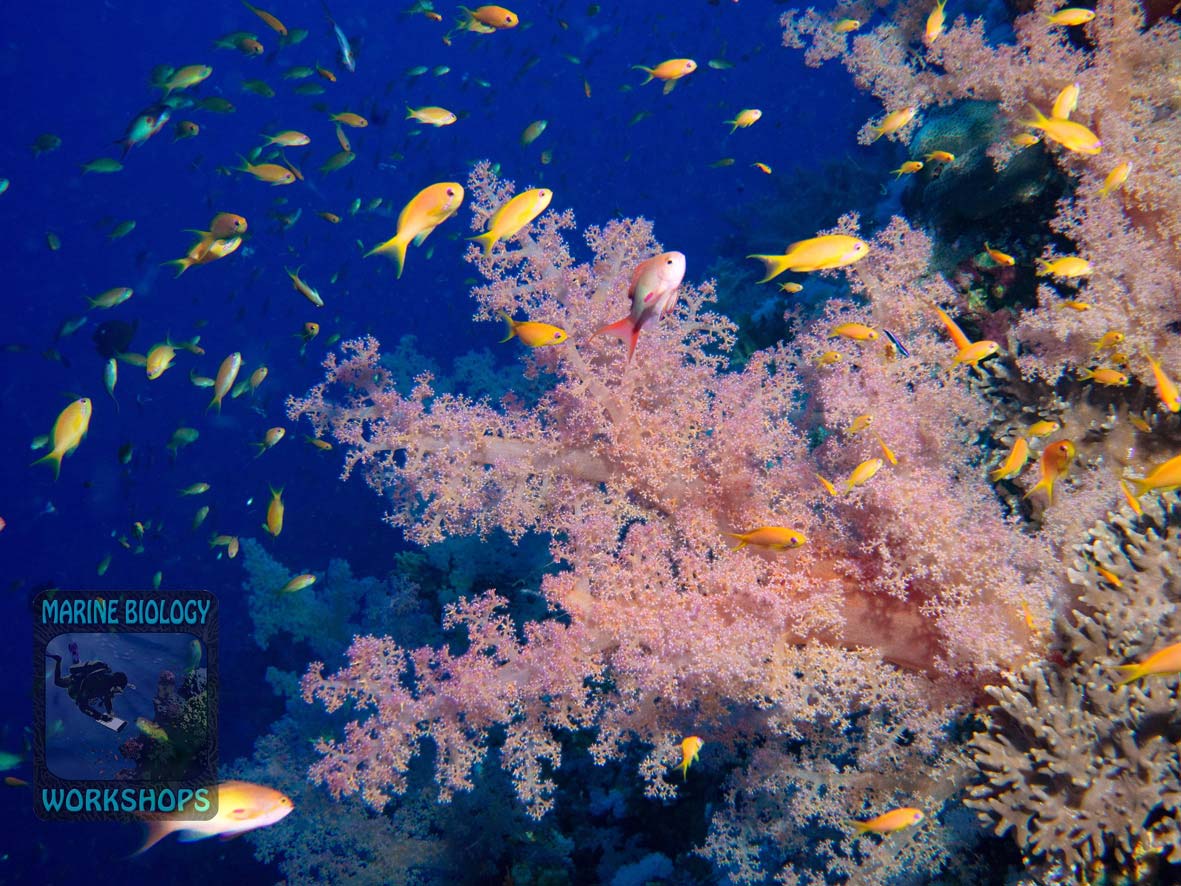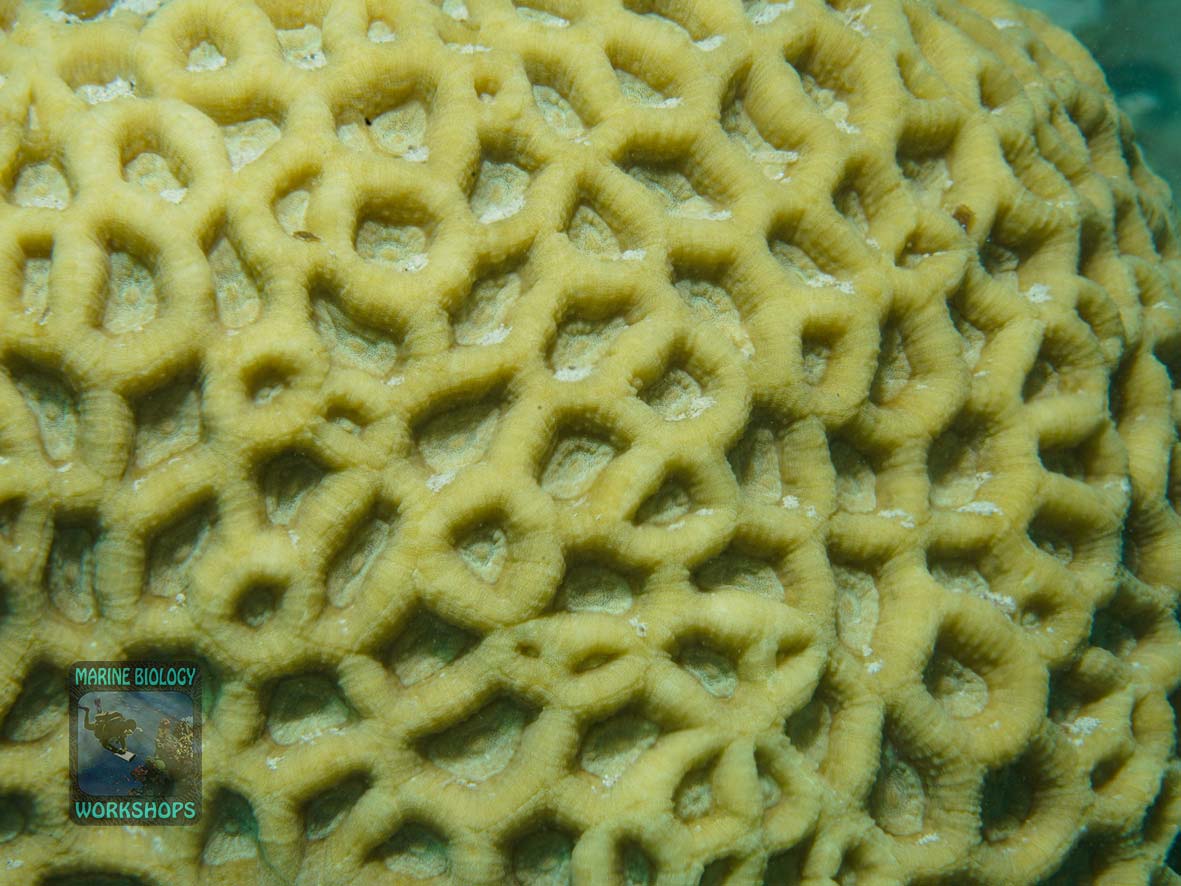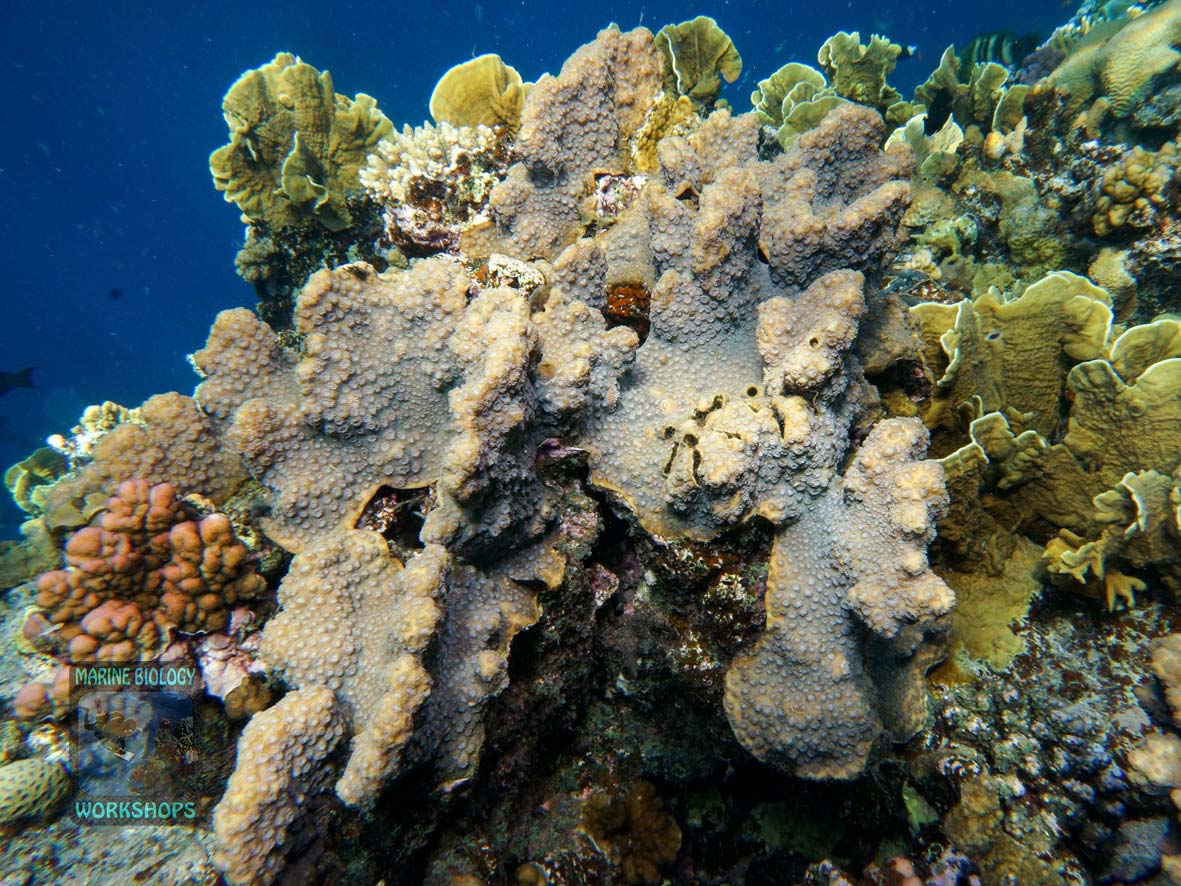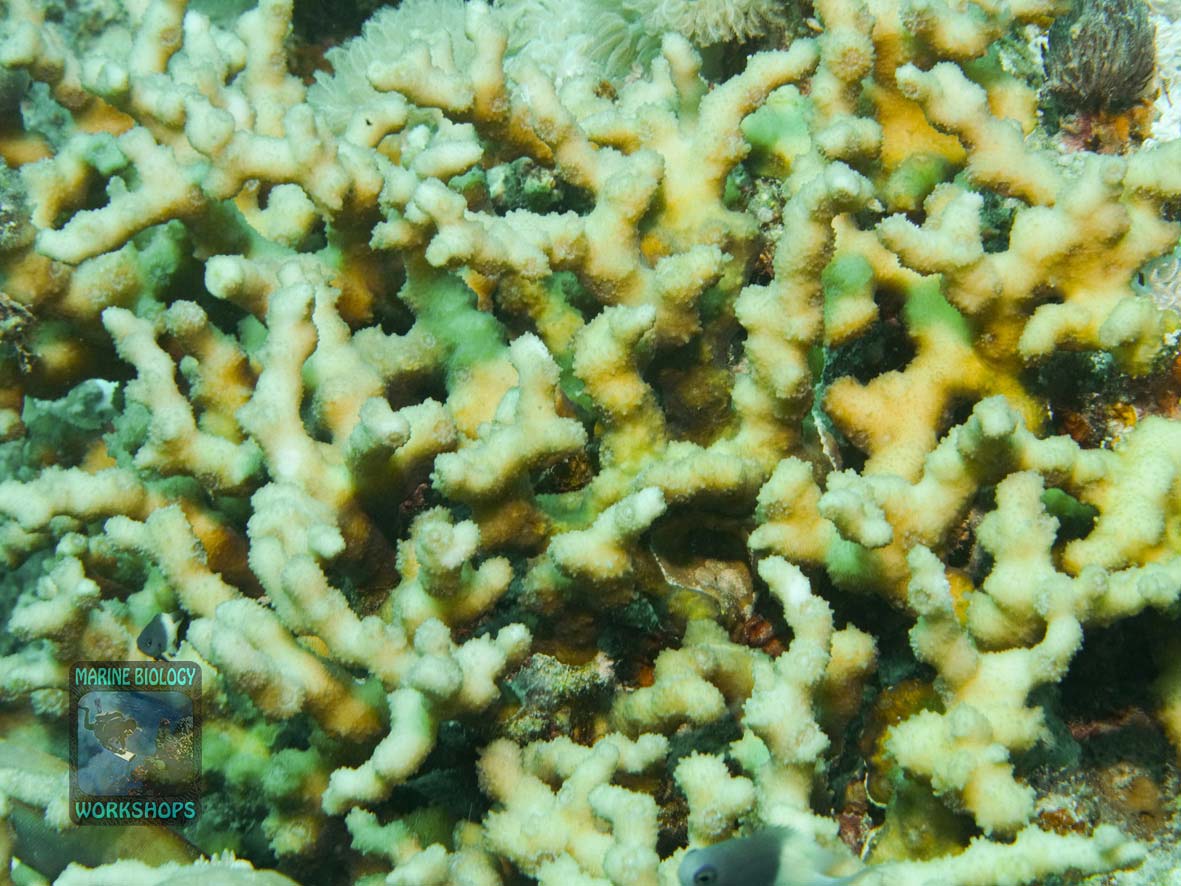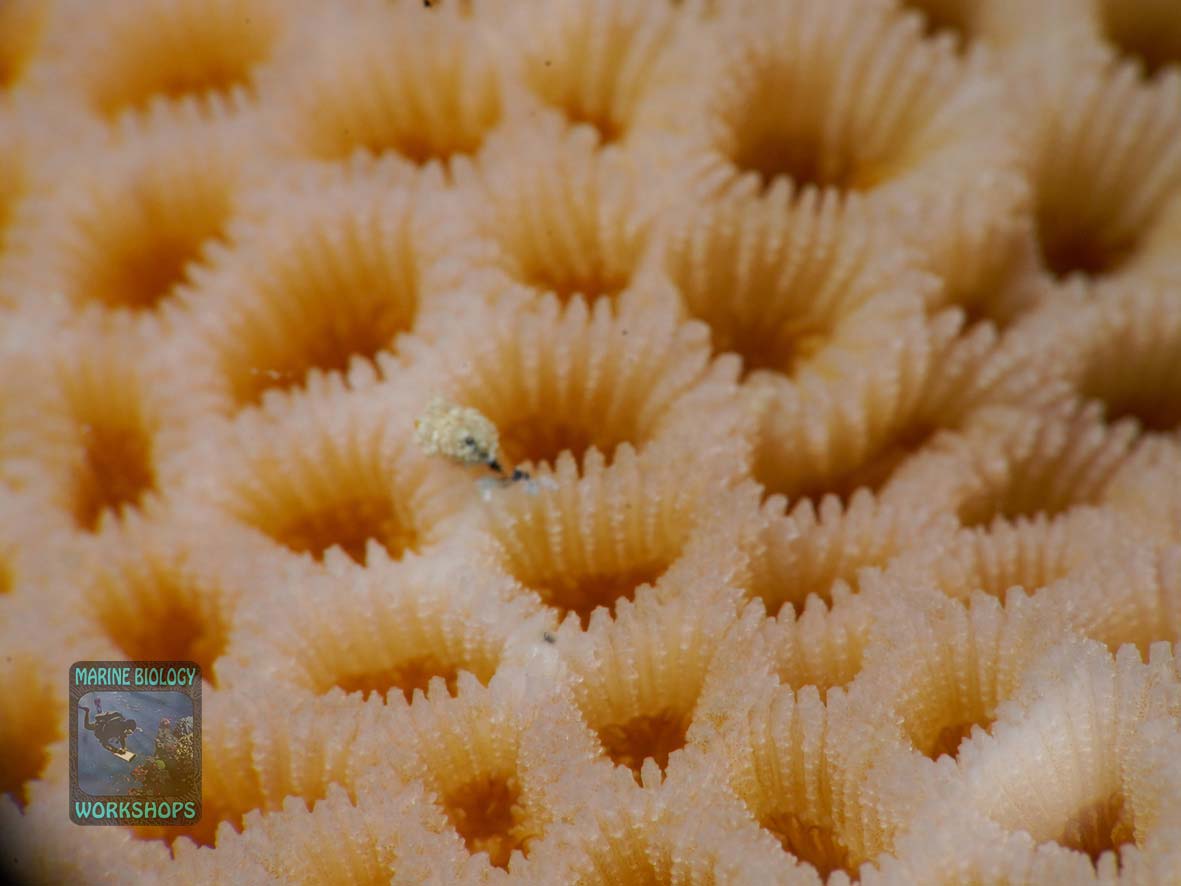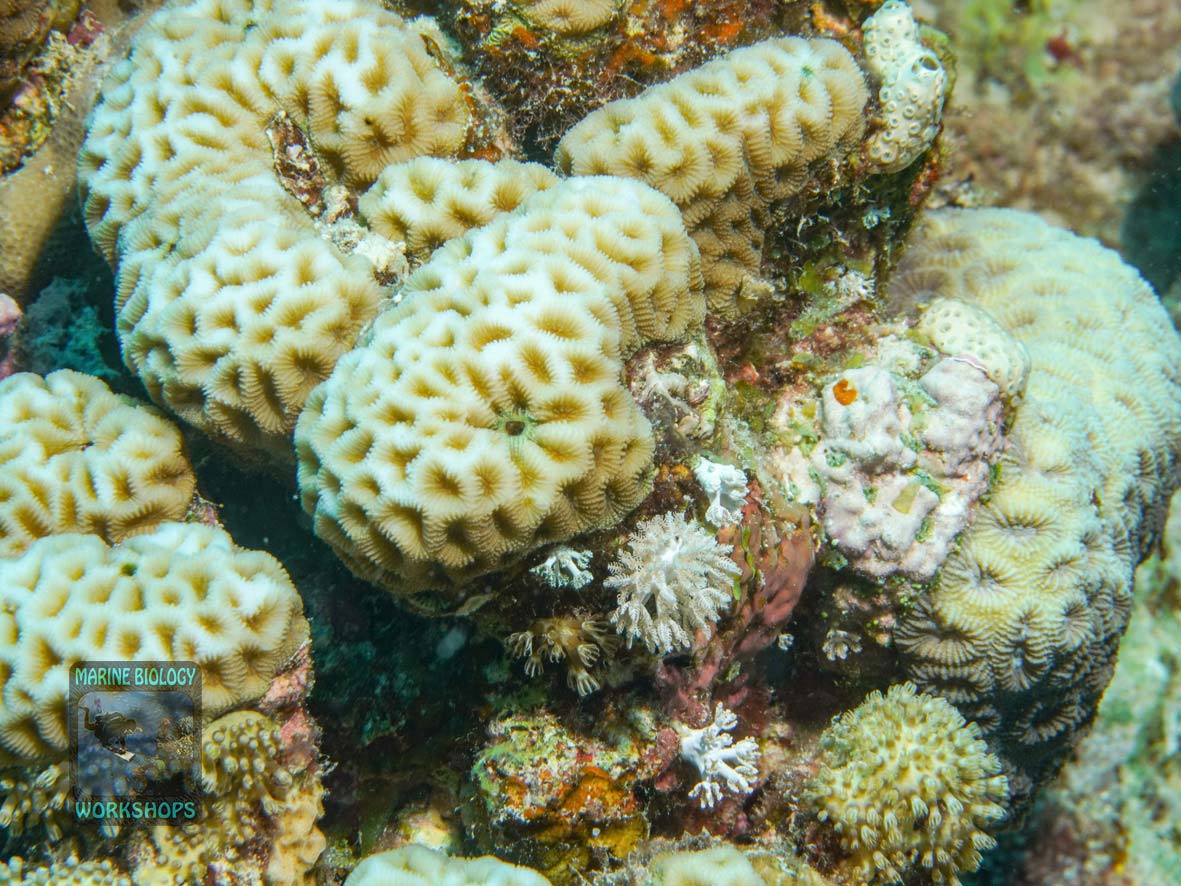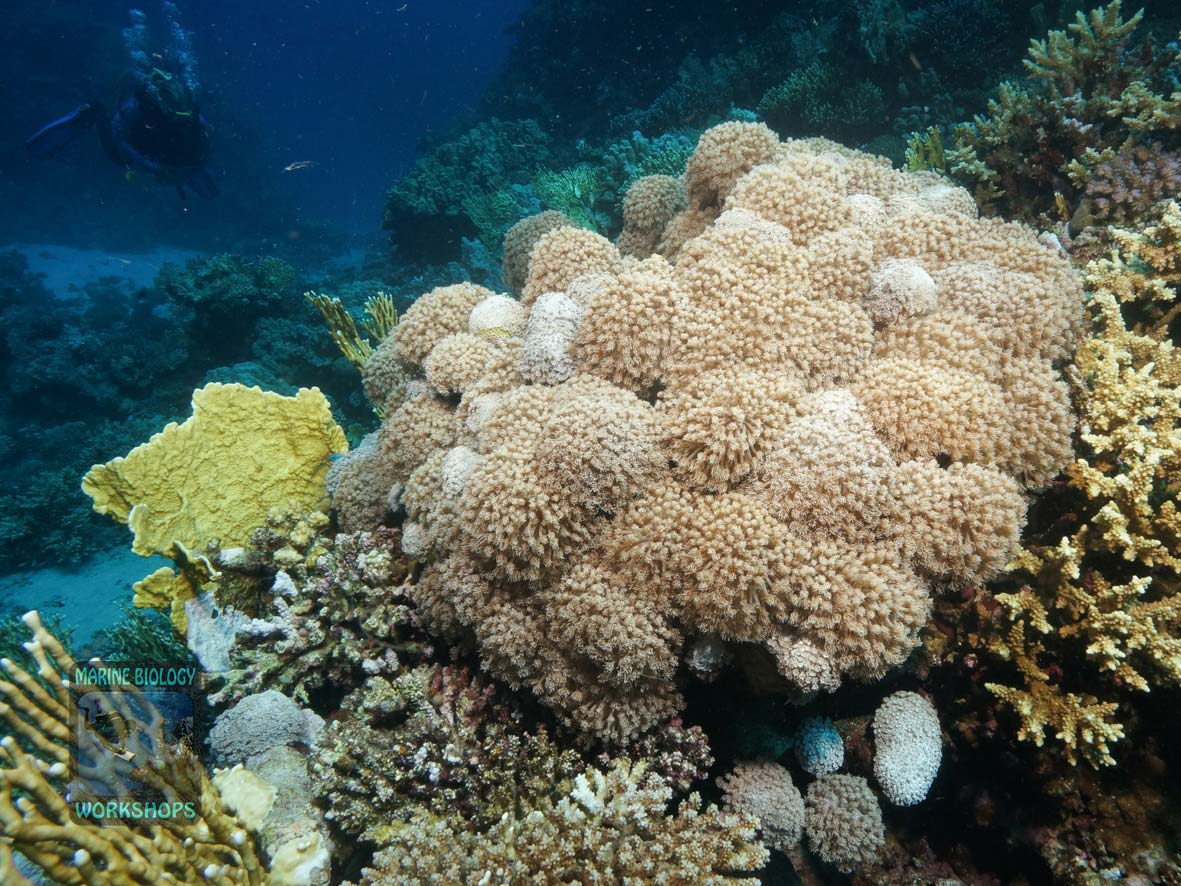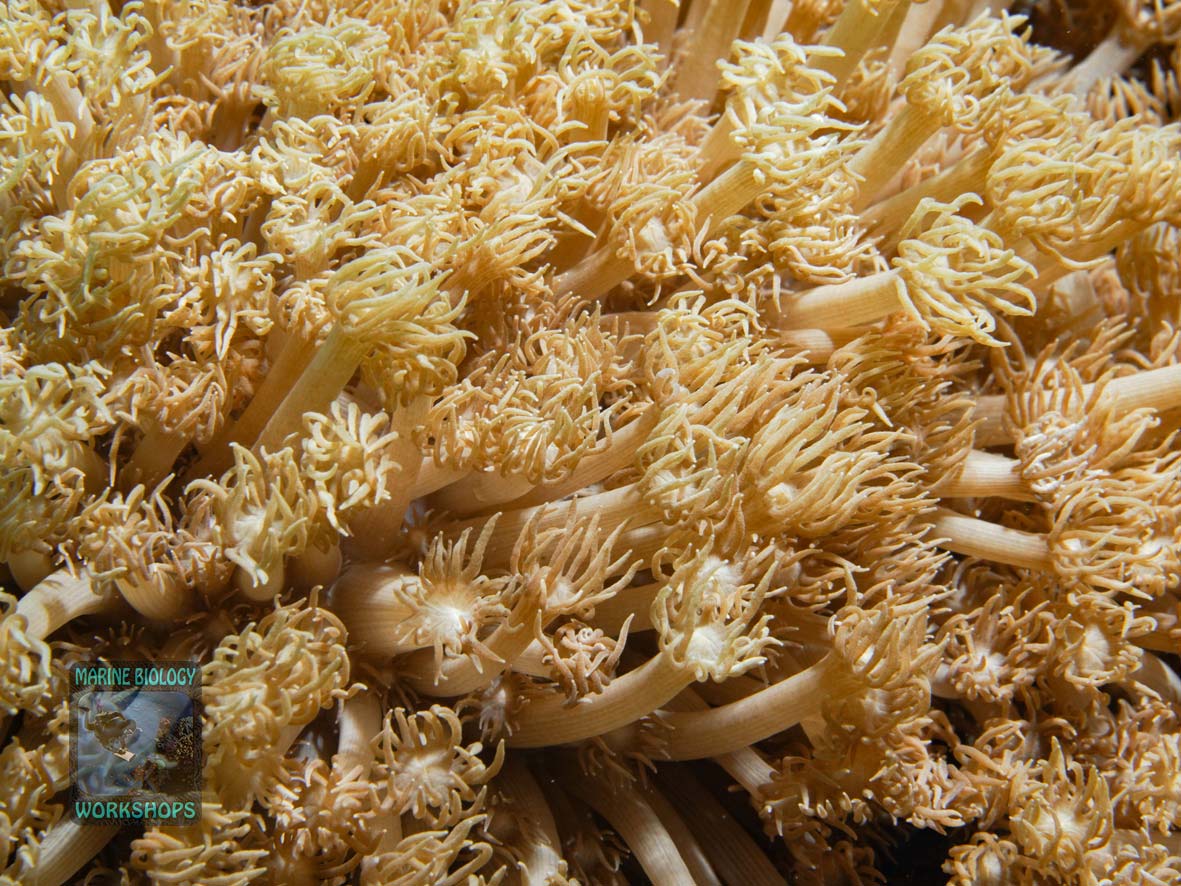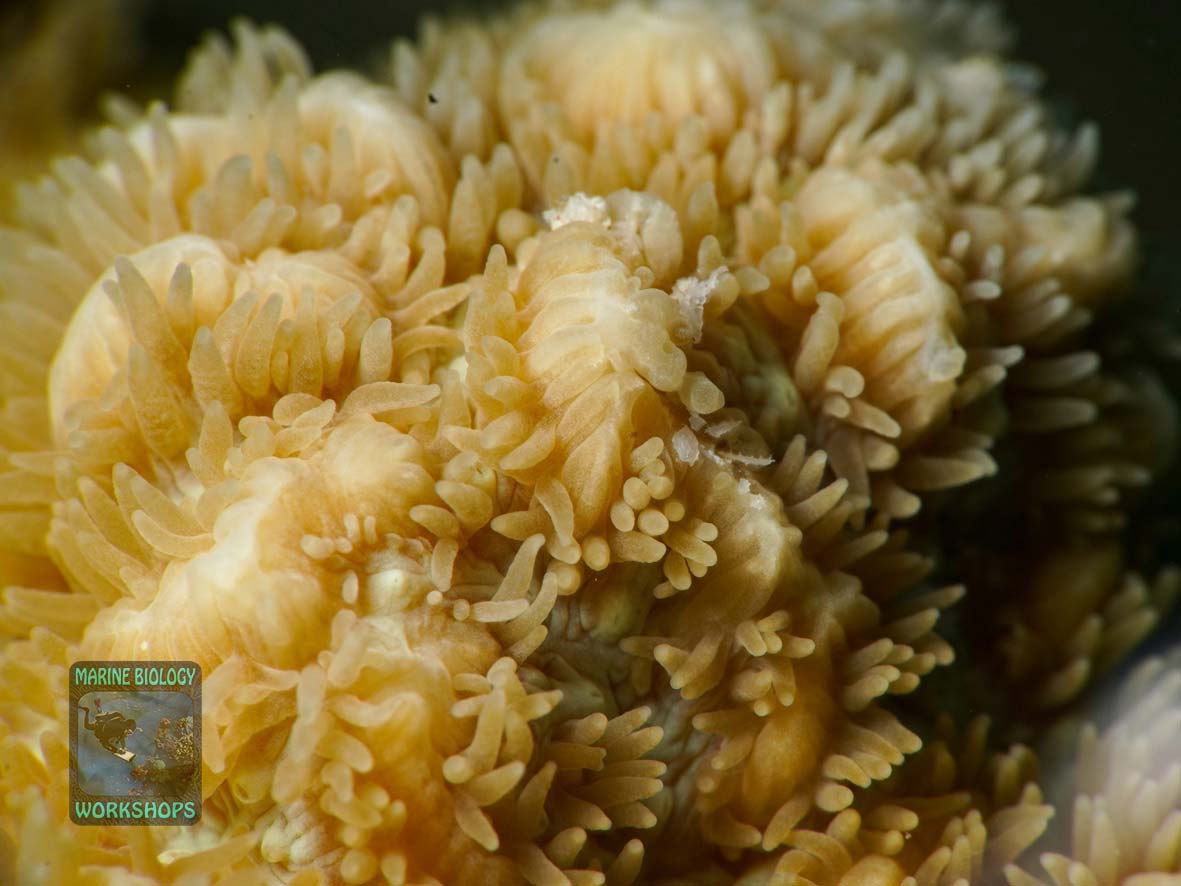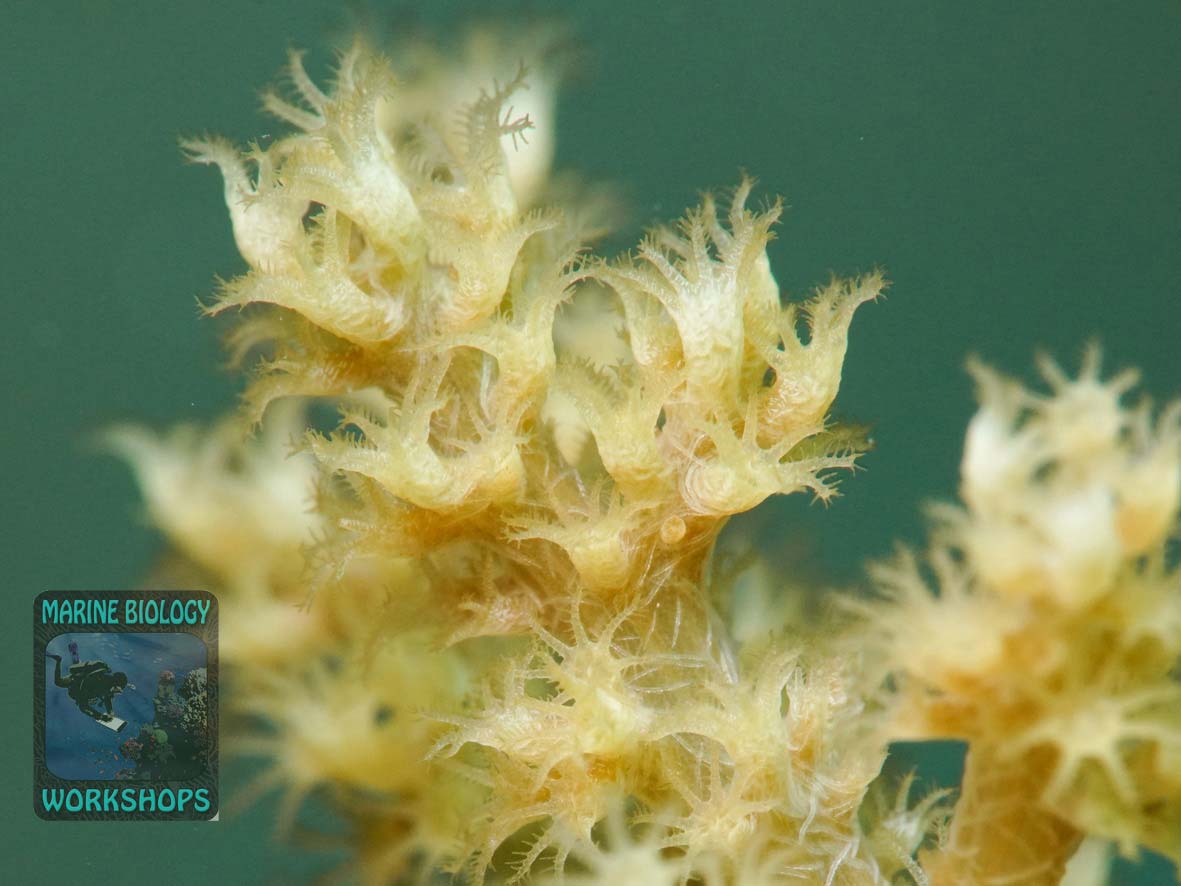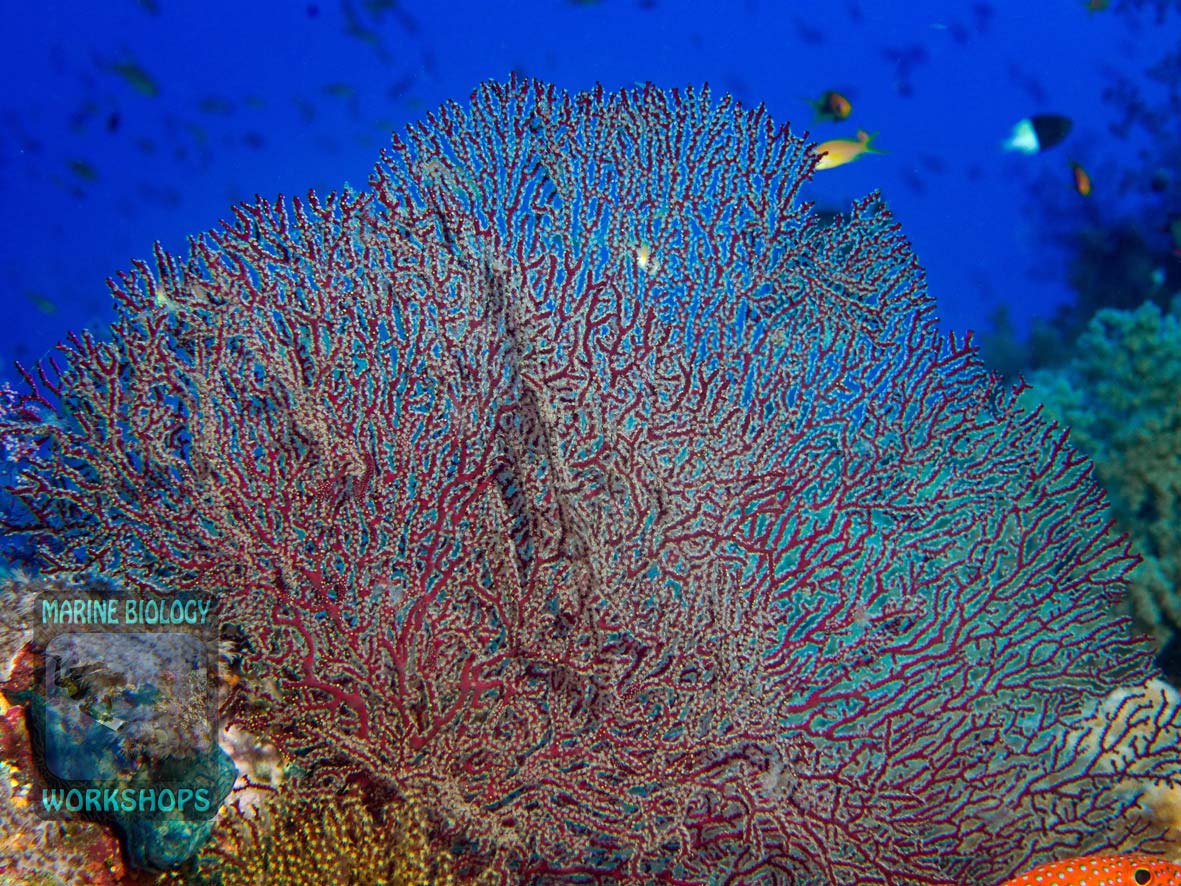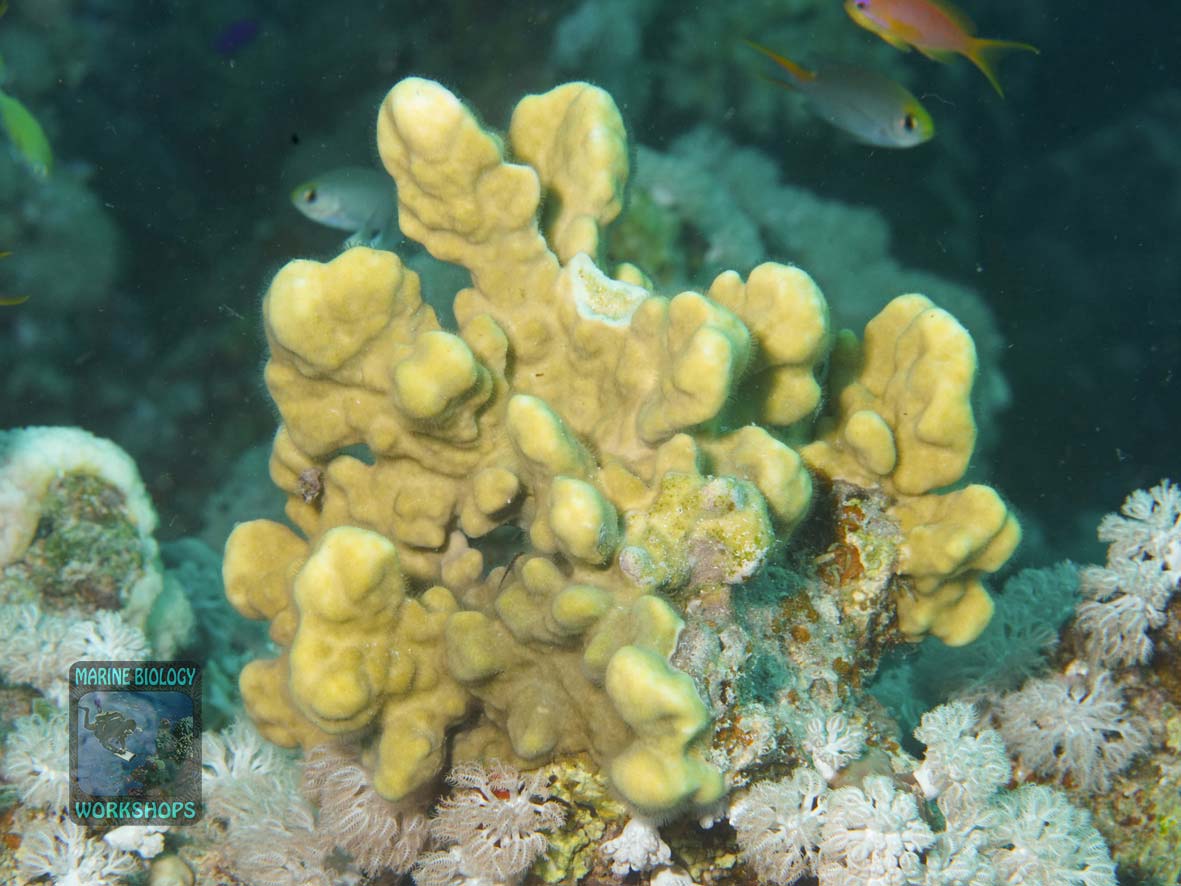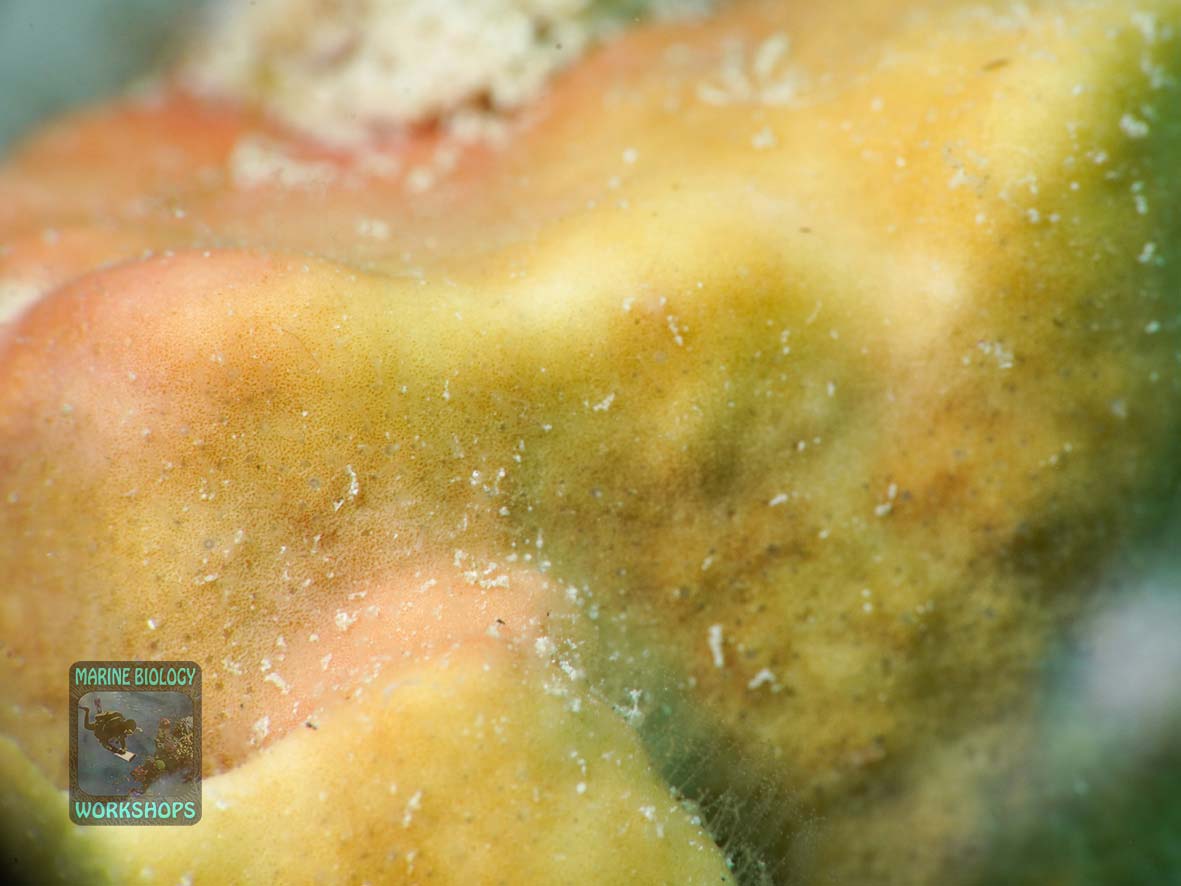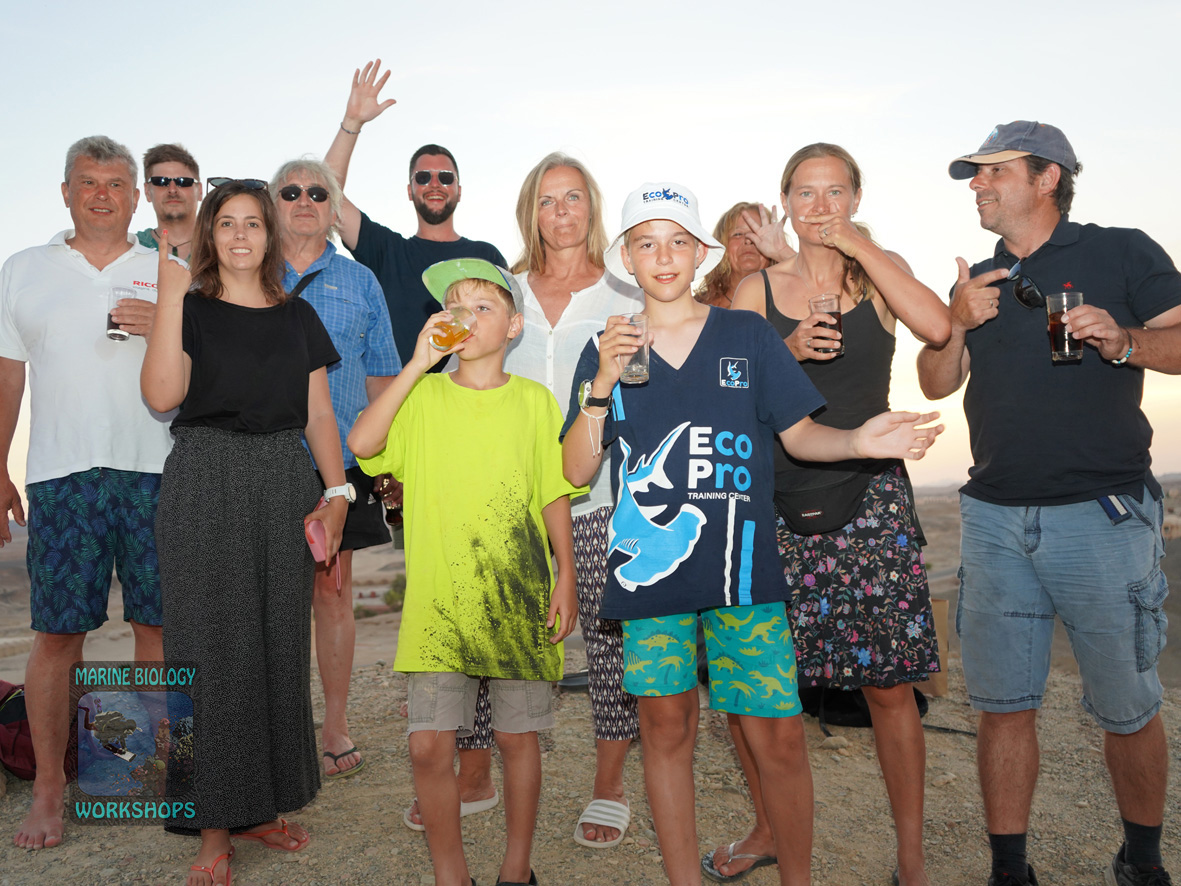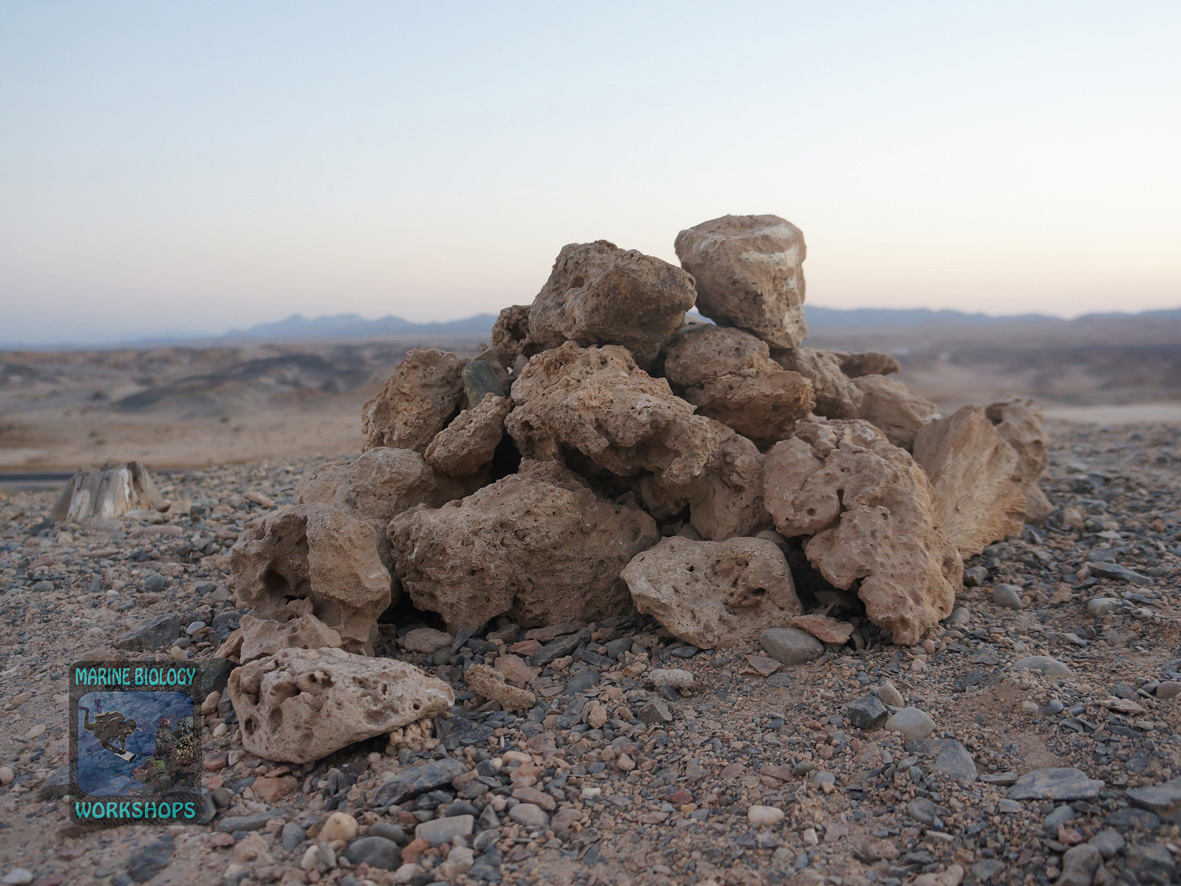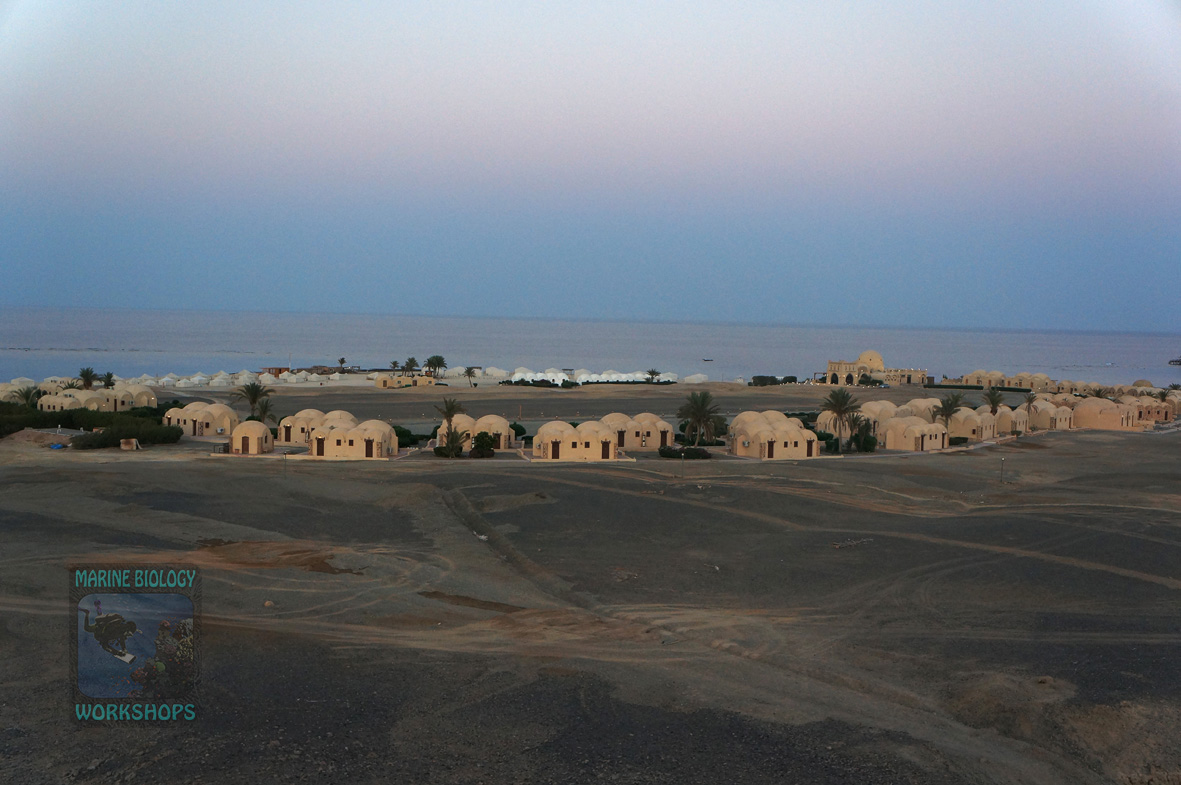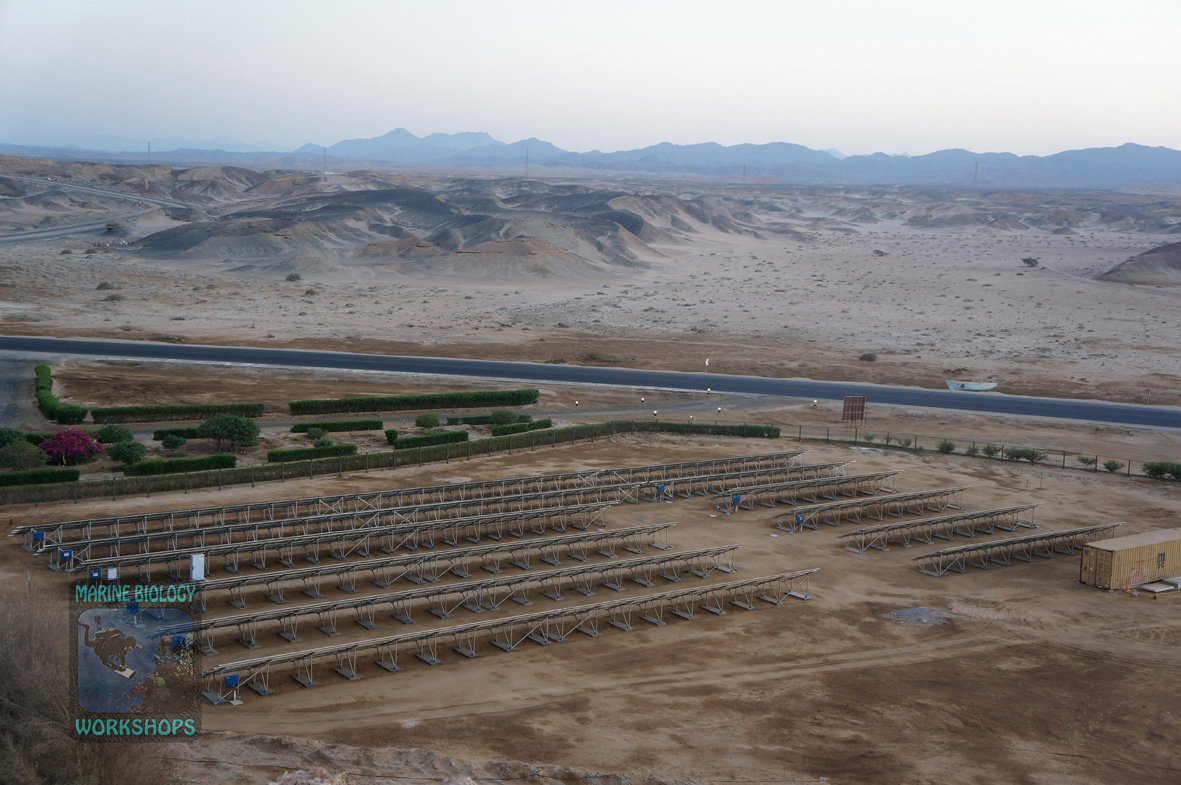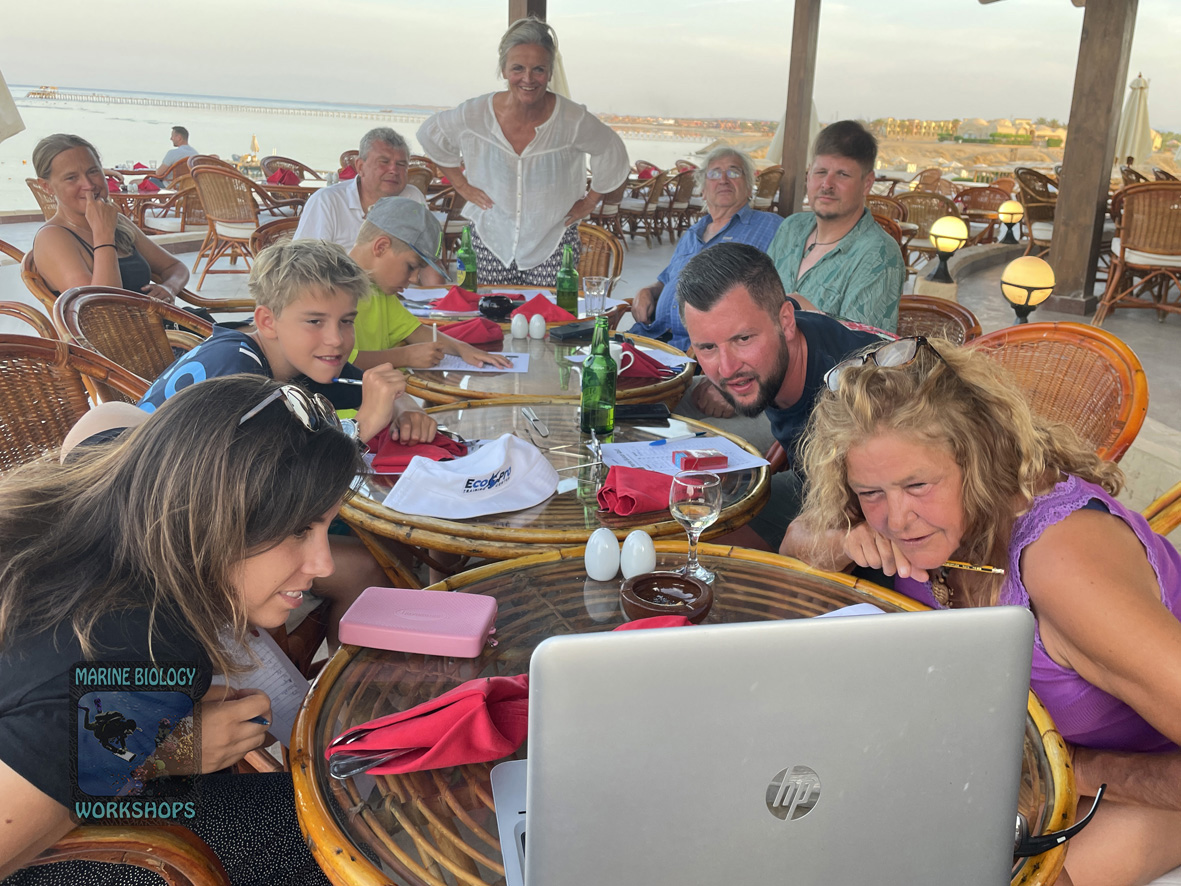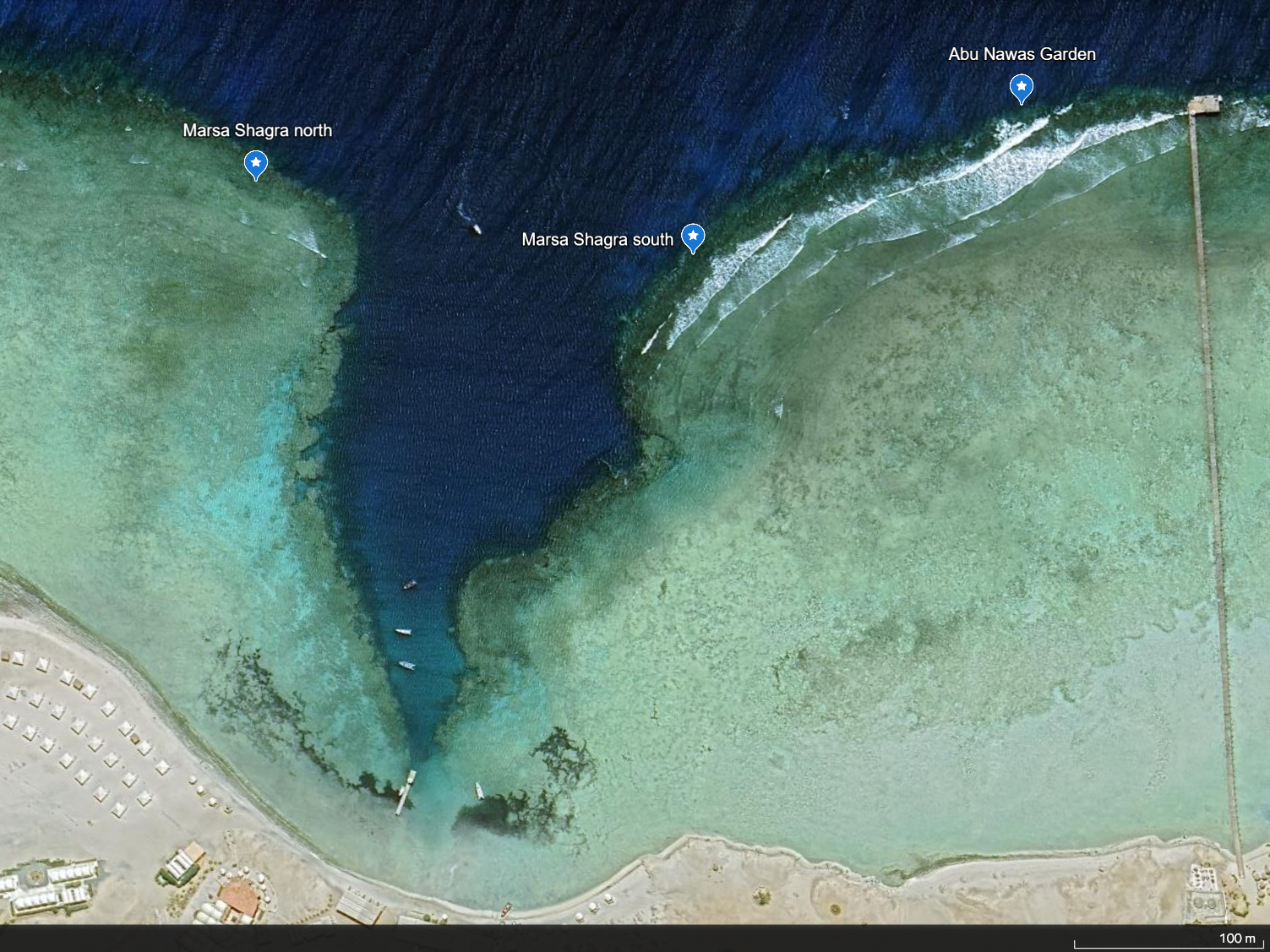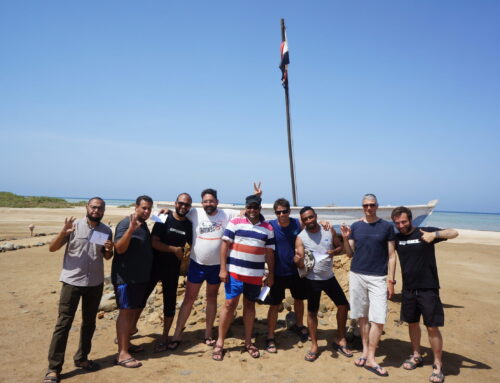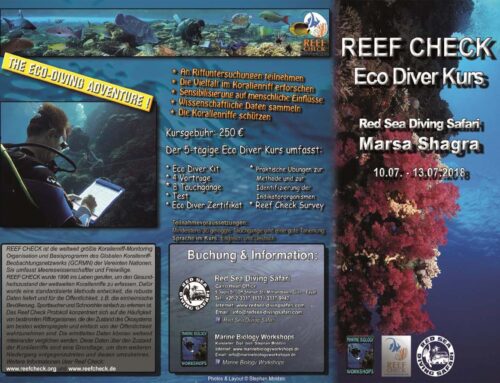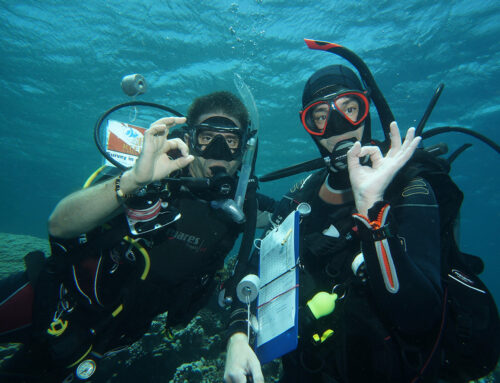Another Reef Check EcoDiver course and five subsequent surveys took place in Marsa Shagra from 13 to 16 July. This is the 15th year since we started the reef monitoring programme with Red Sea Diving Safari (RSDS). The six course participants came from Switzerland and Germany – so this was the first German speaking course “ever”. For the subsequent surveys we were joined by six already certified EcoDivers who had completed the course in previous years.
They had timed their stay in Marsa Shagra specifically to take part in the surveys. As experienced Reef Checkers, they not only helped with the data collection, but also with laying out and collecting back the two transect lines. So we were a big and varied team, with participants ranging from 12 to 69 years old, from Open Water Diver to Master Instructor.
We had great dives and a very eventful time together…
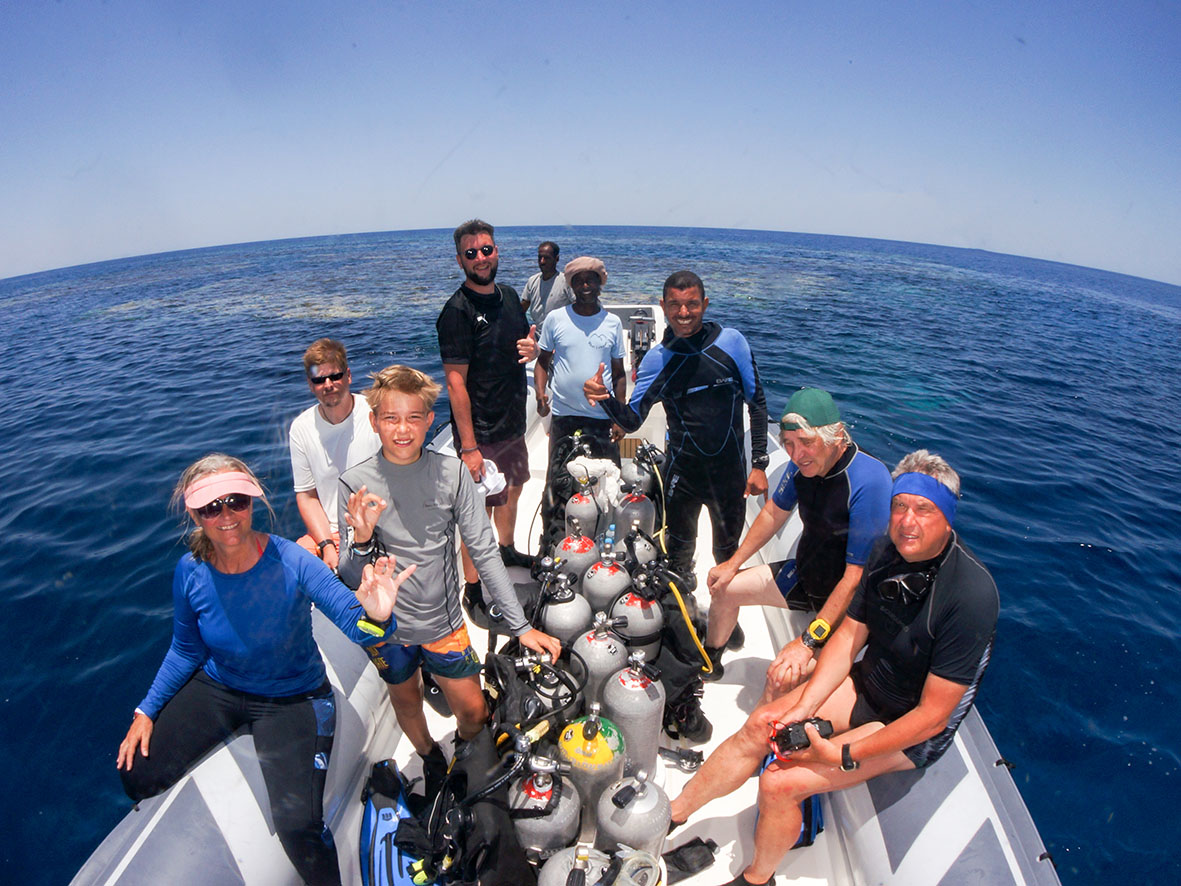
Reef Check EcoDiver Course
Theory sessions and practical dives alternated during the Reef Check EcoDiver course. Participants first learned about the Reef Check method and the different indicator groups of fish, invertebrates & human impact, as well as substrate (coral, algae, reef rock, sand, etc.). On each day of the course we conducted two training dives on the reef to practise identifying indicators and using underwater hand signals. On the third day, the practical application of the Reef Check method was practised on land along the transect line during a ‘beach exercise’. This was done using laminated fish and corresponding underwater hand signals. The “seriousness” required in this process, combined with acting skills and performance – e.g. representing a sea cucumber – is always fun…
Once all the participants had successfully completed the tests to identify the indicator organisms, they were certified as Reef Check EcoDivers.
But when it came time for a ‘test survey’ on the final day, it was clear to all participants that it’s time to get serious!
We had planned Reef Check Surveys on five different reefs. This year’s programme included:
Marsa Egla north
Marsa Shagra north
Marsa Shagra south
Wadi Lahami sheltered
Wadi Lahami exposed
Reef Check Surveys
So we started at Marsa Egla. With two 100m transect lines, we were able to set the transects for both depths simultaneously. The survey teams were also able to do both depths in one dive, first 8.5m and then 3.5m. This allowed us to complete two full surveys in two days, which was very efficient. In three days we successfully completed the five surveys.
Another advantage is that the participants have more days available for the unlimited diving package.
The two surveys at Marsa Shagra were supported by our friend of many years, the marine biologist Dr Ahmed M. Shawky. In the evening Ahmed gave a talk to all the RSDS guests about dolphins in the Red Sea. He gave an interesting insight into their behaviour and social life, their nocturnal hunting and their interaction with their only predators – the large Tiger Sharks and Oceanic White Tip Sharks.
About our results:
The substrate team found an average hard coral cover of 49.5 % across all five survey sites and both depths. This is substantially higher than the 39.1 % average hard coral cover reported for the northern/central Red Sea and 2019 in Status of Coral Reefs of the World 2020 (GCRMN, 2020). In general, coral cover was higher at the shallow 3.5 m depth level than at the 8.5 m depth level, for both hard corals (HC) and soft corals (SC).
Marsa Shagra North had the highest value with 65.0 % at 3.5 m depth and 43.1 % at 8.5 m depth. This was followed by Marsa Shagra South with 58.1 % and 52.5 % at 3.5 m and 8.5 m respectively. In this area the reef is a little shallower so there is more light at the deeper levels and therefore more coral growth.
Also for groupers, which are an important indicator of overfishing, we found by far the most groupers >30 cm in Marsa Shagra North with 1.75 individuals per 500 m³ transect. Specimens smaller than 30 cm are not counted in the Reef Check method. This is a very high number and underscores what divers are finding too: Here the reef is intact – high coral growth and lots of big fish! In addition to more than 30 years of consistent protection, the extraordinary width of the reef top probably contributes to the abundance of fish and high species diversity.
Marsa Shagra North also had the highest density of butterfly fish with 8 individuals per 500 m³ transect.
The highest density of reef clams was found at Marsa Egla with 15.5 individuals per 100 m² transect at 3.5 m depth and 3 individuals at 8.5 m depth. For reef clams, the difference between the shallow and deeper levels was particularly evident. This is because reef clams also have symbiotic algae in their mantle lobes and therefore prefer light-flooded, shallowly sloping reef slopes.
The only other invertebrates we found were a few pencil sea urchins, banded coral shrimps and, in Wadi Lahami, a large crown-of-thorns starfish (Acanthaster planci). Although the Invertebrate and Human Impacts team looked very carefully in all the caves and crevices during the surveys, ….
Most invertebrates hide during the day from the many predators and only emerge from the reef caves at night.
Tour through Wadi El Gemal National Park
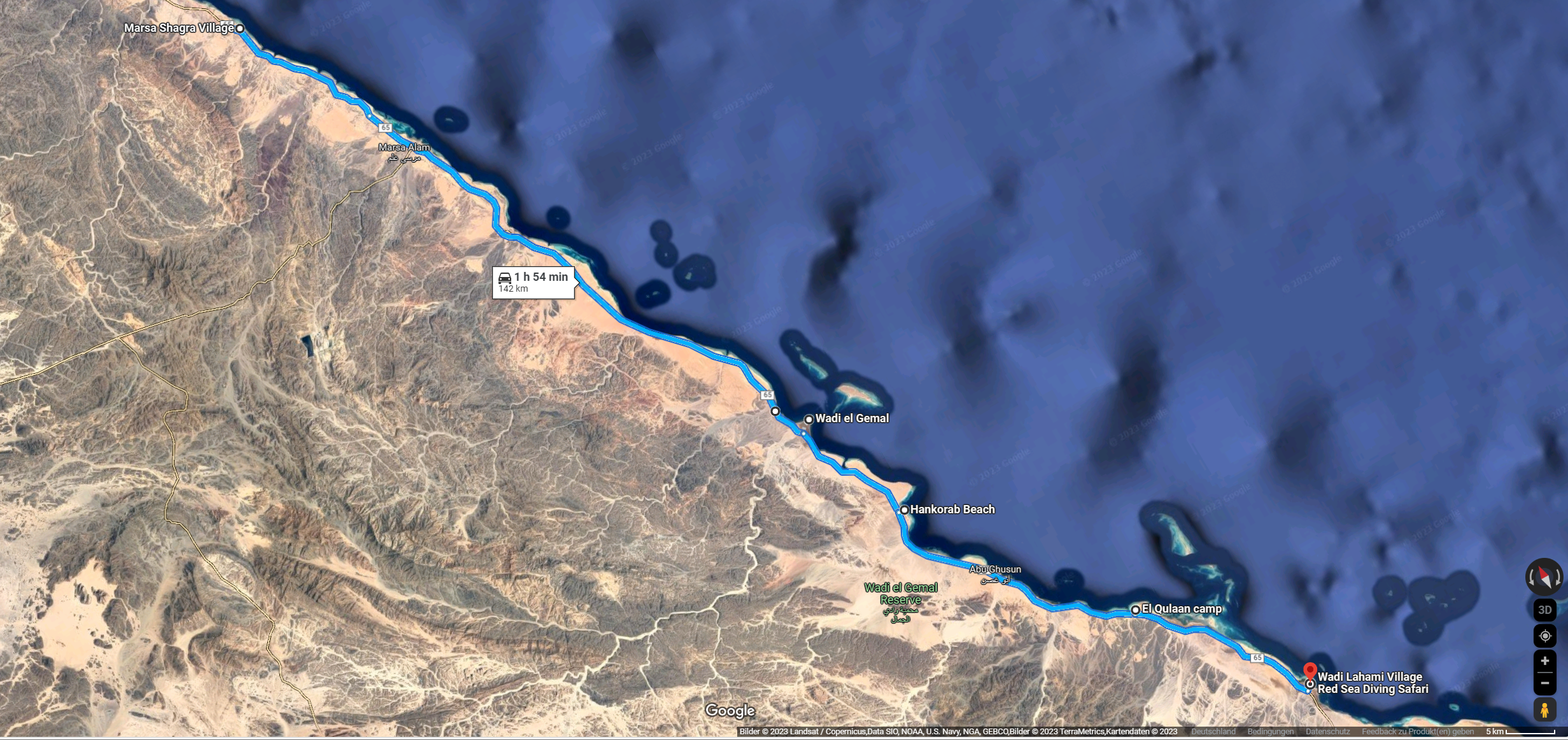
We headed to Wadi Lahami for two more surveys after two surveys in Marsa Shagra North and South. The normal two hour bus journey passes through the Wadi El Gemal National Park (WGNP).
We turned it into a national park tour with stops at selected locations. This allowed us to experience the fantastic nature and scenery, as well as the Egyptian culture and way of life of the Bedouin who live here!
Ahmed guided us through the National Park, telling us about the natural features at each stop. Ahmed worked for the WGNP rangers for many years and knows the park ‘like his own backyard’.
Our first stop was right at the start of Wadi El Gemal National Park. On a hill we visited Roman ruins and a large umbrella acacia (Vachellia tortilis). The tree, adapted to the dryness, bore green seed pods. Interestingly, it was colonised by numerous caterpillars.
Delta Wadi El Gemal
Ras Baghdadi is the remnant of a once mighty river, also known as the Wadi El Gemal Delta. The river pebbles washed down from the mountains bear witness to much wetter times many thousands of years ago. Today, the wadi (= dried riverbed) only carries water during floods, which occur every few years. Despite this, the groundwater allows the local vegetation to flourish, with Doum palms (Hyphaene thebaica), Date palms (Phoenix dactylifera), Nile tamarisk (Tamarix nilotica) and many other plant species. A pond with Common reed (Phragmites australis) provides fresh water for many animals, including the thorn-tailed dragon (Uromastyx ornata), the Lesser egyptian jerboa (Jaculus jaculus), the White-eyed gull (Larus leucophthalmus), the Sooty falcon (Falco concolor) and the Osprey (Pandion haliaetus).
The small Dorkas gazelle (Gazella dorcas) also comes down from the mountains to drink at night.
Ras Hankorab
Our next stop was the wide sandy beach of Ras Hankorab, where we were greeted by a family of dogs. Ras Hankorab has a large shallow lagoon in a sheltered location and is a popular beach for both locals and tourists.
There is little vegetation other than Zygophyllum album and Juncus spp.
The place impresses with its vastness and the seemingly endless turquoise blue water.
El Qulan
The last stop before Wadi Lahami was El Qulan.
Here we had the opportunity to enjoy a traditional Egyptian coffee, the “Gabbana”, with the Ababda Bedouins. It is very strong and refined with cardamom, cinnamon, cloves, pimento, nutmeg and pepper.
We then explored the large mangrove area: The white mangrove (Avicennia marina), with its aerial roots, is the only mangrove species in the Red Sea that is adapted to the dryness and high salinity. Typical inhabitants of the mangroves are the land hermit crab (Coenobita scaevola) and various crabs. They dig tunnels in the sandy soil and build conical “castles”.
Wadi Lahami
Arriving at Wadi Lahmi in the afternoon, we went snorkelling at the house reef in the hope of seeing the resident dugongs. Unfortunately the animals were not there at the time. As large marine mammals, they are naturally mobile and will move around in search of the richest seaweed beds.
I’m reminded of 2018, when one of our course participants encountered a dugong during a night dive….He was scared as hell at first!
We had such a lovely relaxing snorkel or “free dive” afternoon at the Wadi Lahami house reef. The 2 Zodiacs were our “base” for snorkelling. In the evening Ahmed drove back to Marsa Alam.
The next day, the last two surveys of the Wadi Lahami Housereef were on the agenda: one in the sheltered bay and the other on the exposed outer reef.
While the bay is rich in sediments, sponges and soft corals, the outer reef has the stony coral growth of a typical fringing reef.
Diving in the Fury Shoals
On the last day of our short trip to Wadi Lahami, we were able to dive the fantastic reefs of the Fury Shoals: while the offshore reefs of Angel and Malahy boast epic reef formations, nearby Daisy captivated us with its nutrient-rich conditions, abundance of fish and lush coral growth.
Fishes
The reefs of the Fury Shoals have some special features in terms of fish fauna.
In addition to the more common species, the reefs are home to the rare redhead butterflyfish (Chaetodon larvatus) and the Red Sea endemic filefish (Oxymonacanthus halli). Both species feed exclusively on coral polyps and are therefore dependent on areas of dense coral cover.
Here is a selection of fish species (all photos taken in July 2023) commonly found on Egypt’s fringing reefs:
Coral variety
If you want an overview of corals, concentrate on identifying the genus. This is the most important taxonomic category. The key to identifying corals is not so much the colour – even the growth form can be very variable and different within the same genus – but the fine structure of the corallites: these are the individual animals which make up the coral colony.
This is where you need to be systematic – the ultimate identification method for stony corals is the “Indopacific Coral Finder” by Russell Kelley.
So if you want to learn more about coral identification and you don’t already have it, you should definitely get the Coral Finder…
Here is a selection of common coral genera found in the wonderful reefs of the Red Sea:
Exciting invertebrates and commensalism
Many divers focus on fish or larger mobile creatures. The colourful nudibranchs are clearly among the favourites of the diving community.
However, many smaller creatures, which at first glance may appear to be more “inconspicuous”, are often overlooked. The motto is “I don’t know them, they’re not that important…”. Where is the shark now? And yet it is often among the invertebrates that the most exciting creatures and interactions are to be found.
The tiny commensal bristle worms (Spionidae) on a sponge were certainly a highlight this time. They feed on tiny particles that are too large for the sponge to swirl around and therefore get stuck on its surface.
This method of feeding is called “substrate licking”. The surface of sponges certainly seems to be a reliable food source on the reef, used by other very different creatures: Tiny sea cucumbers, for example, are also substrate lickers on large vase sponges in the Indo-Pacific.
Diving in Marsa Shagra
Back in Marsa Shagra we had a few more great days of diving at the house reef – whether north or south or just through the middle along the sandy bottom…
About 100m off the reef slope, a densely overgrown rope rises from a depth of 35m and ends about 10m below the surface. This rope was discovered by chance four years ago by our dive enthusiast Gerhard, who knows every corner of the house reef after hundreds of dives at this site.
Since then we have visited and explored it several times. This rope is a real “treasure trove”, as it is home to several species that you would not normally find on the house reef. In addition to the colonial, Segmented worm (Filogranella elatensis), the Longnose hawkfish (Oxycirrhites typus) lives here, as well as a previously unidentified blenny.
Trips to Long Canyon and Om Halhalla were also very impressive.
It was an eventful two weeks that went by far too quickly. On the last day we met for a marine biology quiz and then hiked up a hill just in time for sunset. From this hill you have a great panoramic view of the village of Marsa Shagra, the RSDS solar power plant, the local mosque and the mountains in the hinterland.
A big thank you goes out to Red Sea Diving Safari for all the support and the great co-operation!
The next Reef Check course is expected to take place in Marsa Nakari in 2024.
We are already looking forward to it!
Are you interested in learning more about the diversity of coral reefs and taking part in reef surveys to collect scientific data? – Then send us an email a info@marinebiologyworkshops.de !
